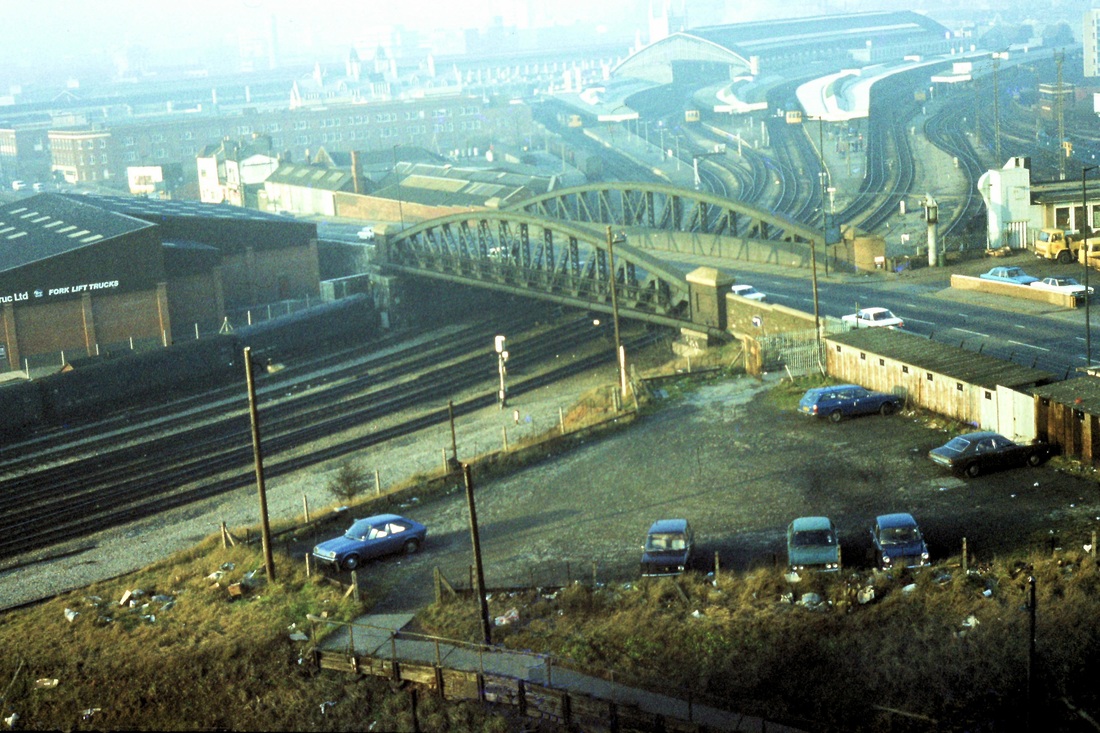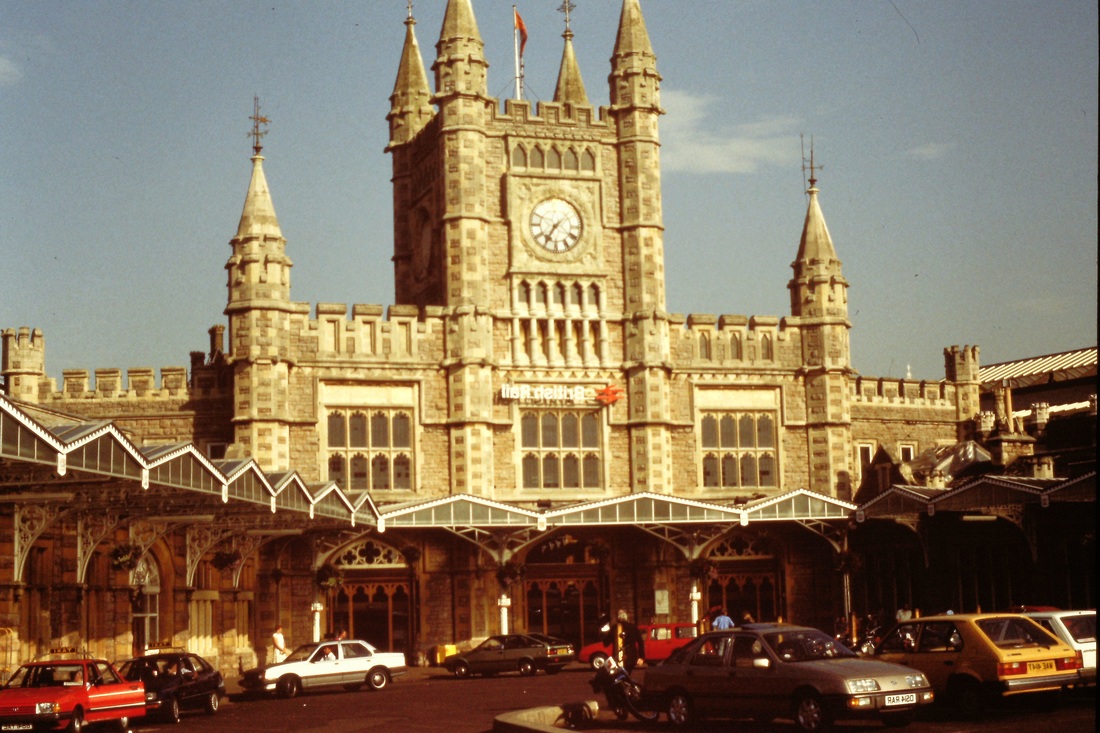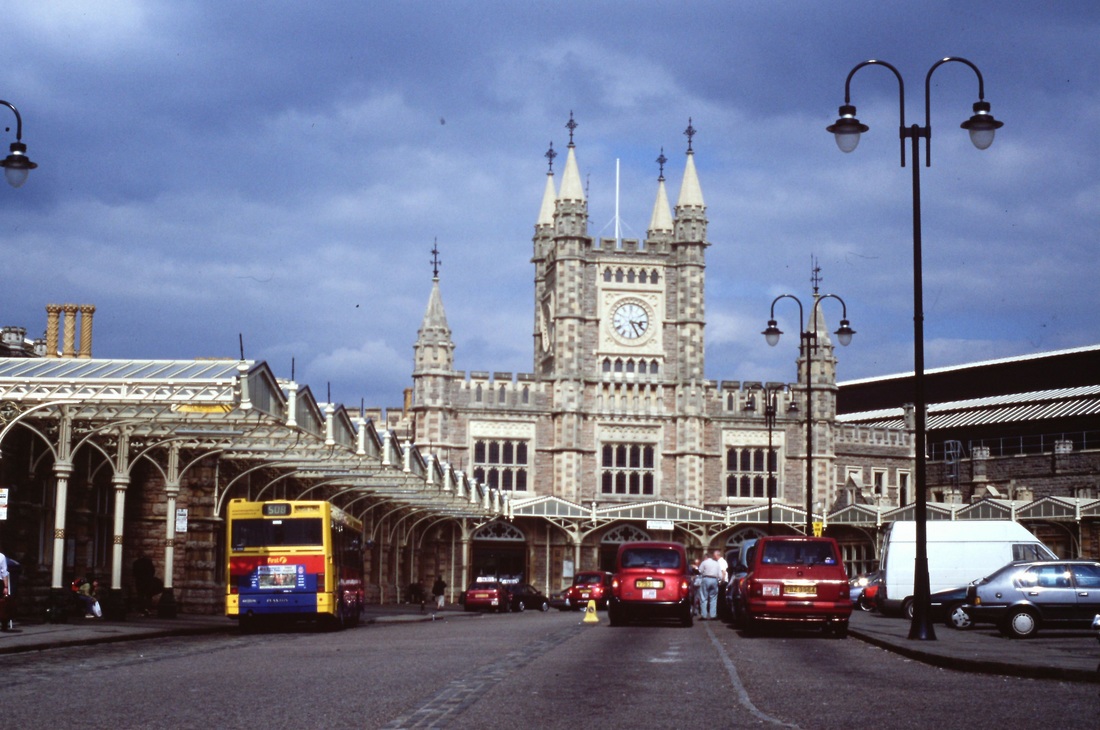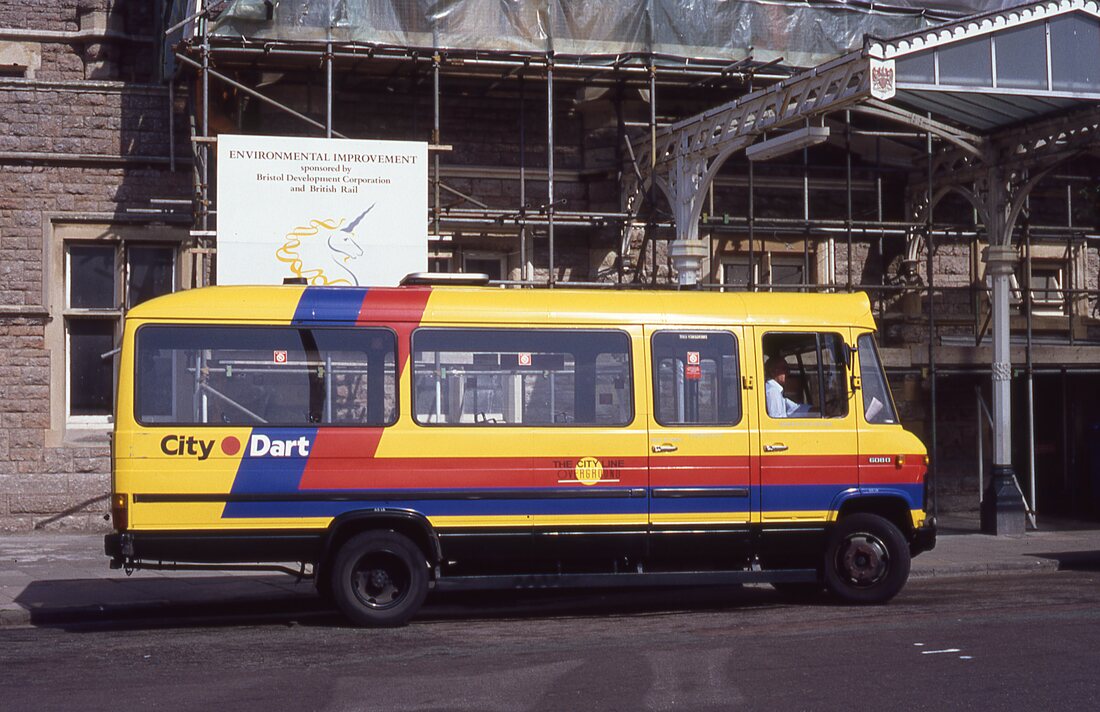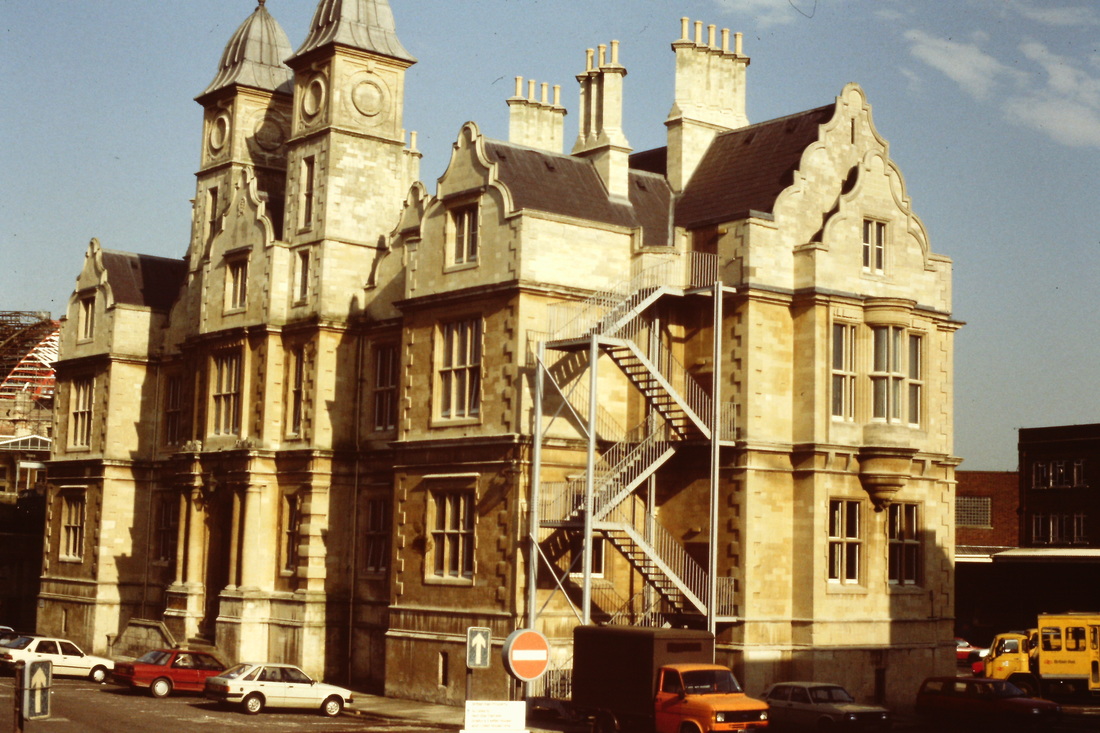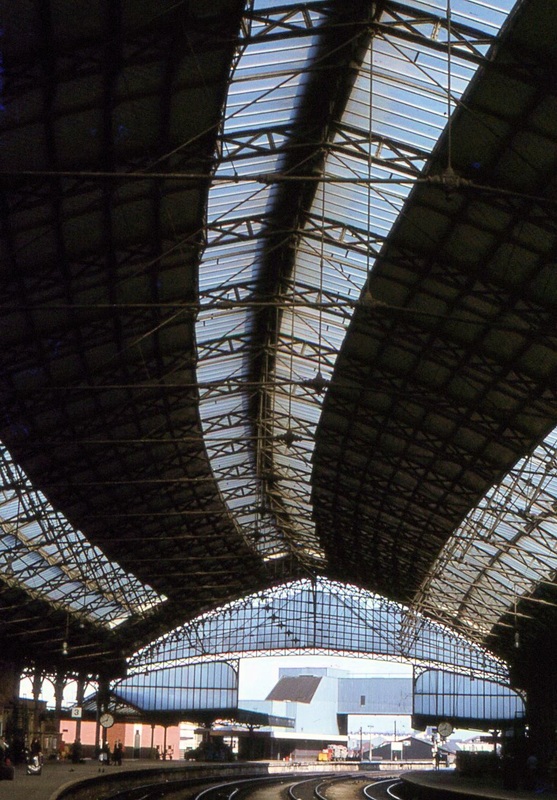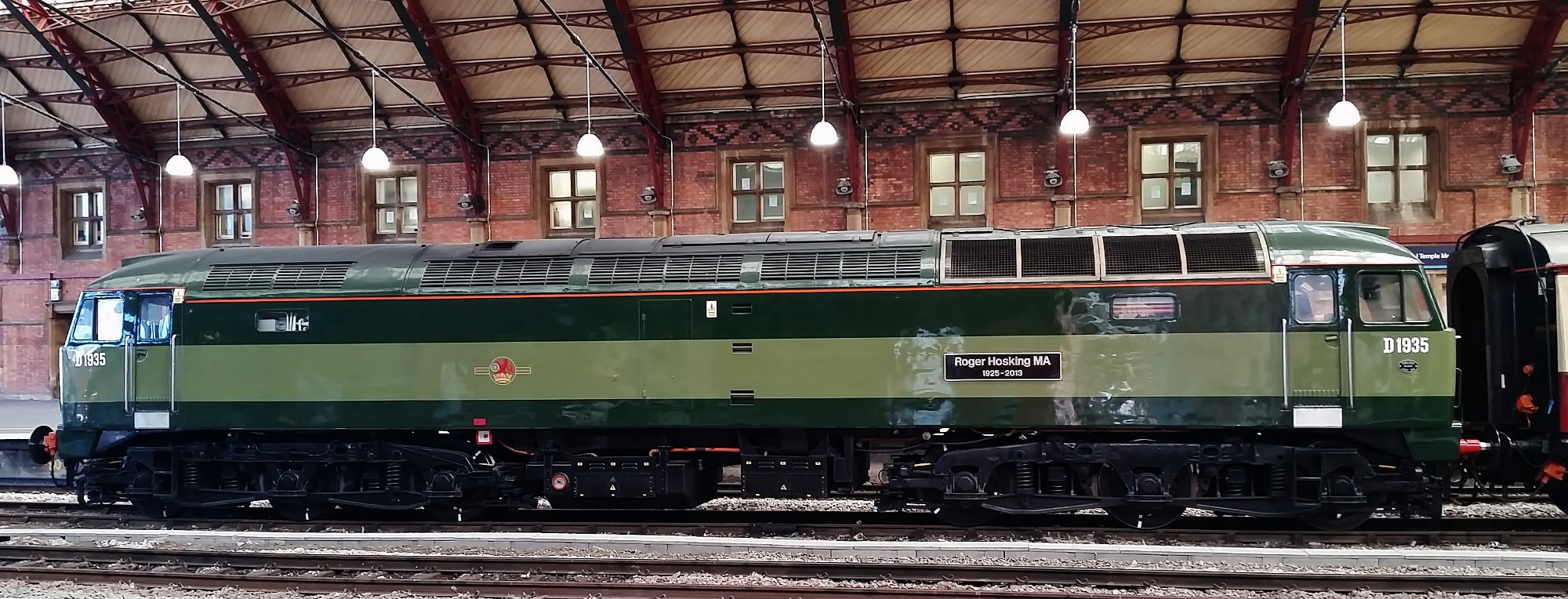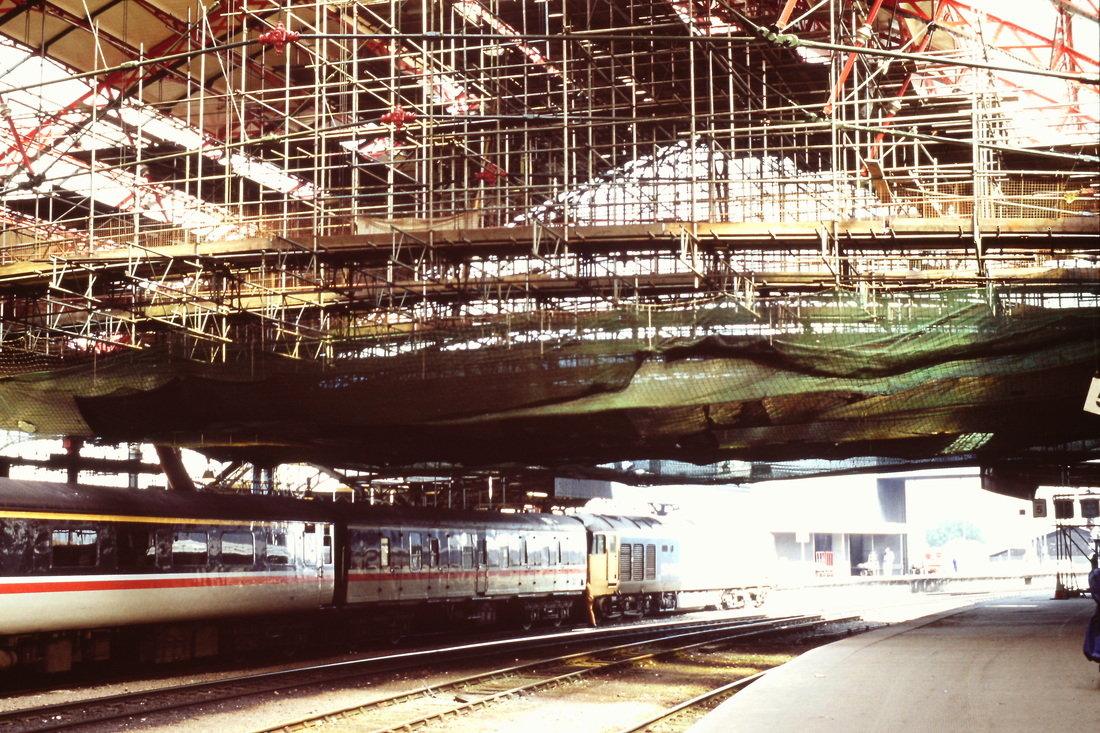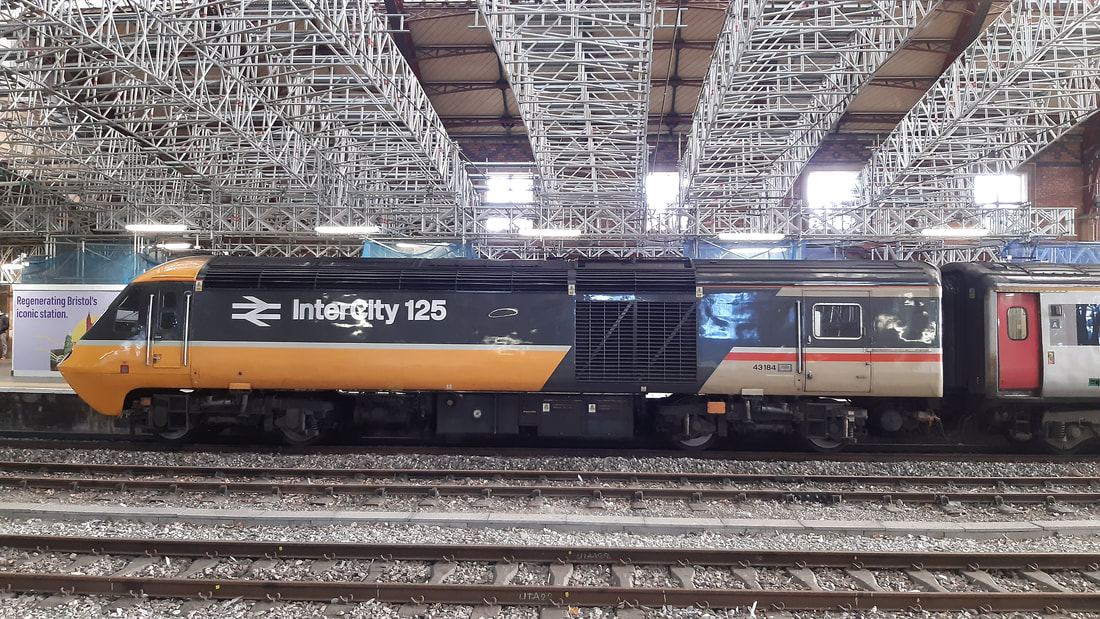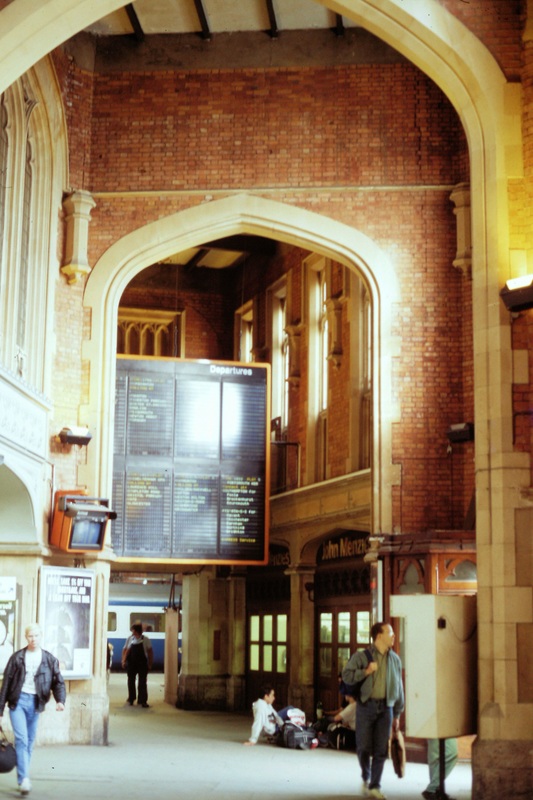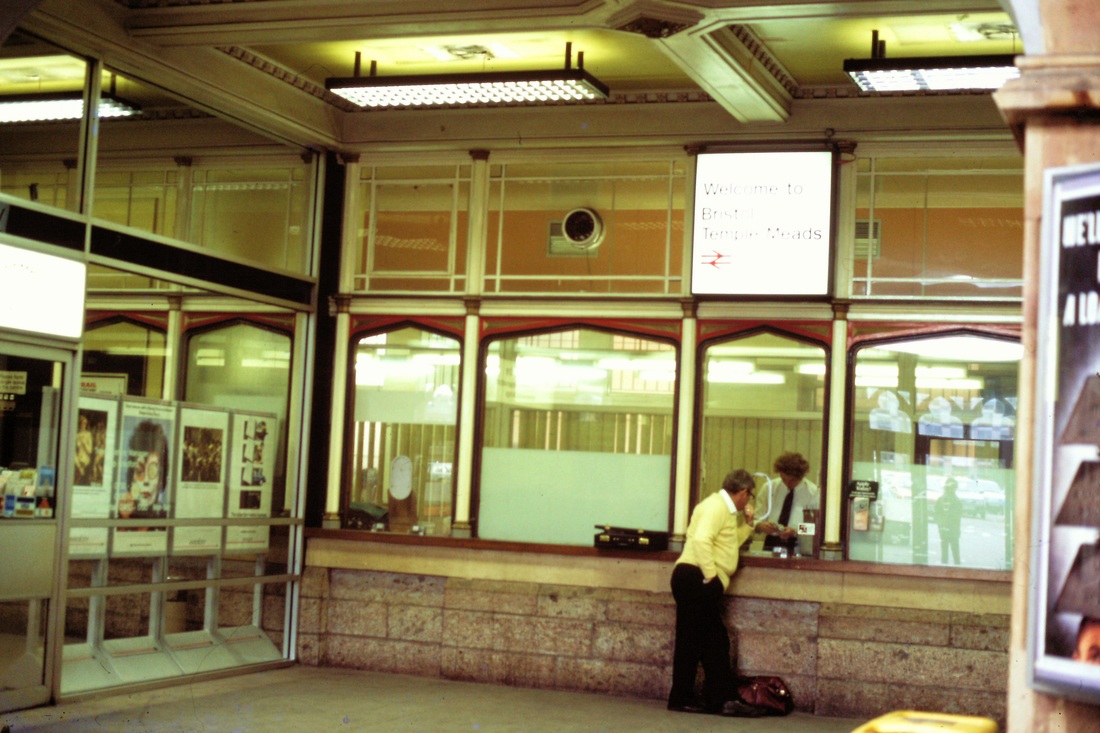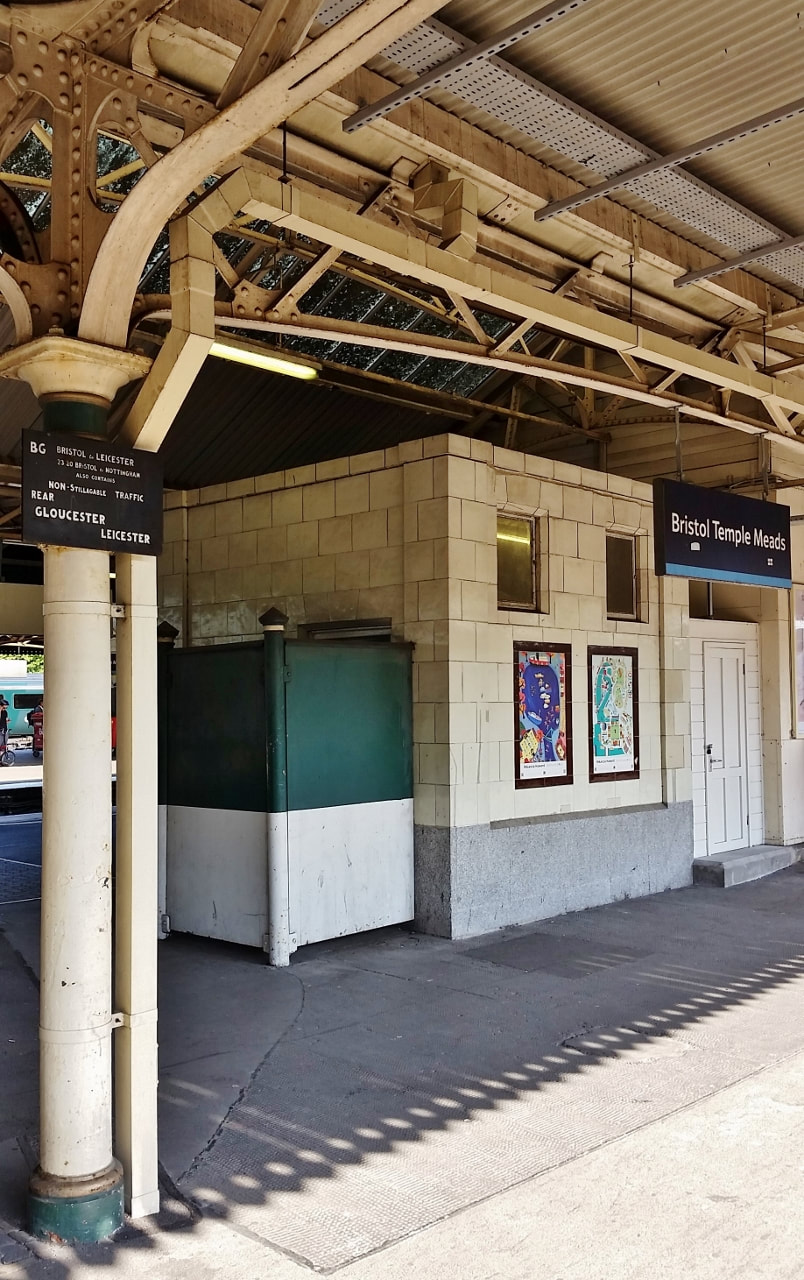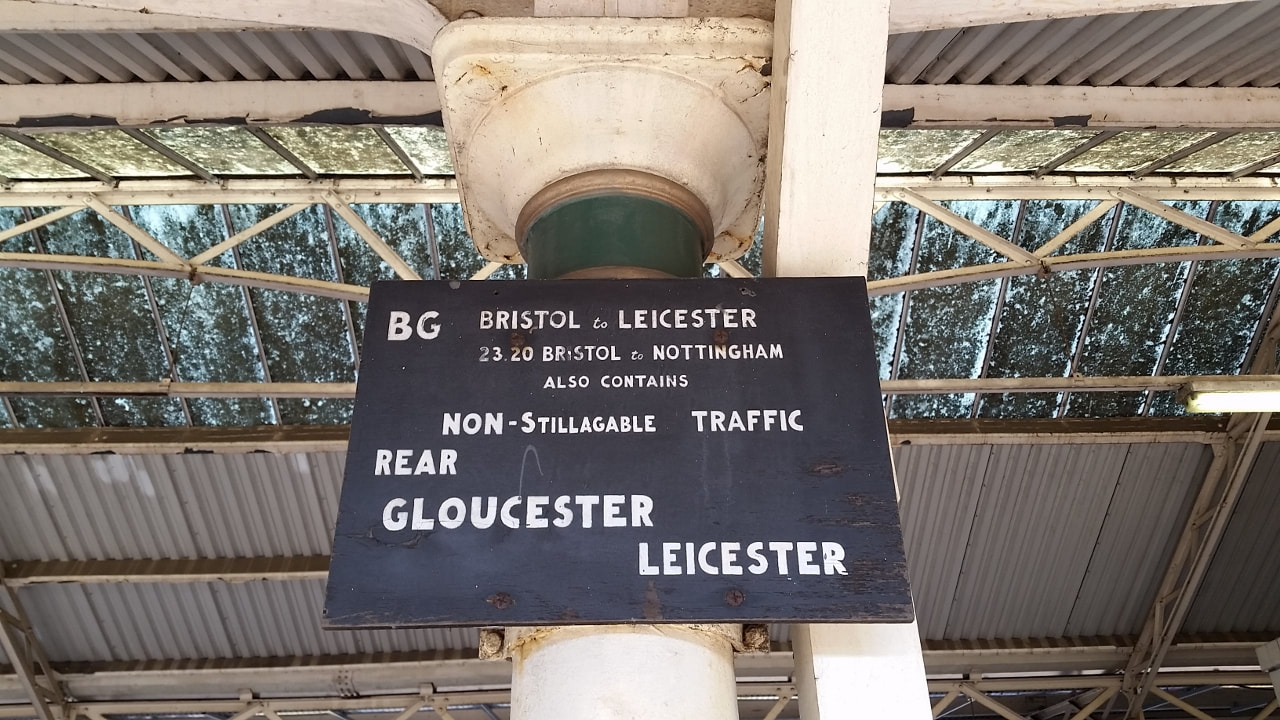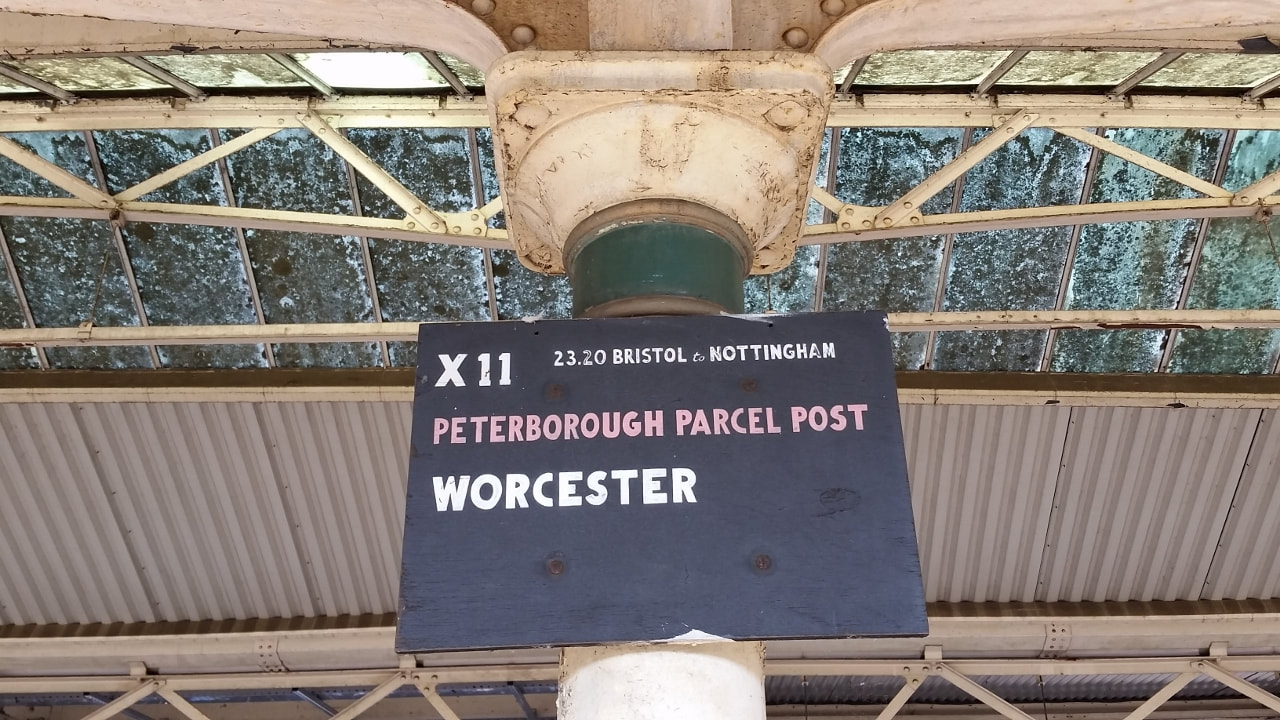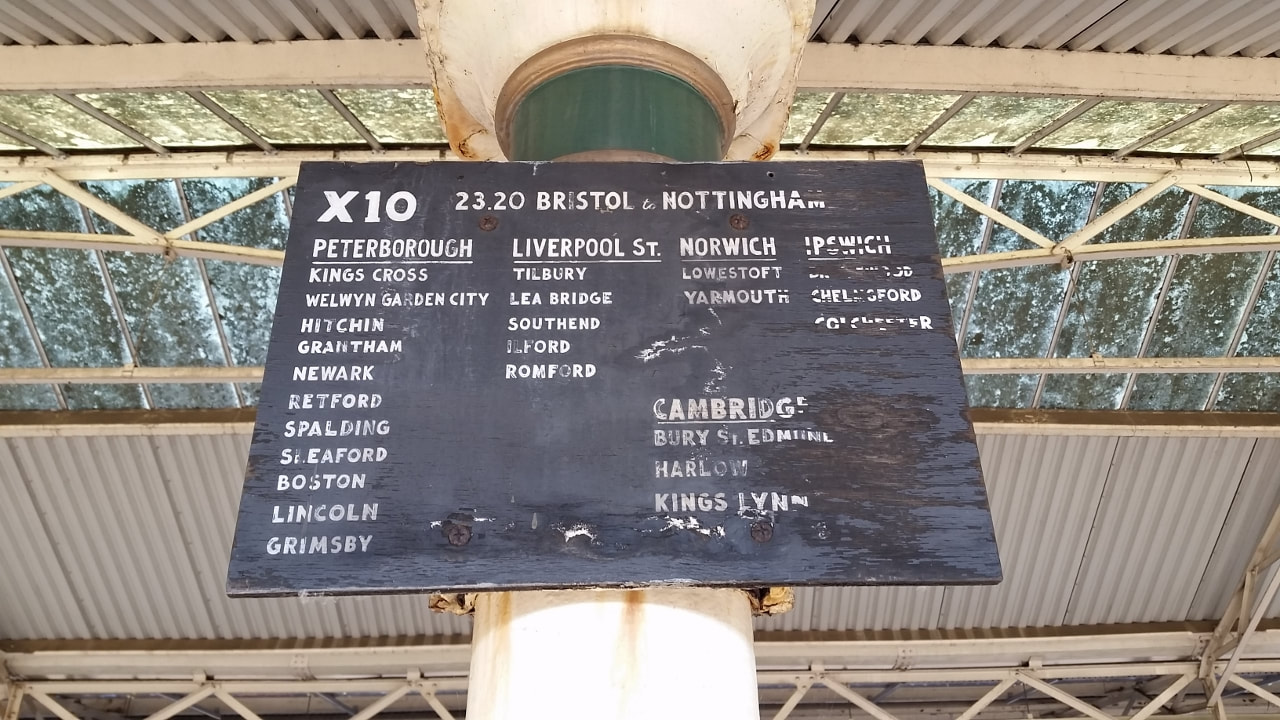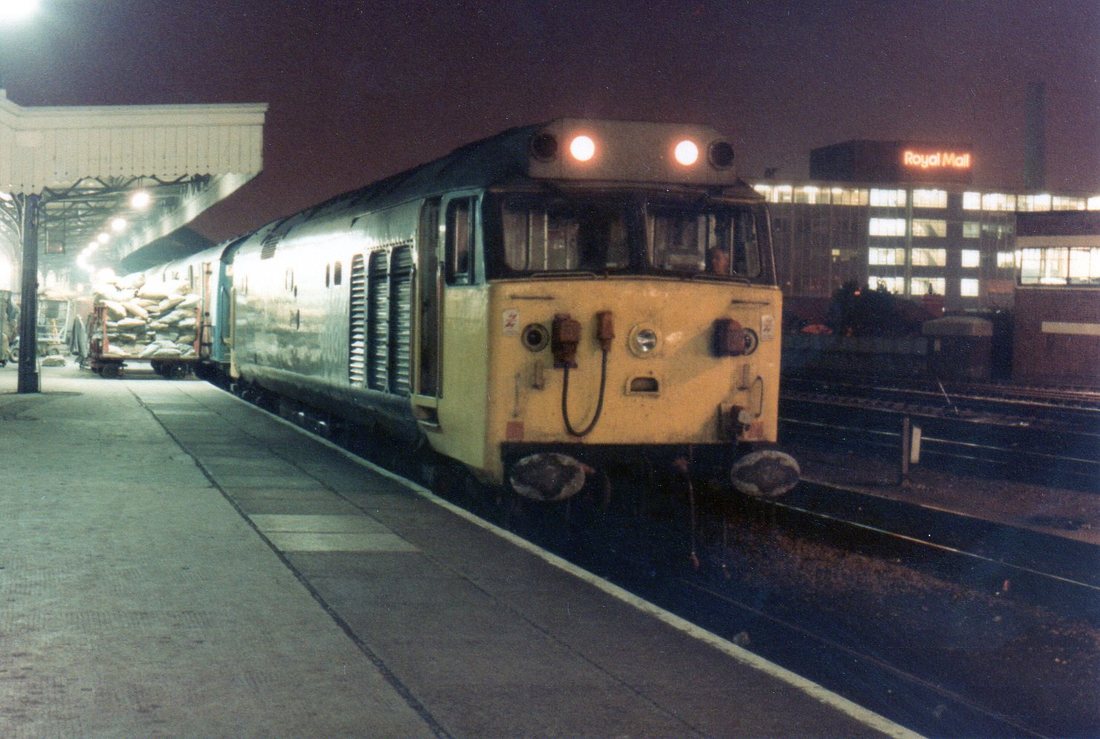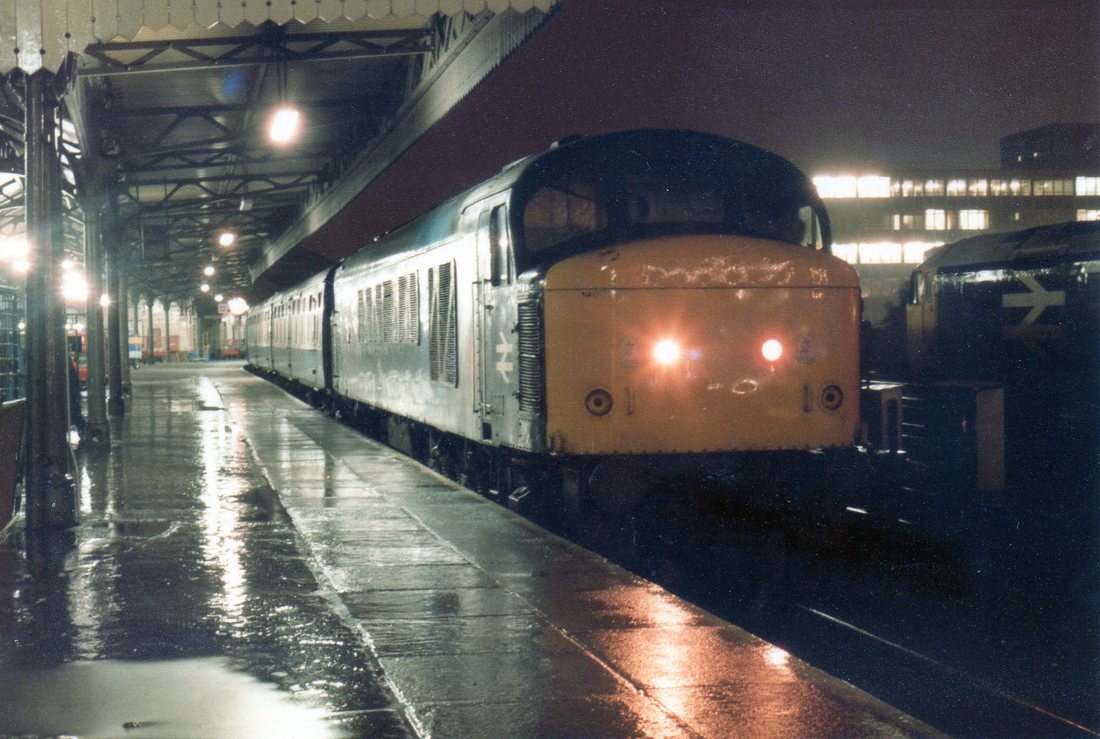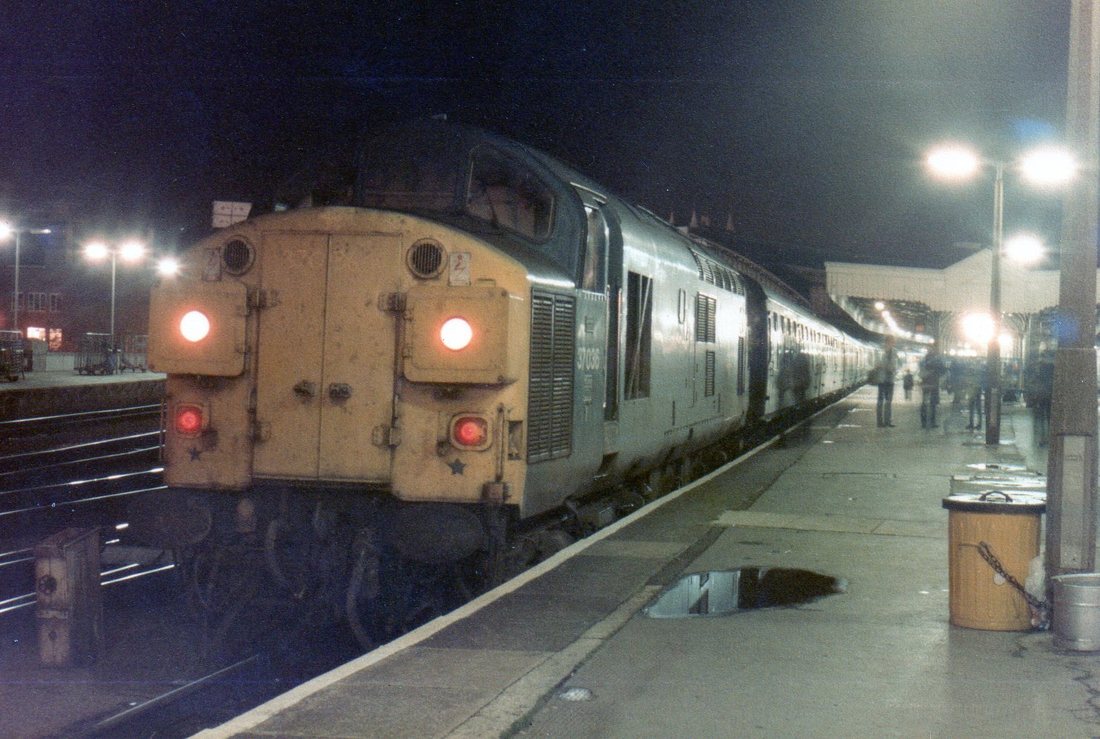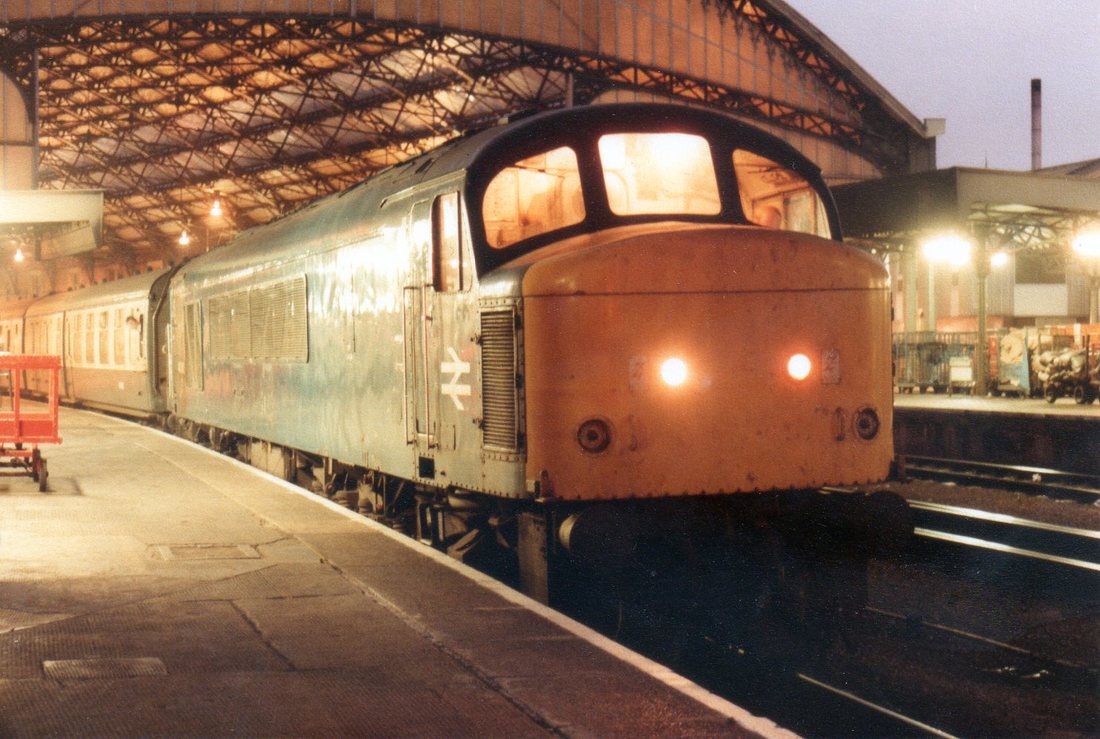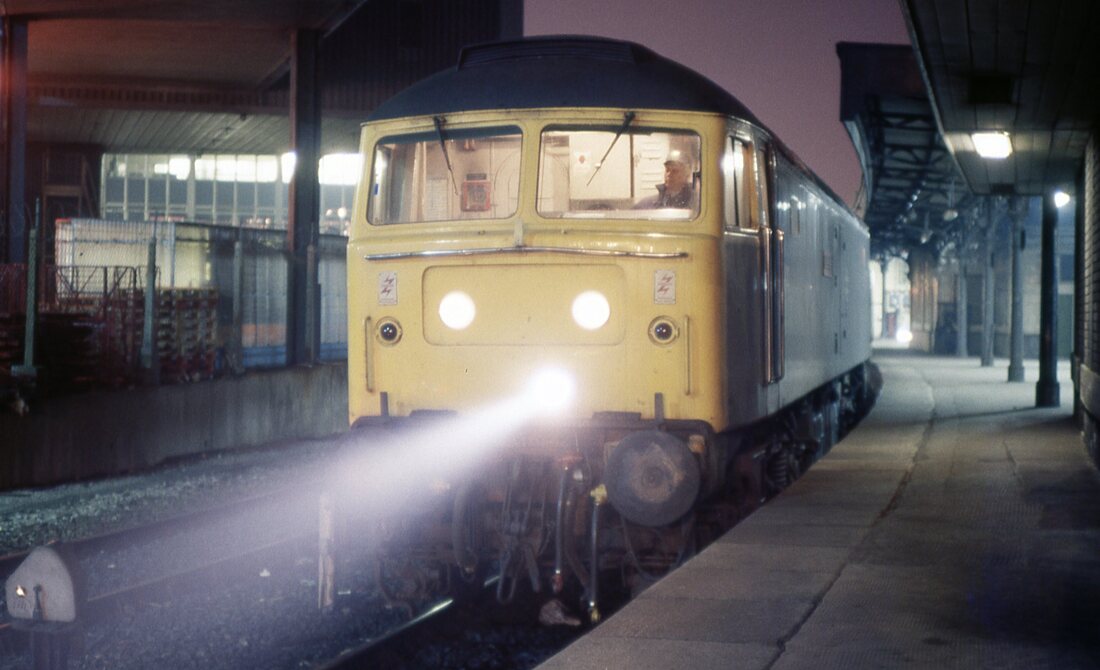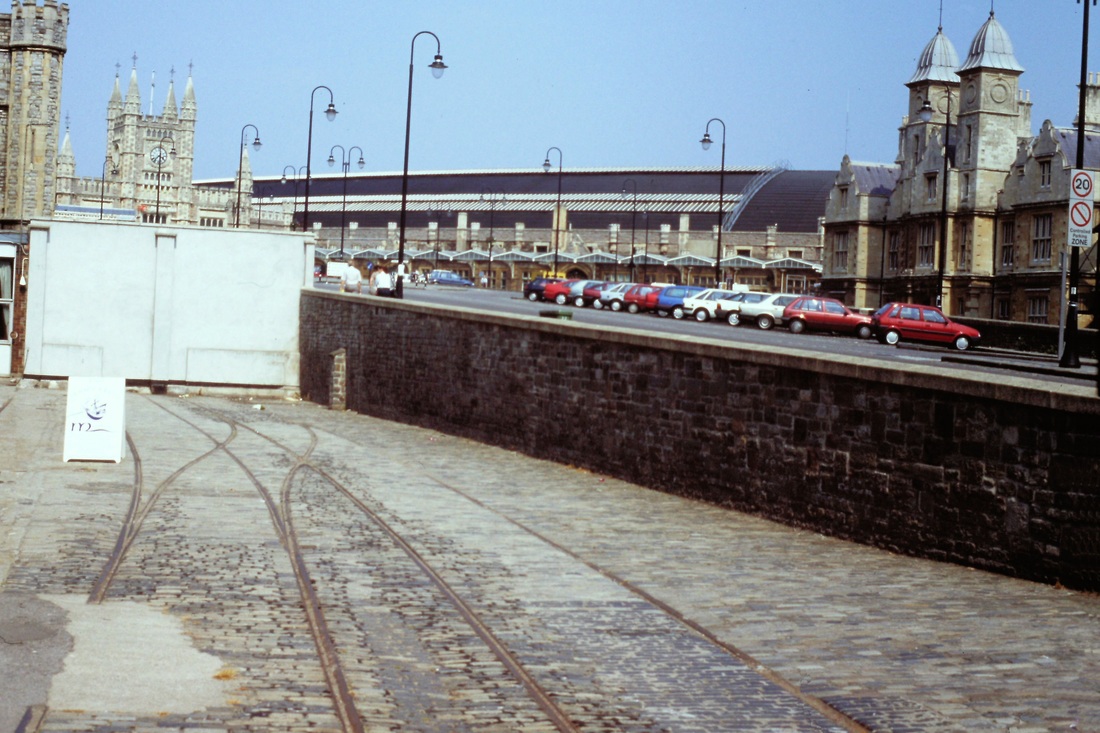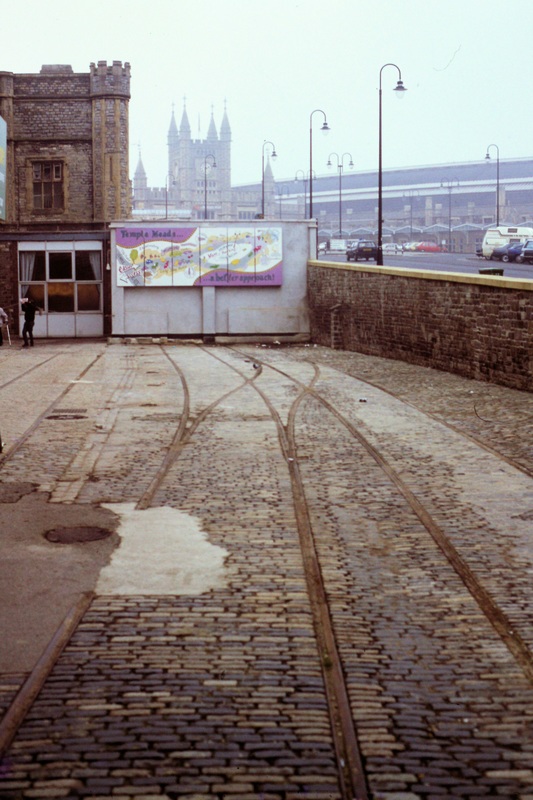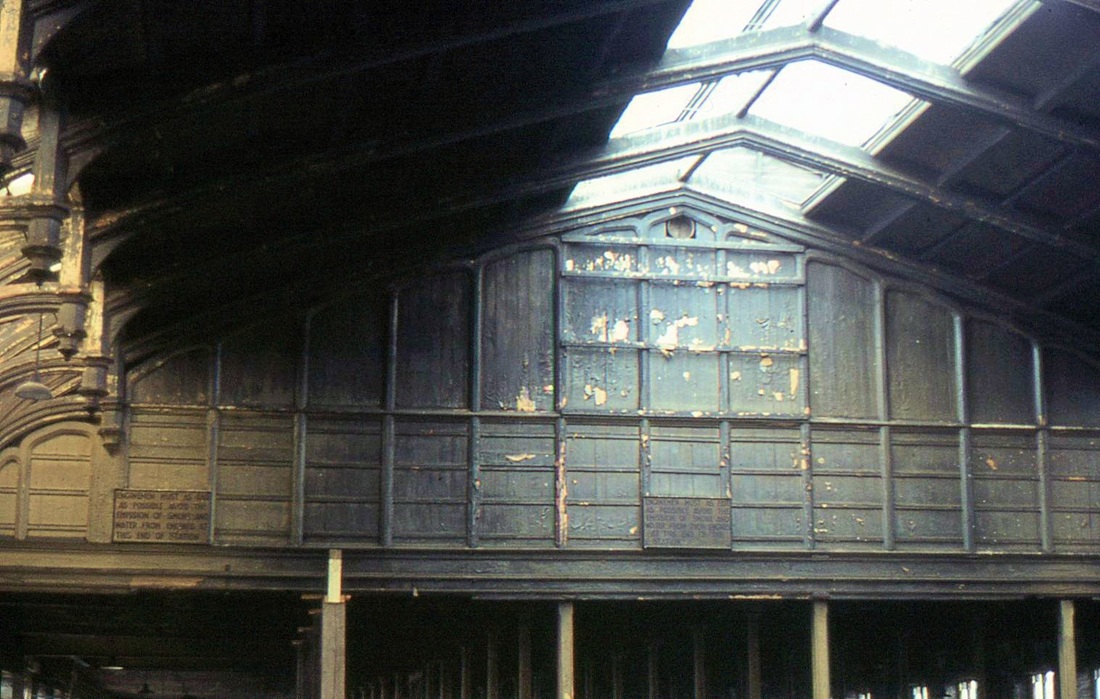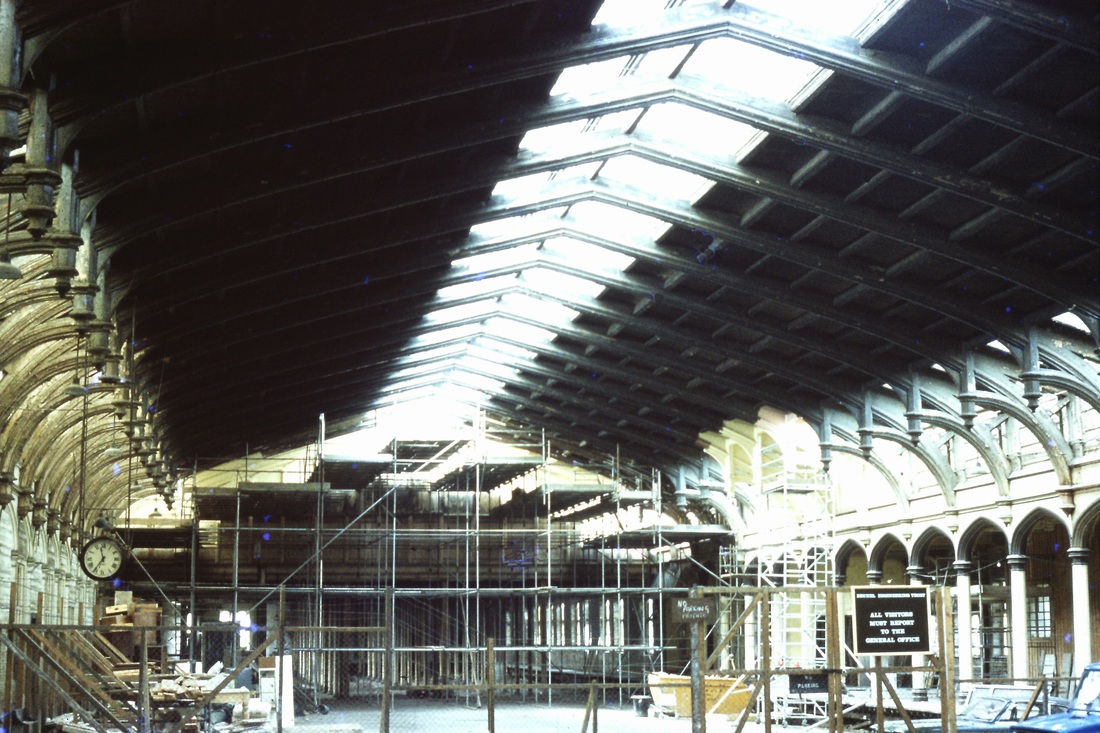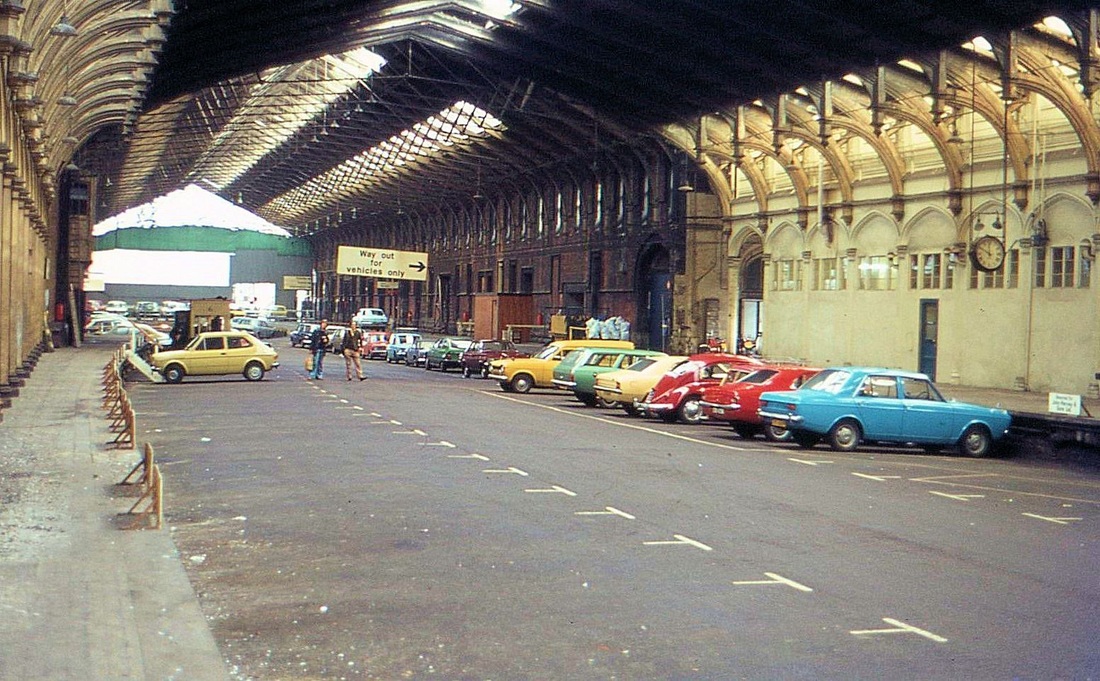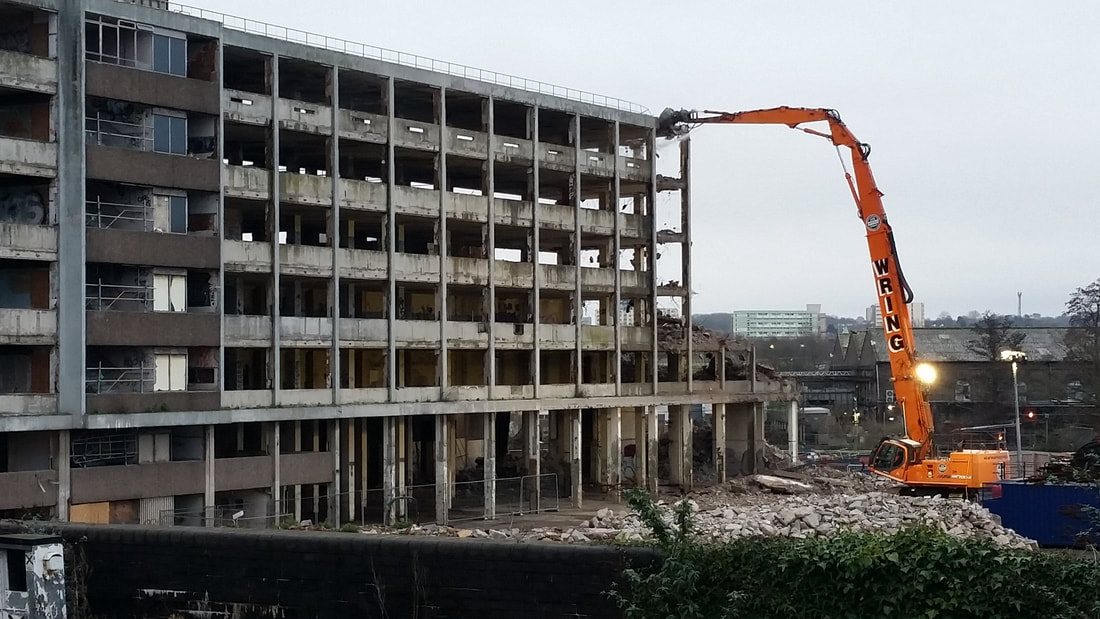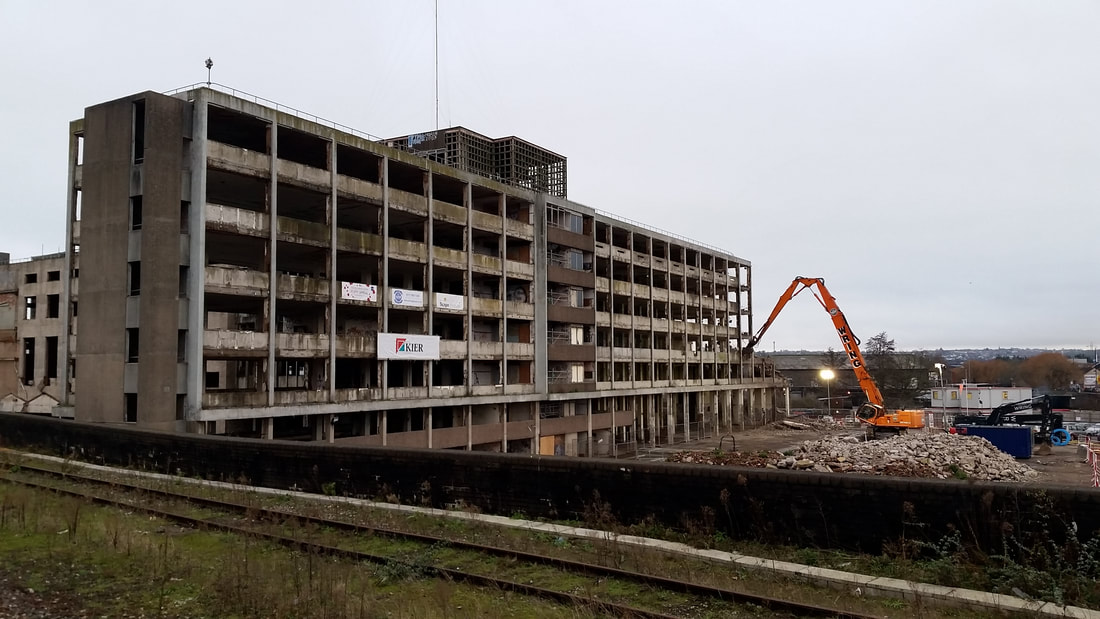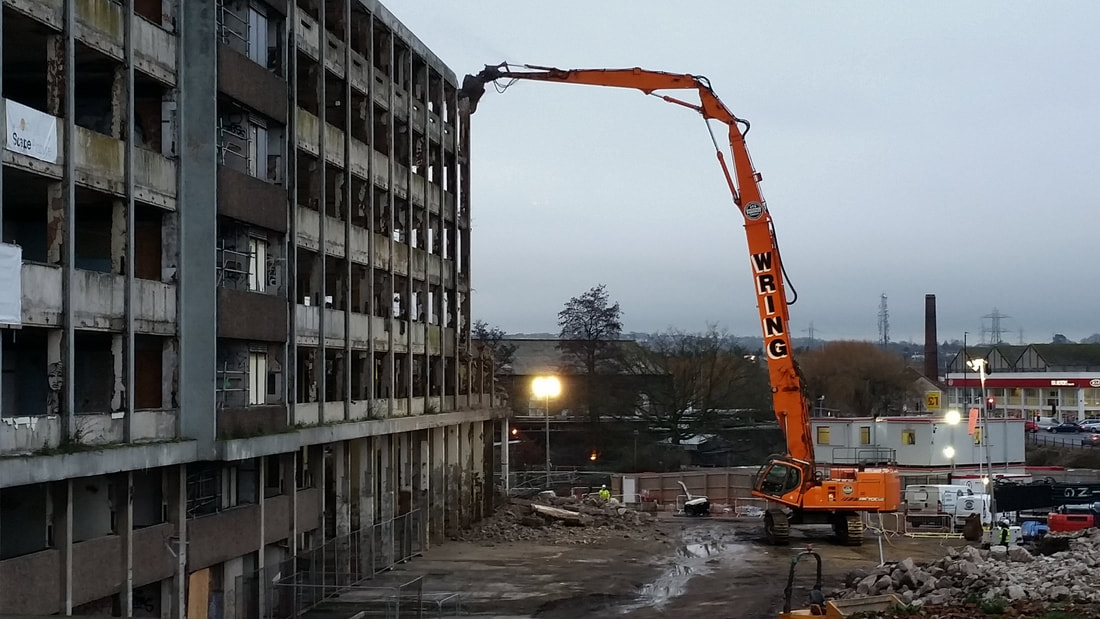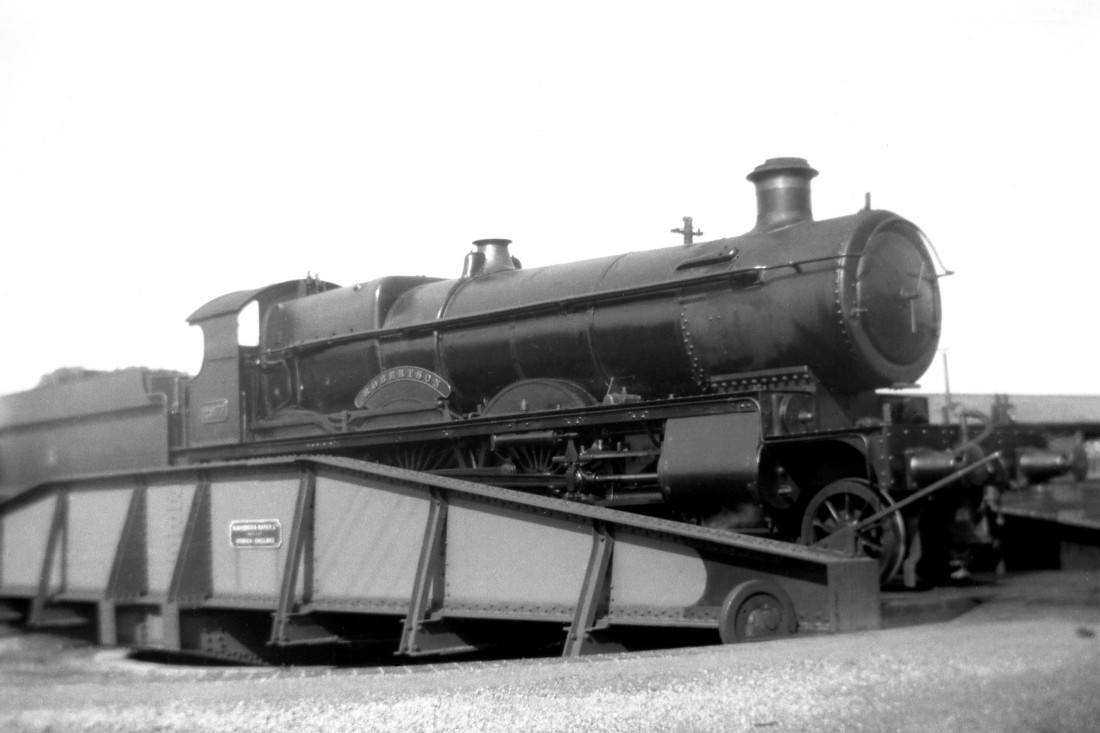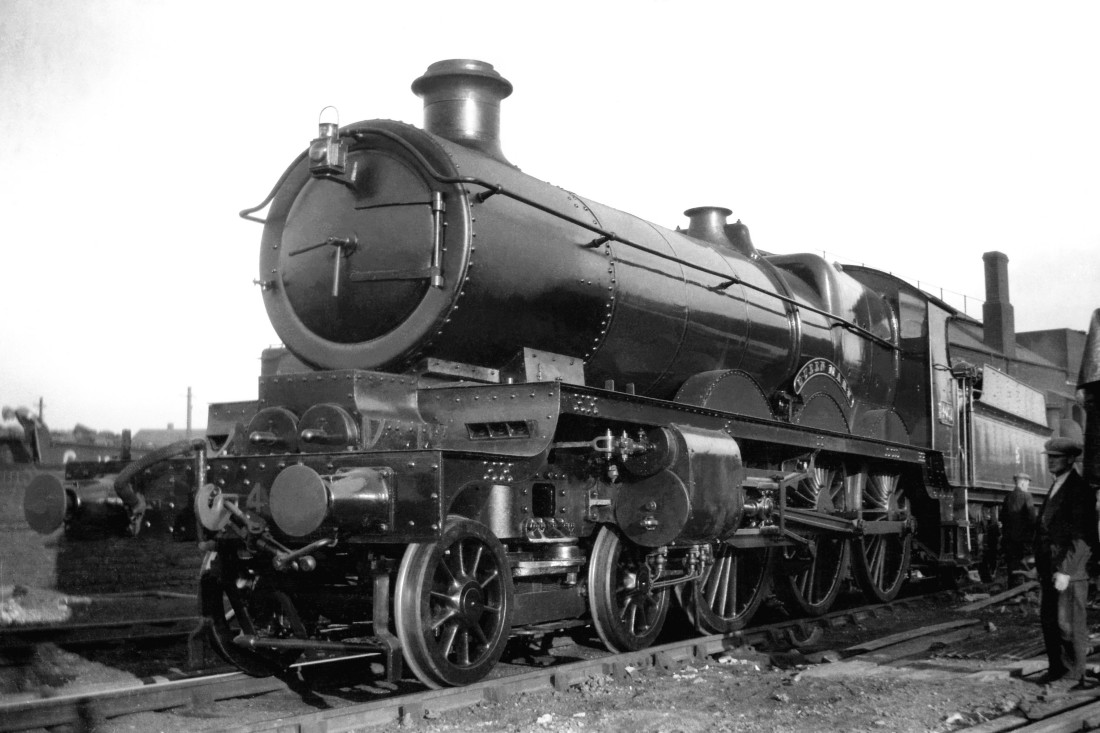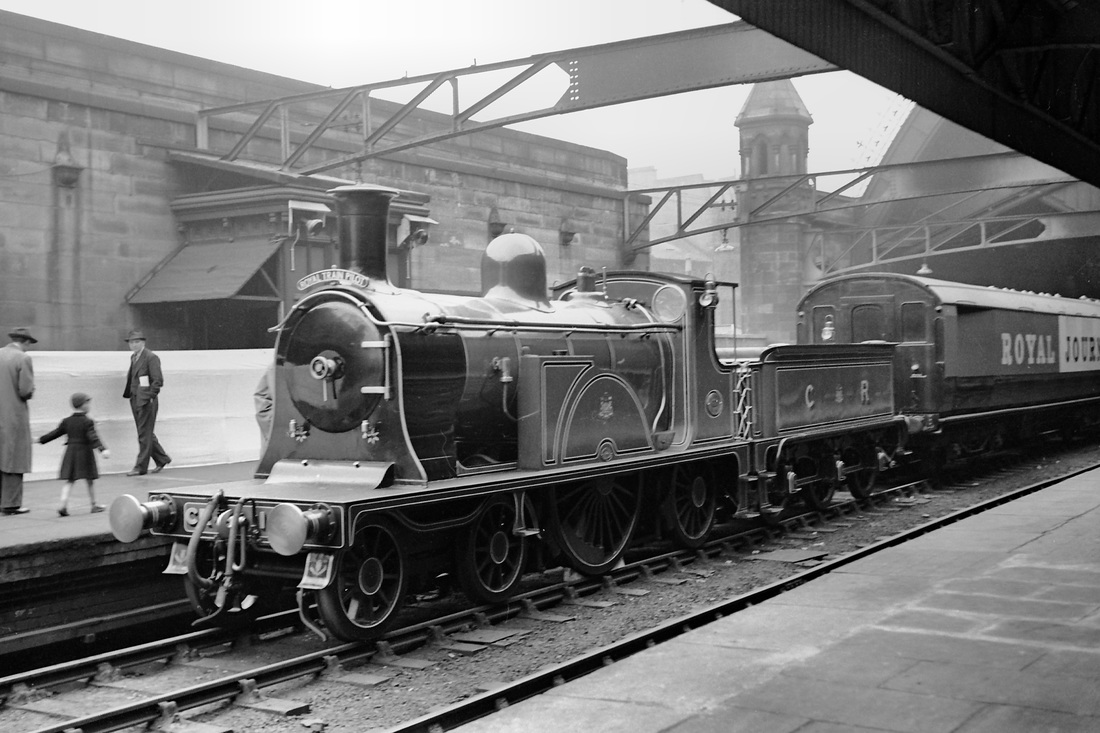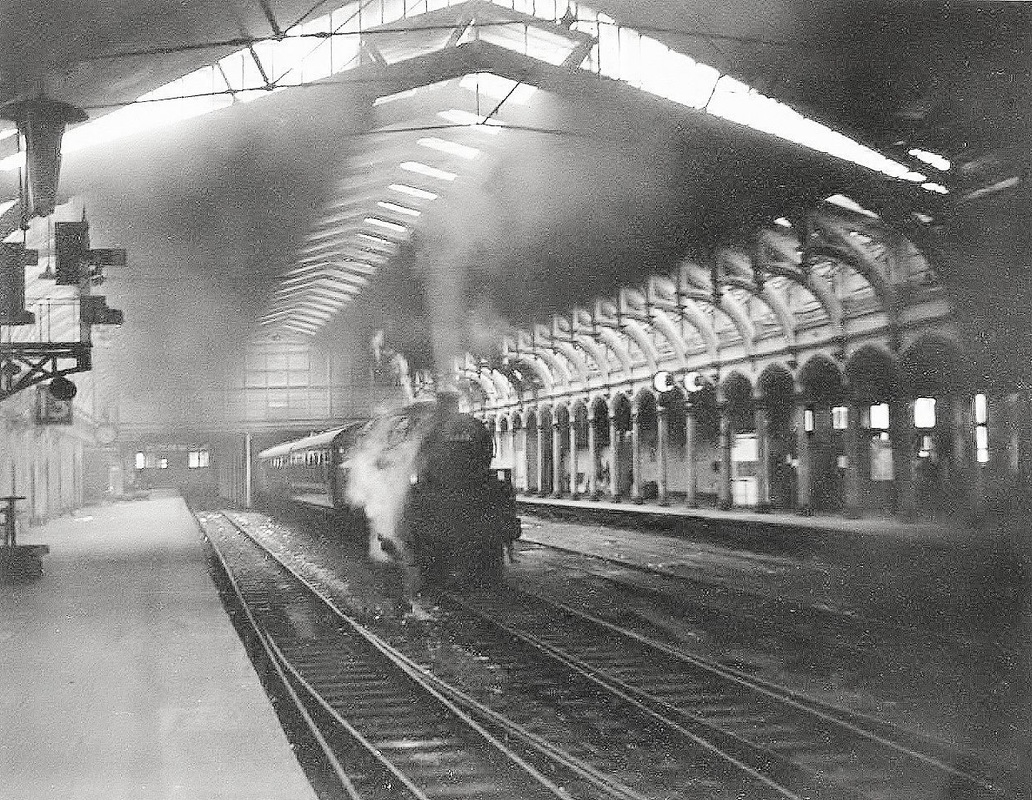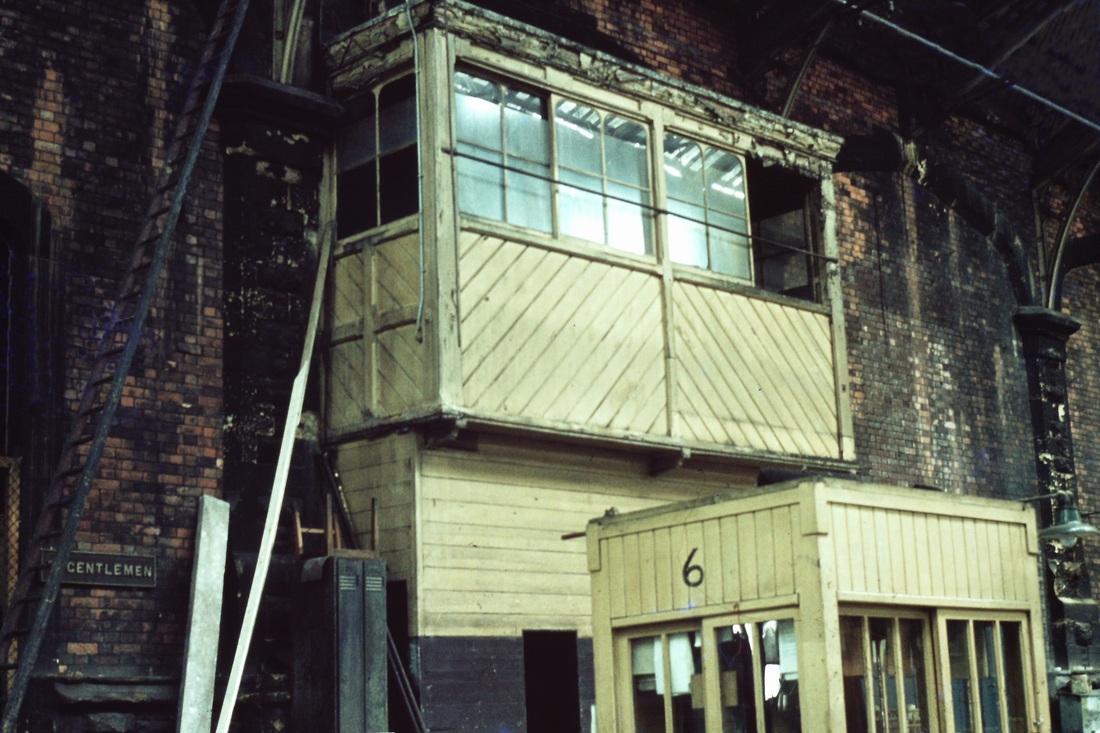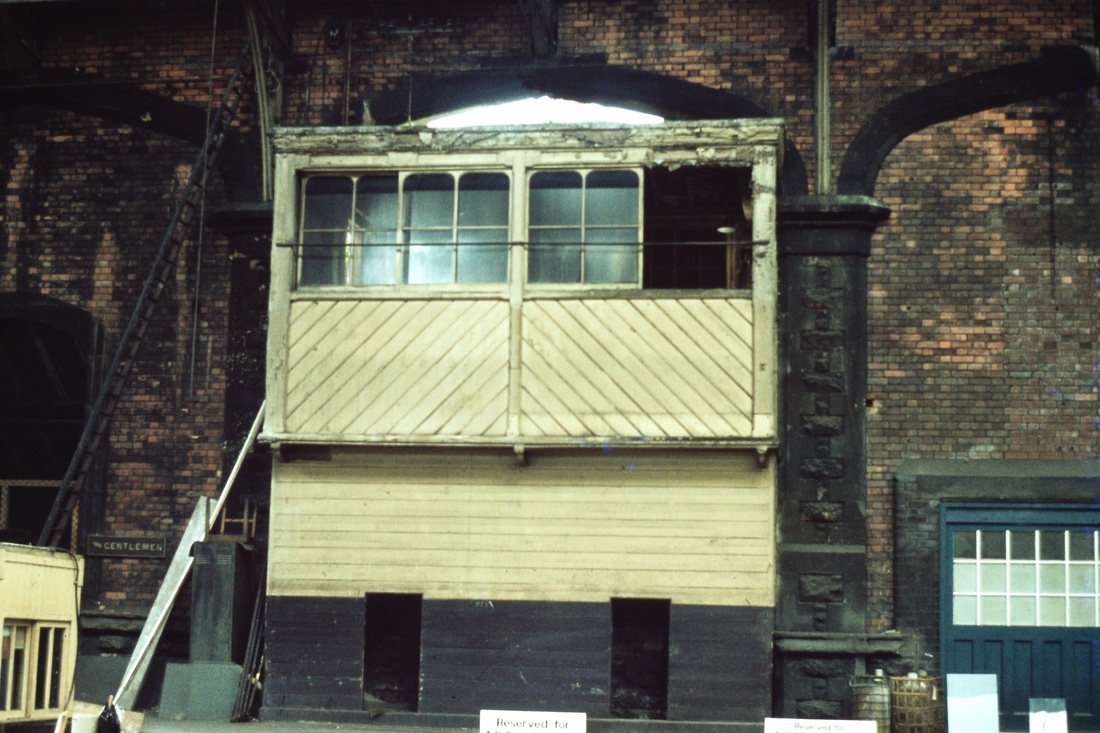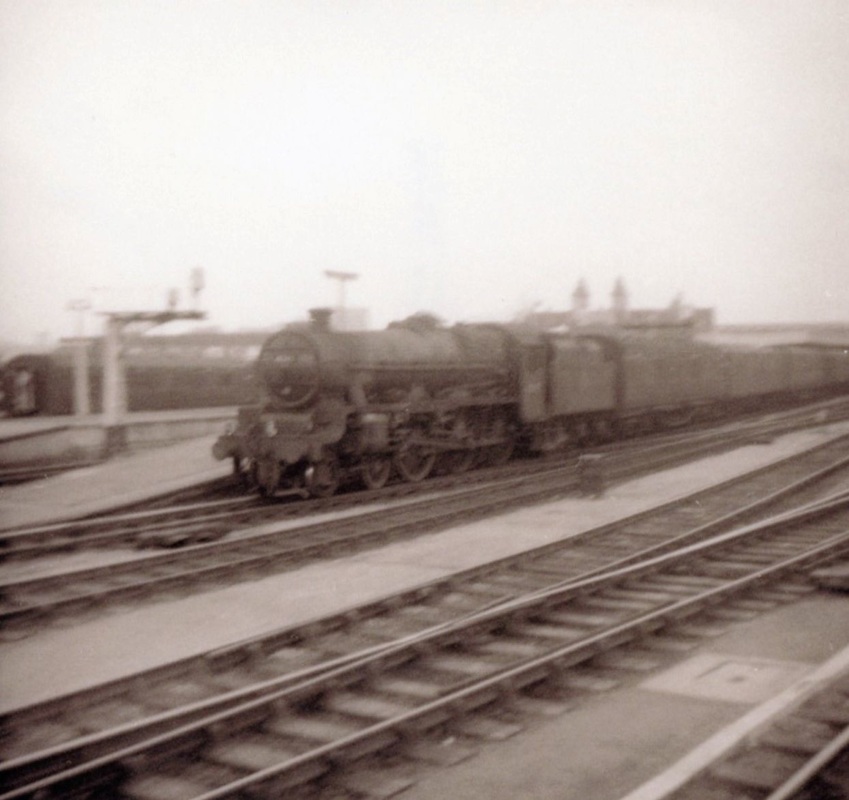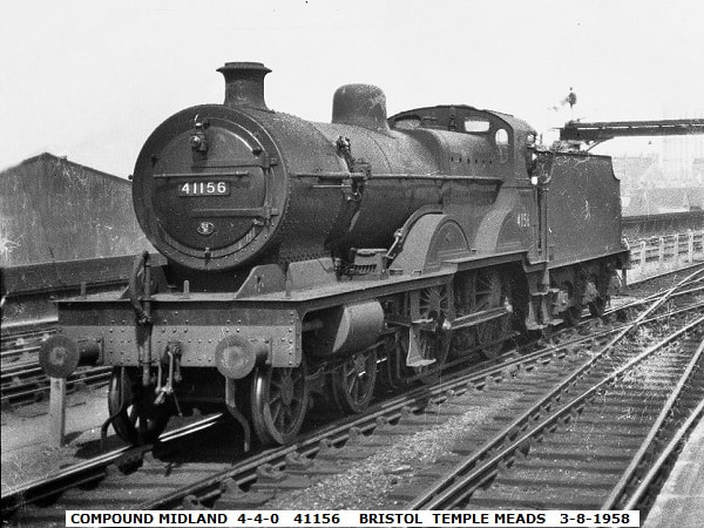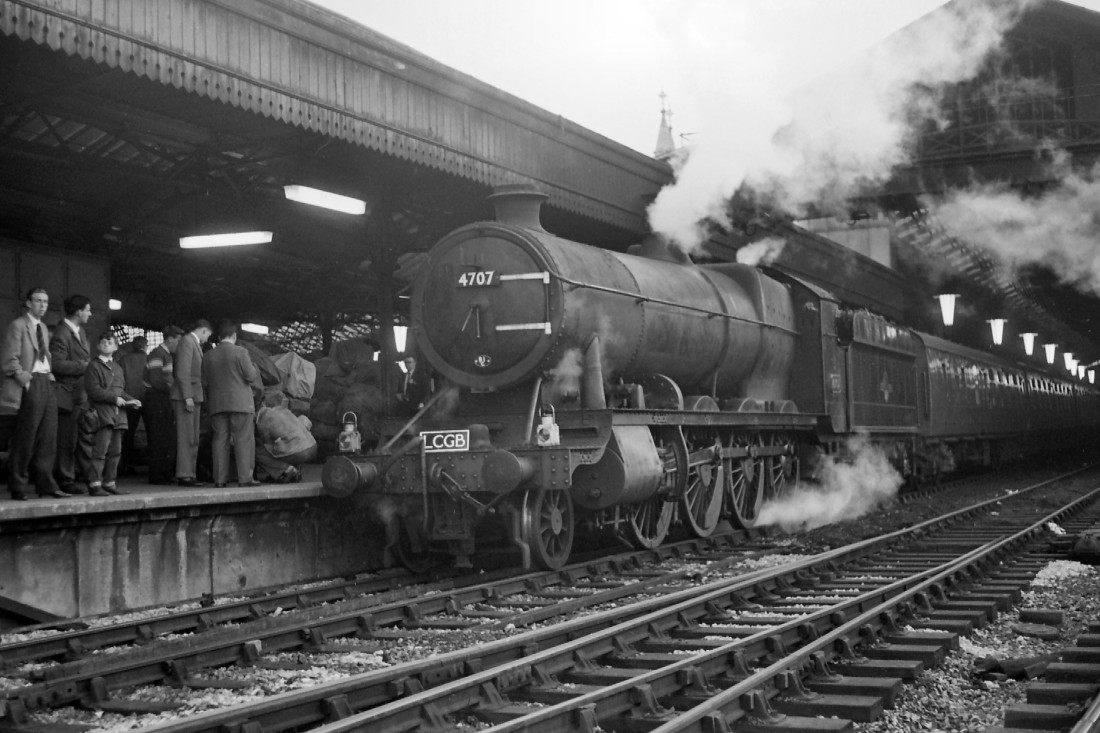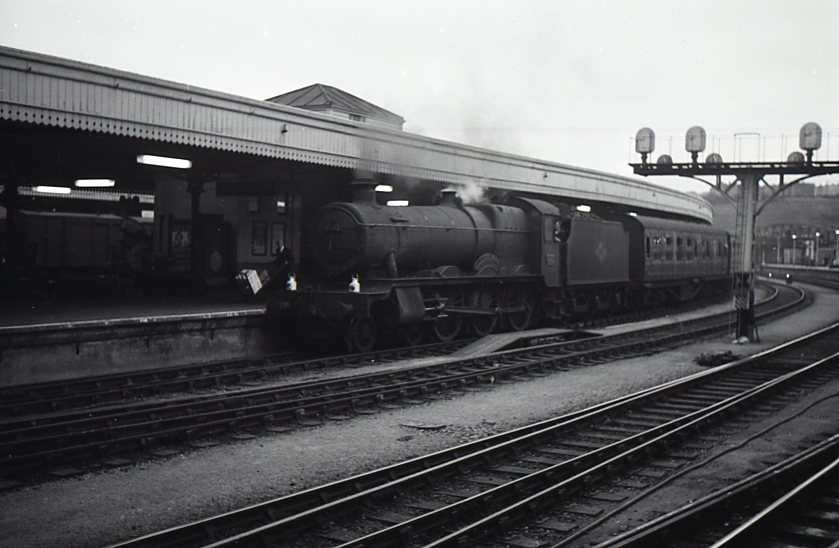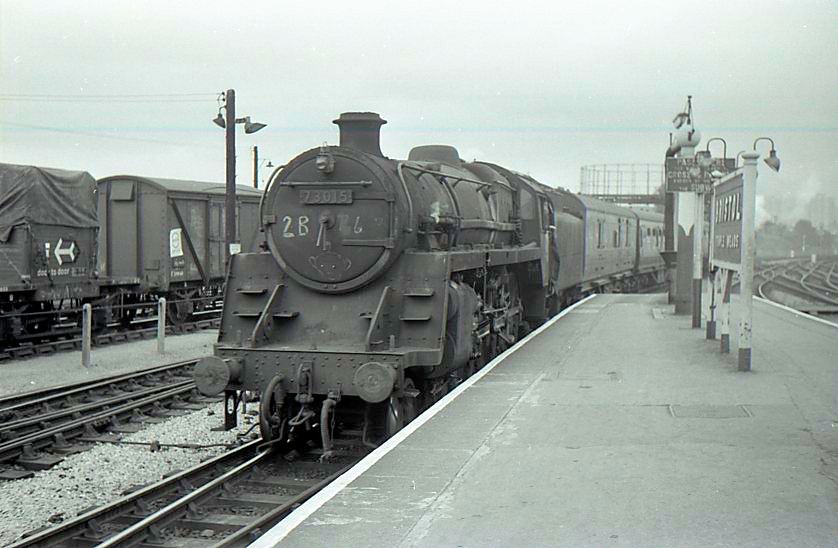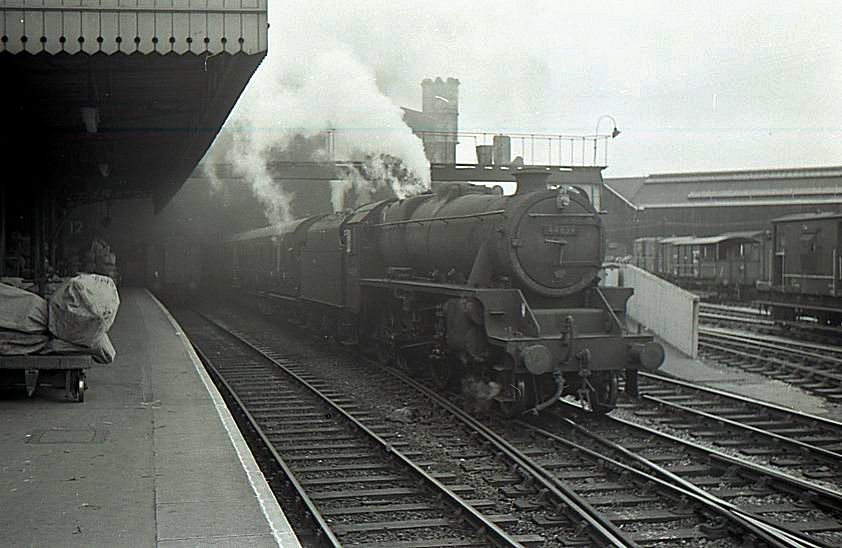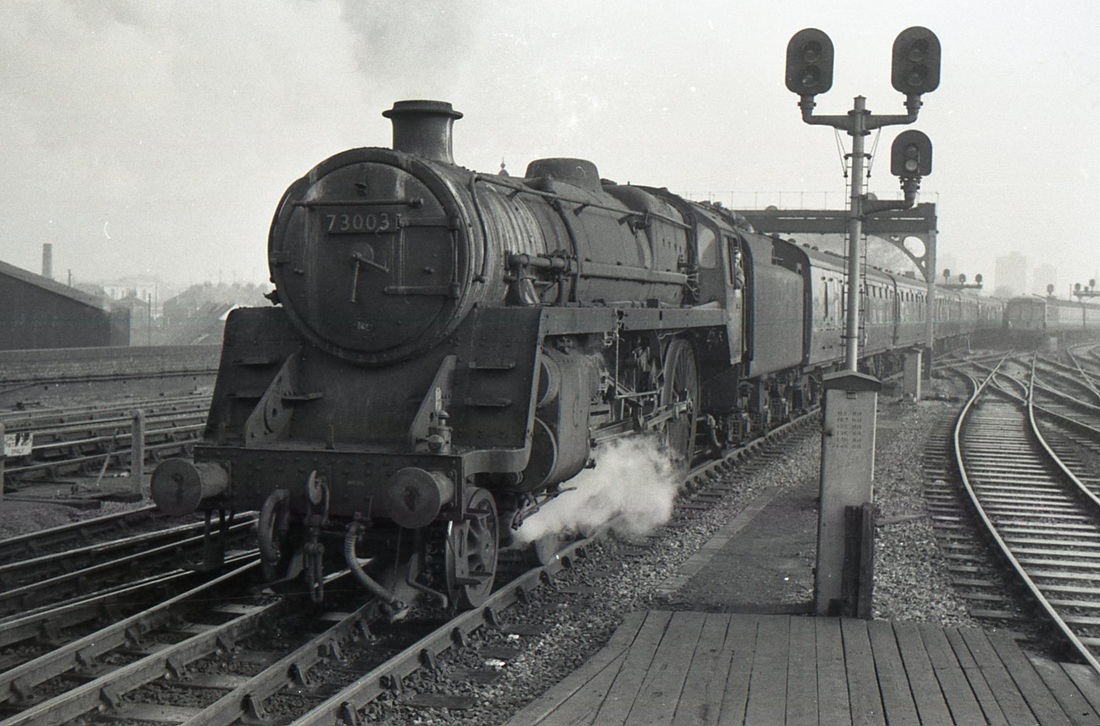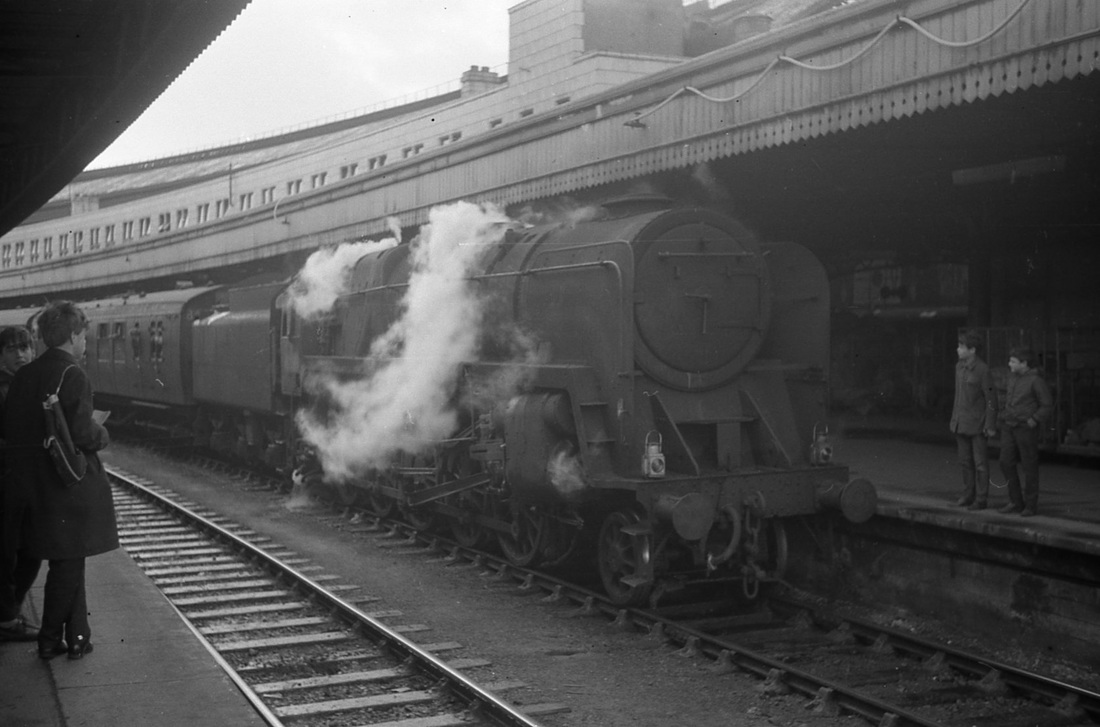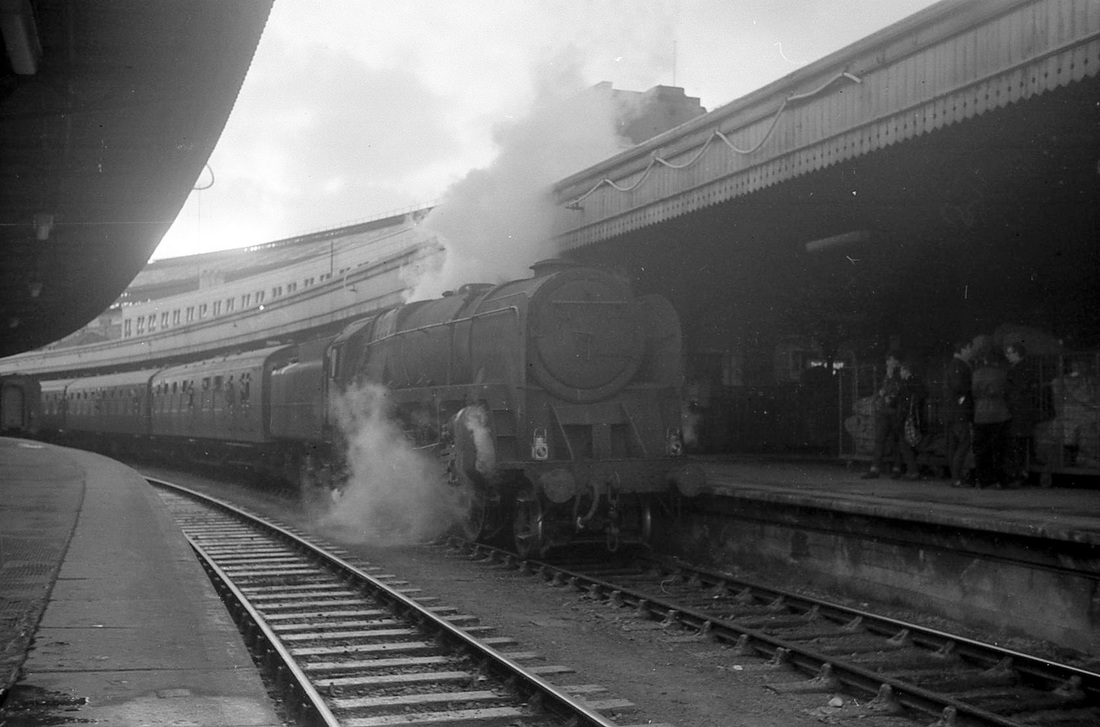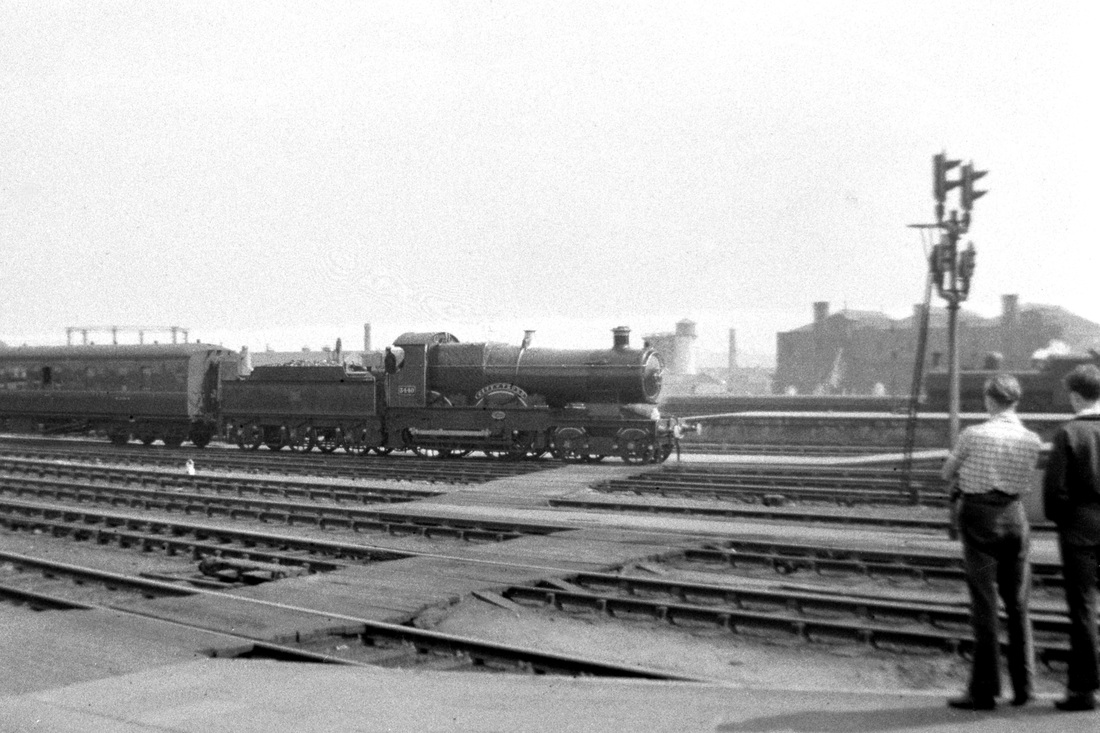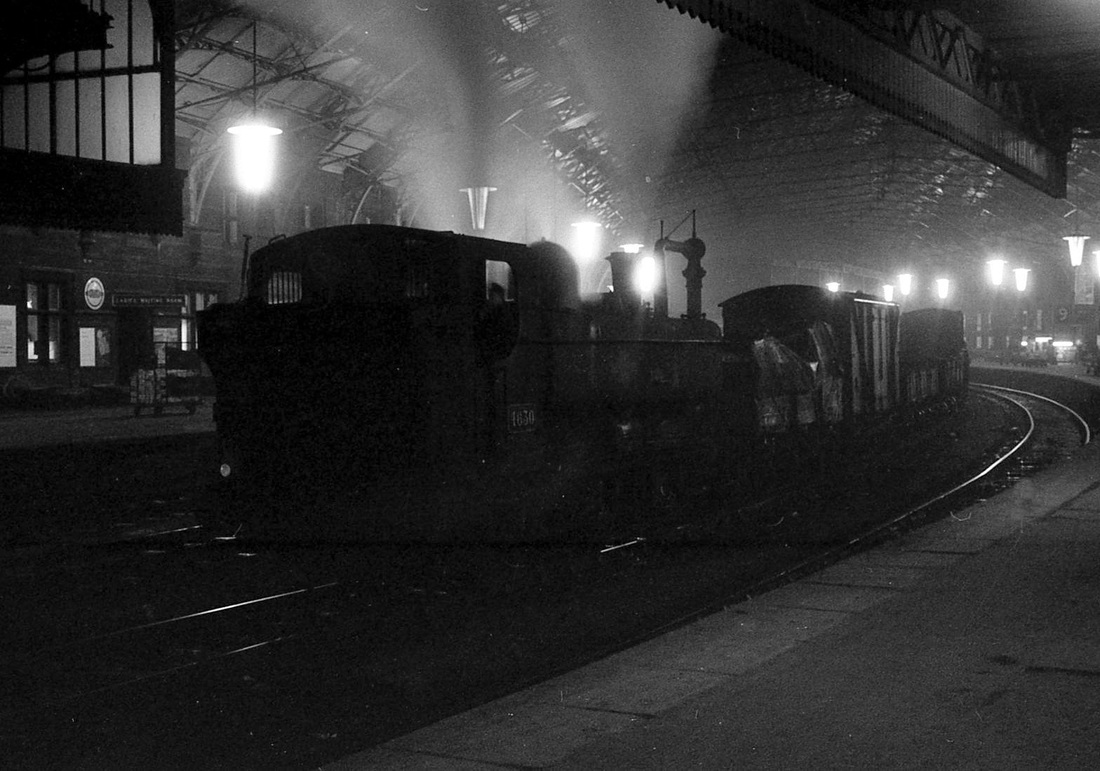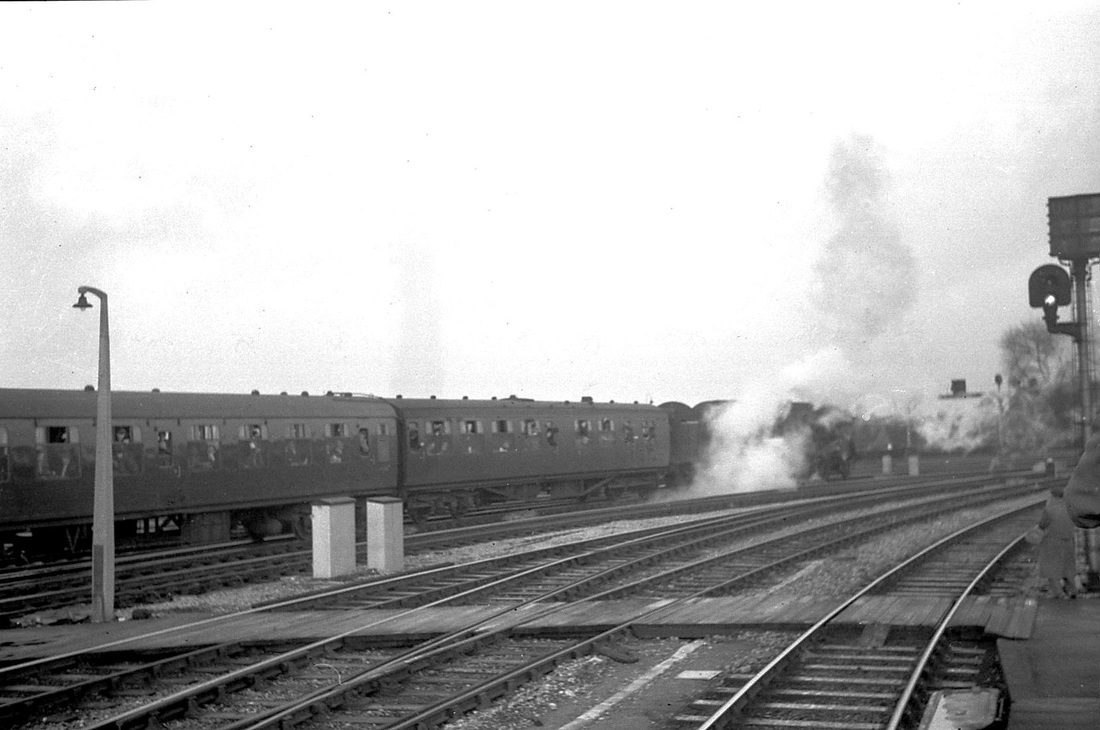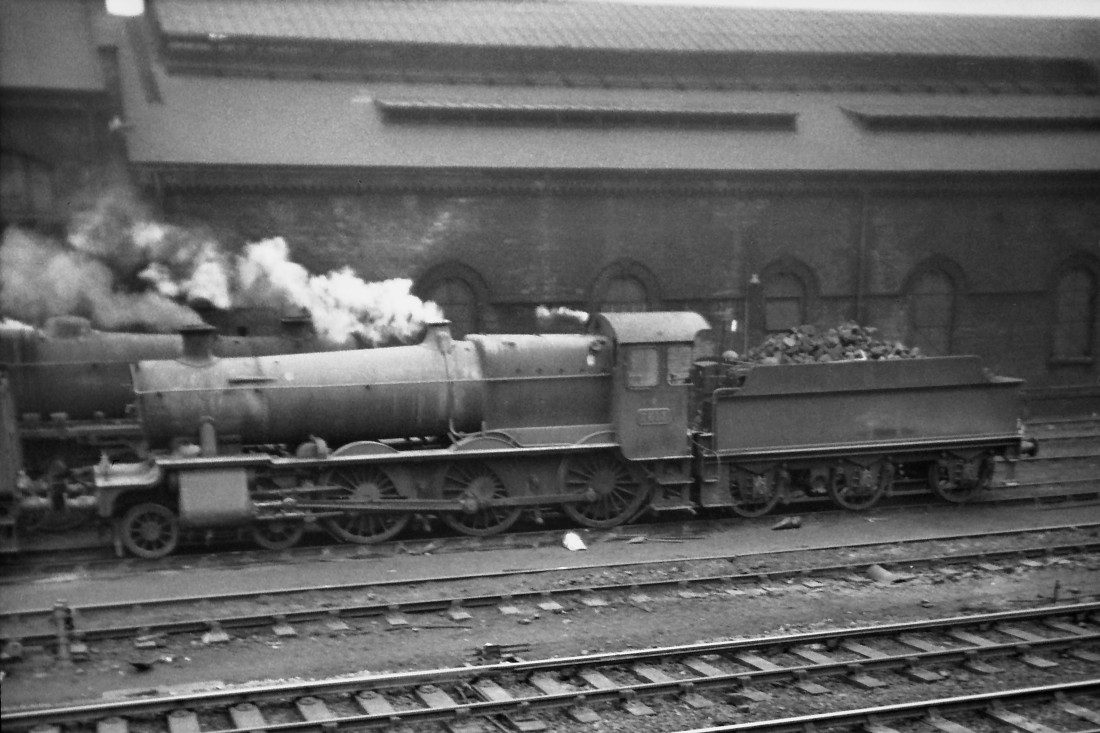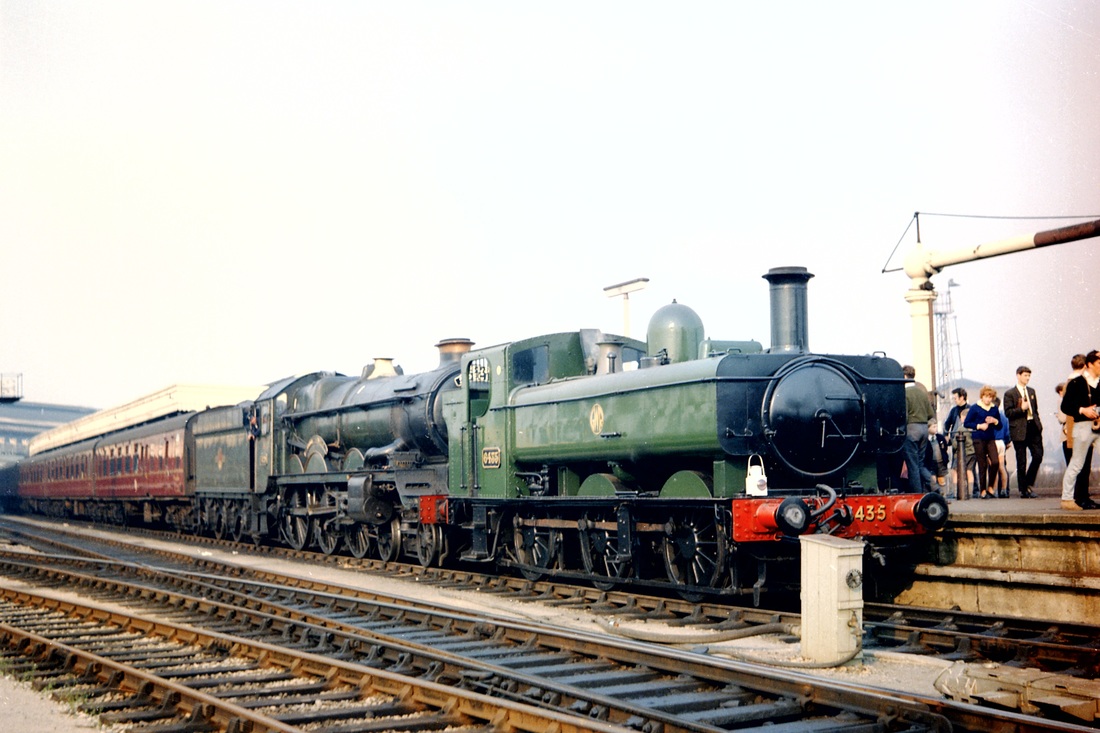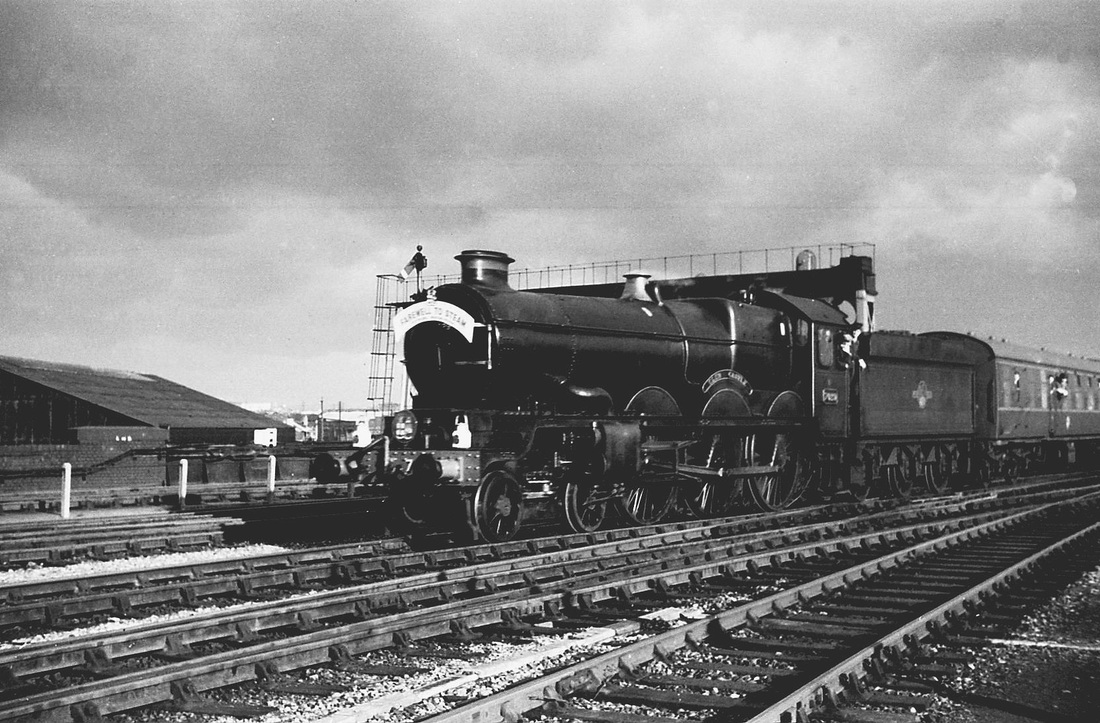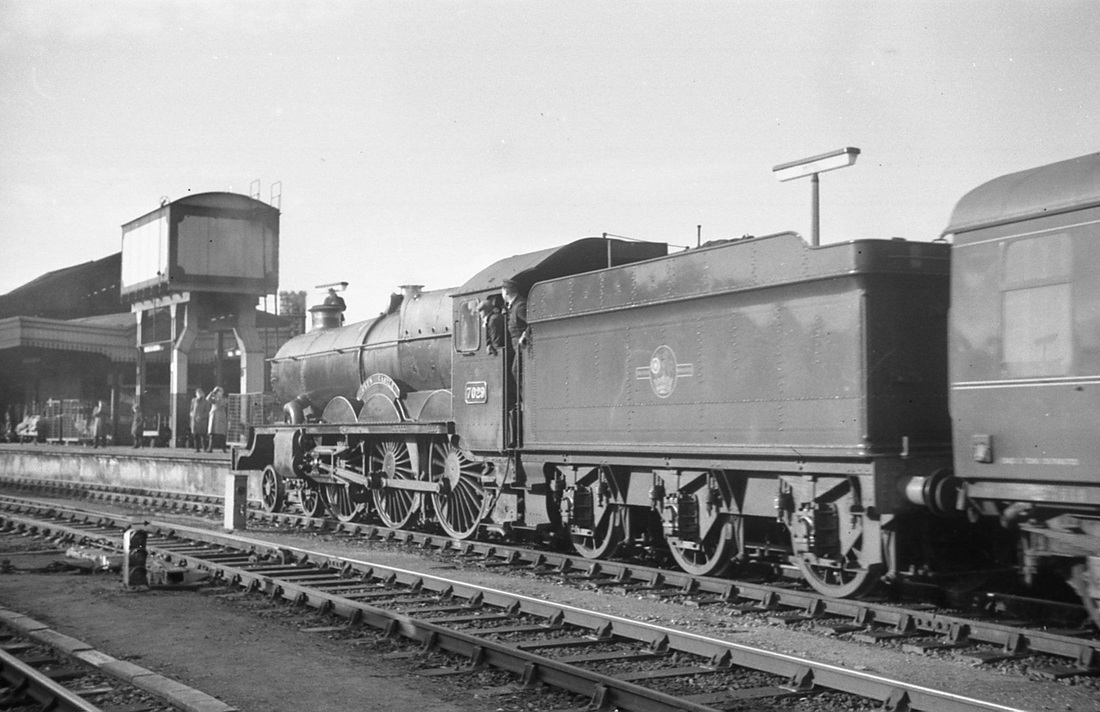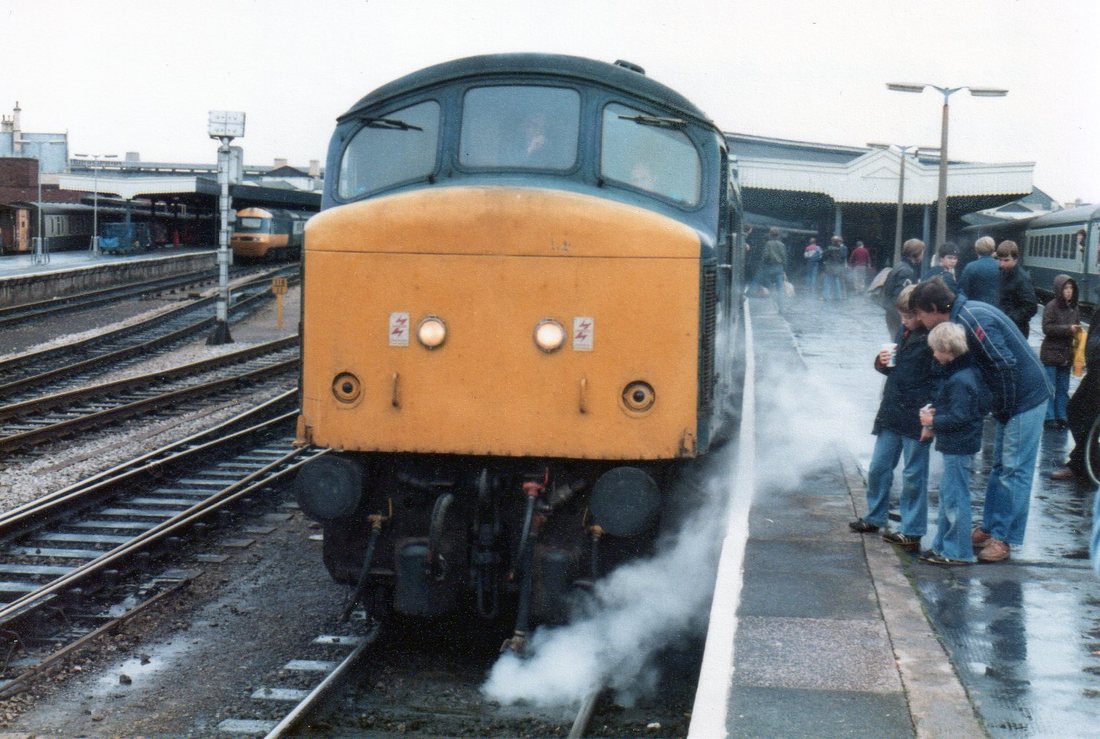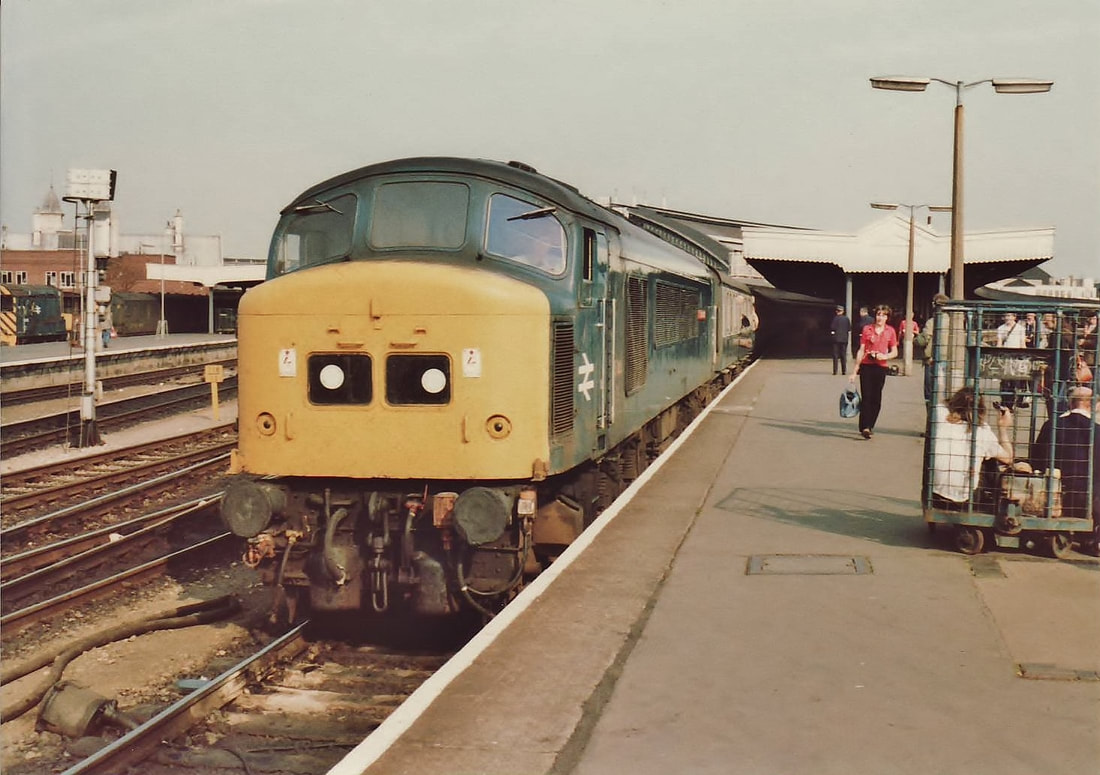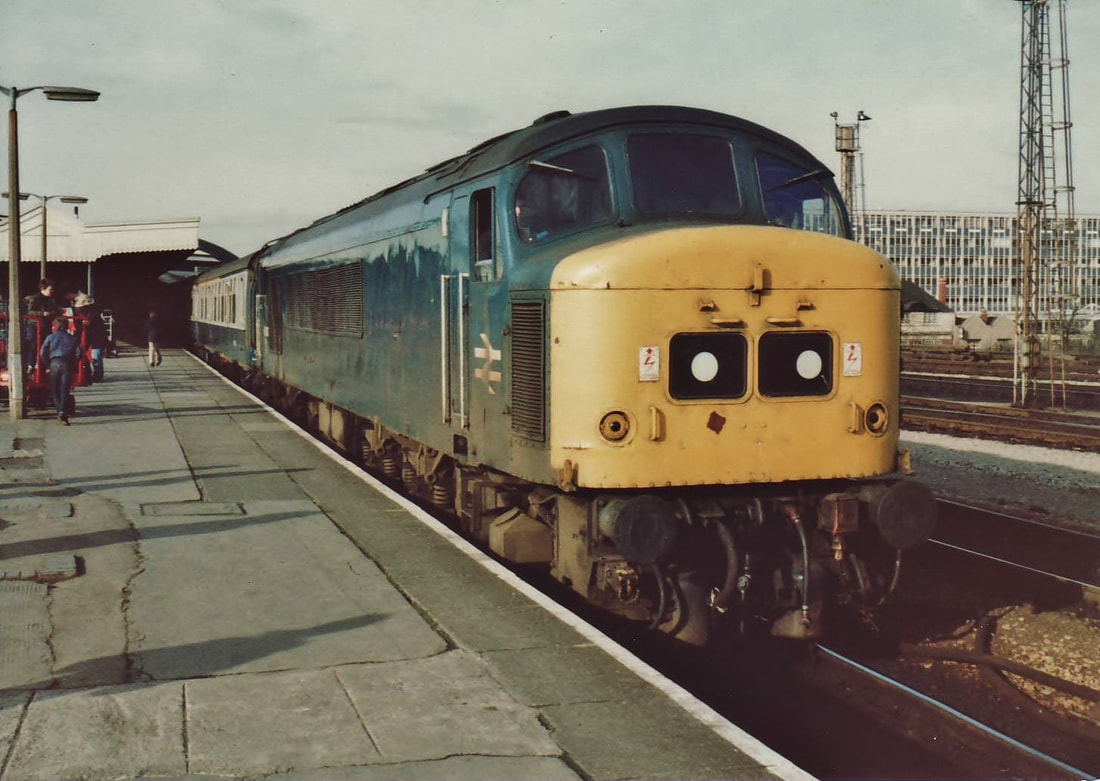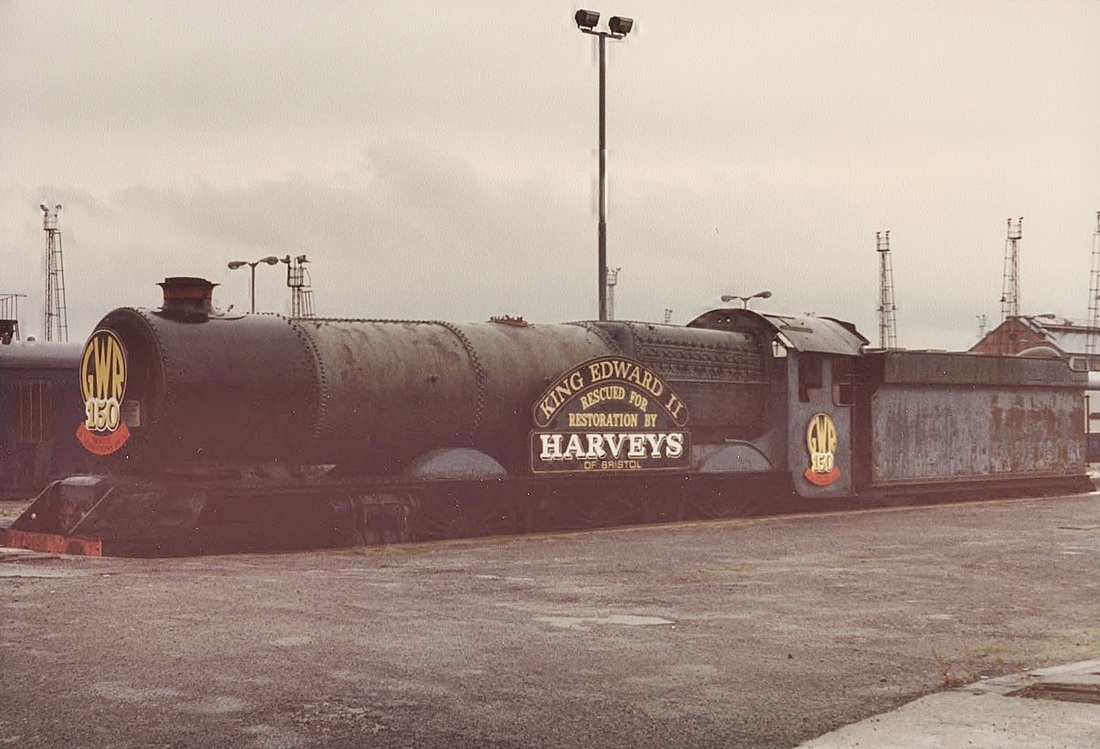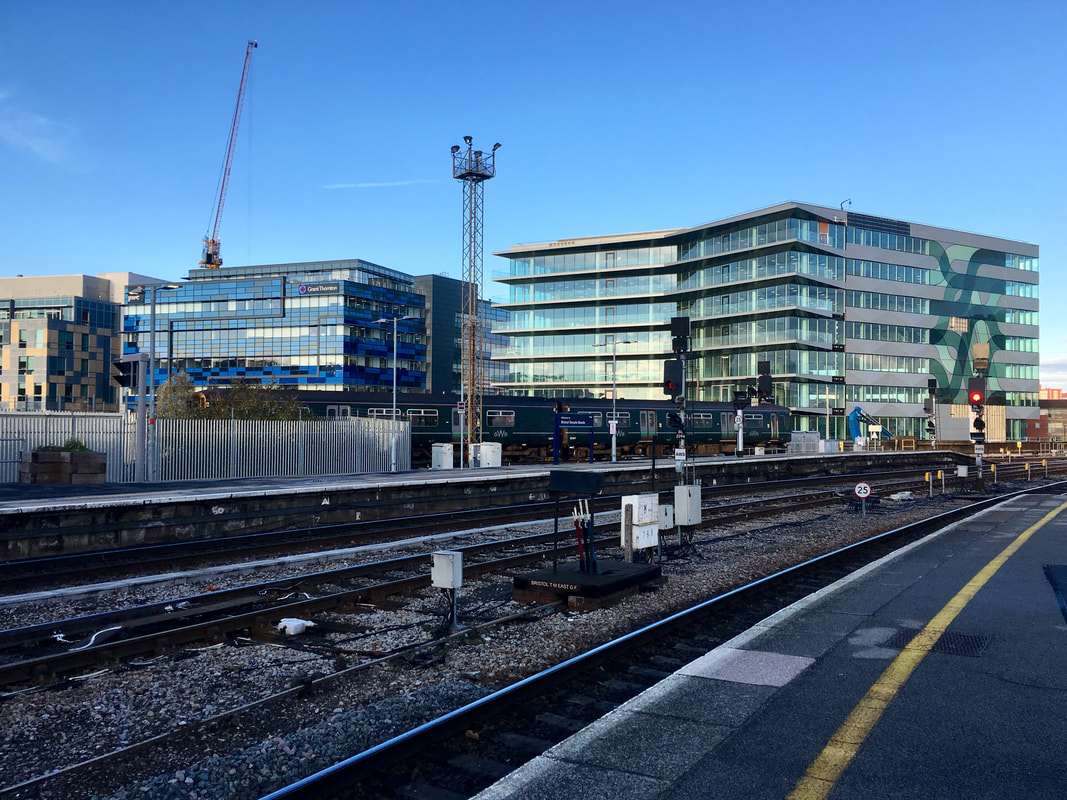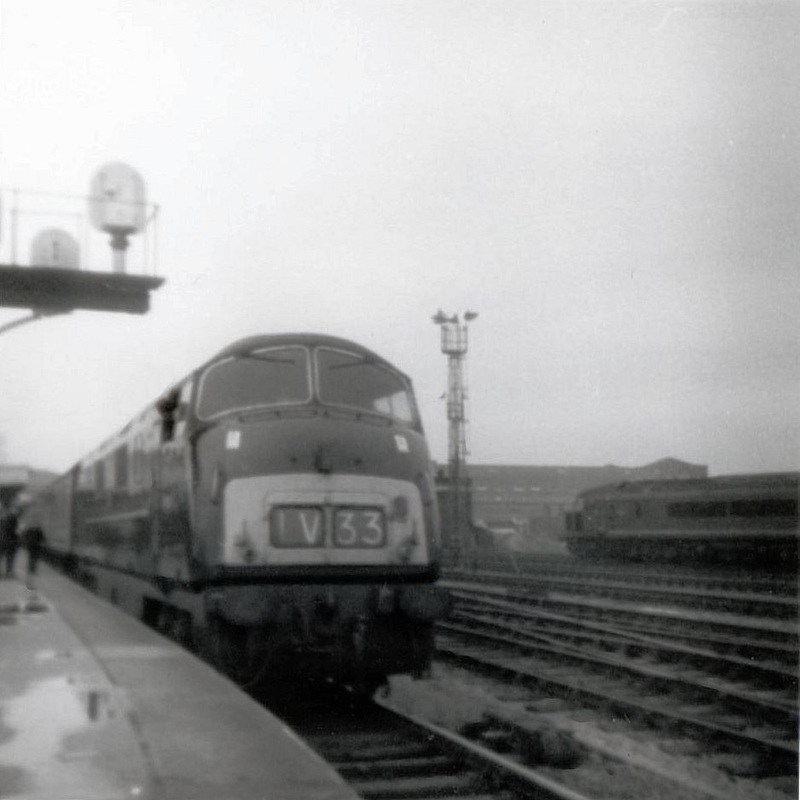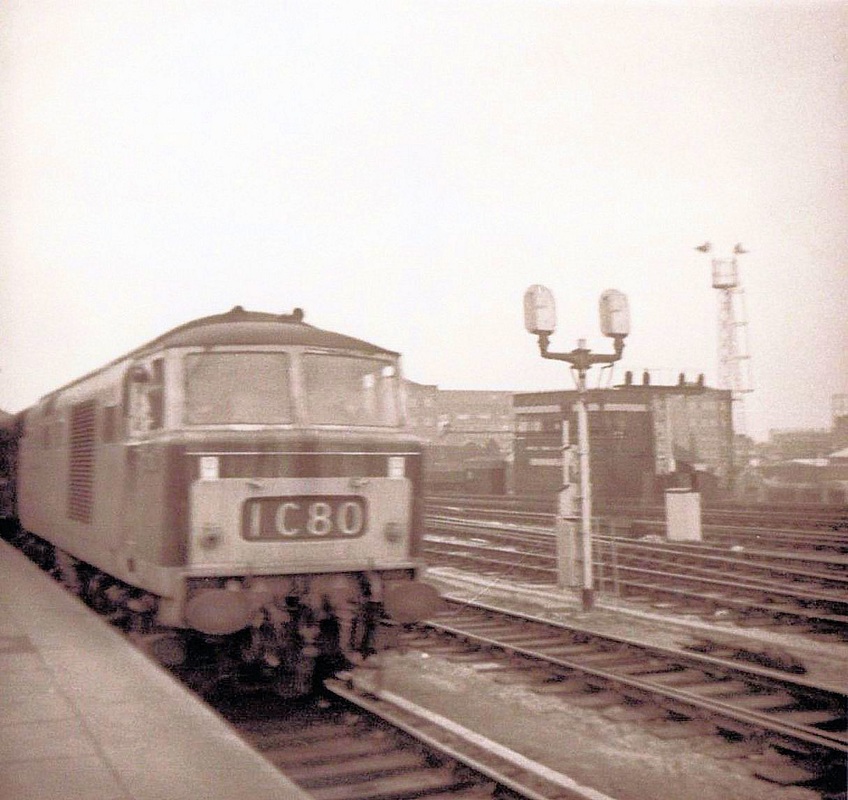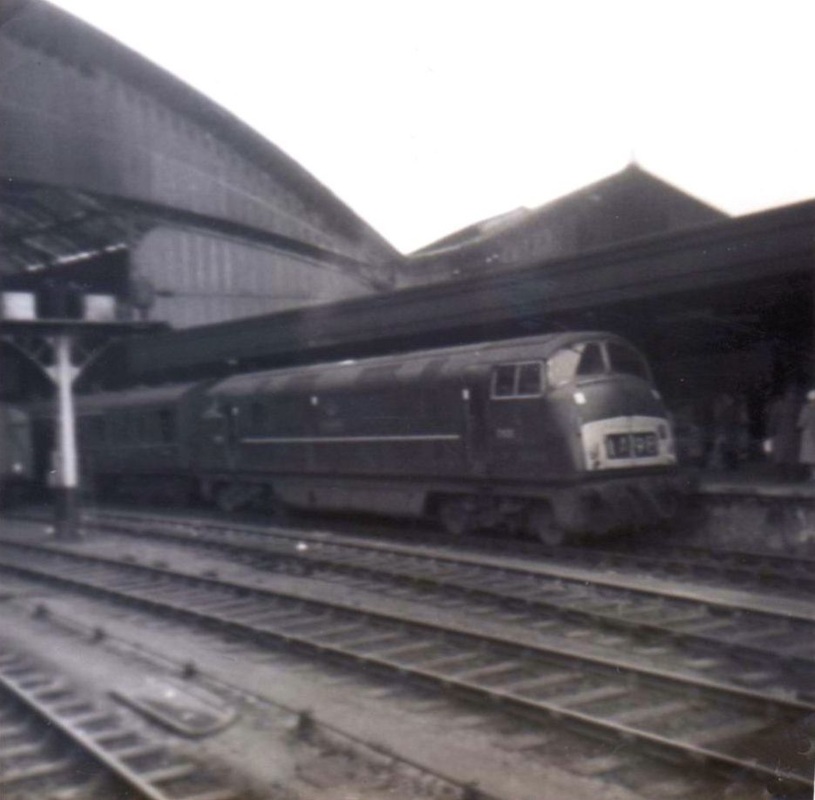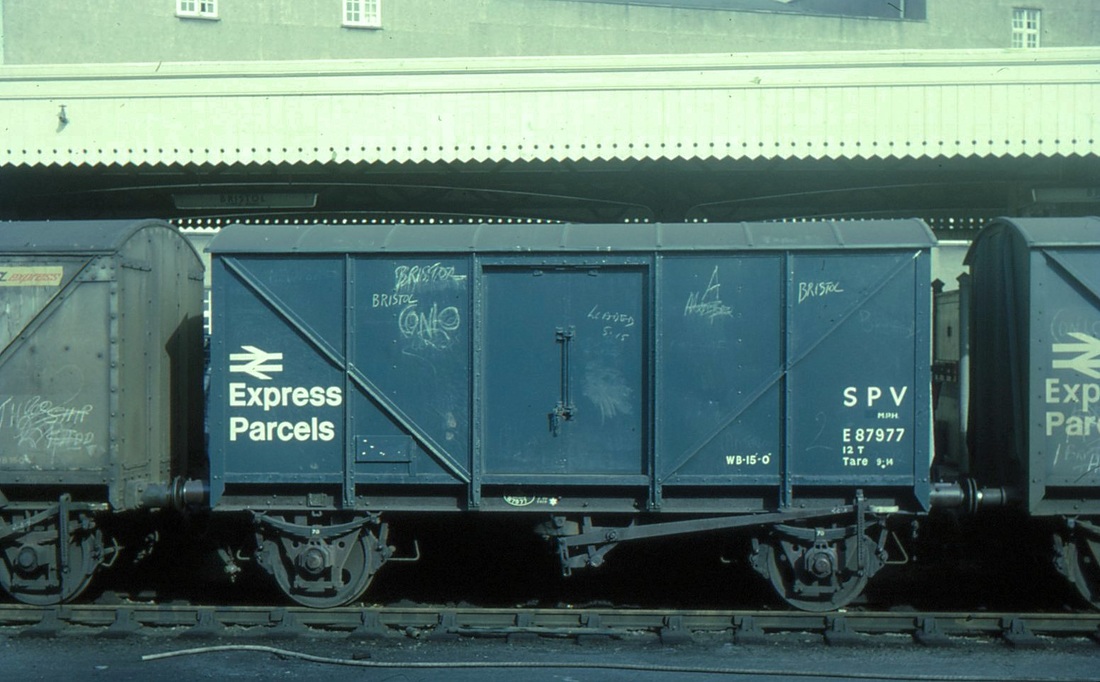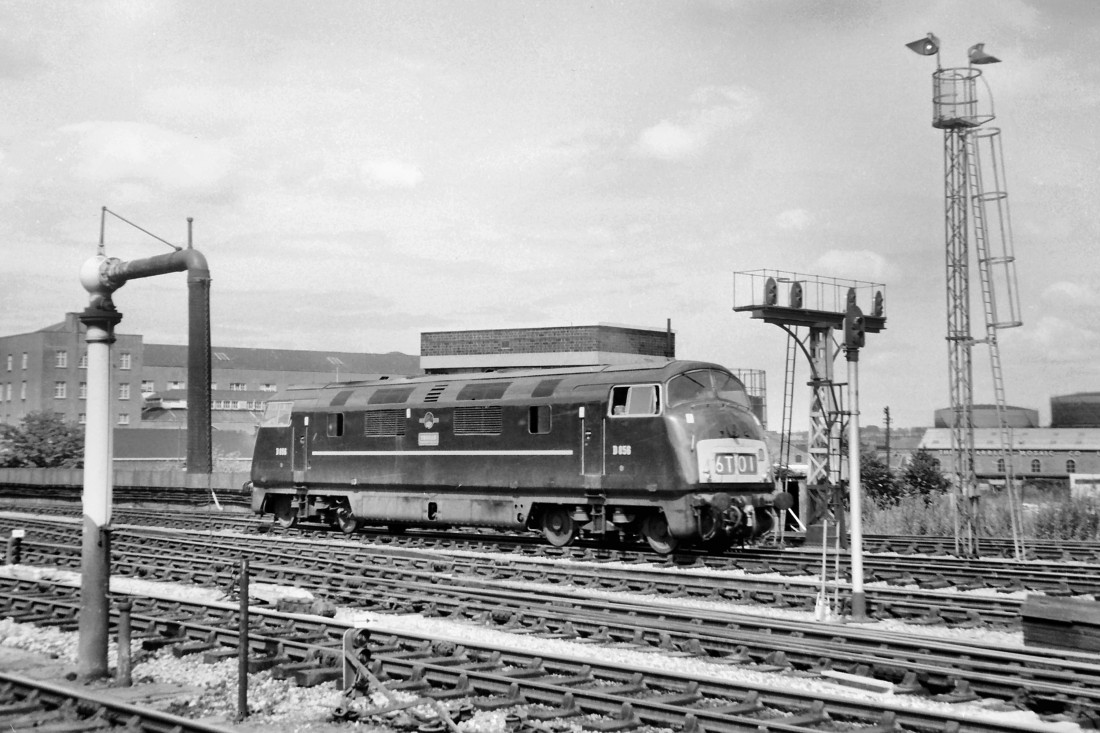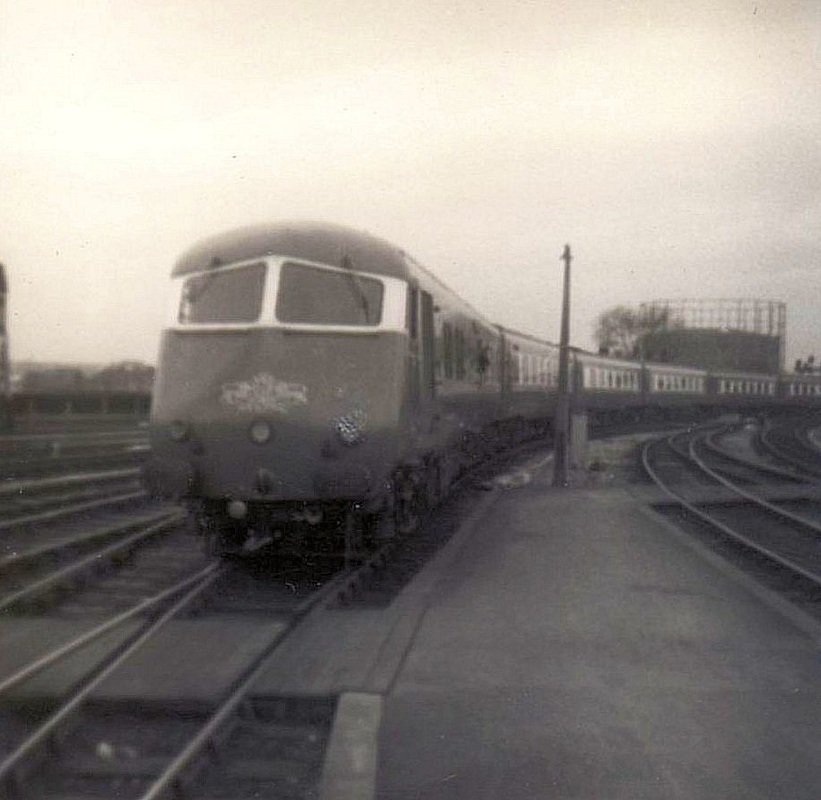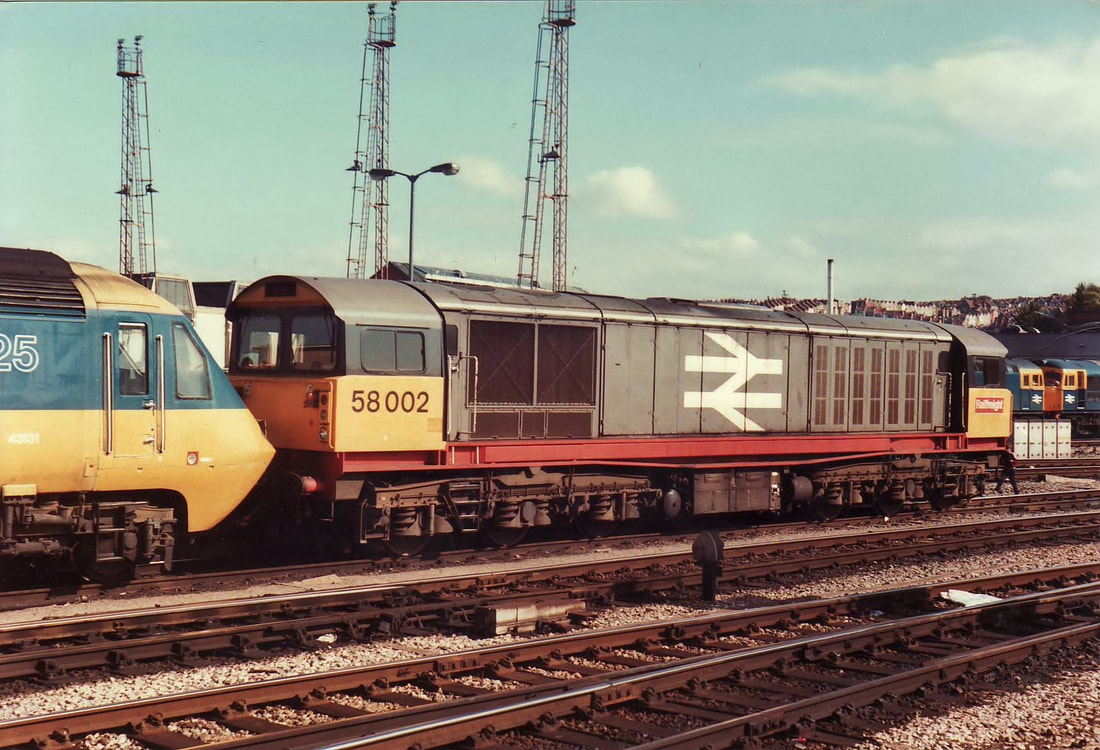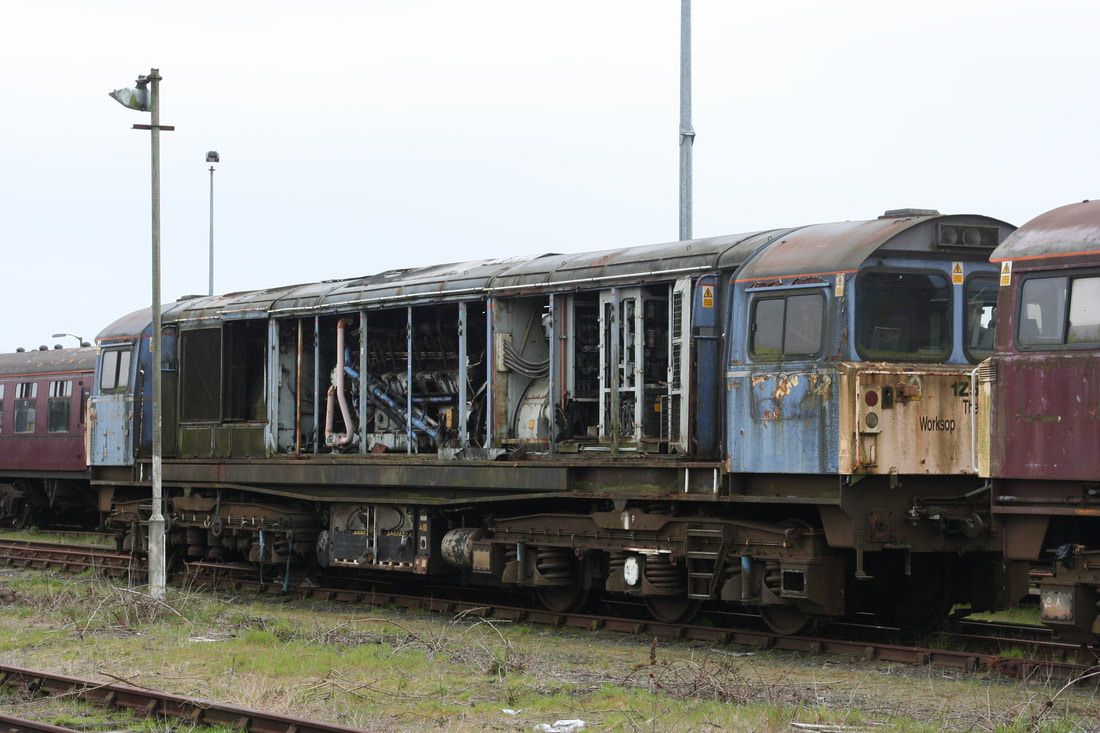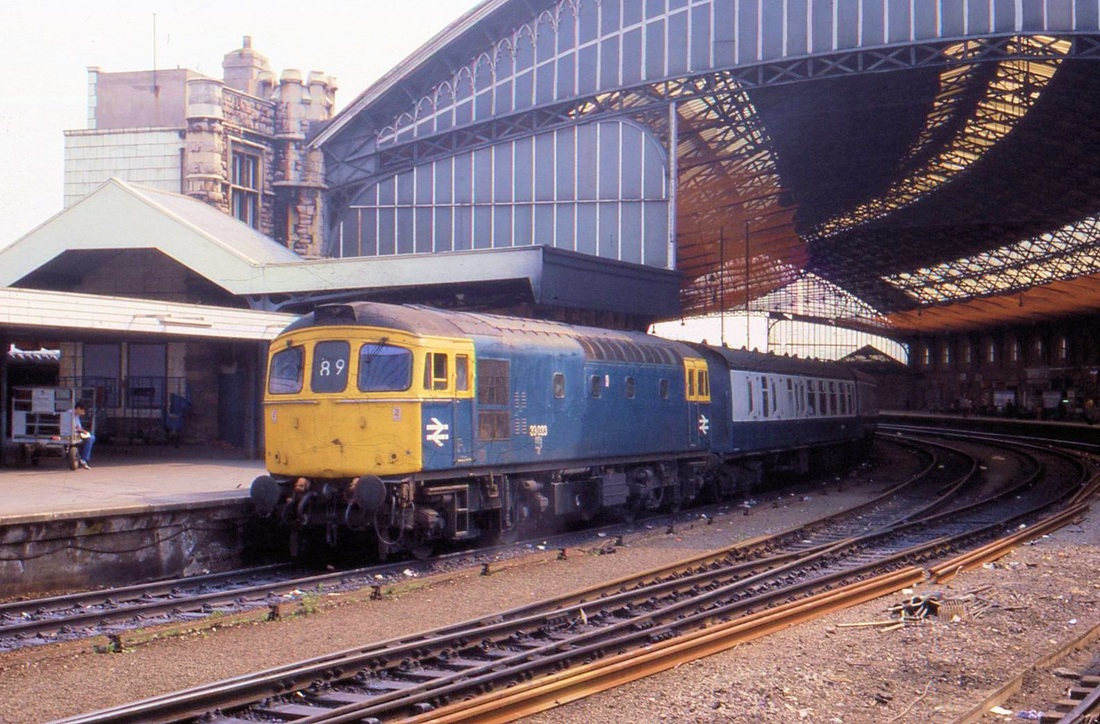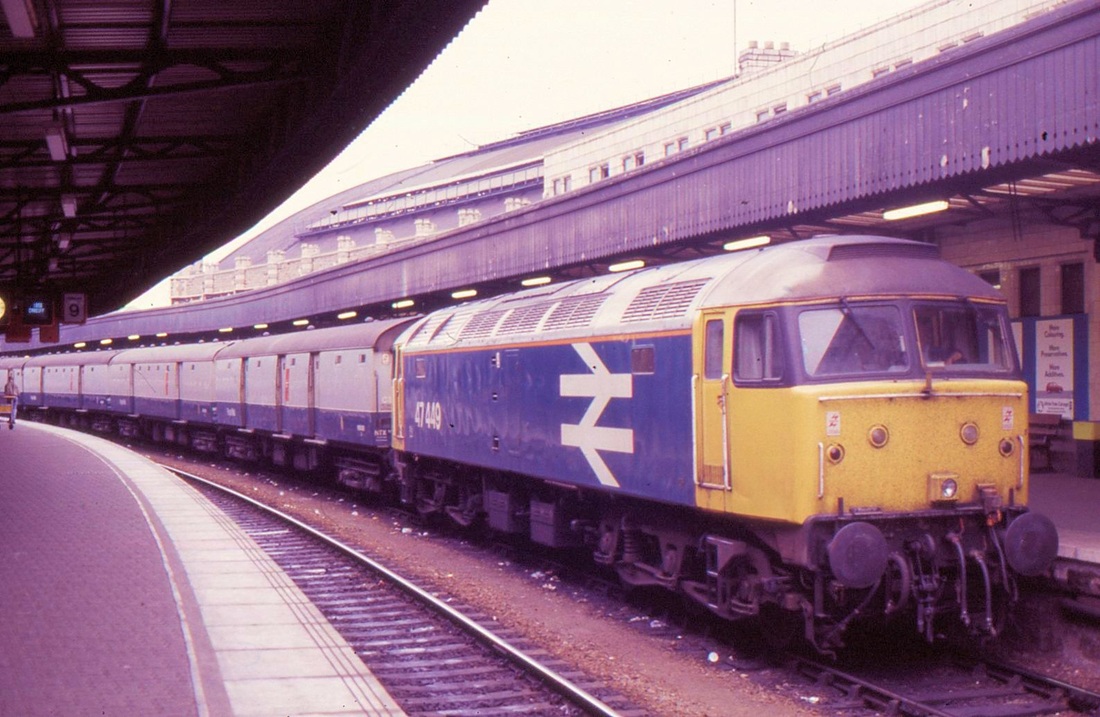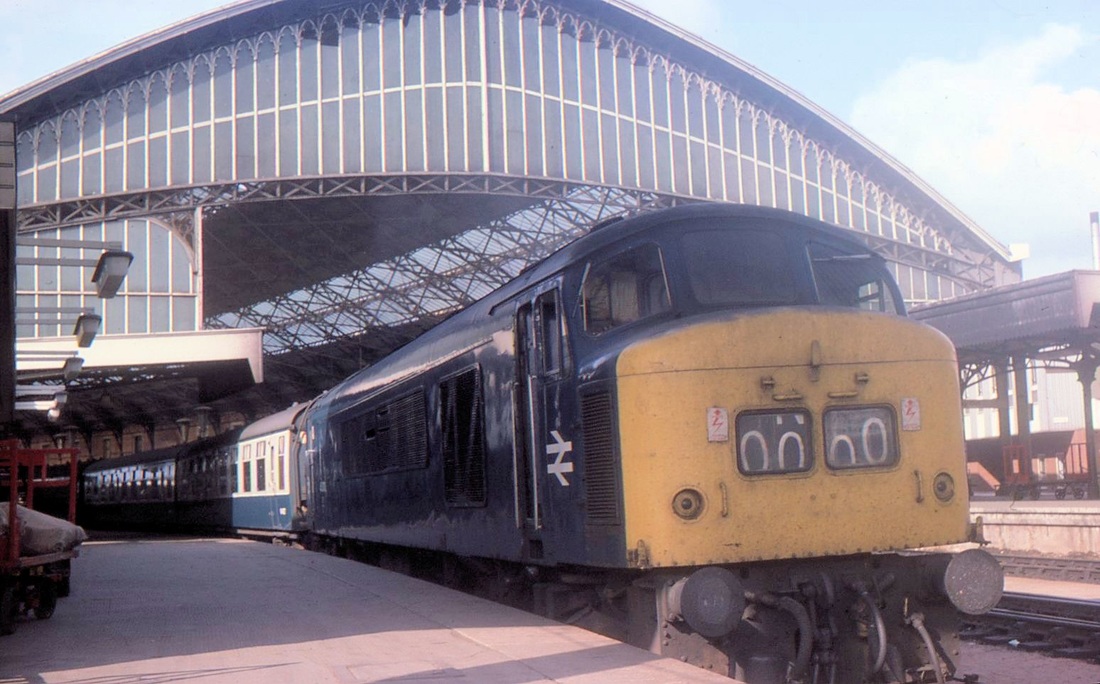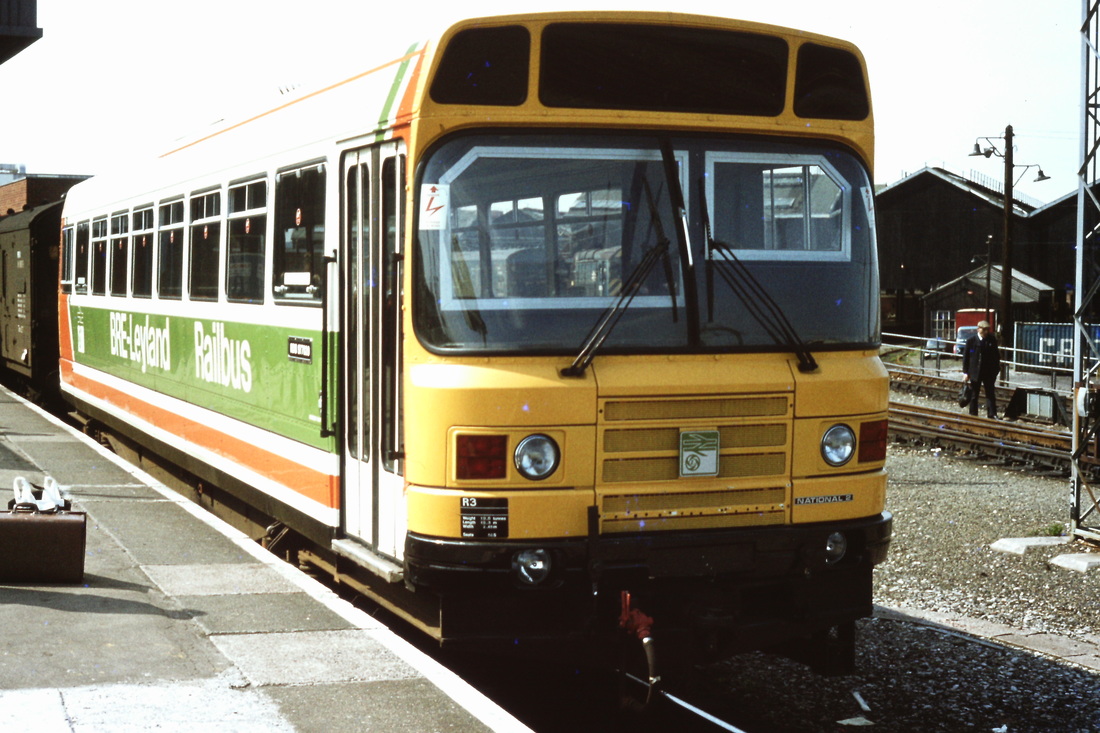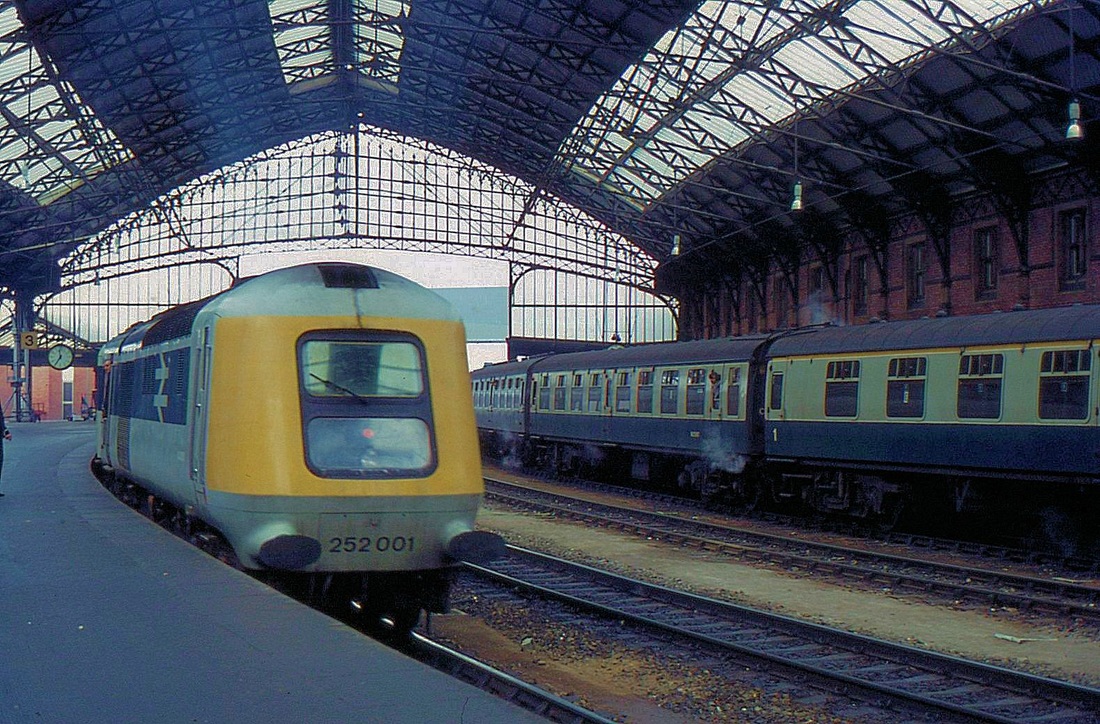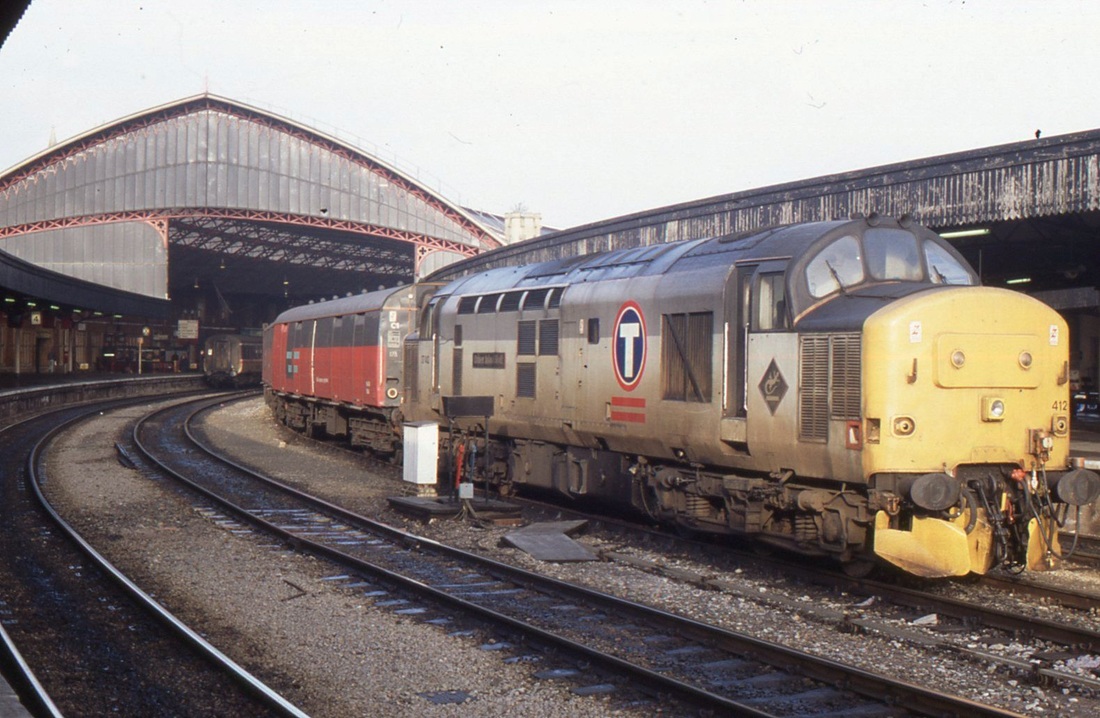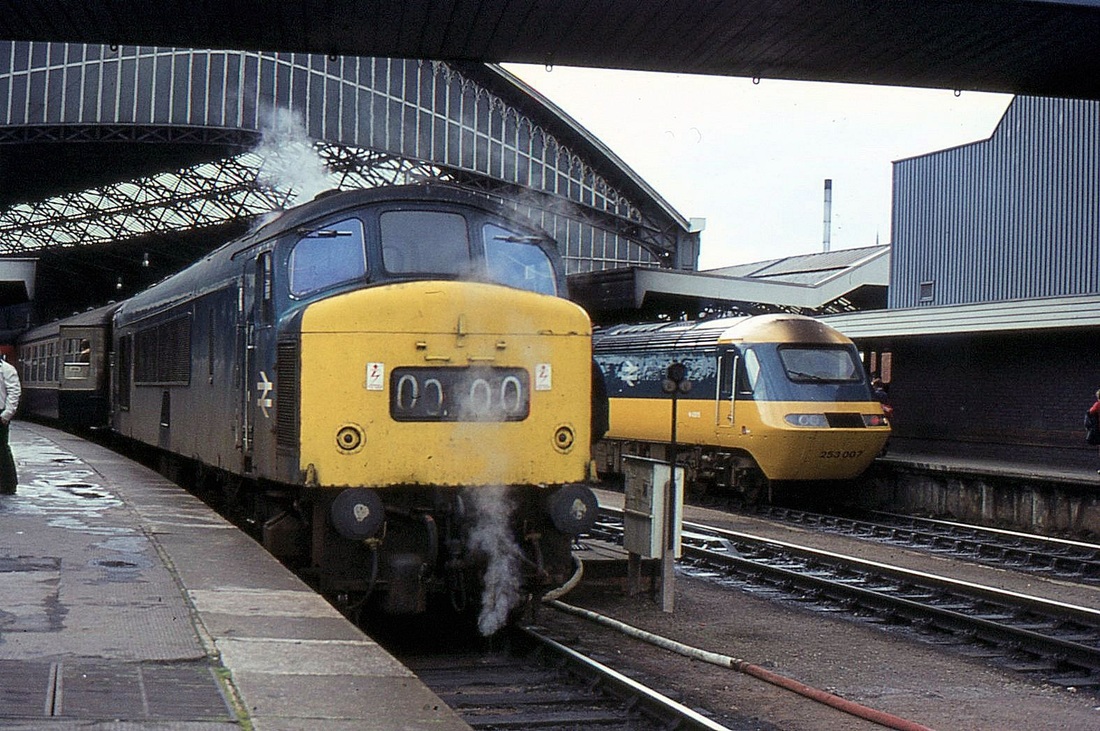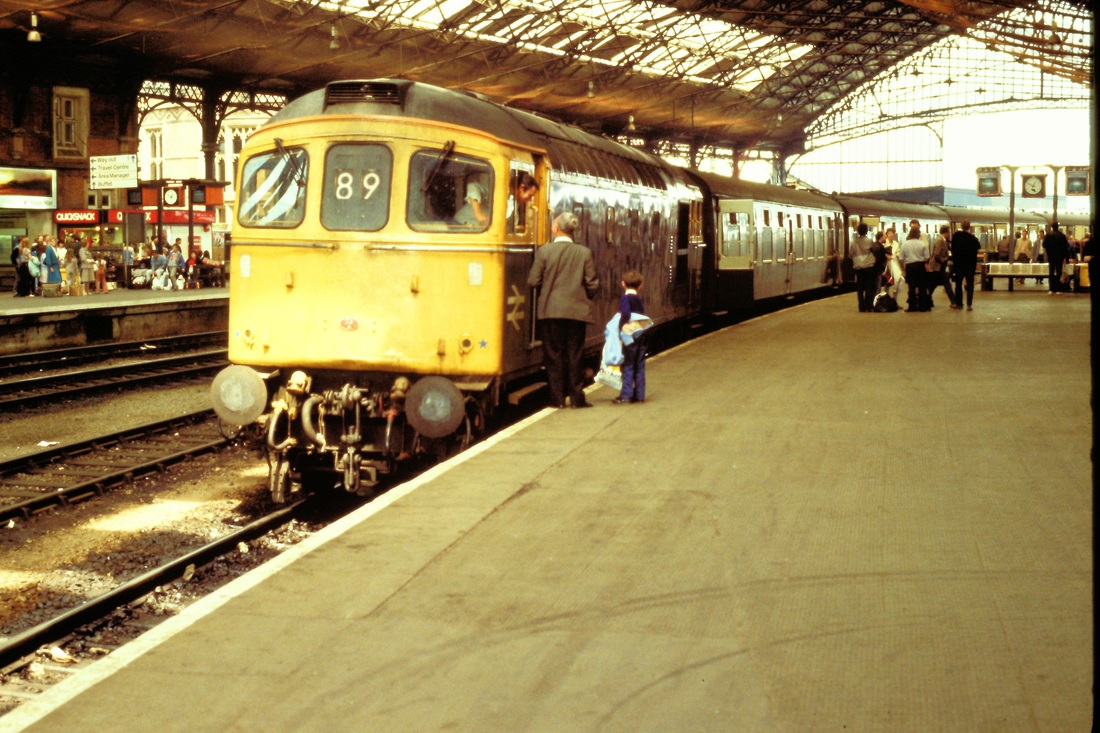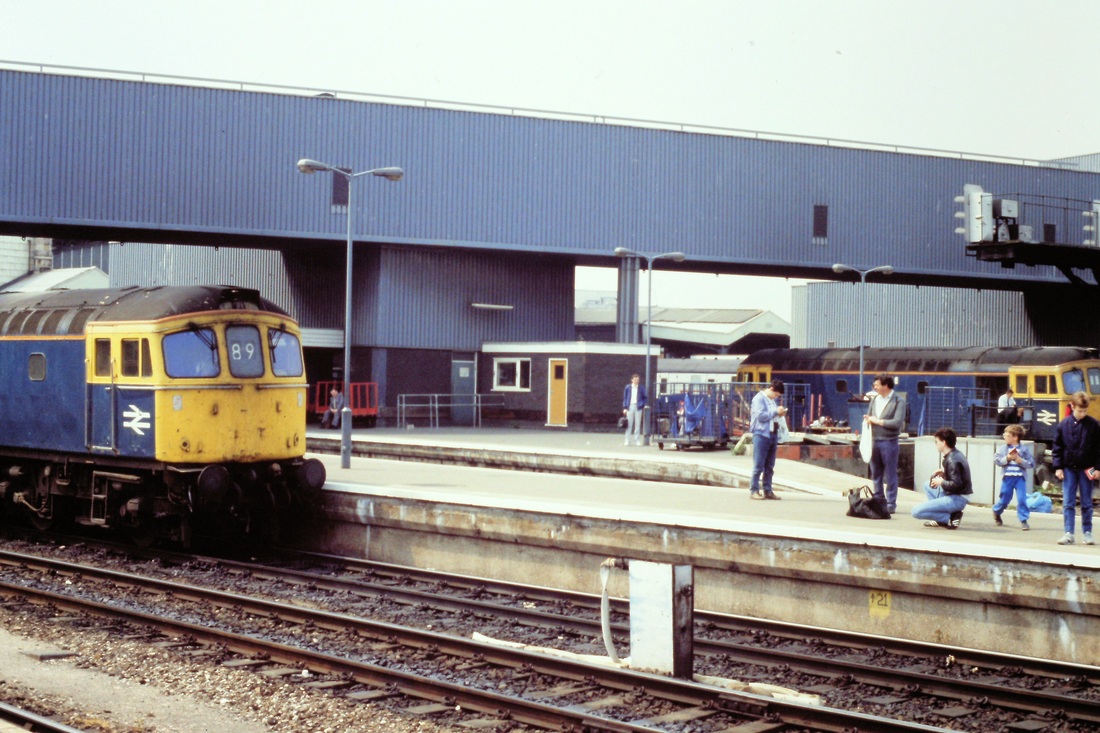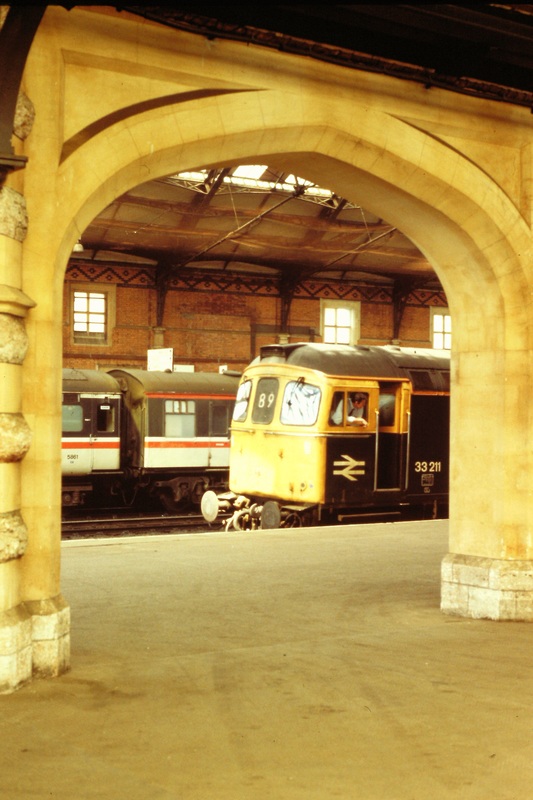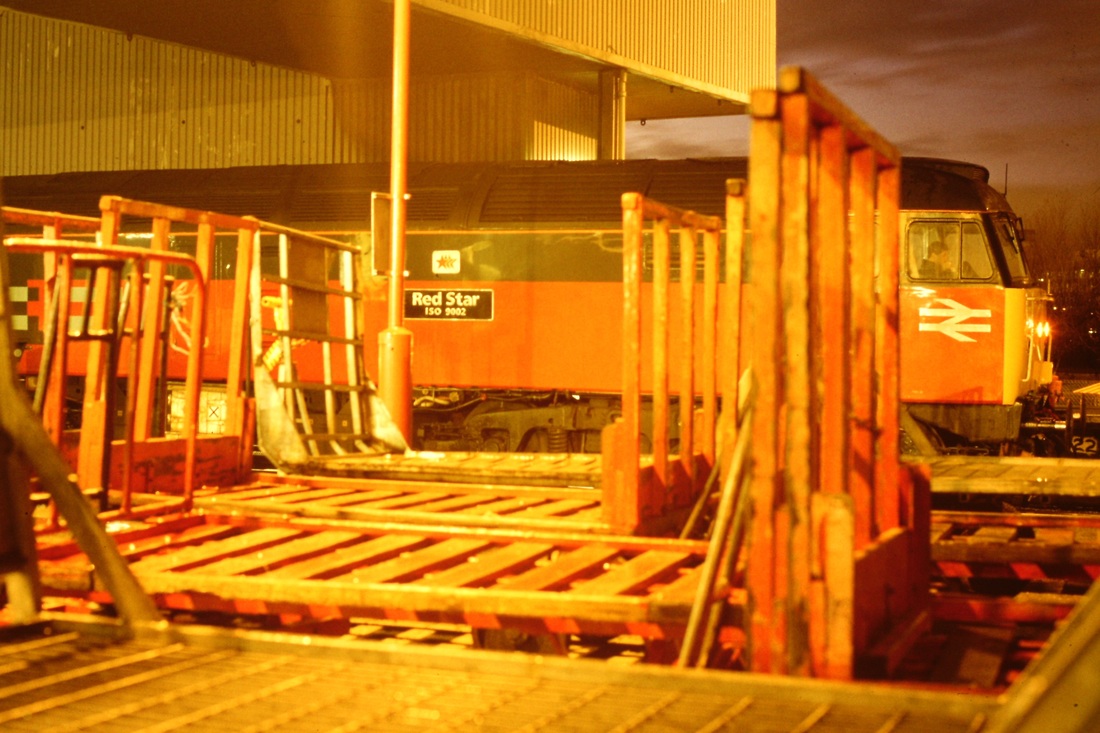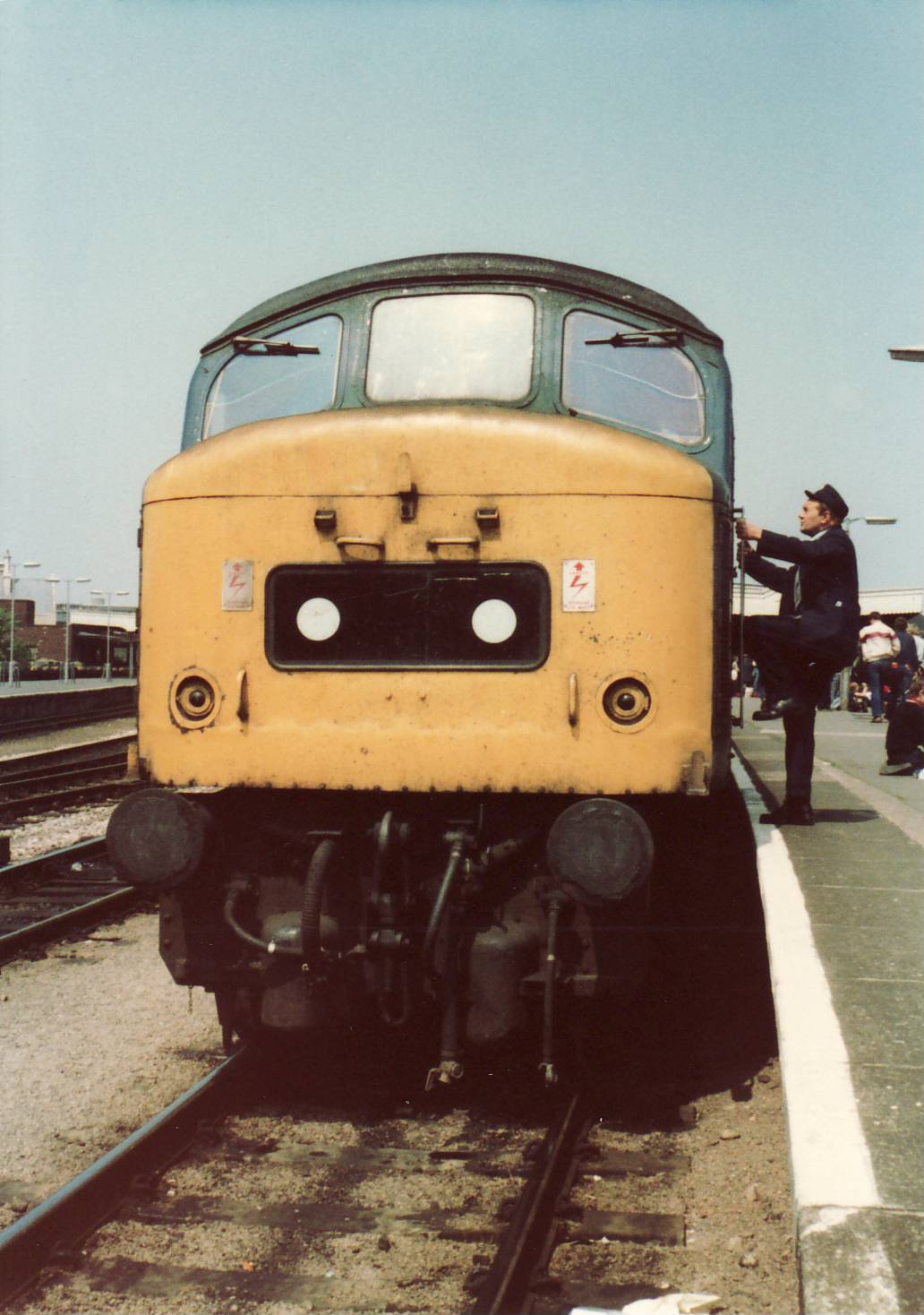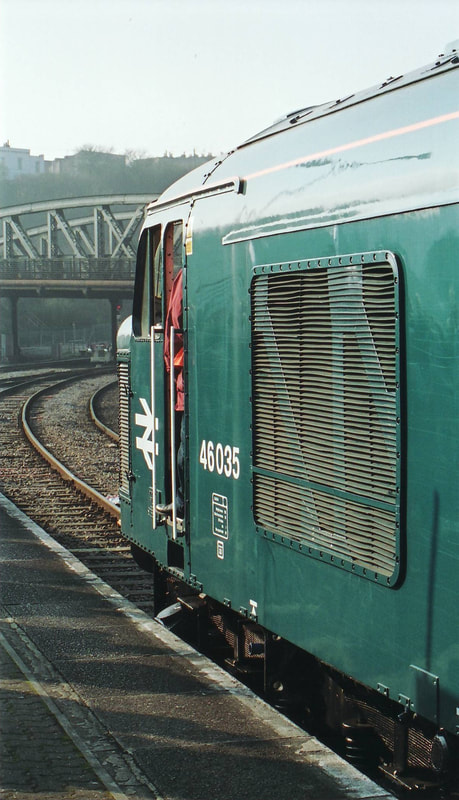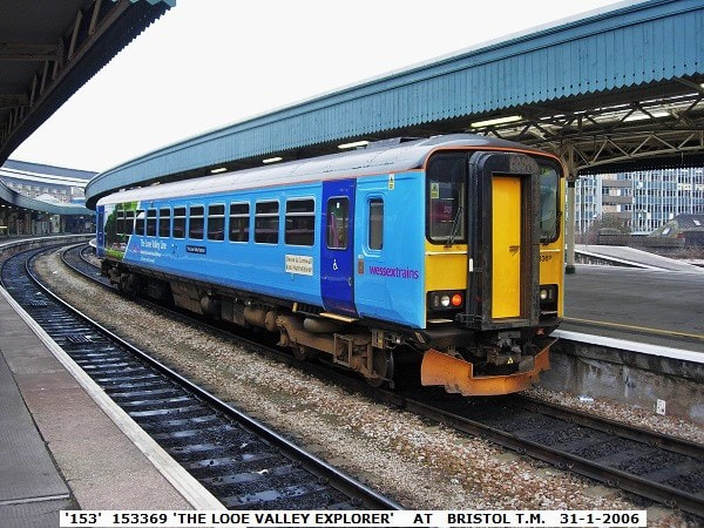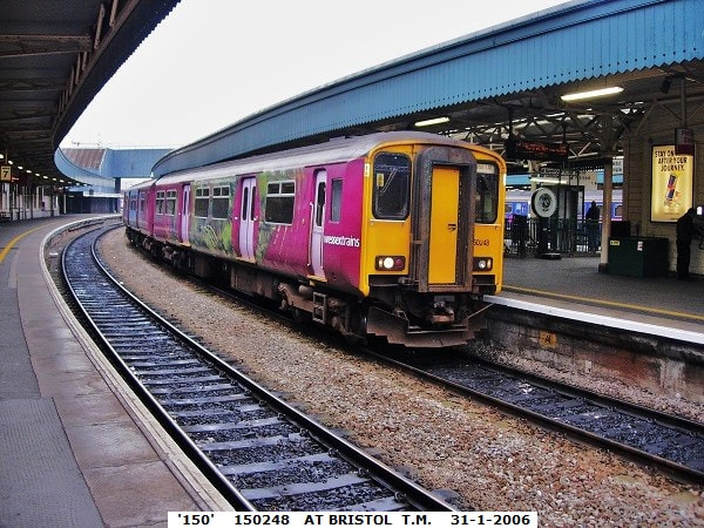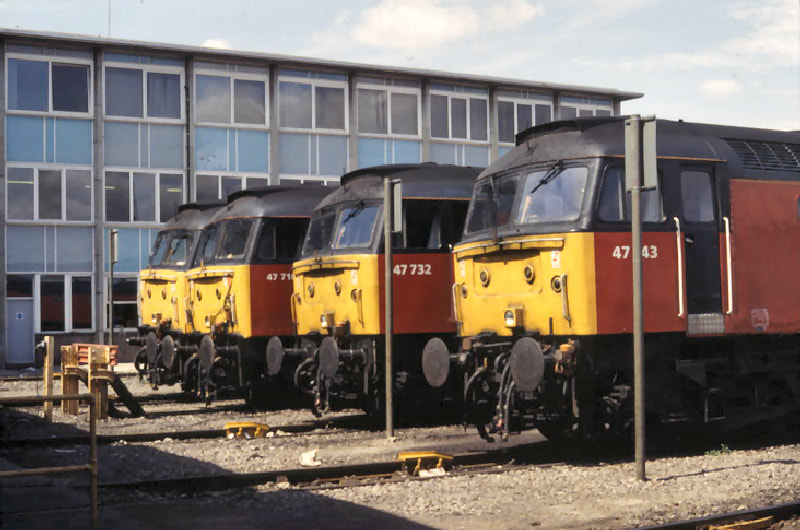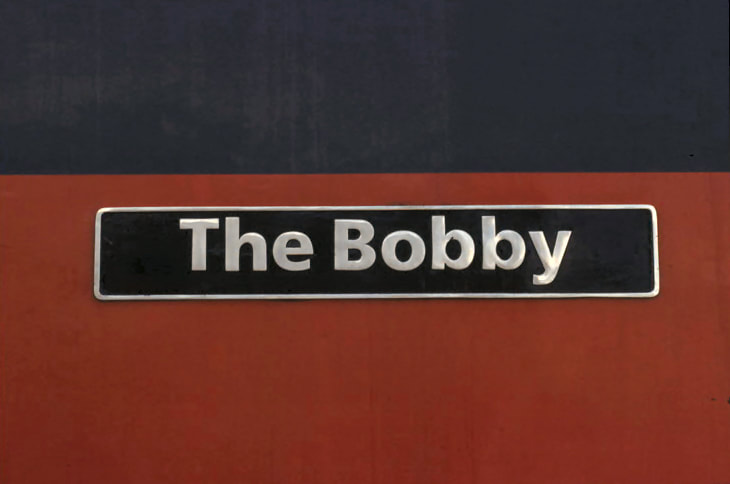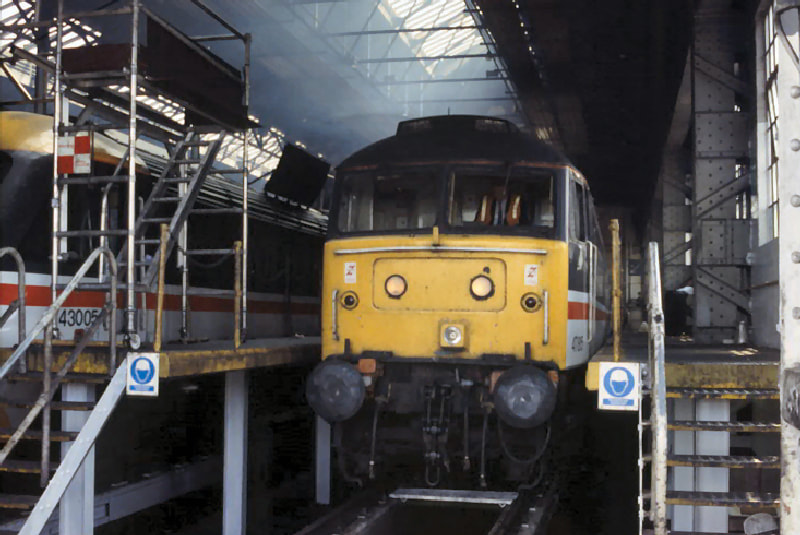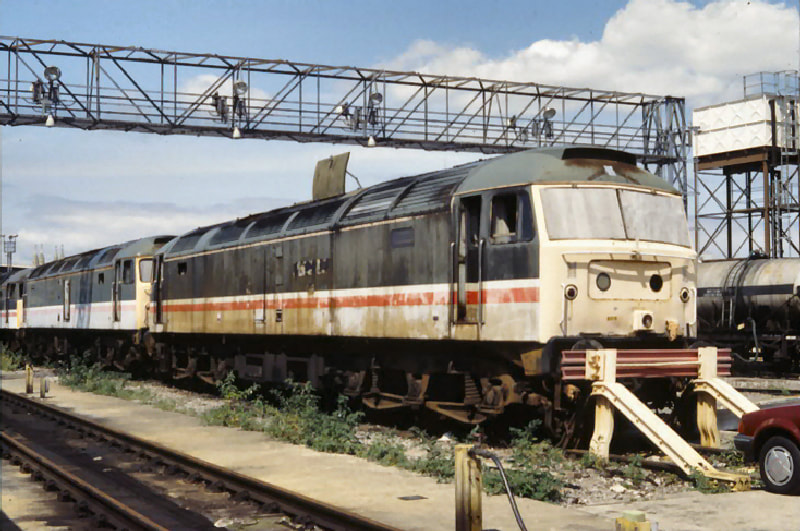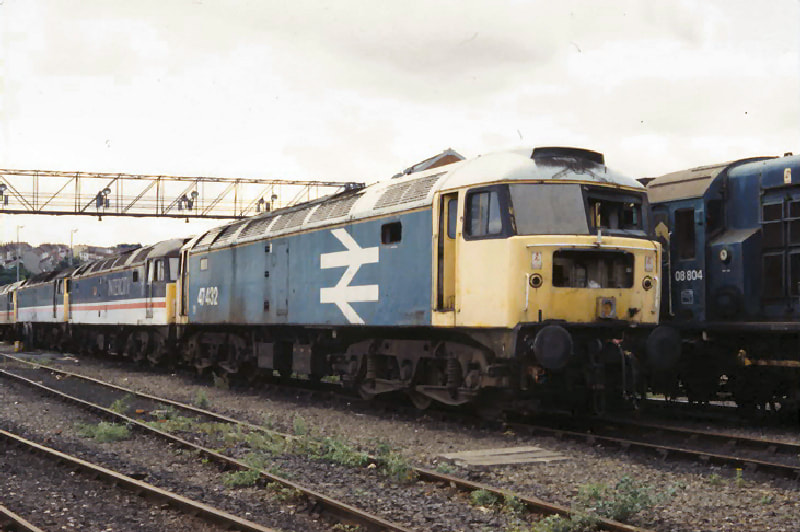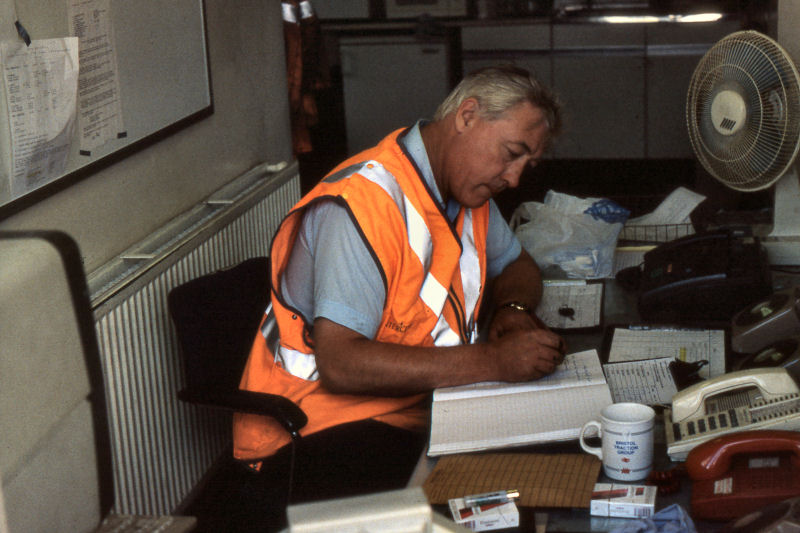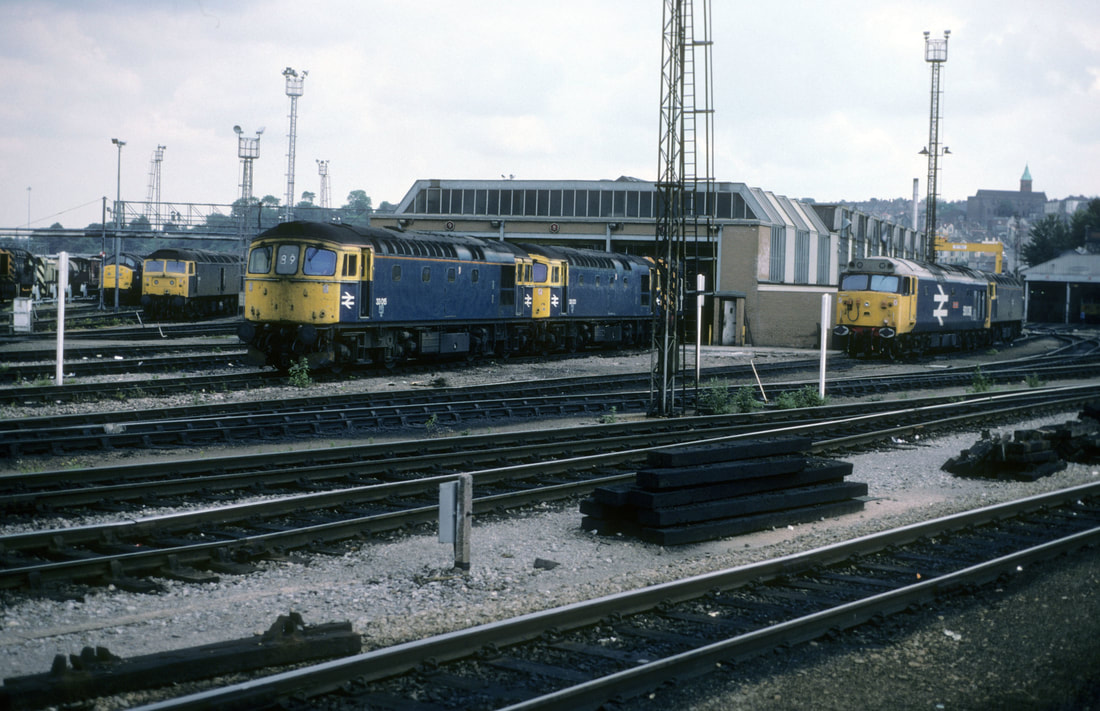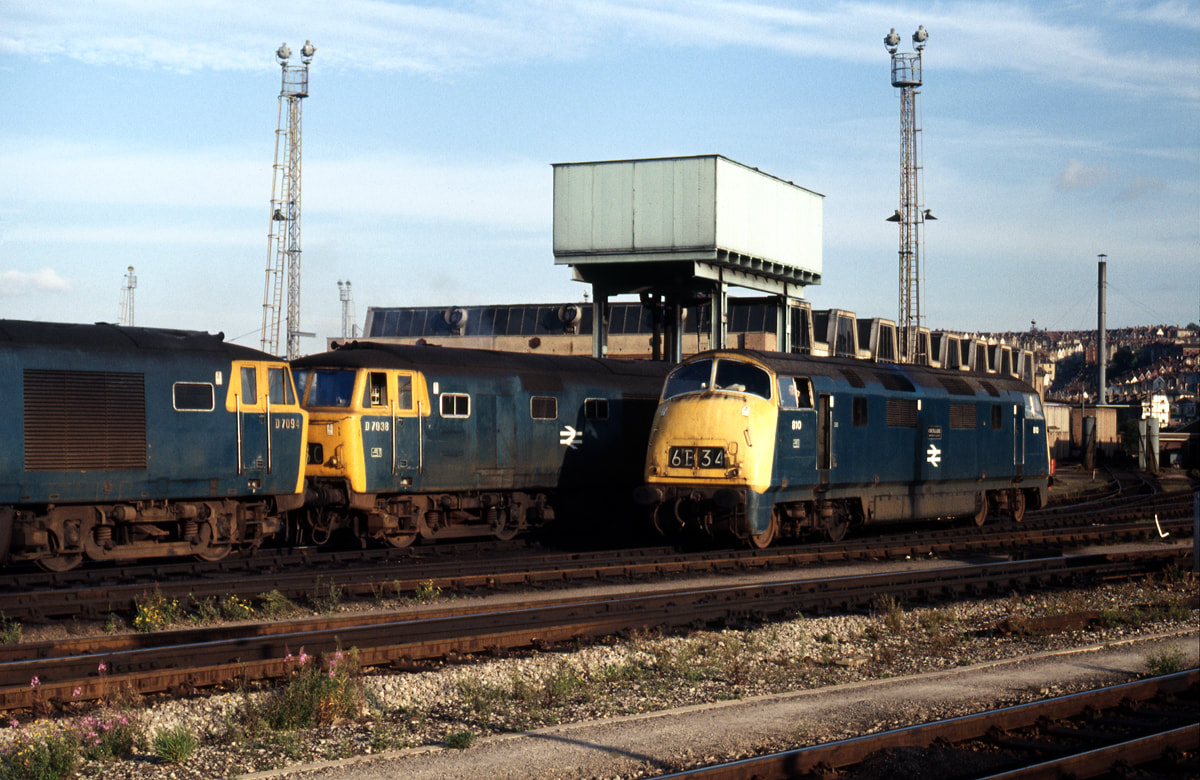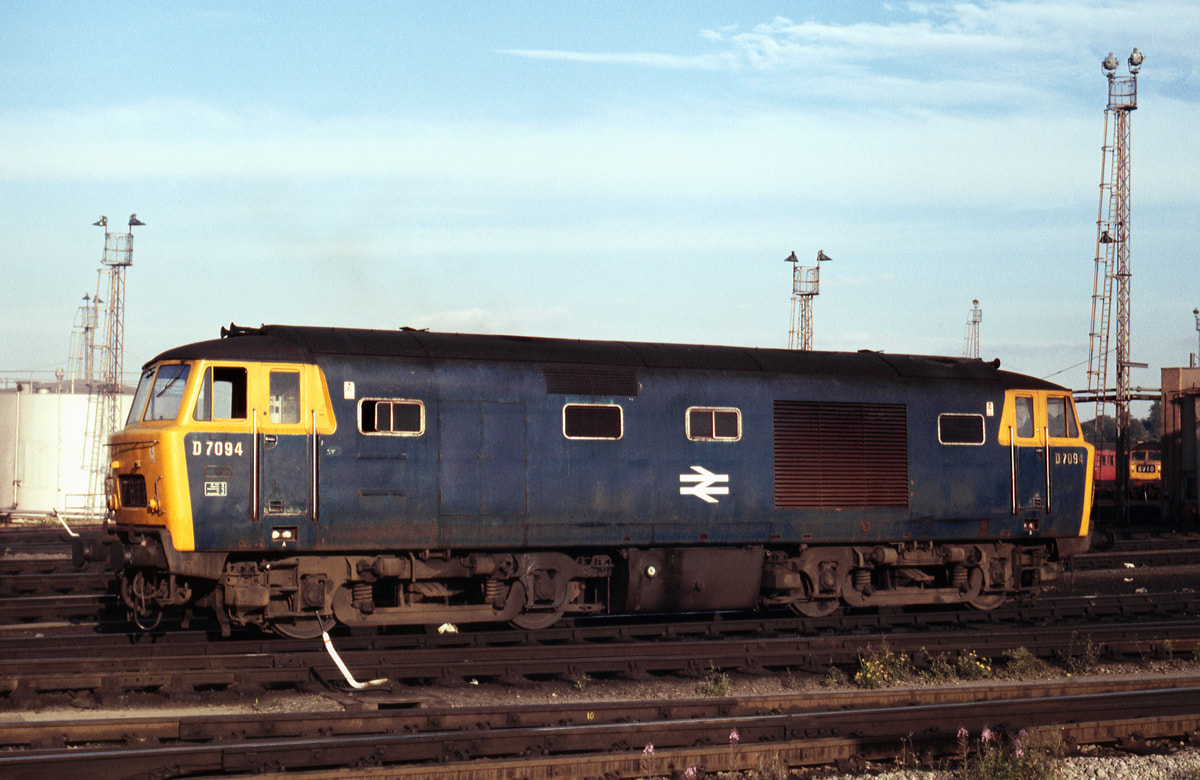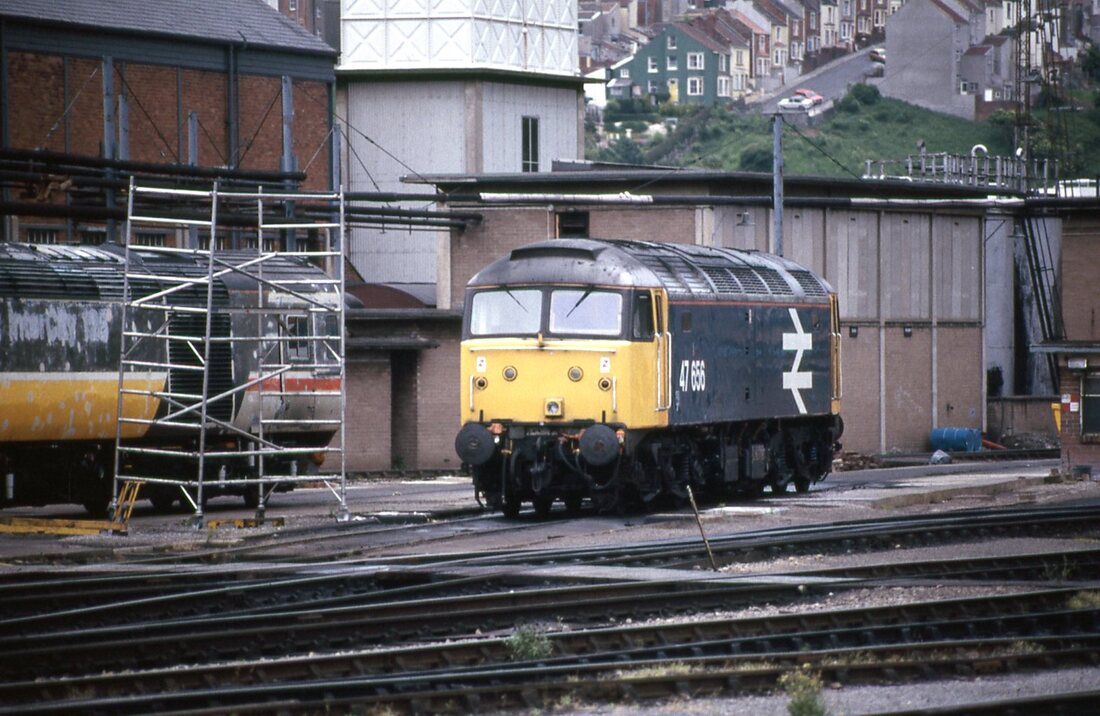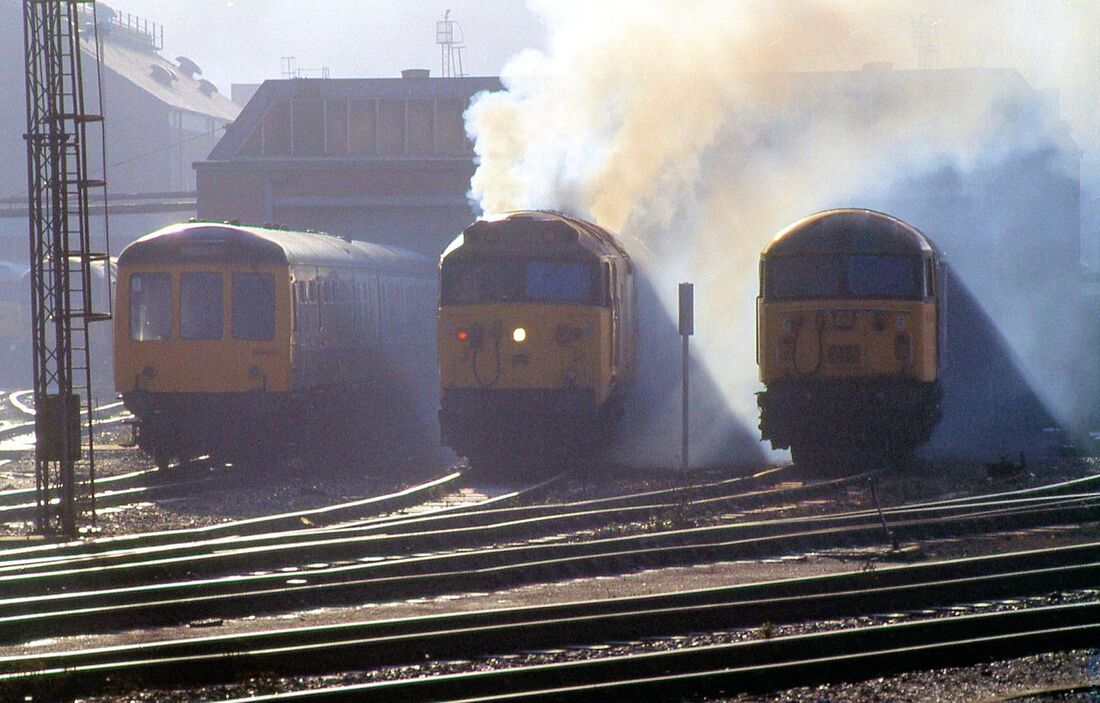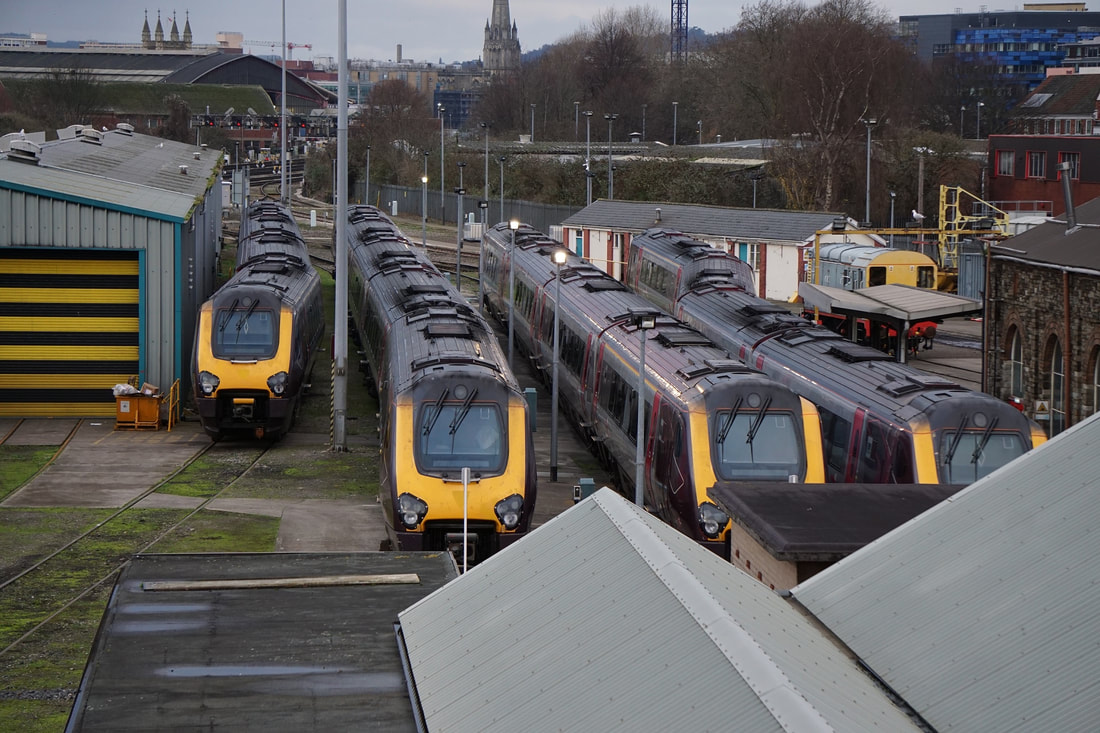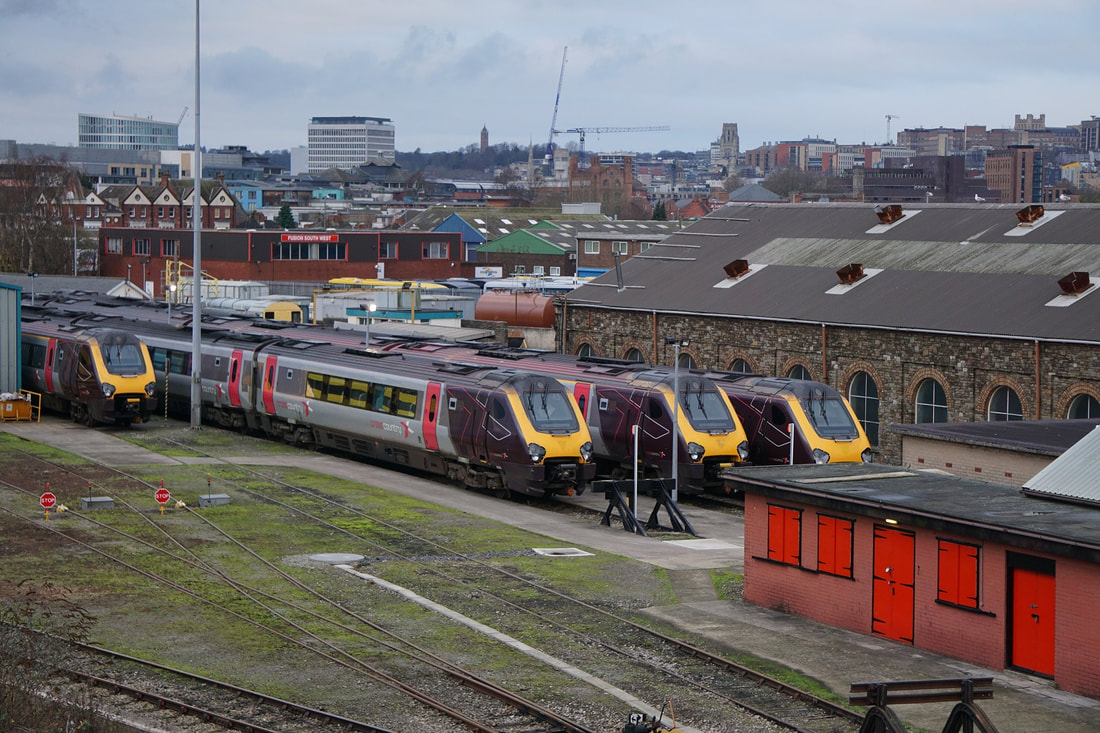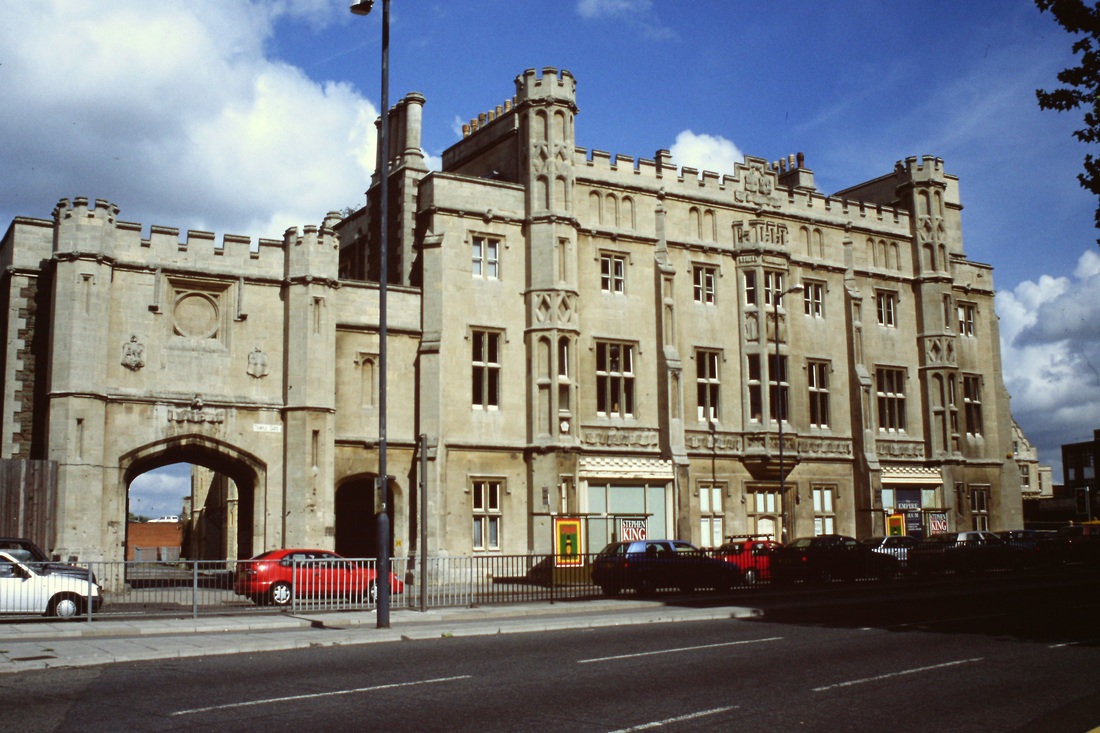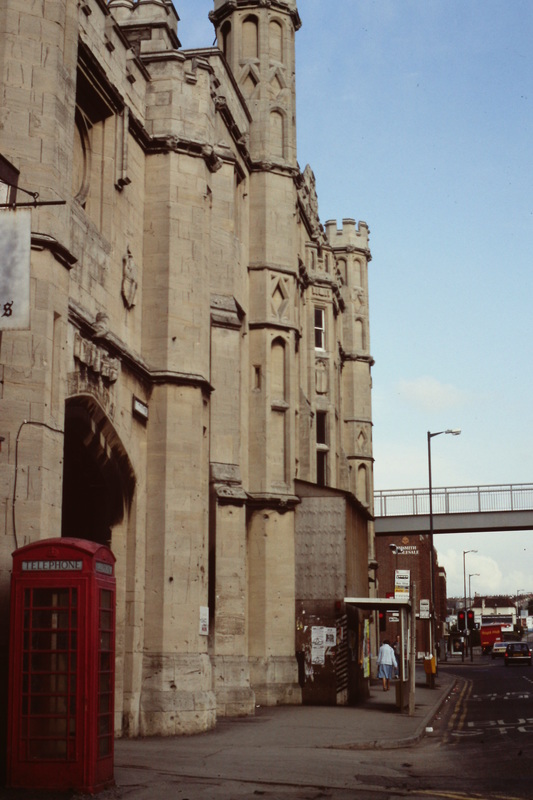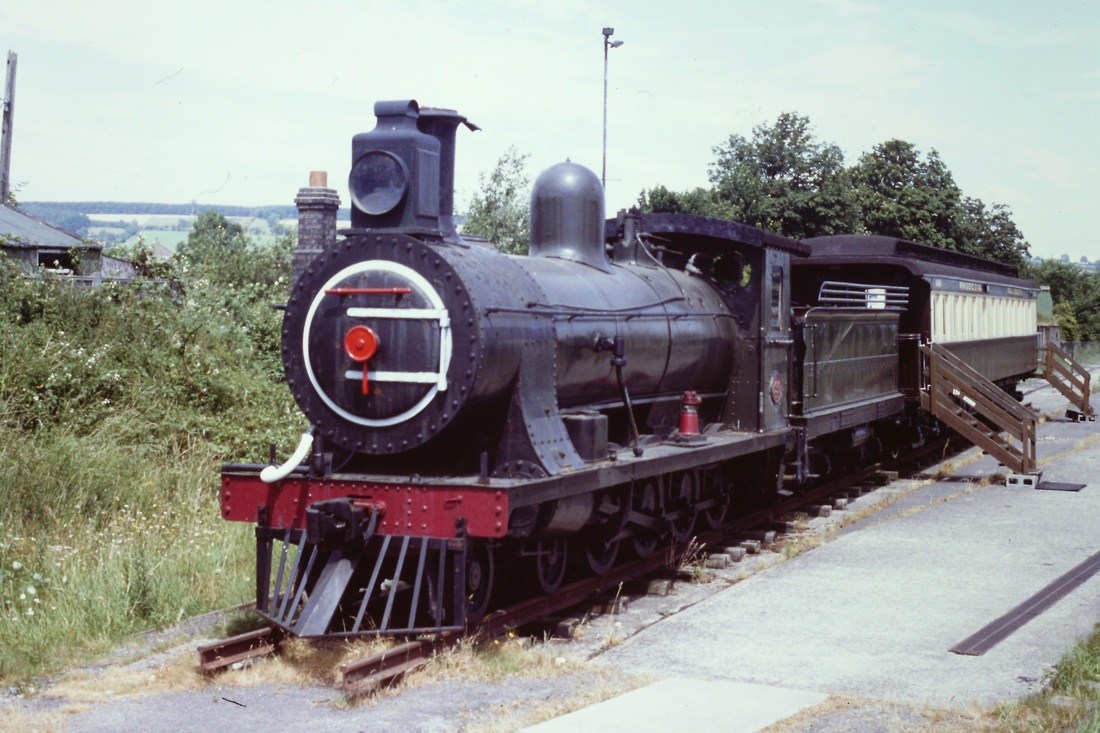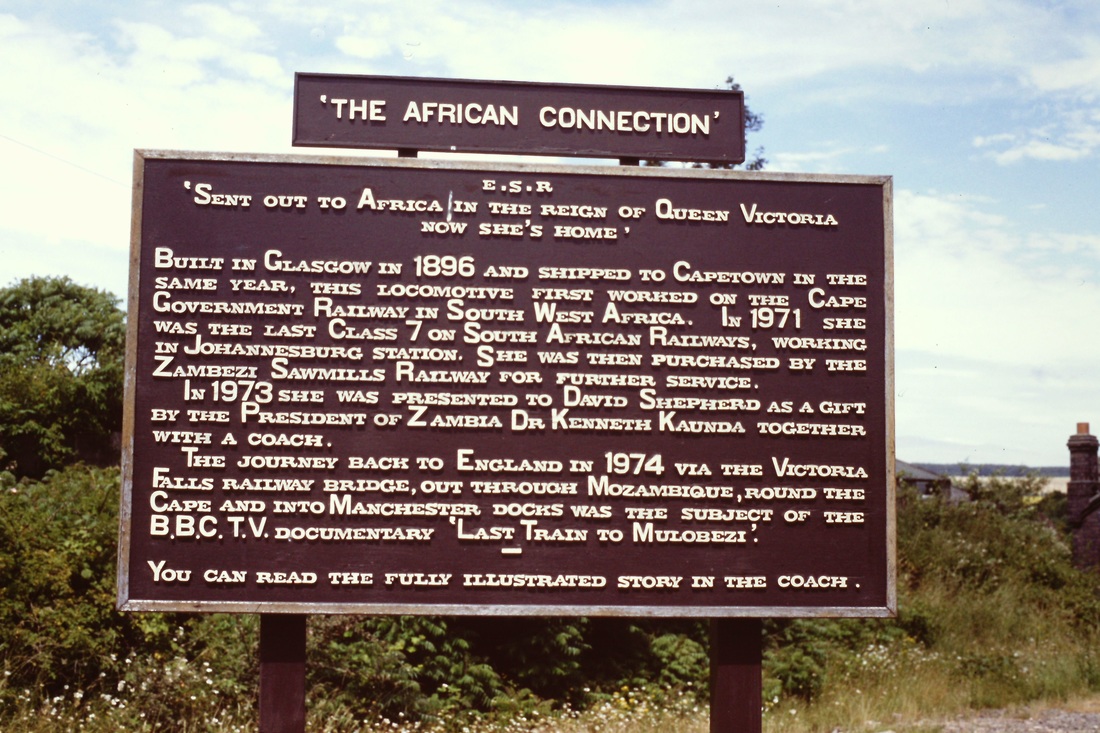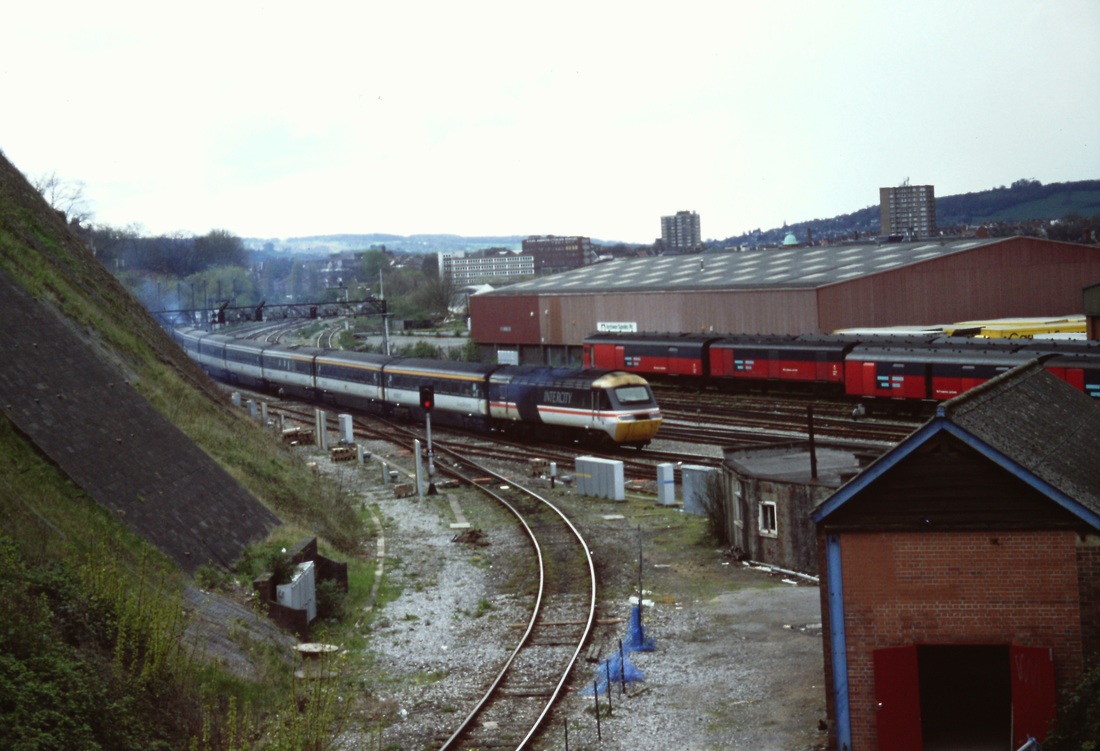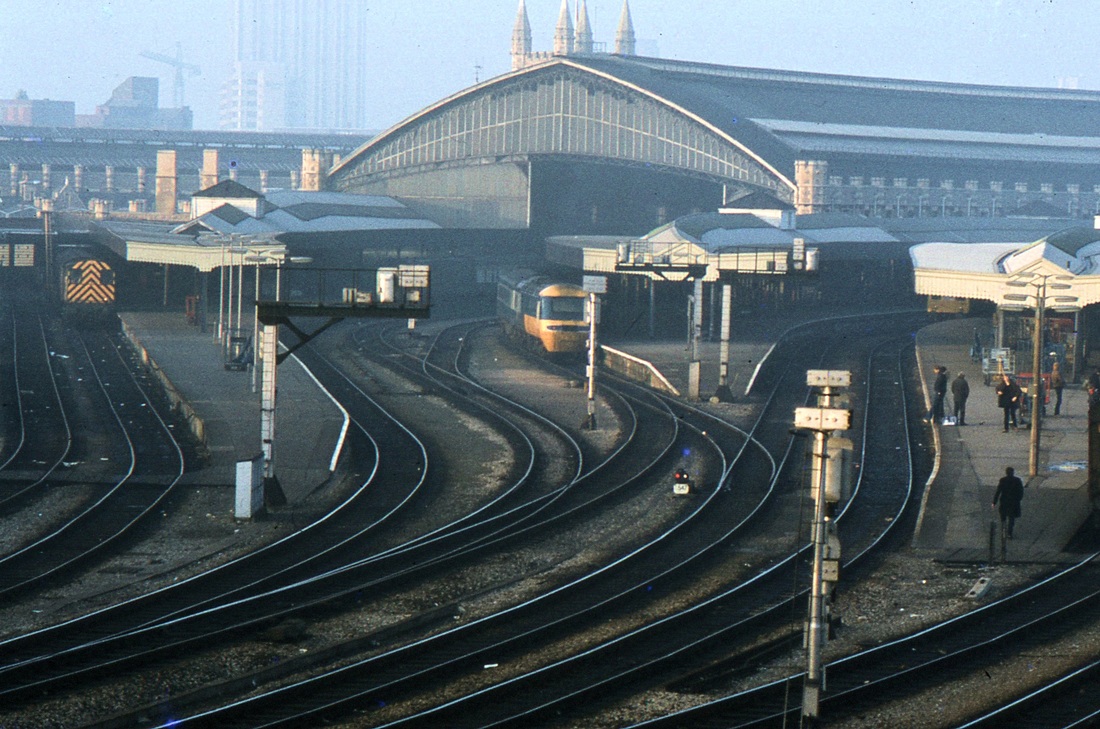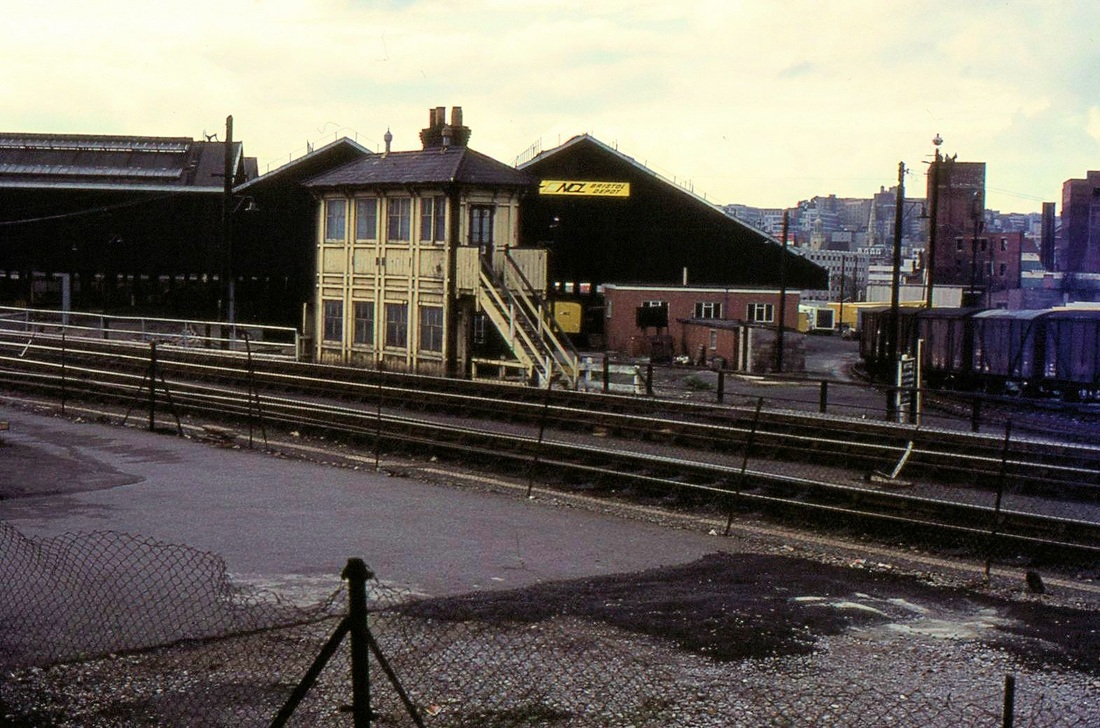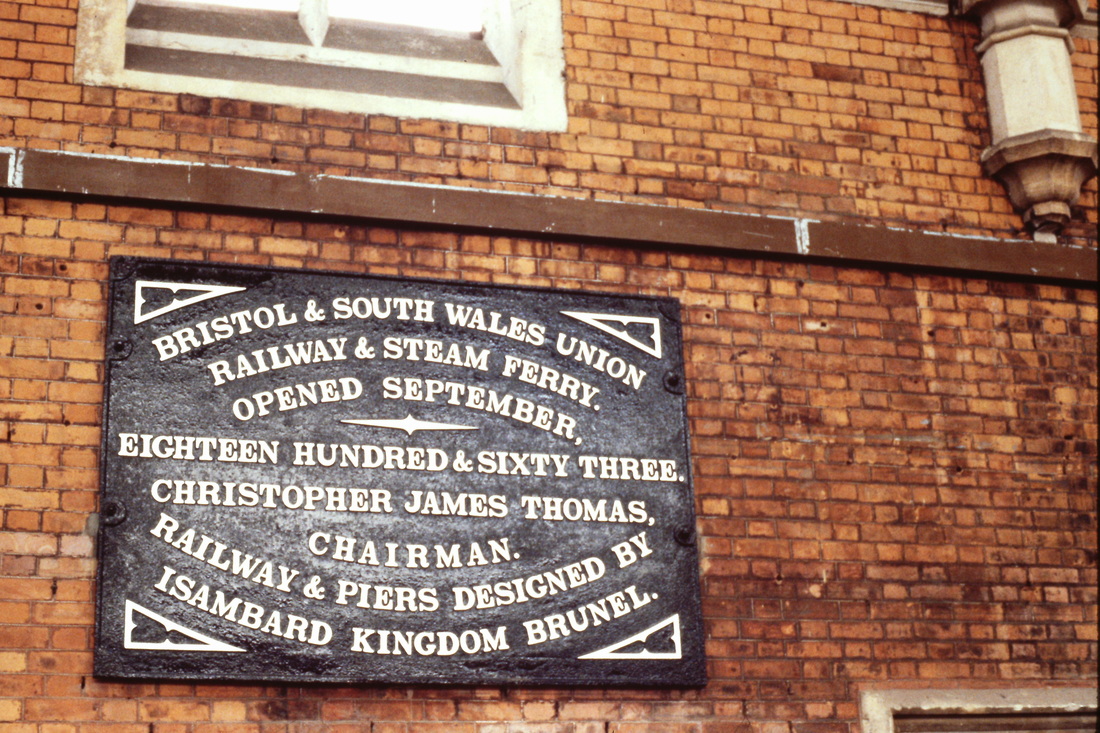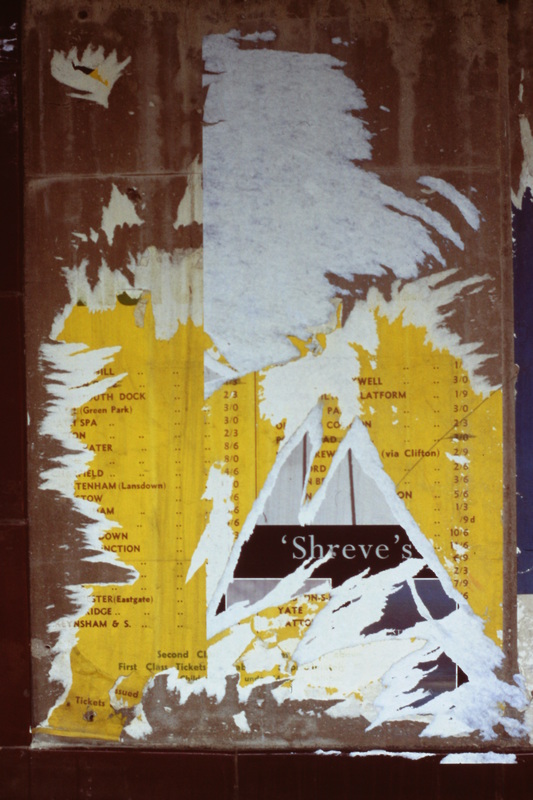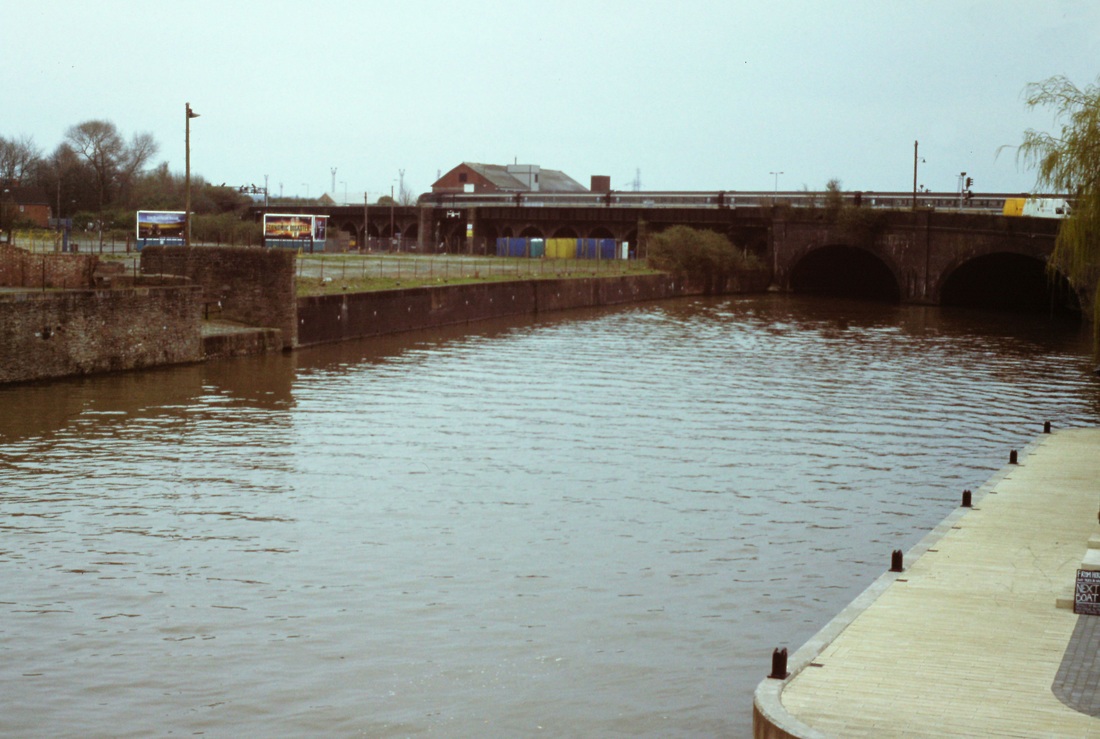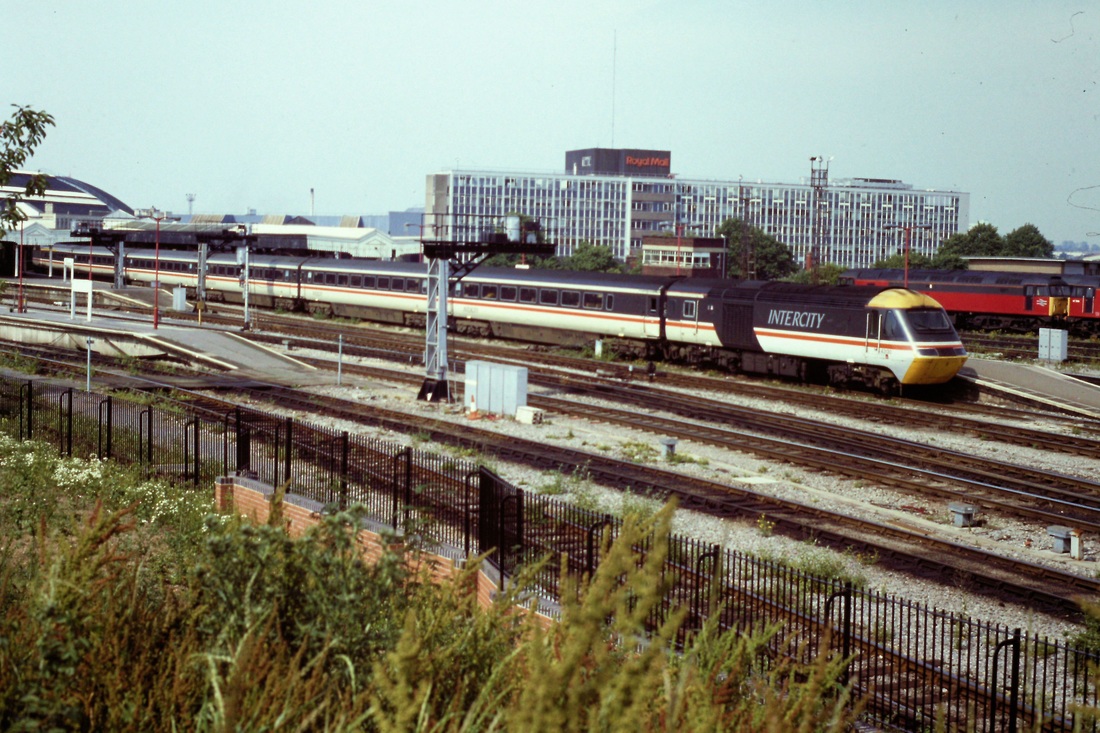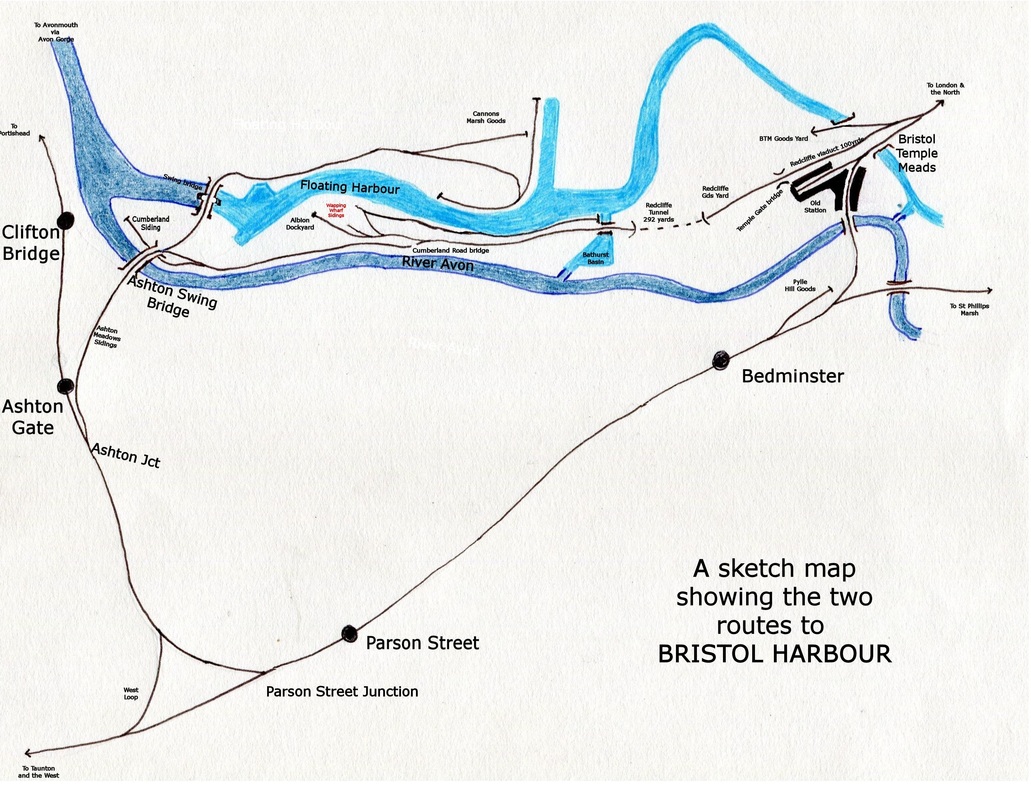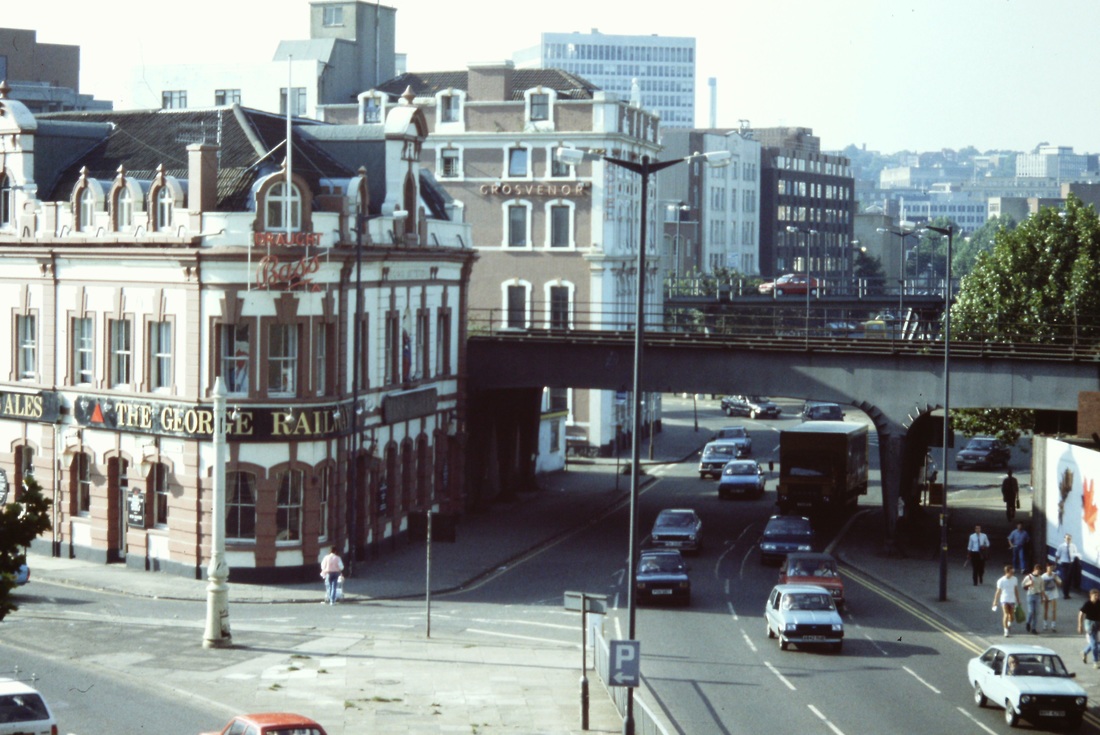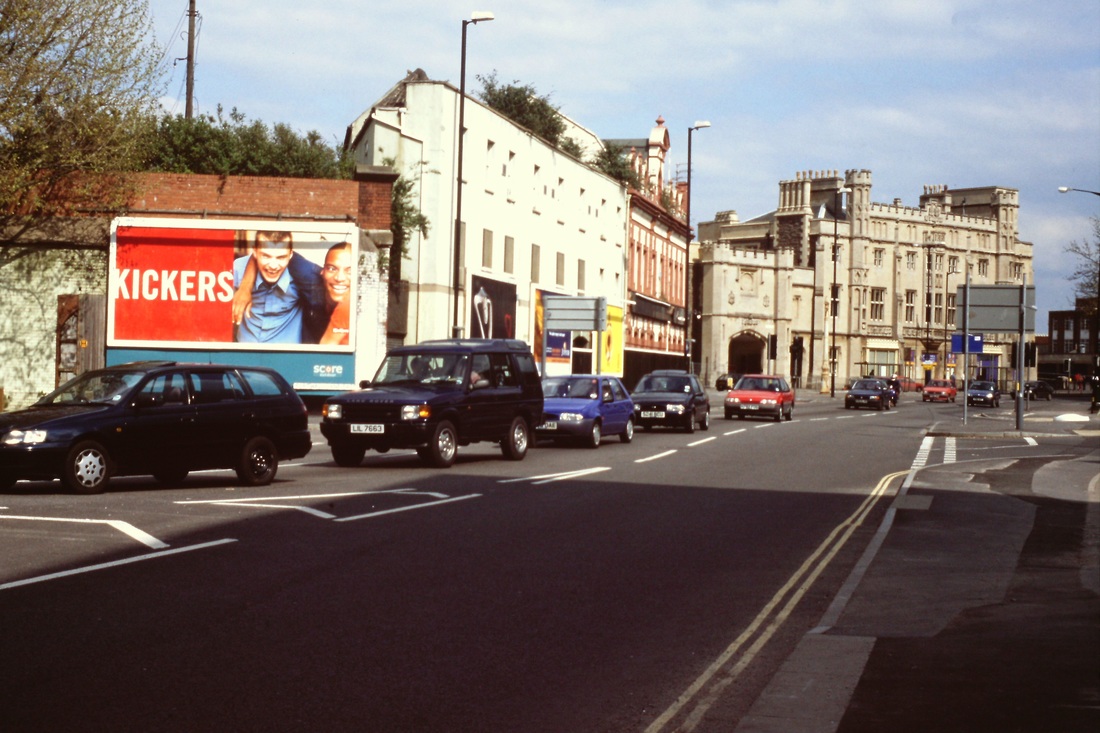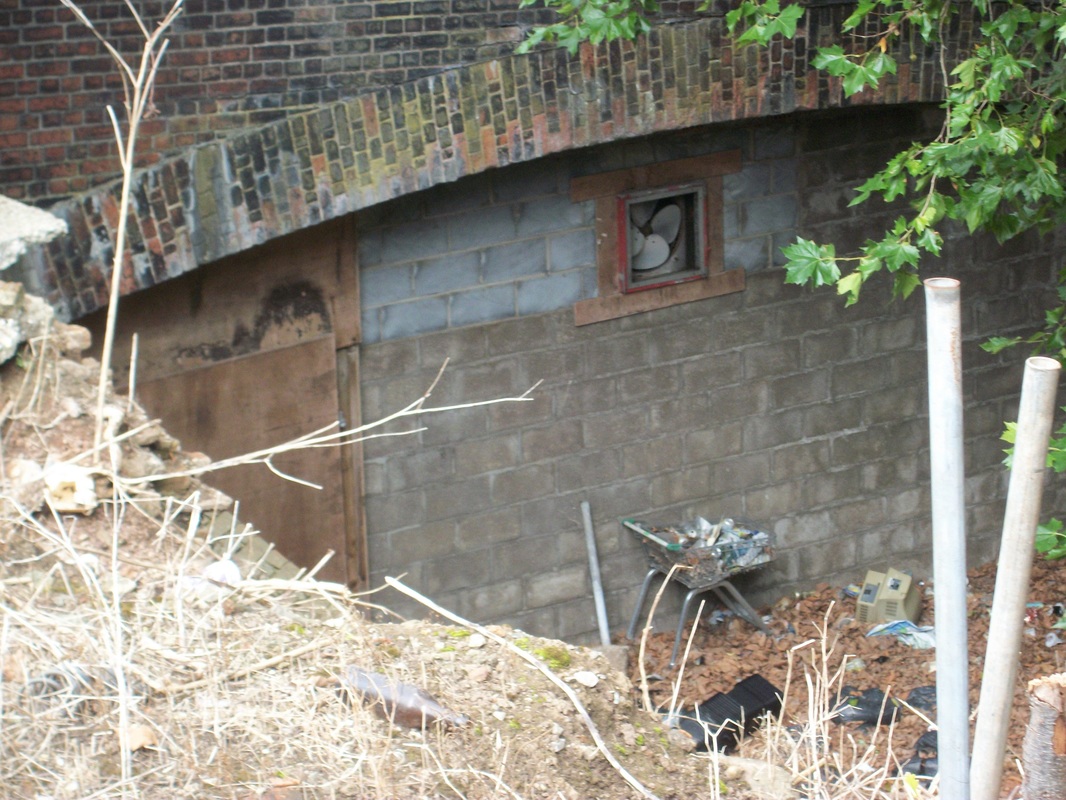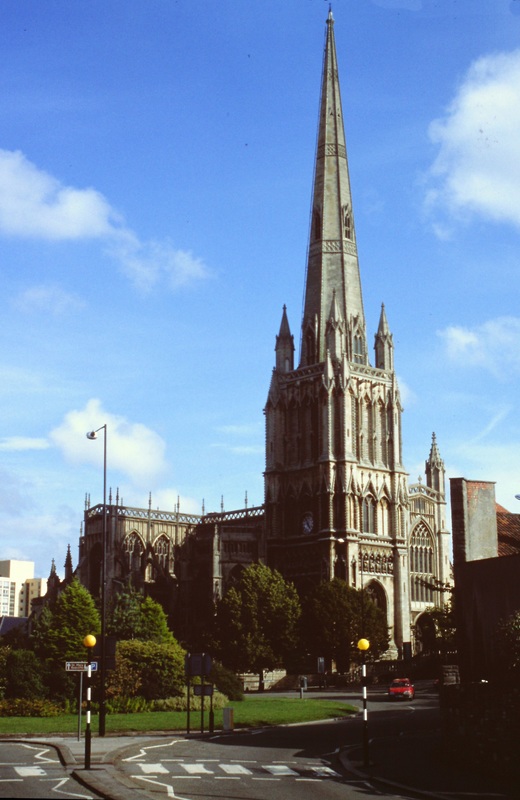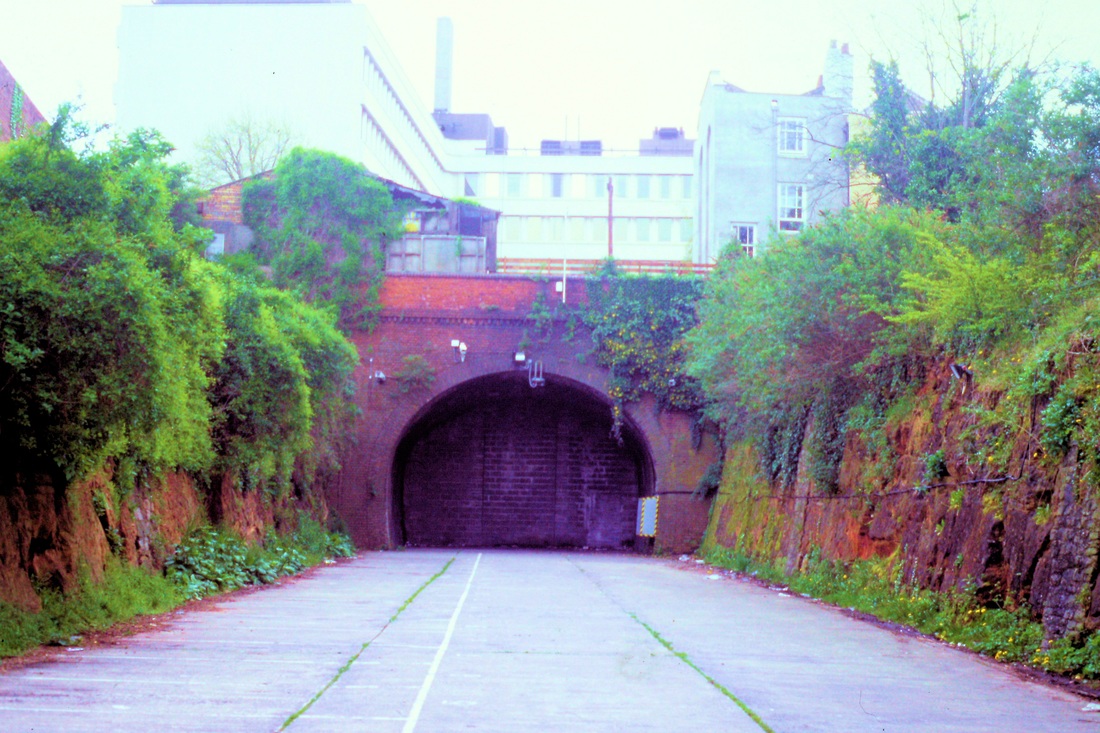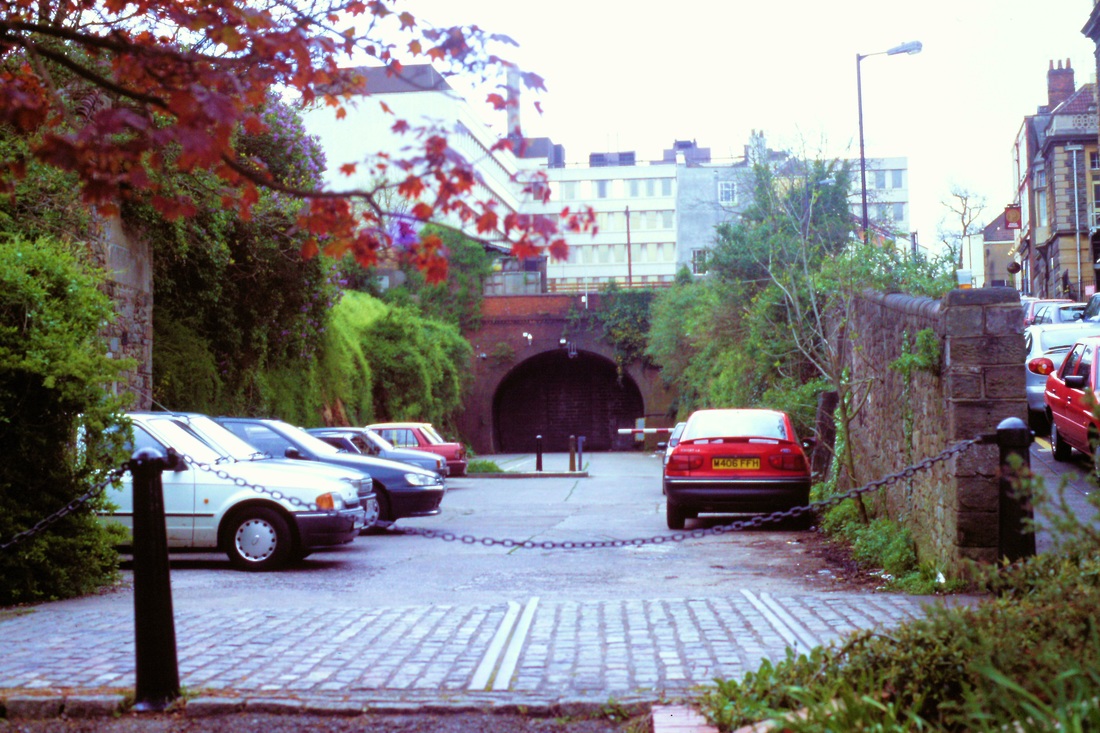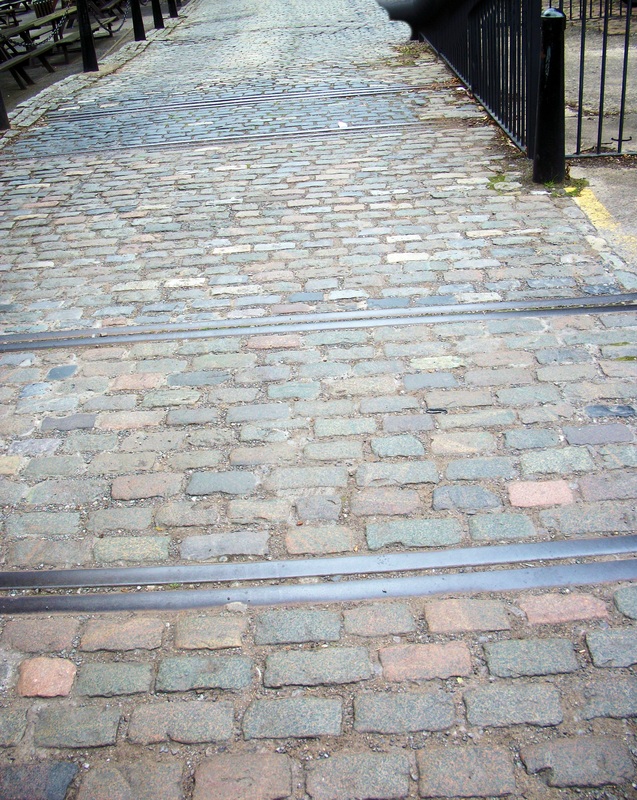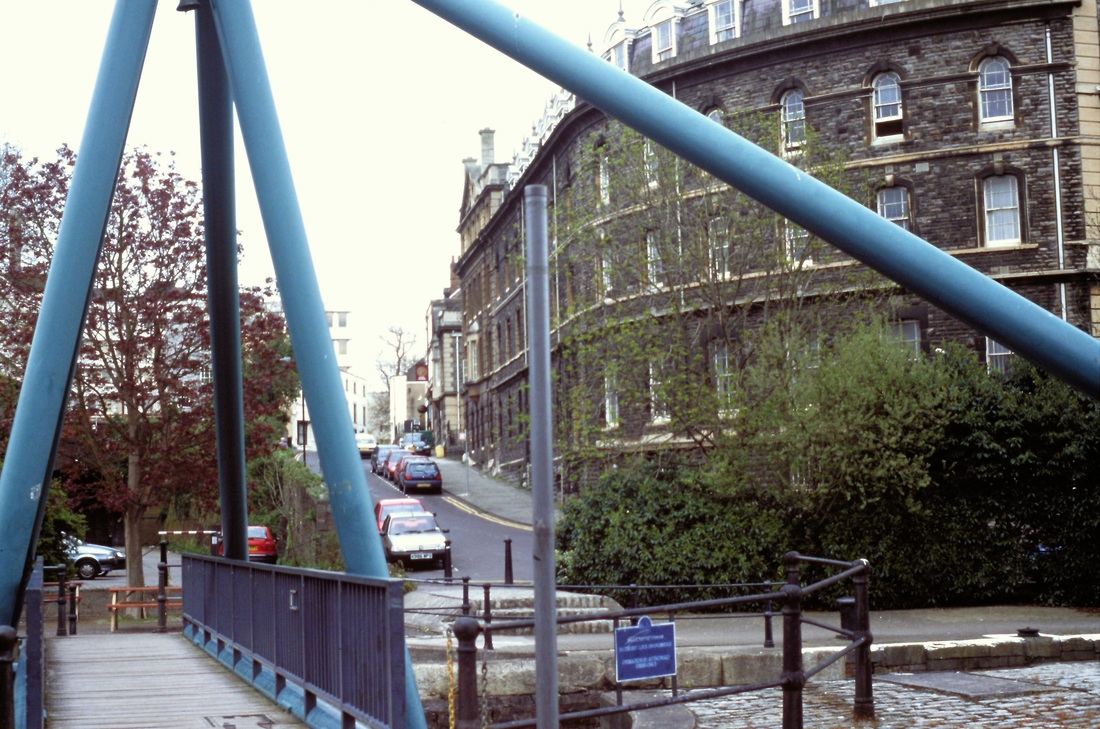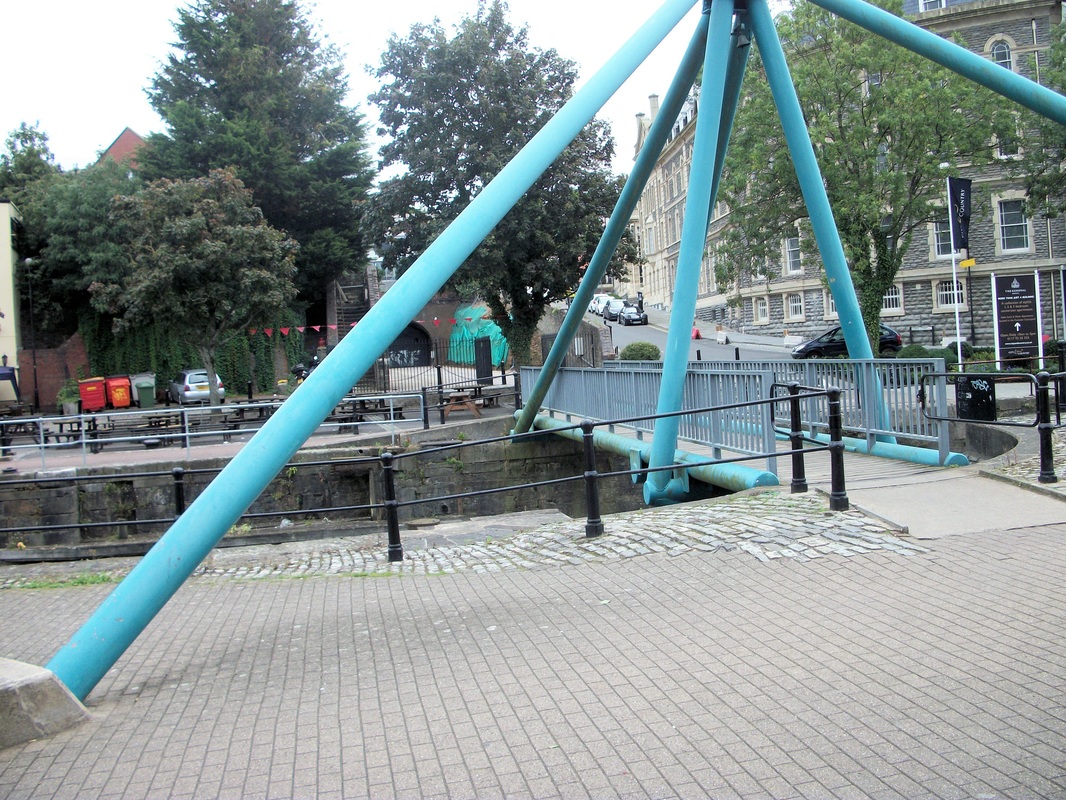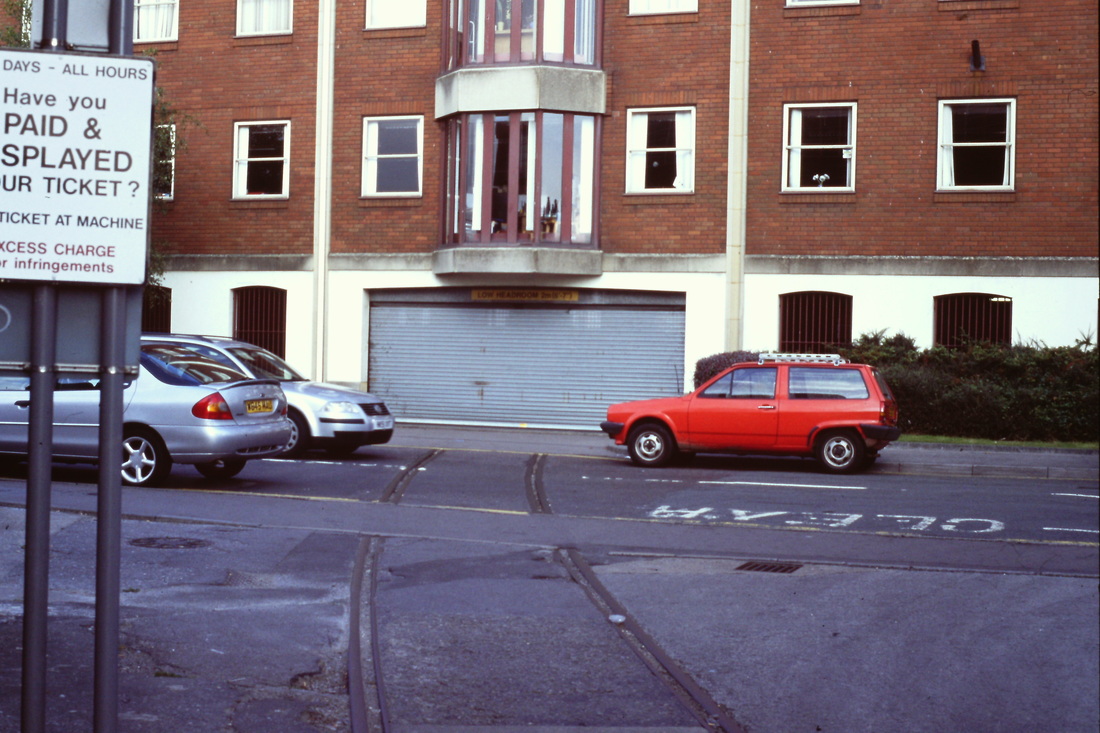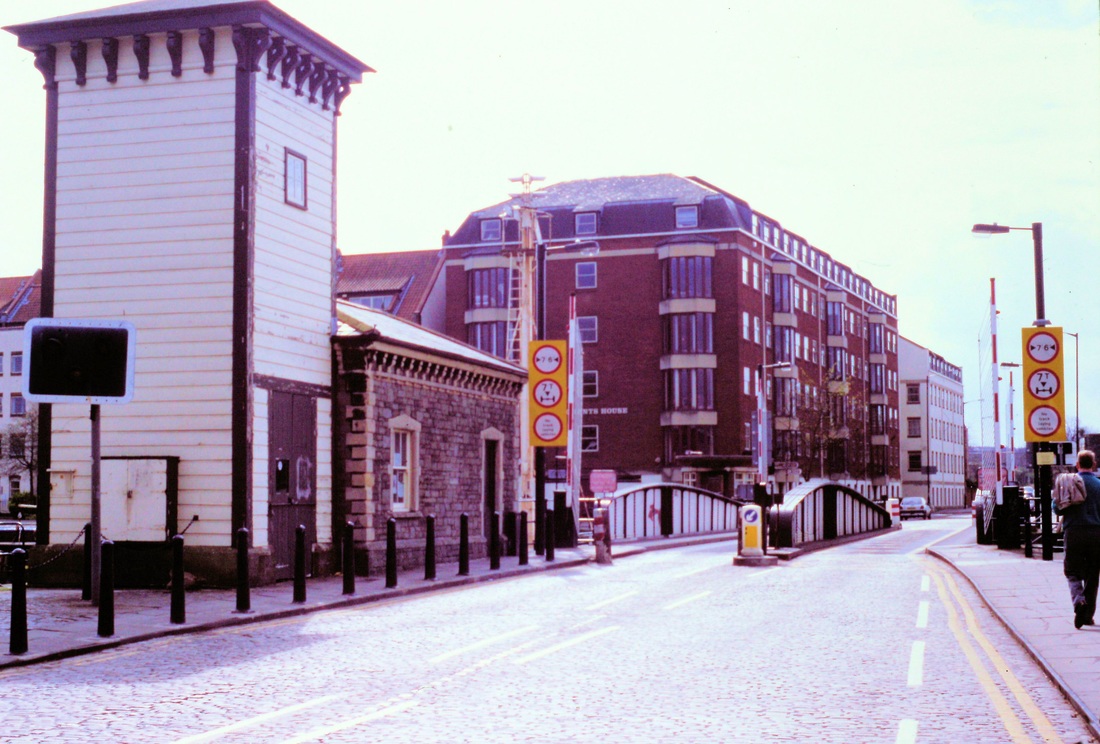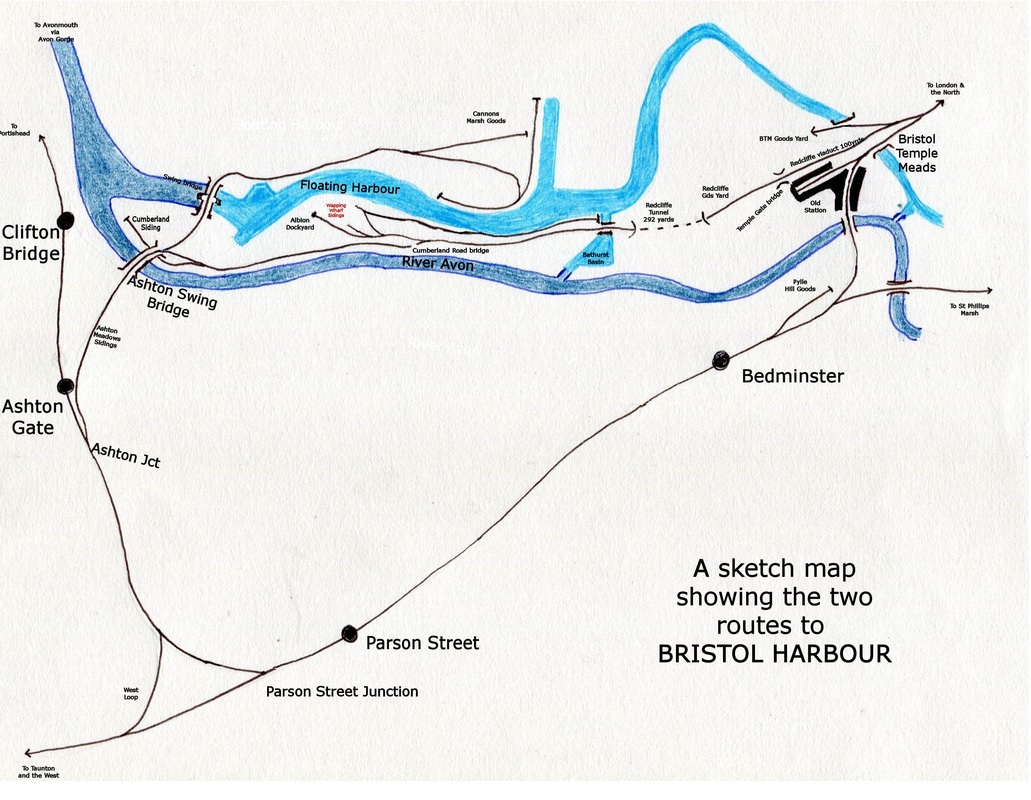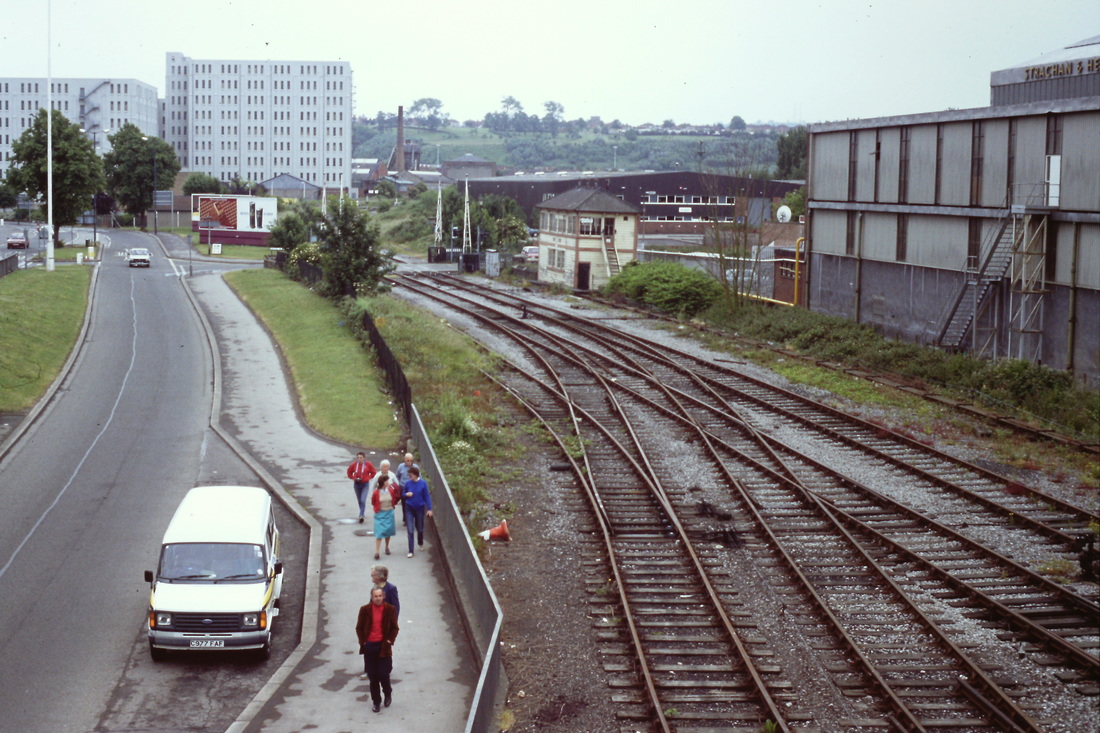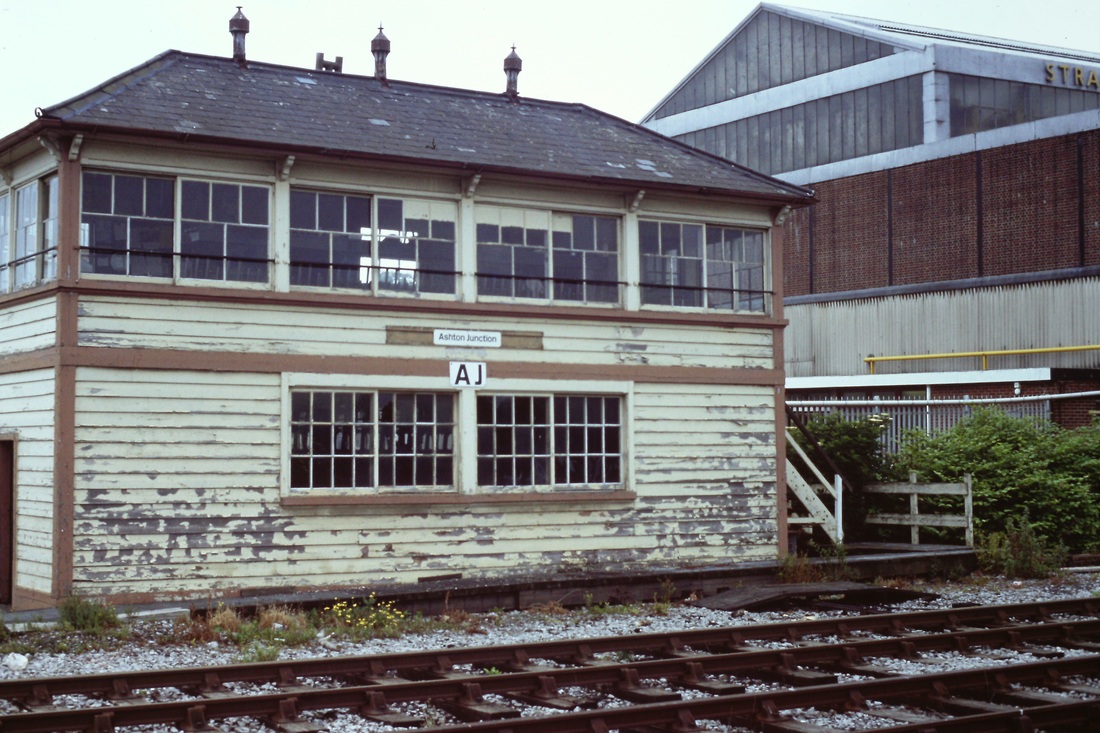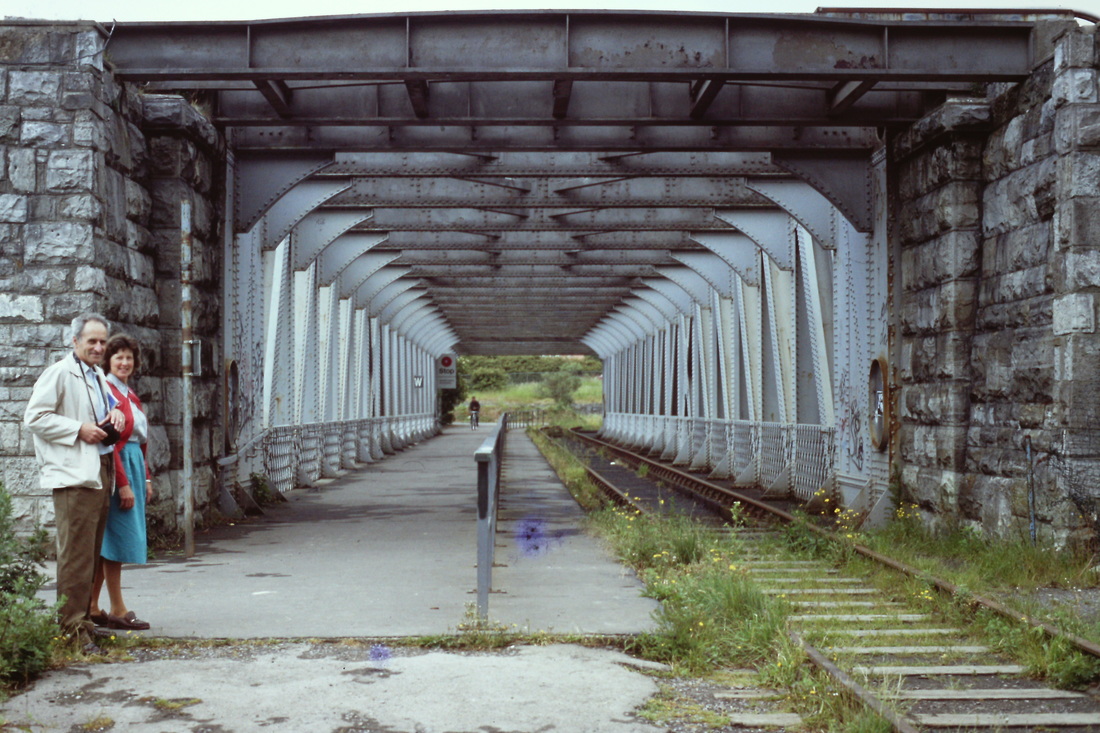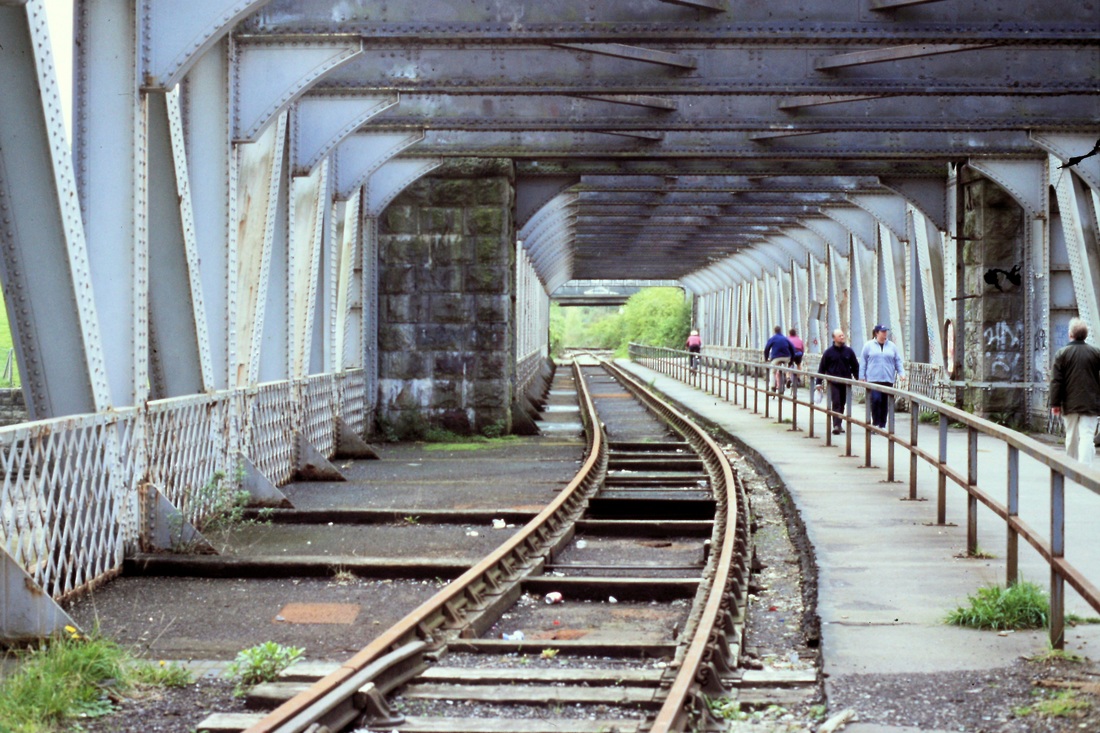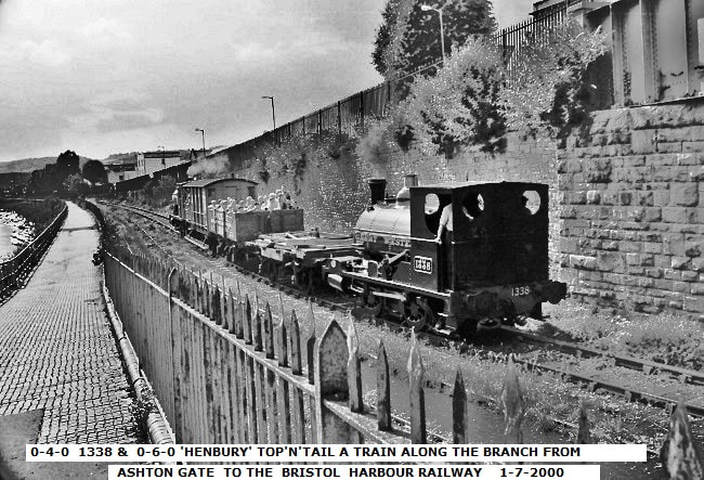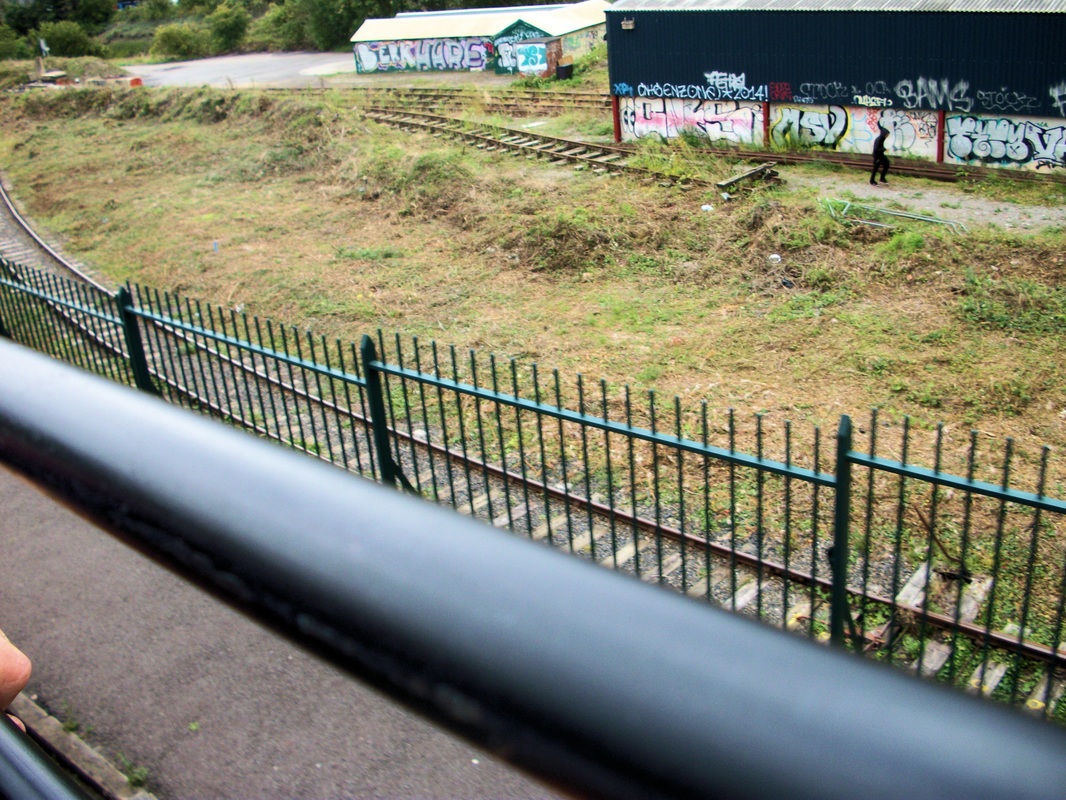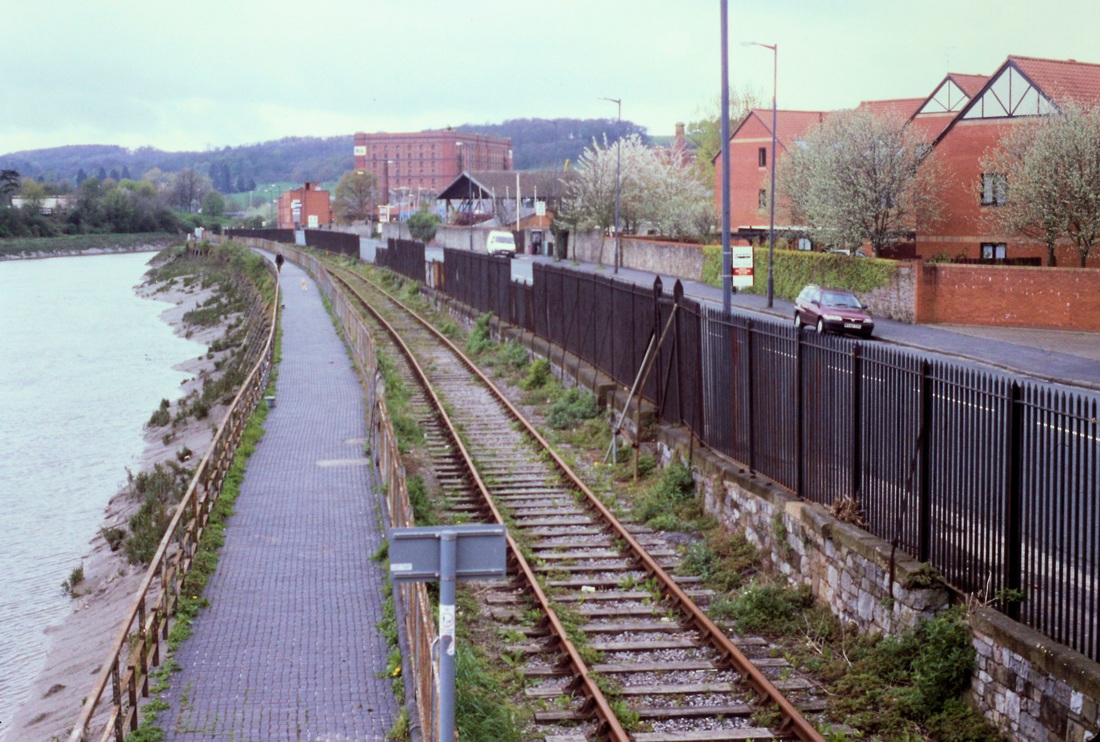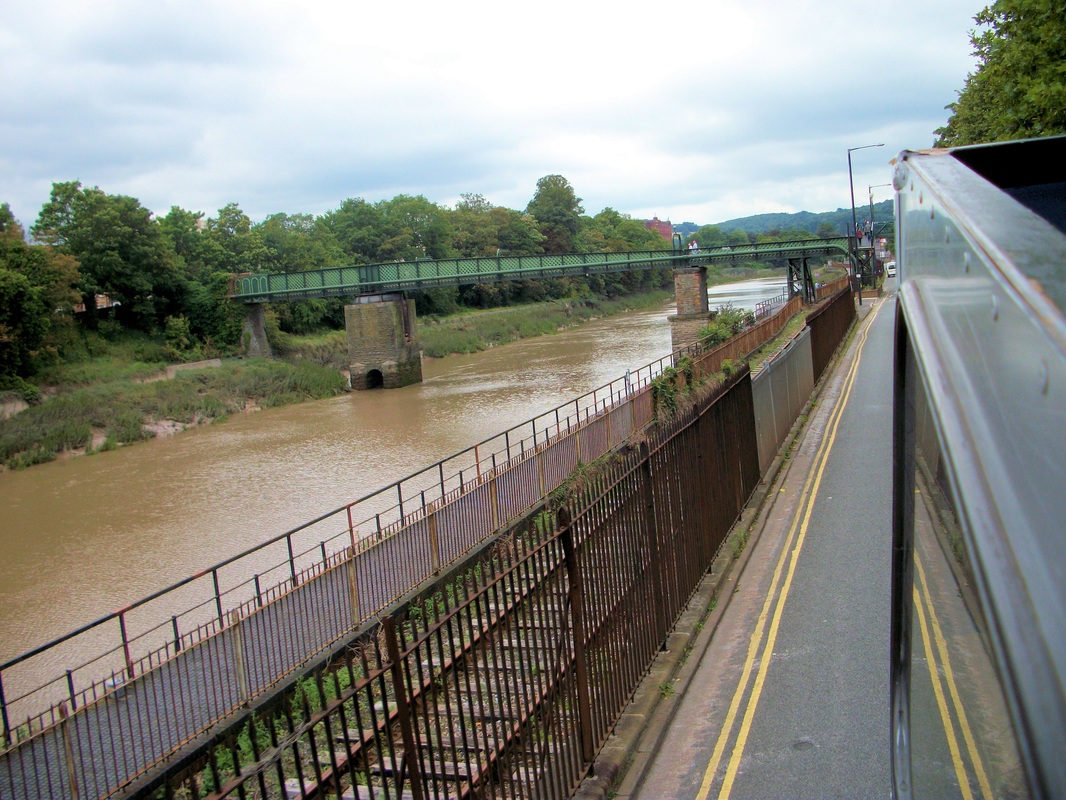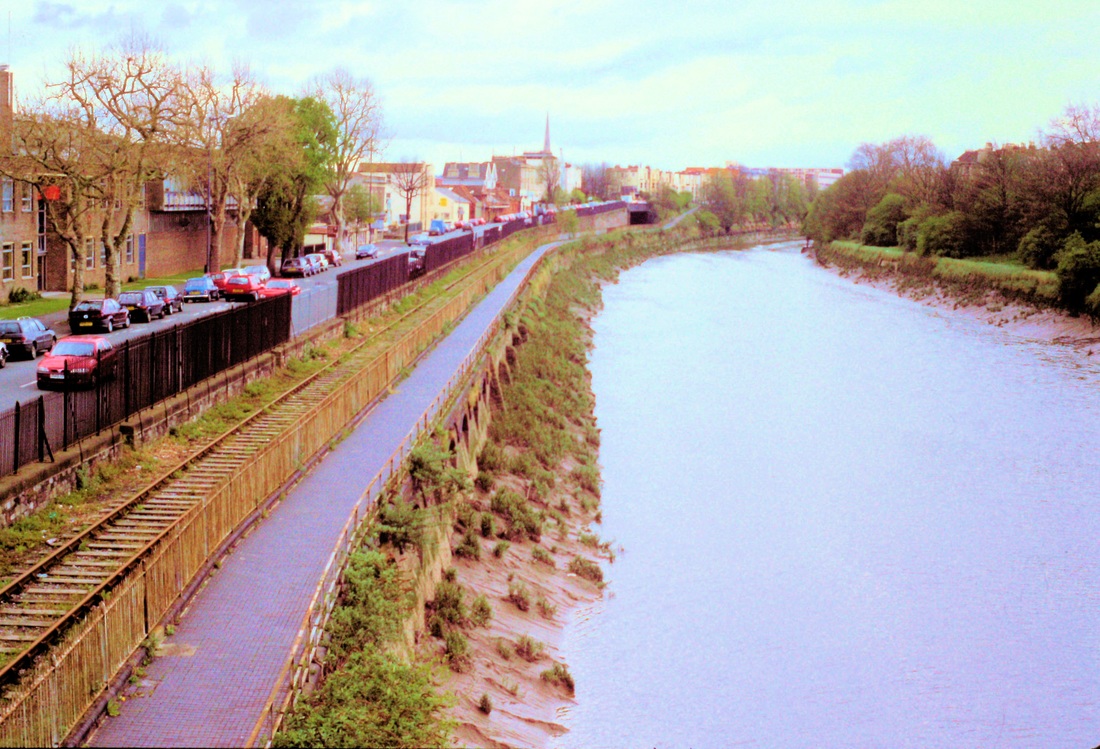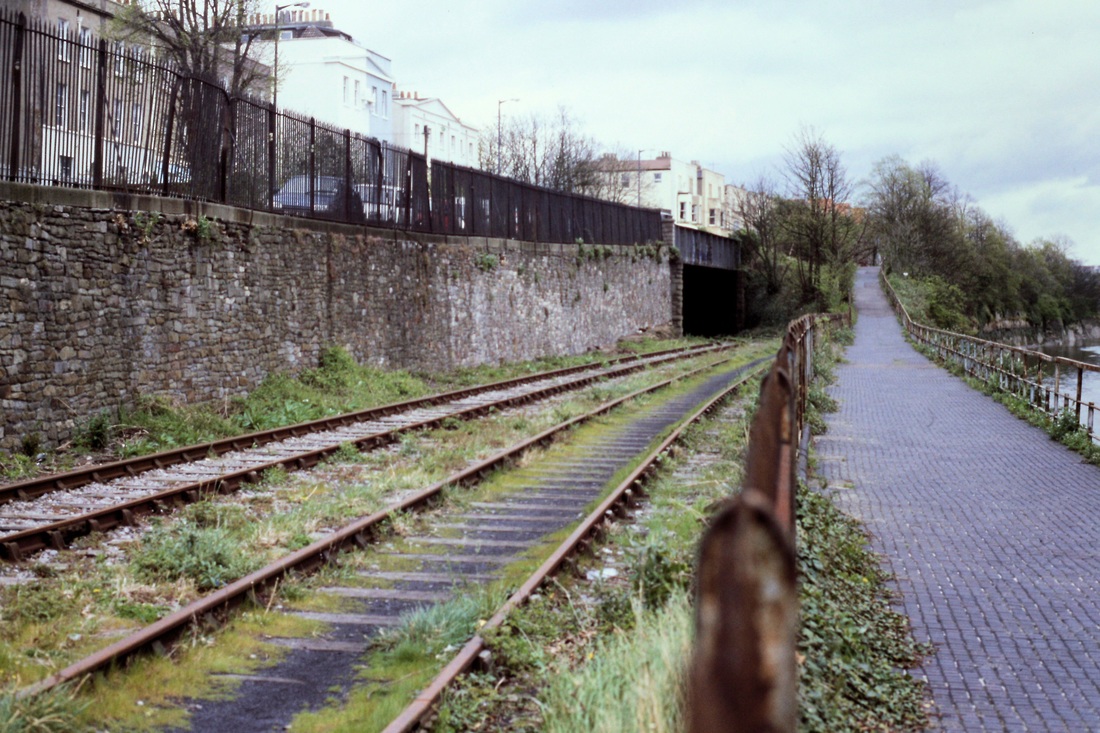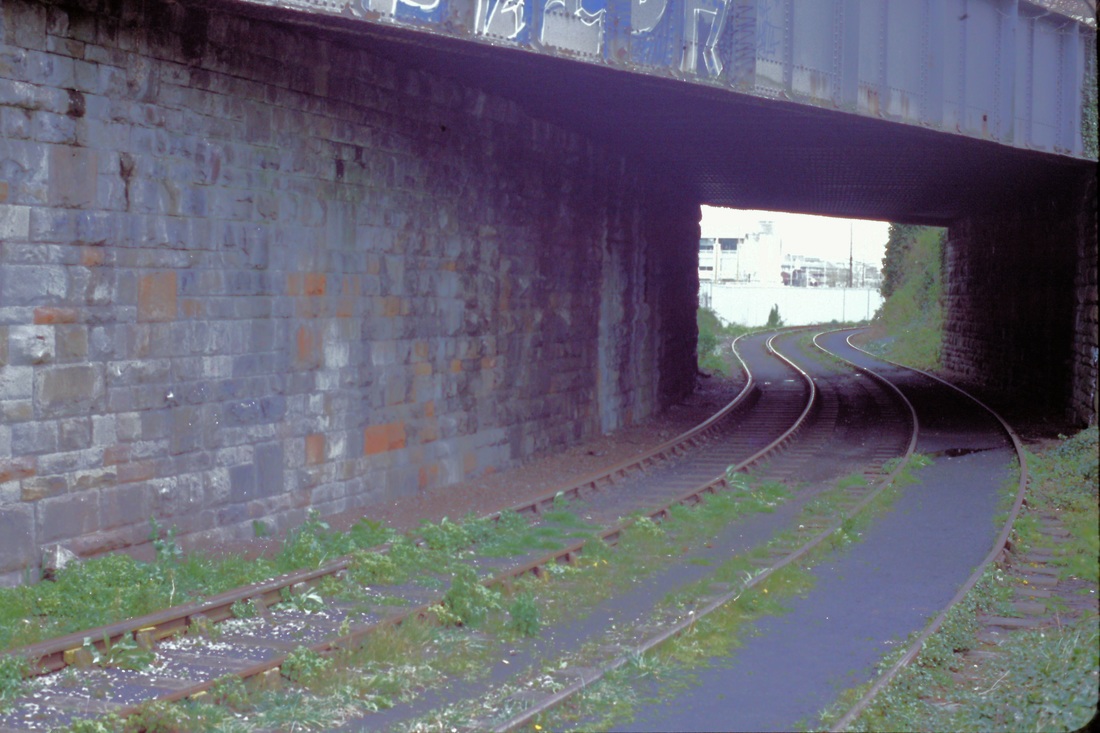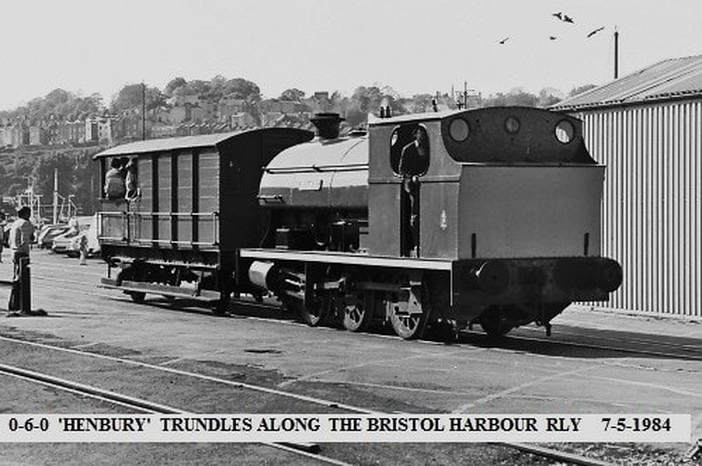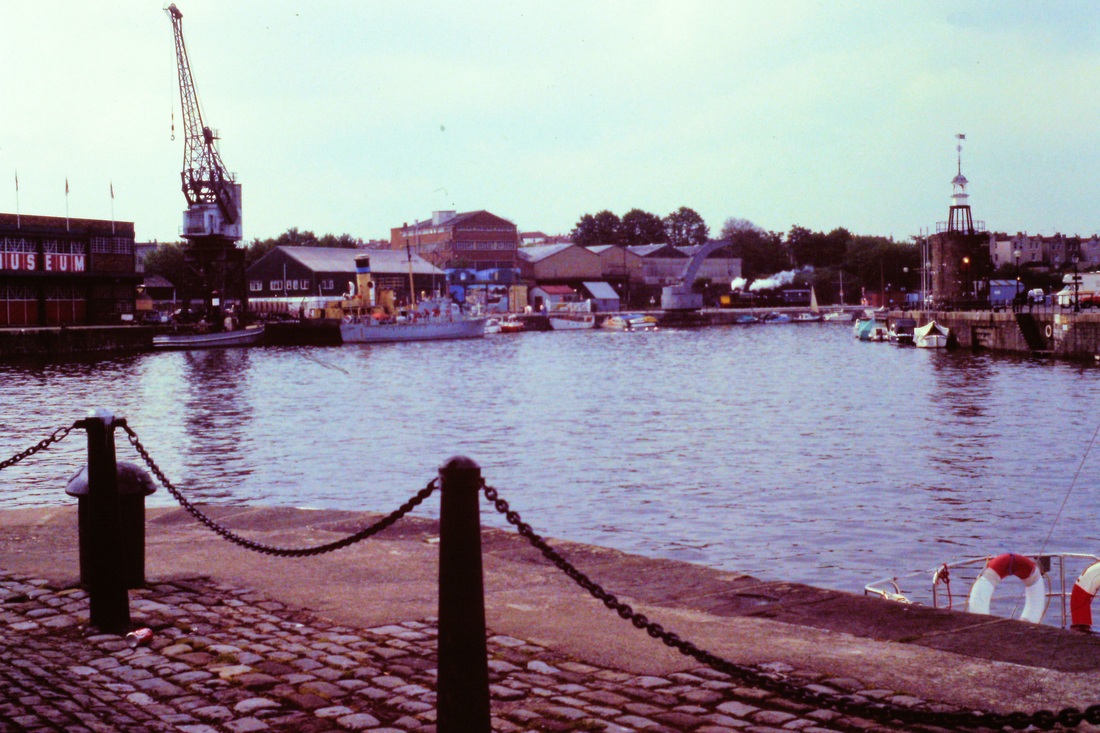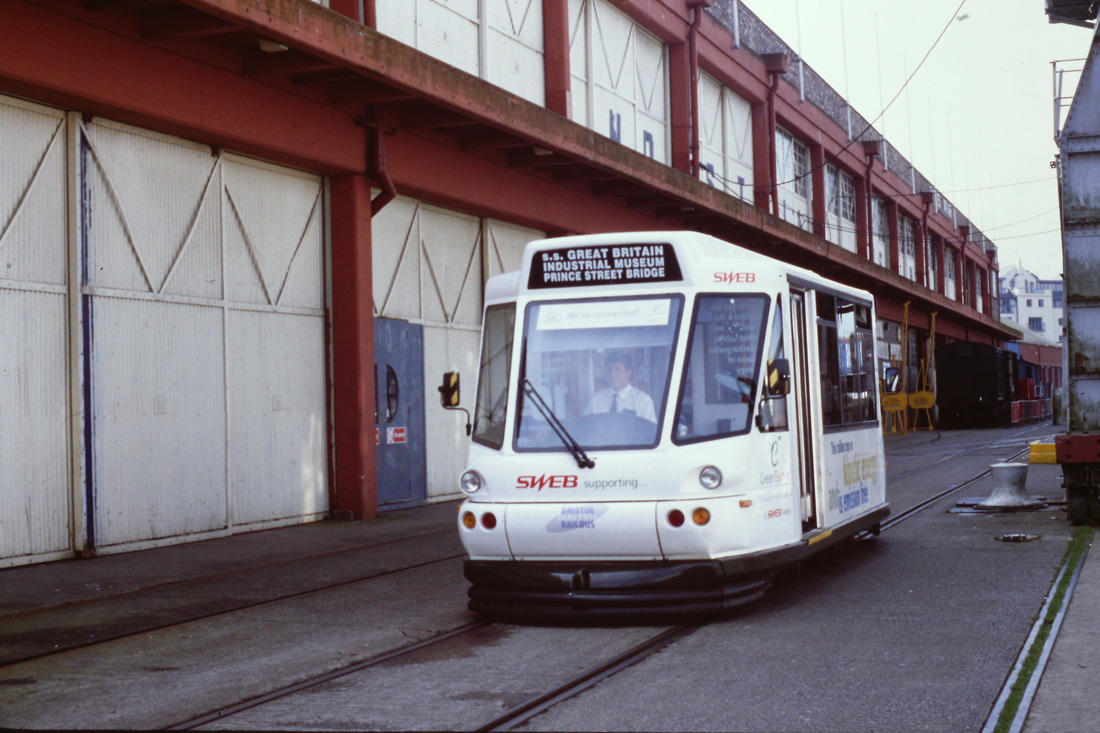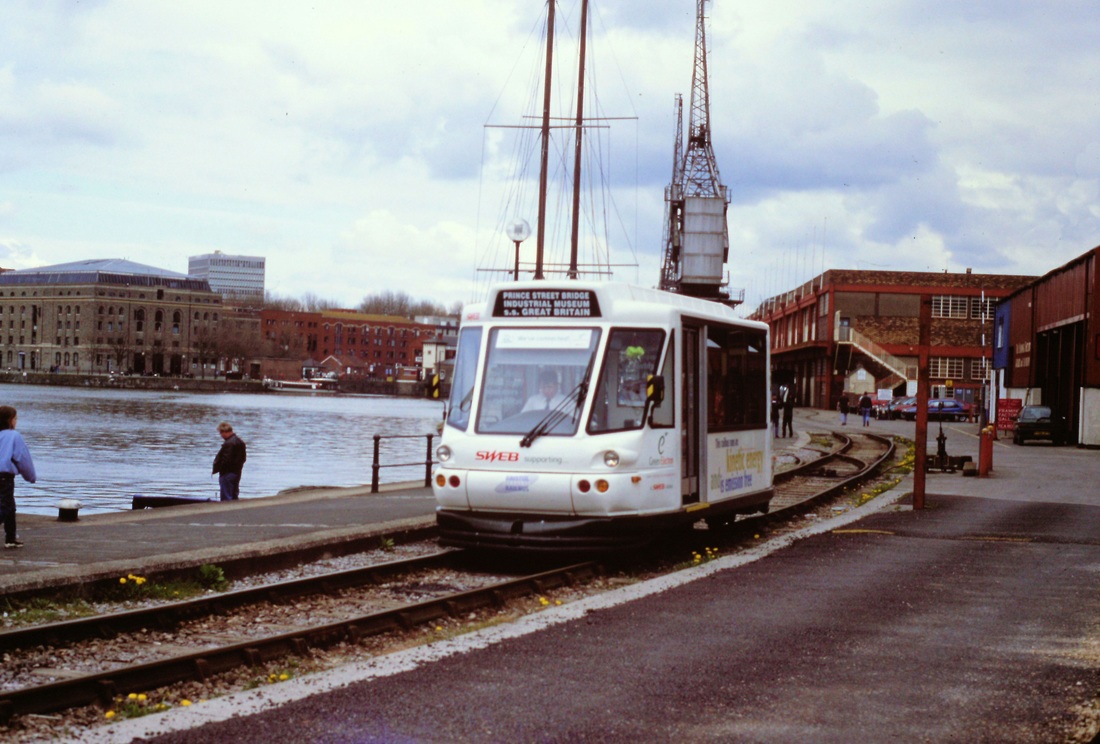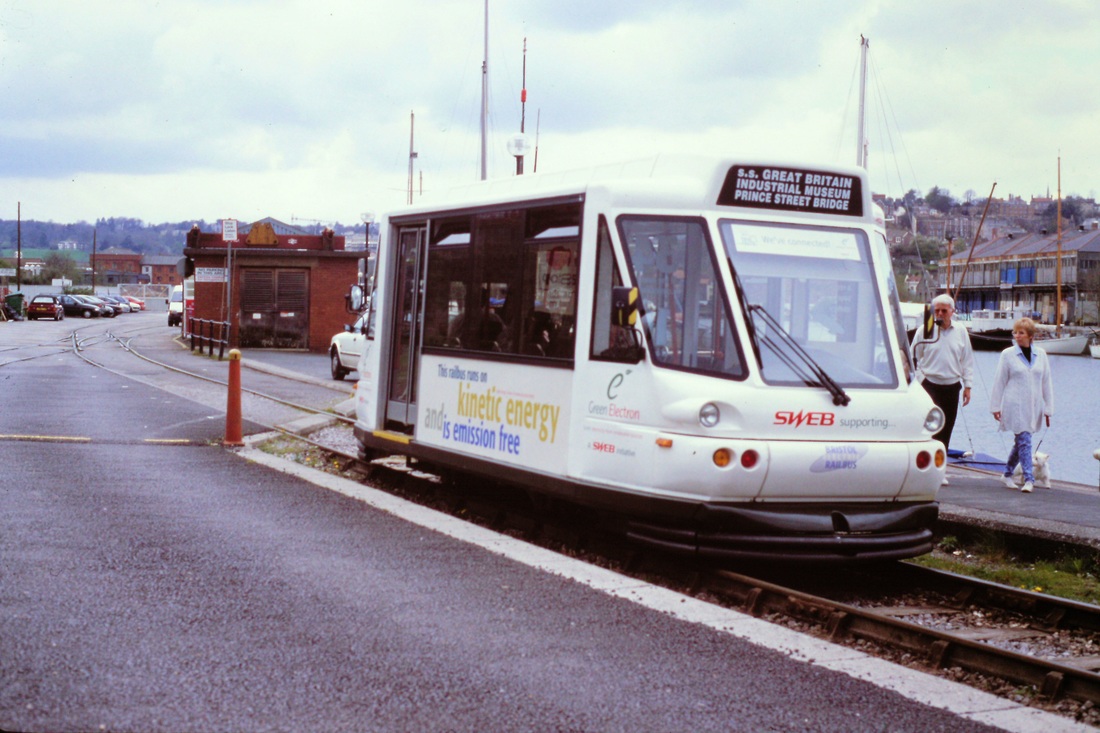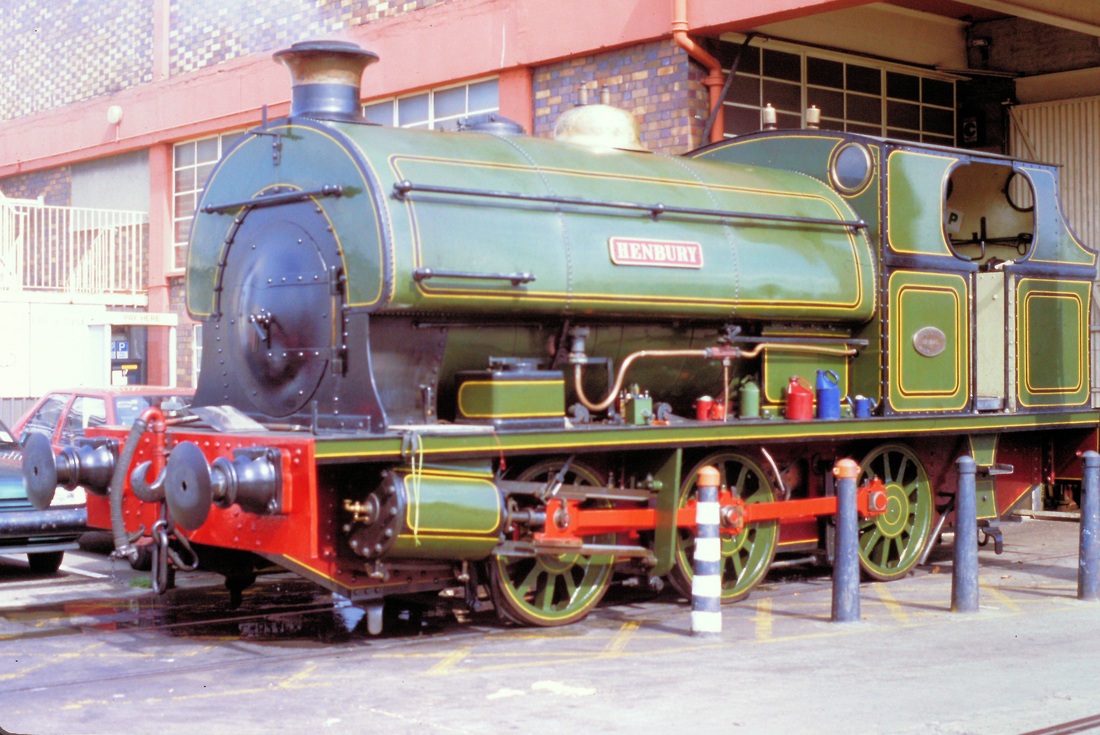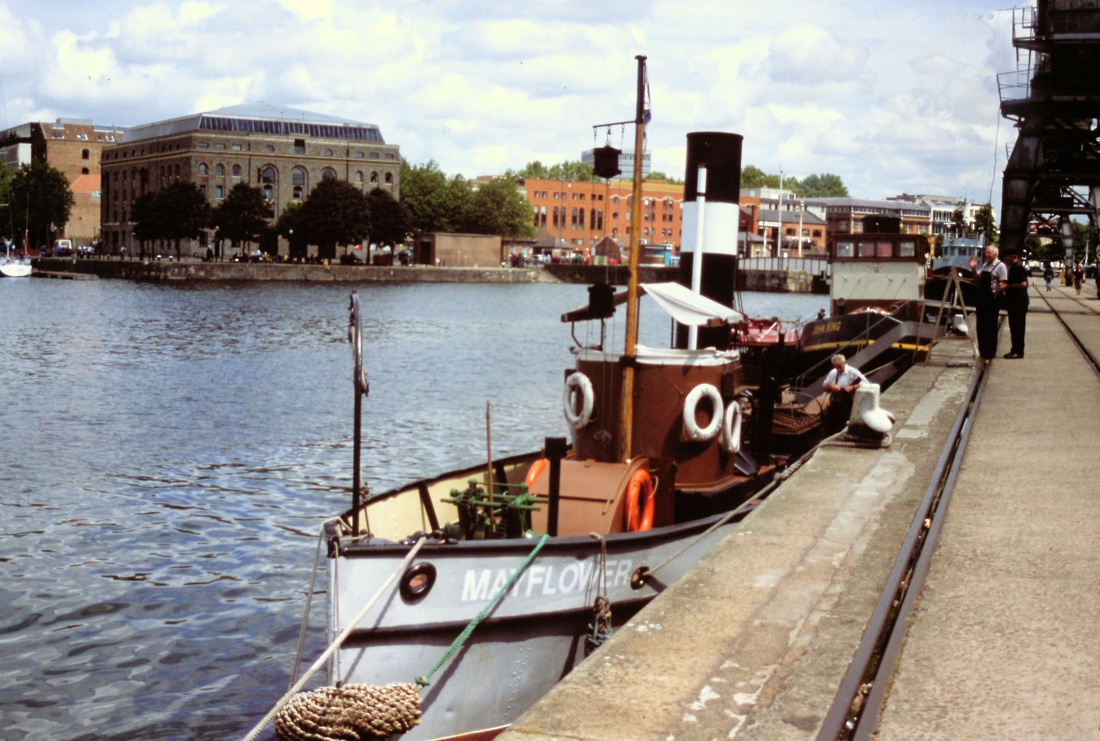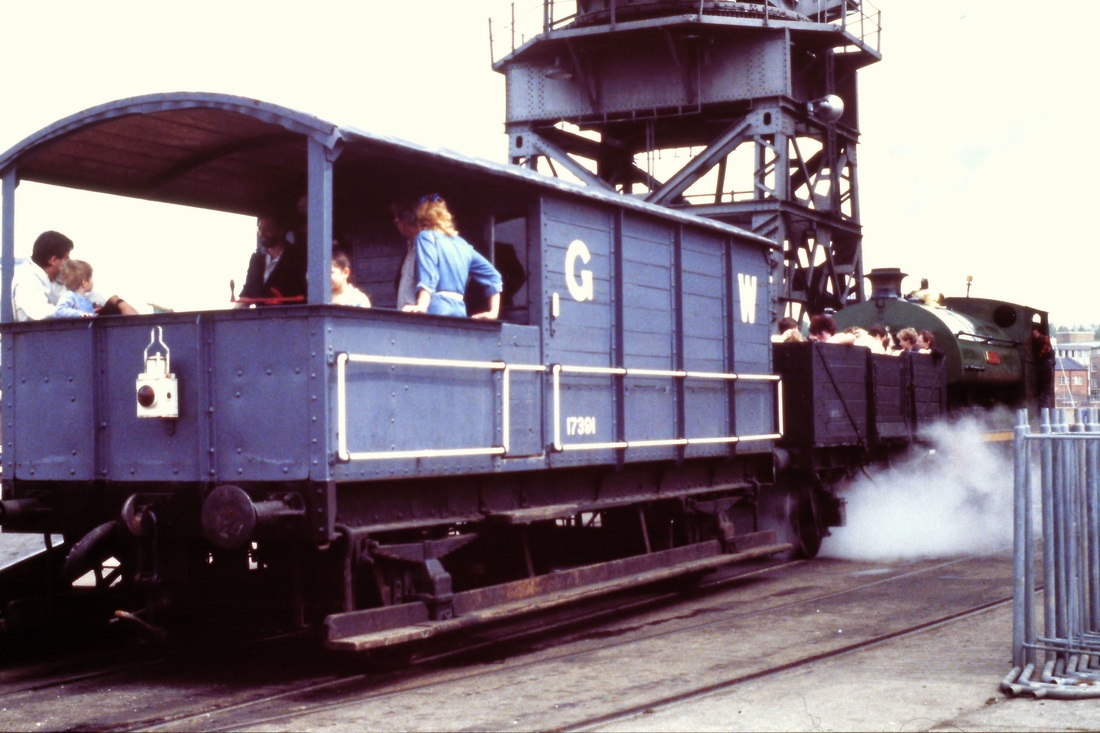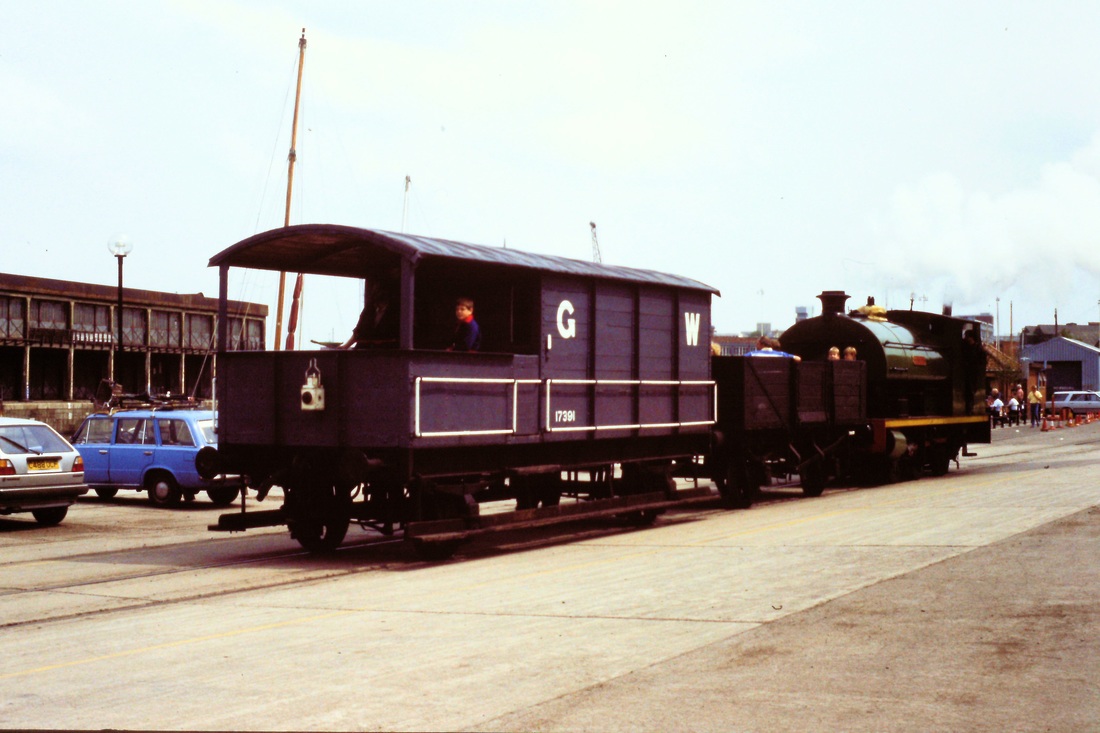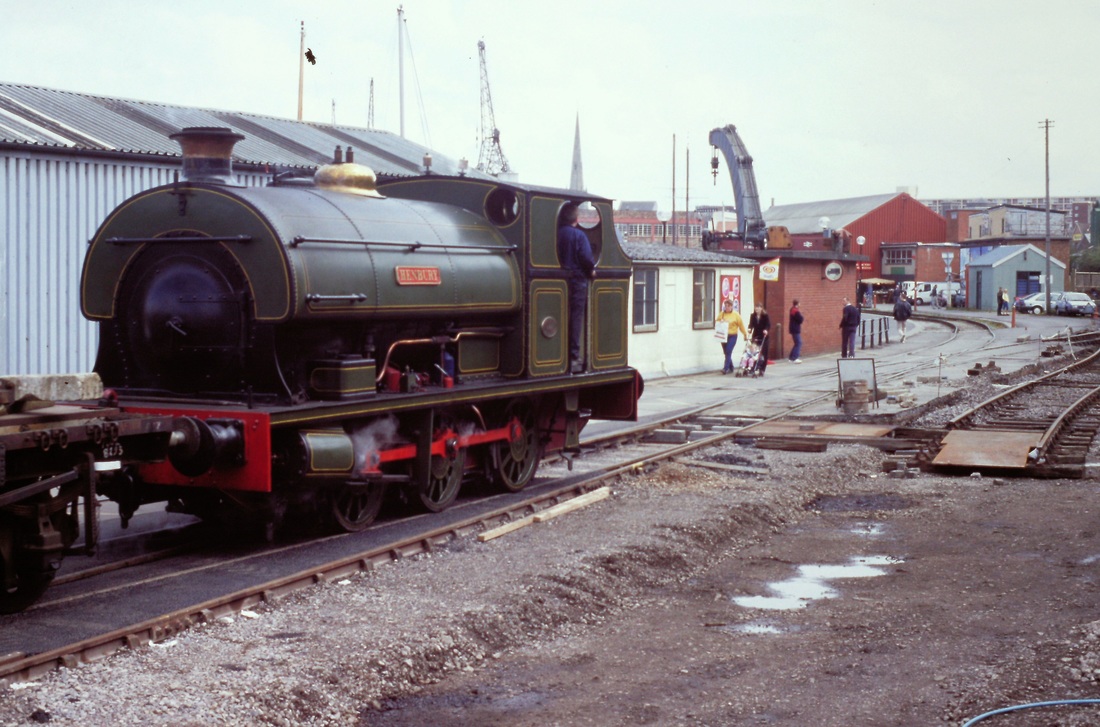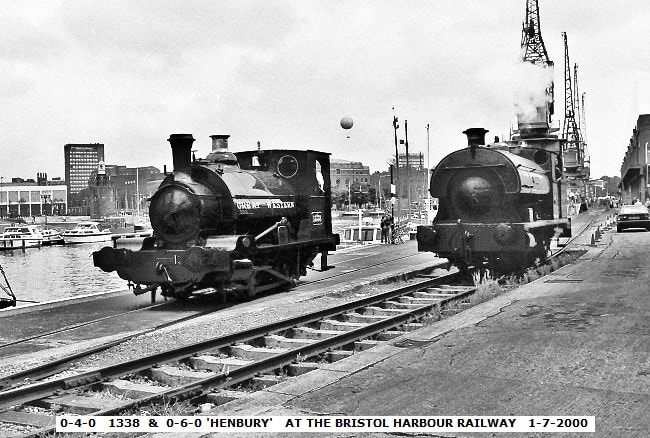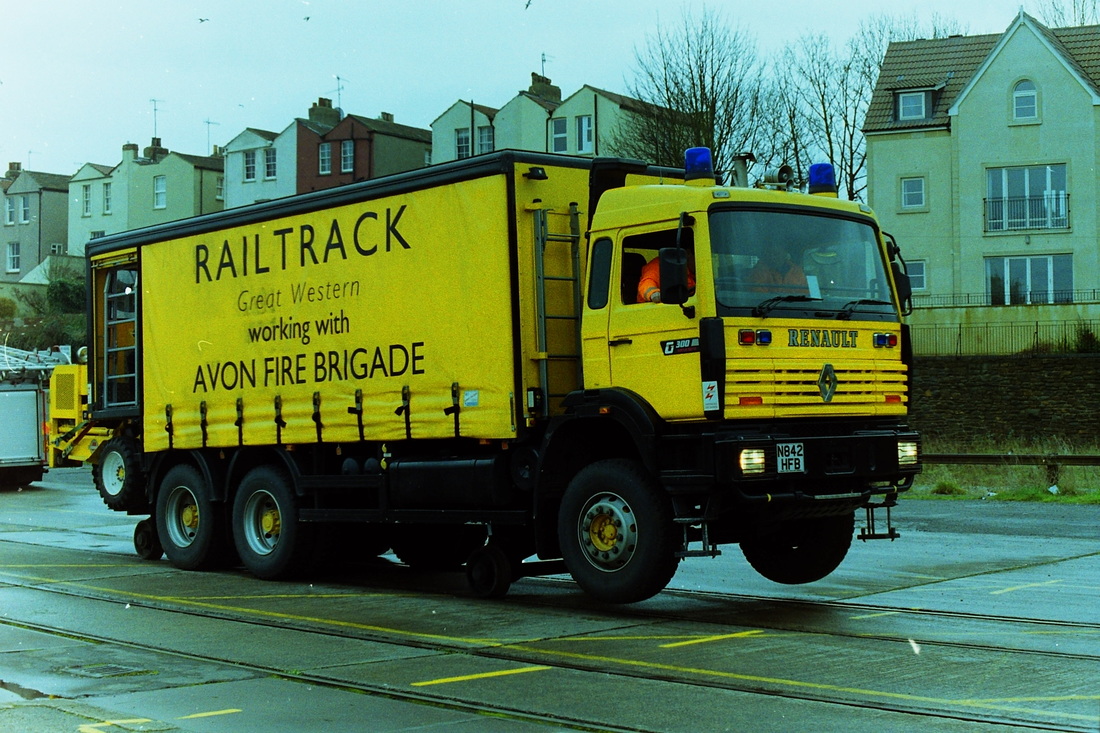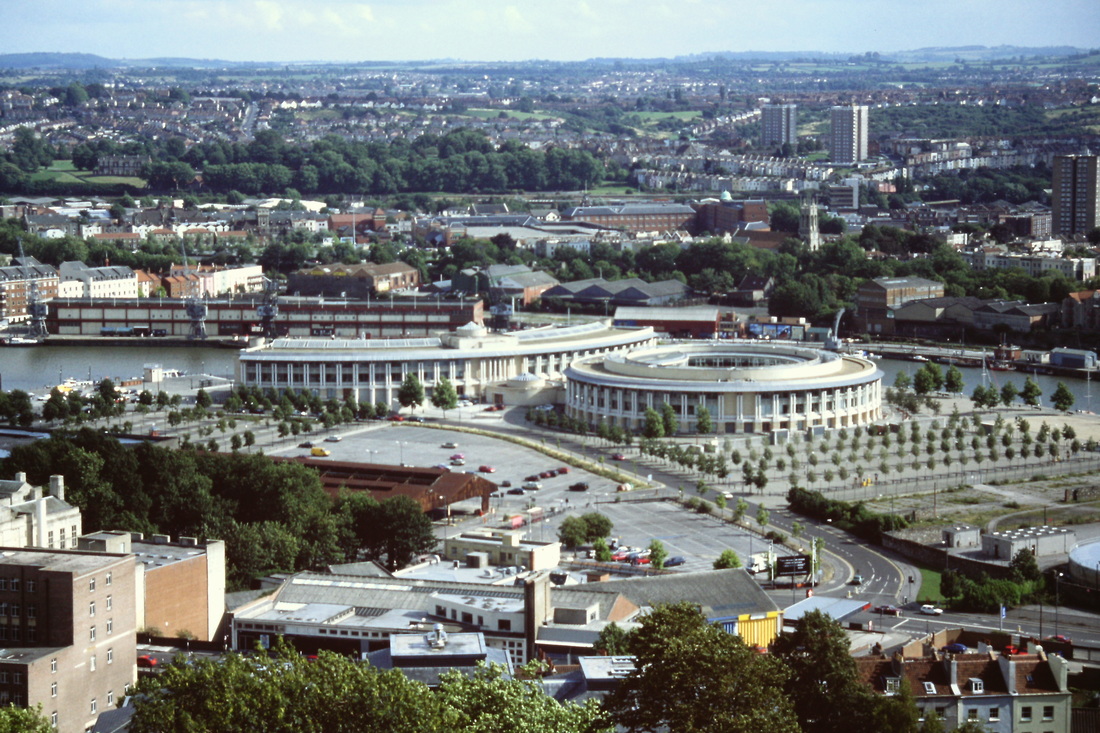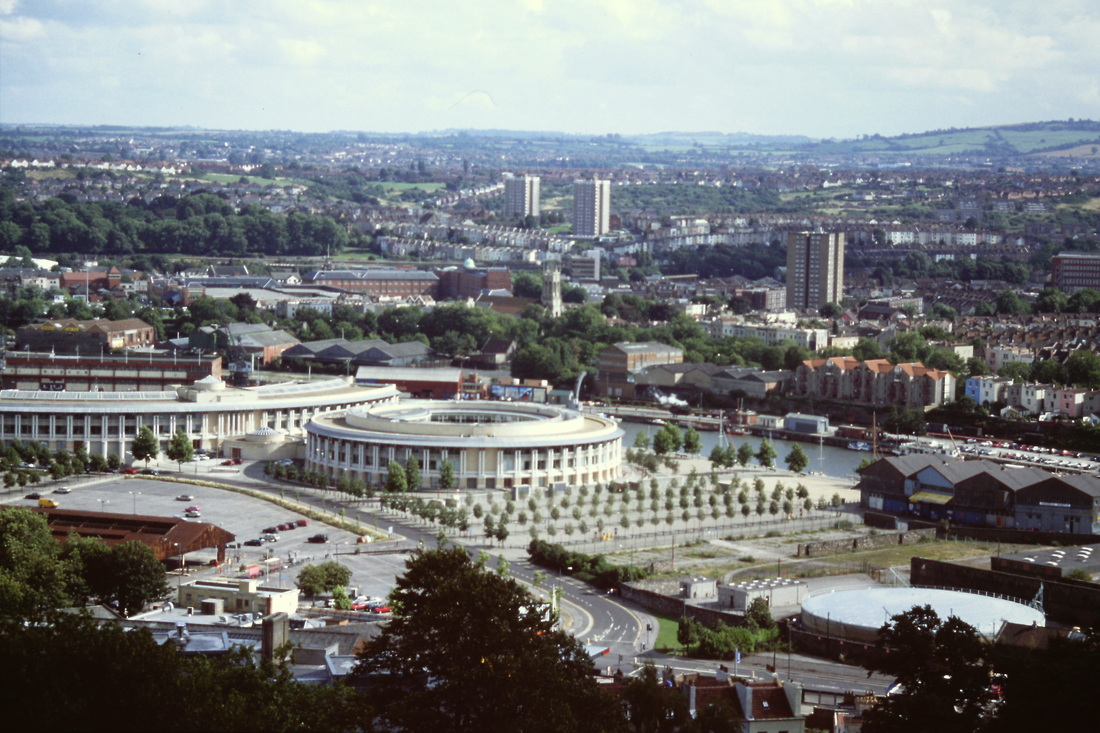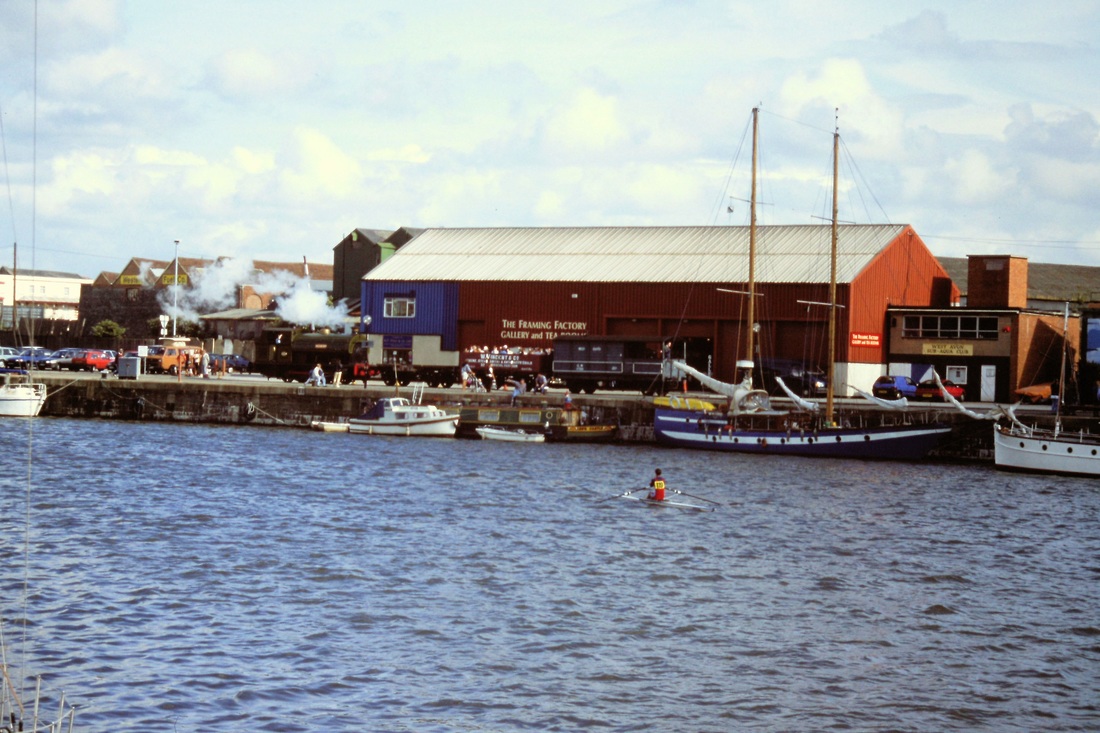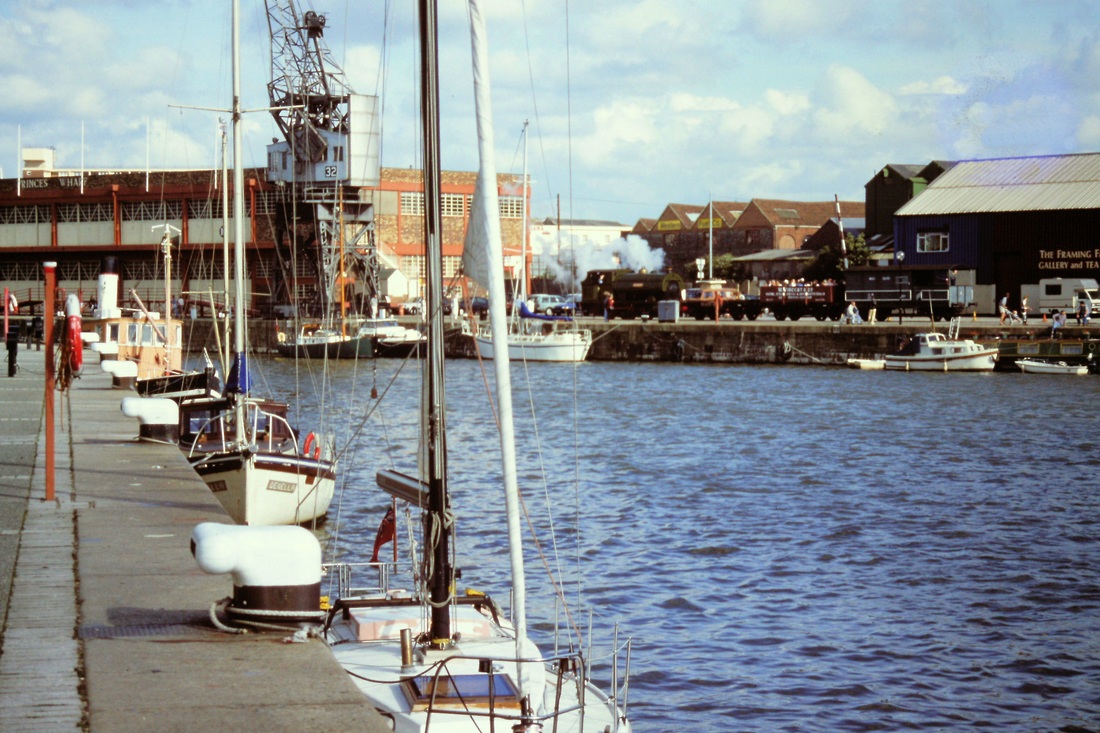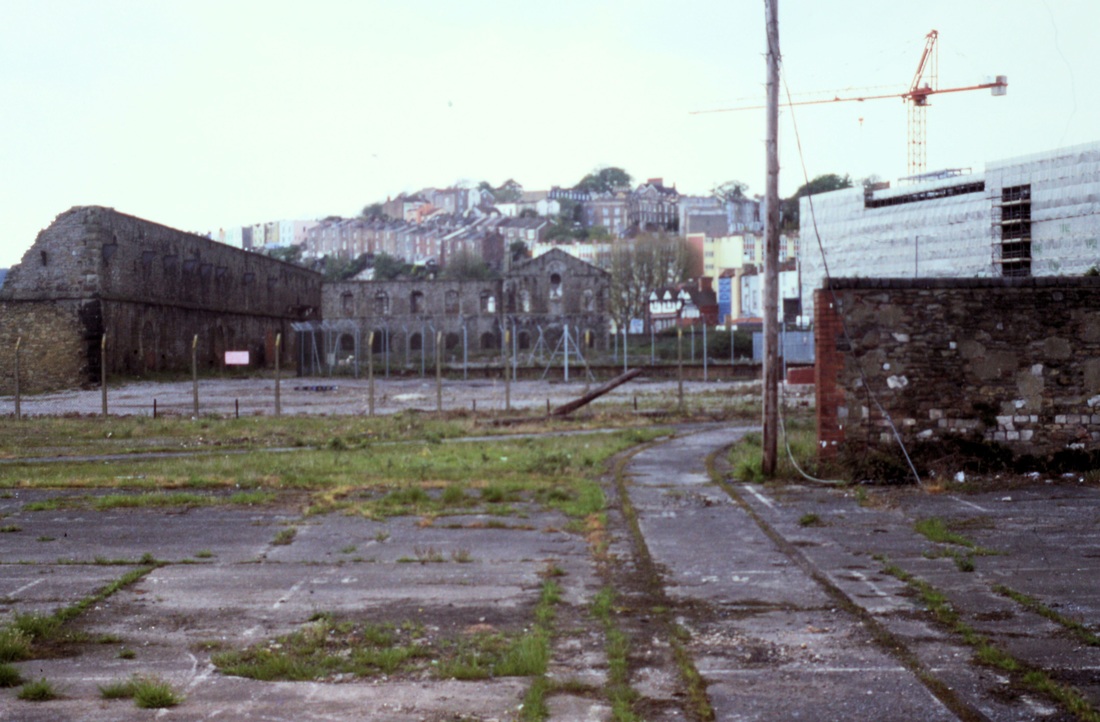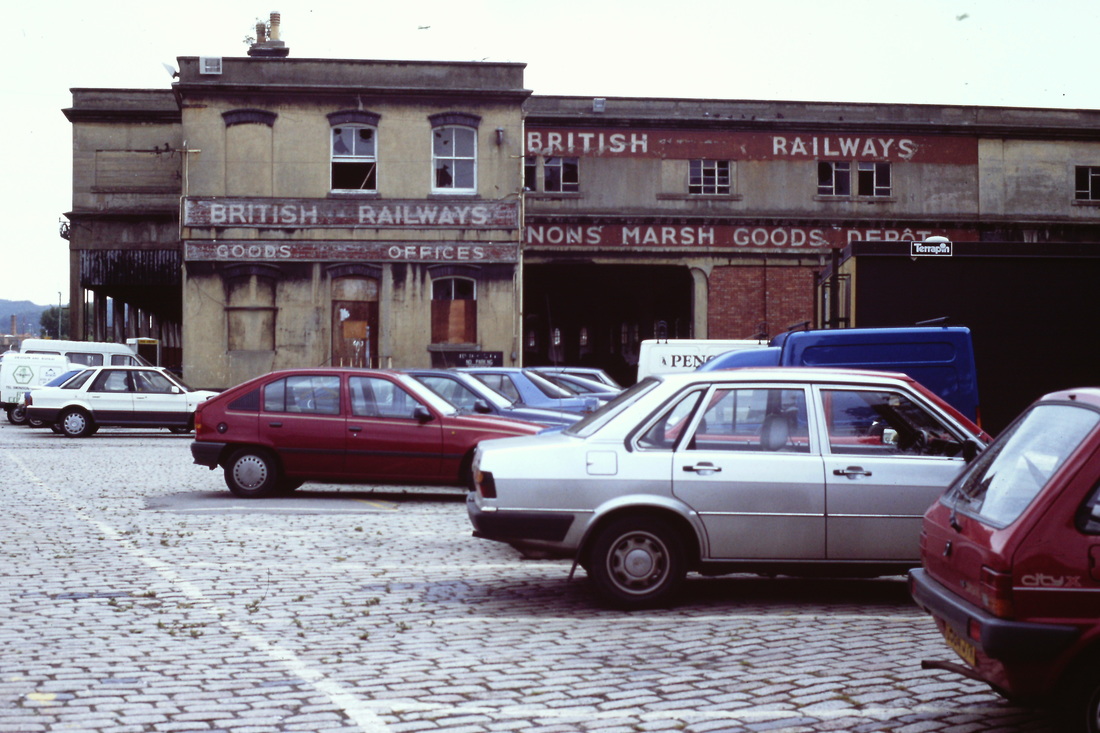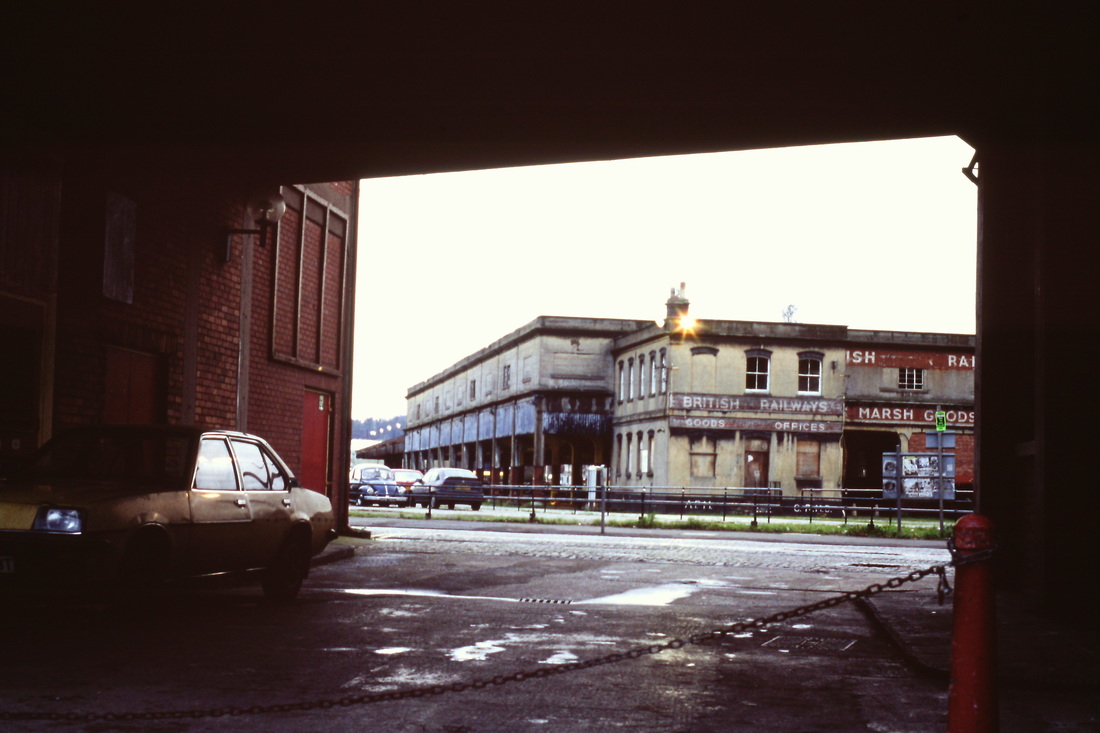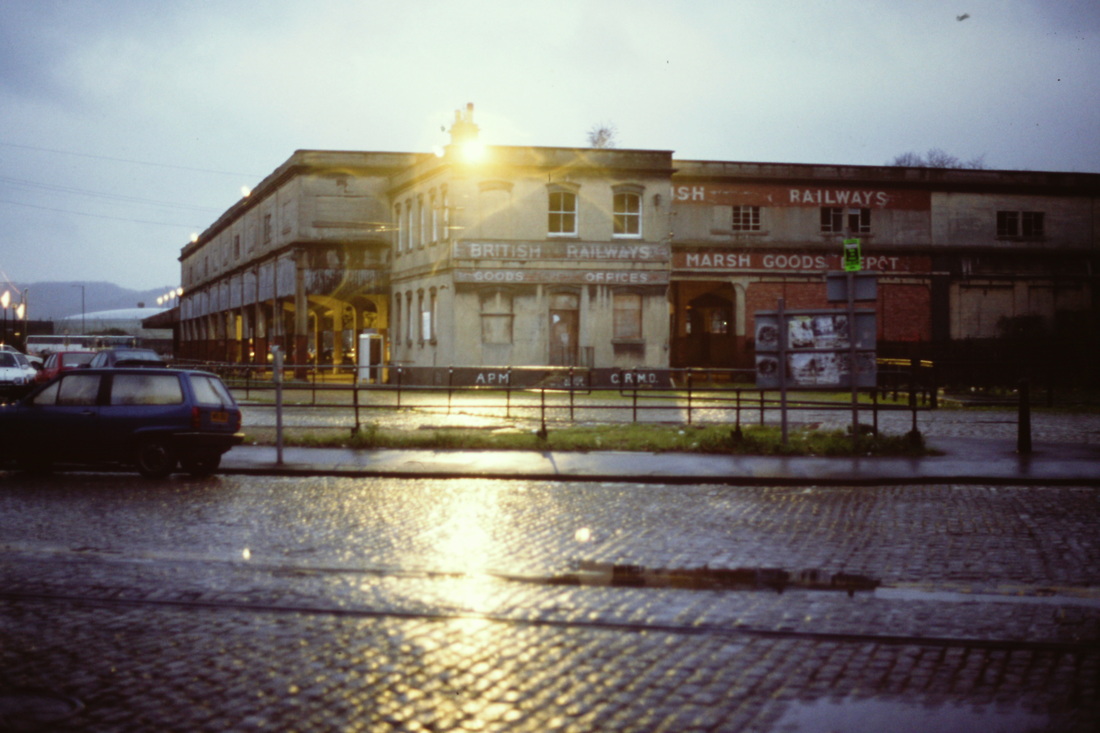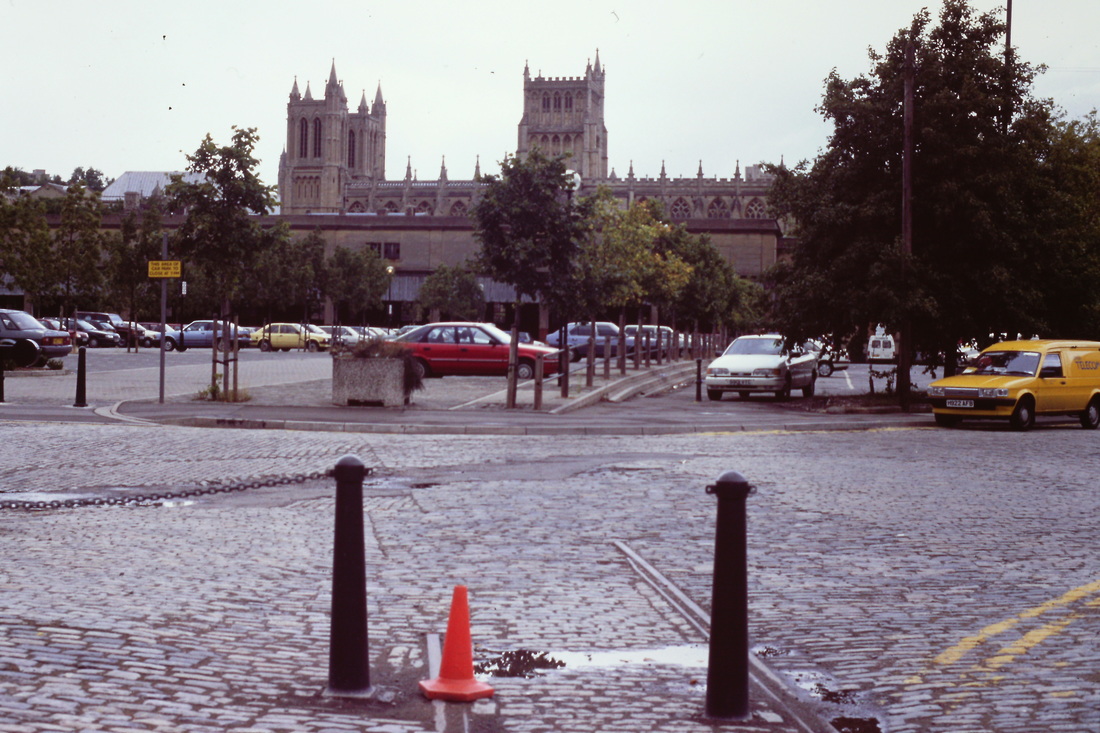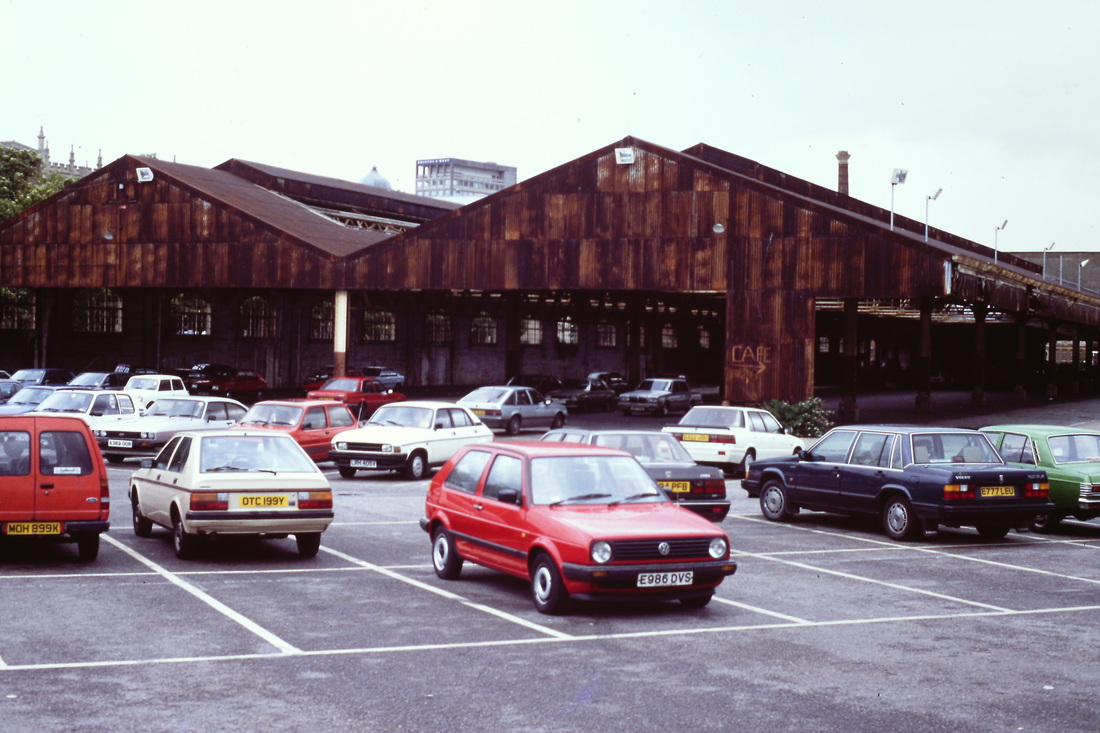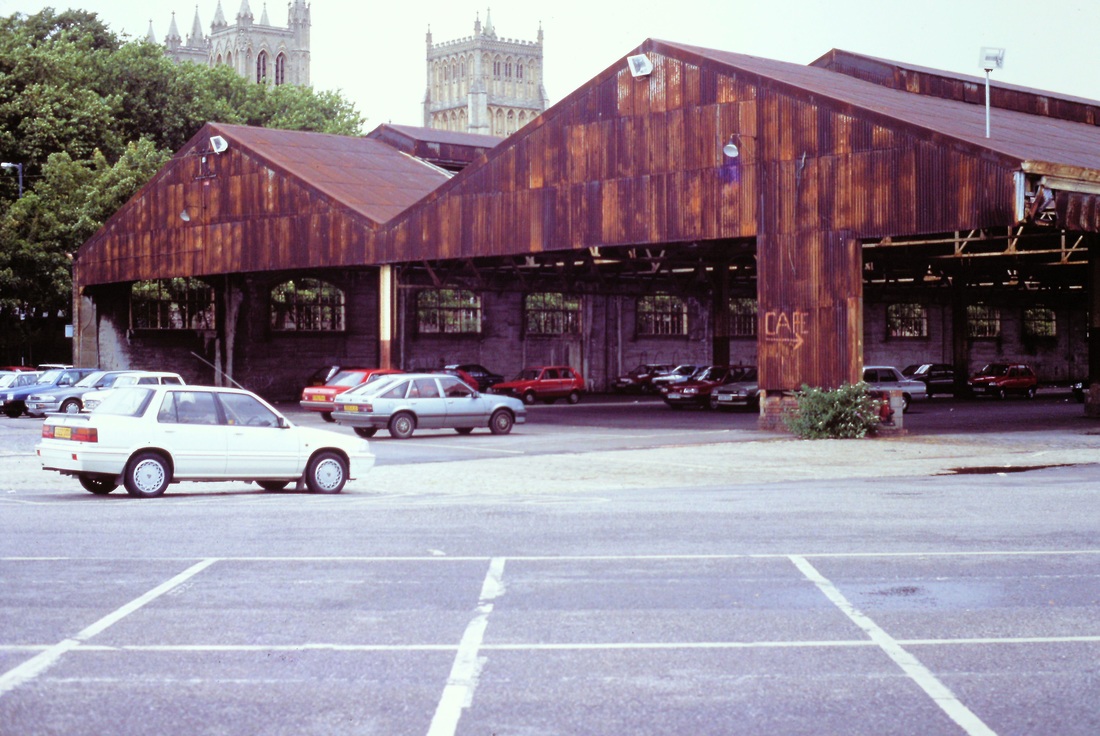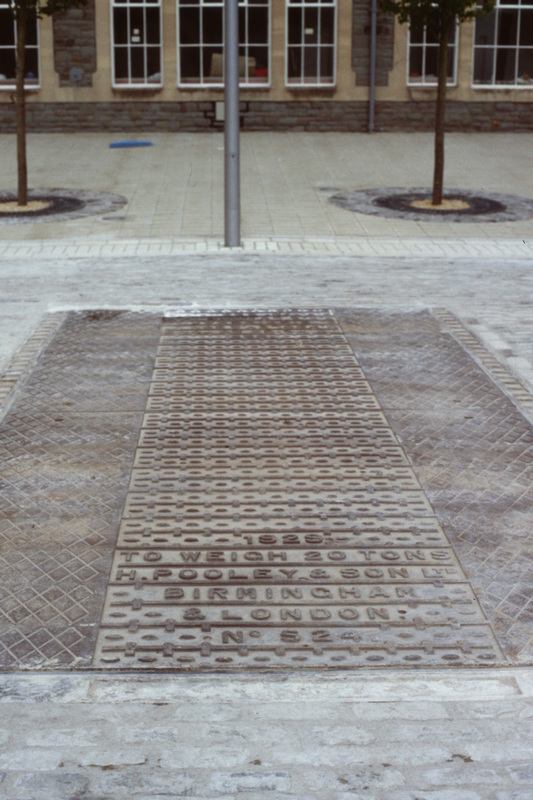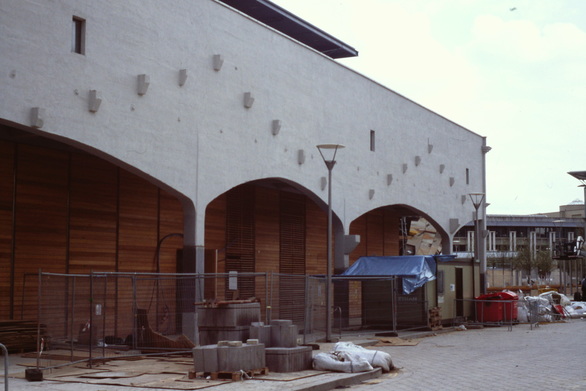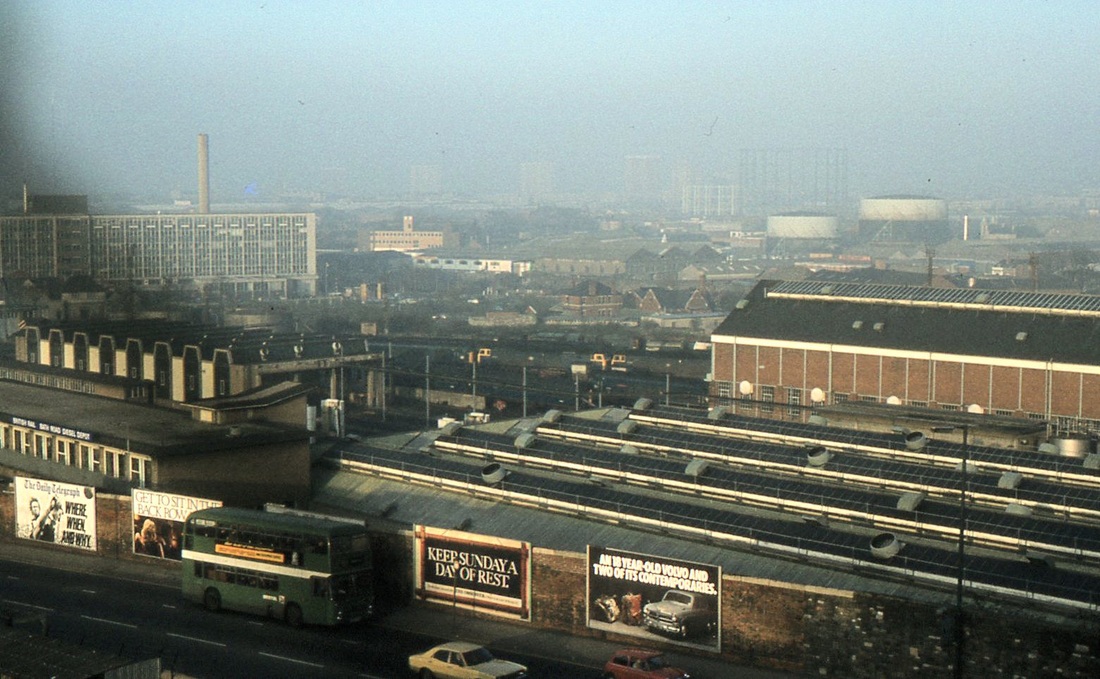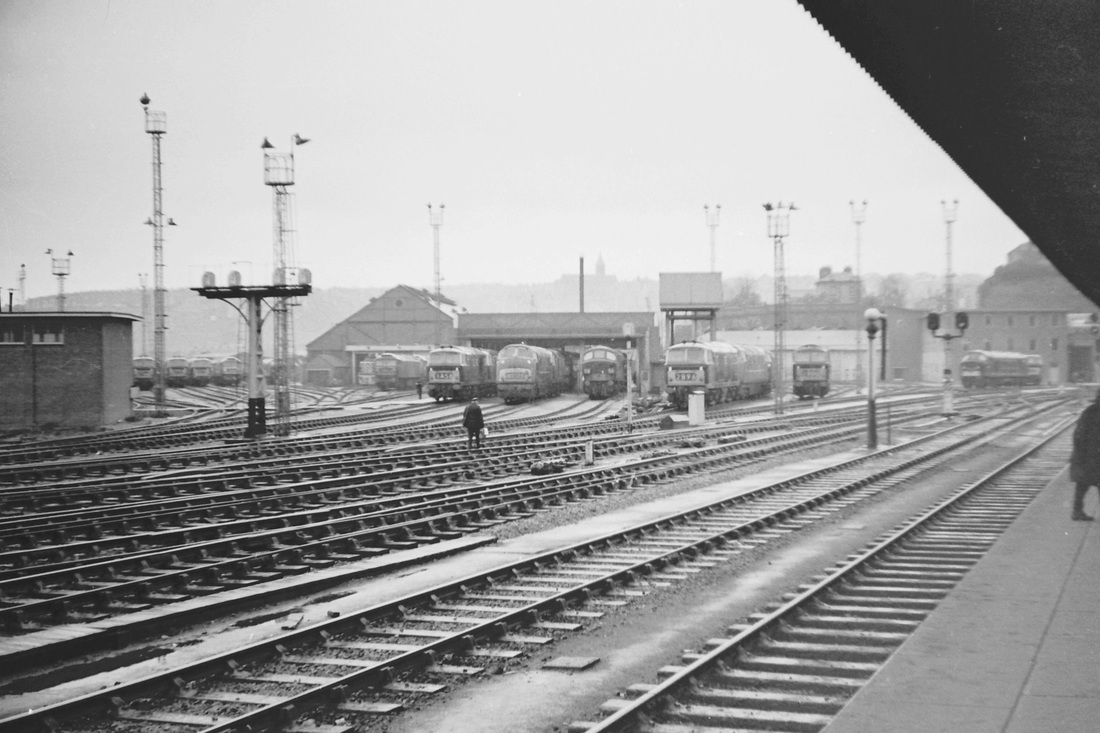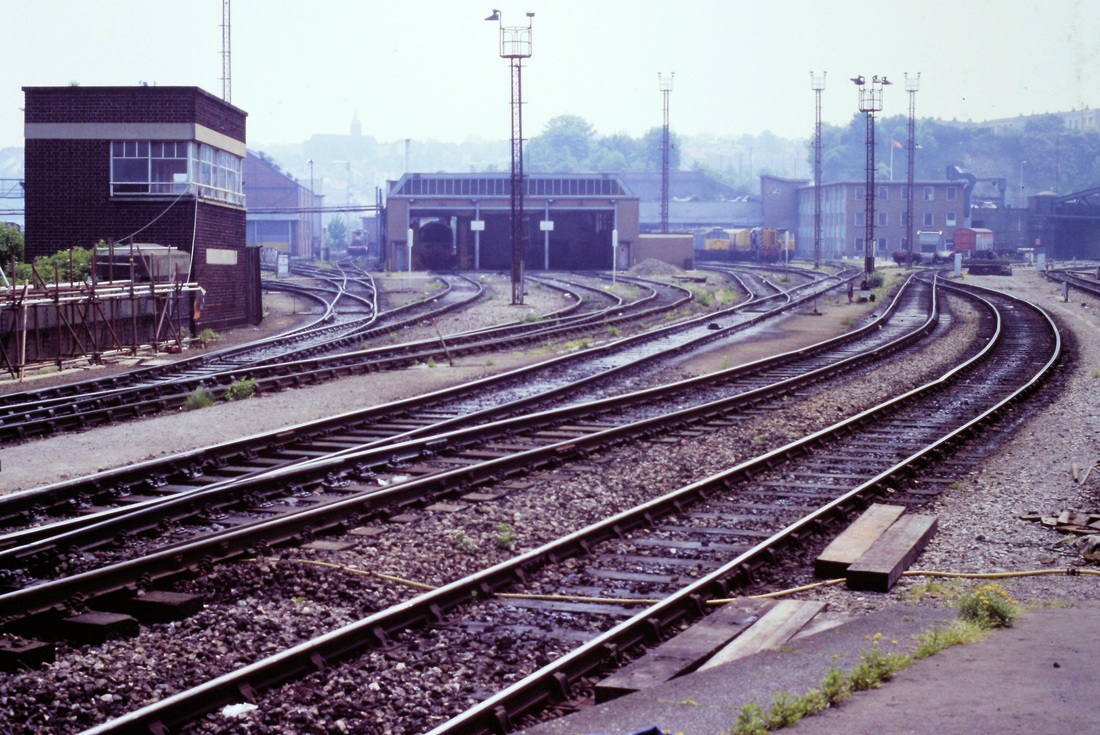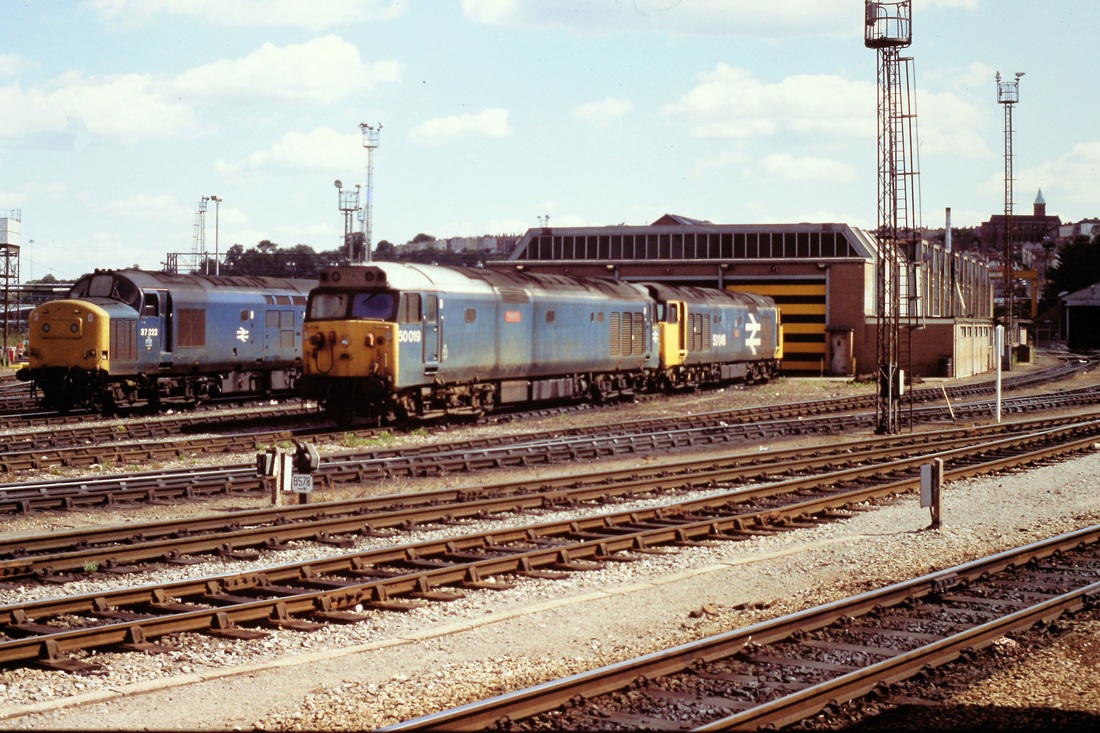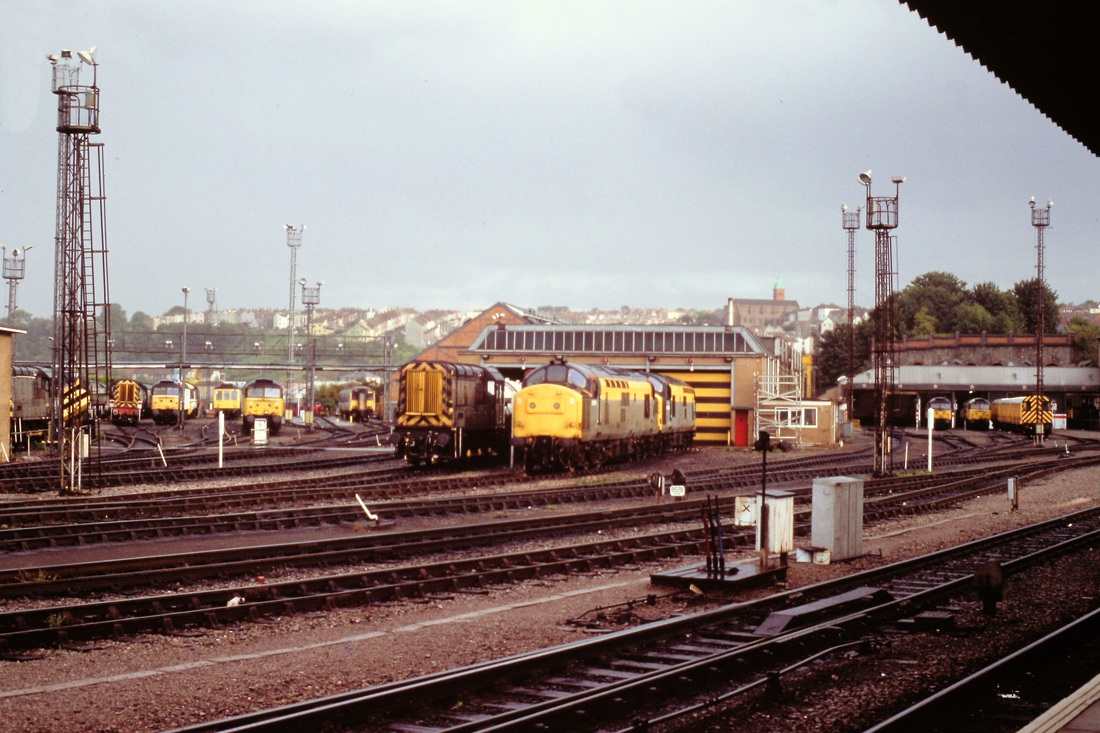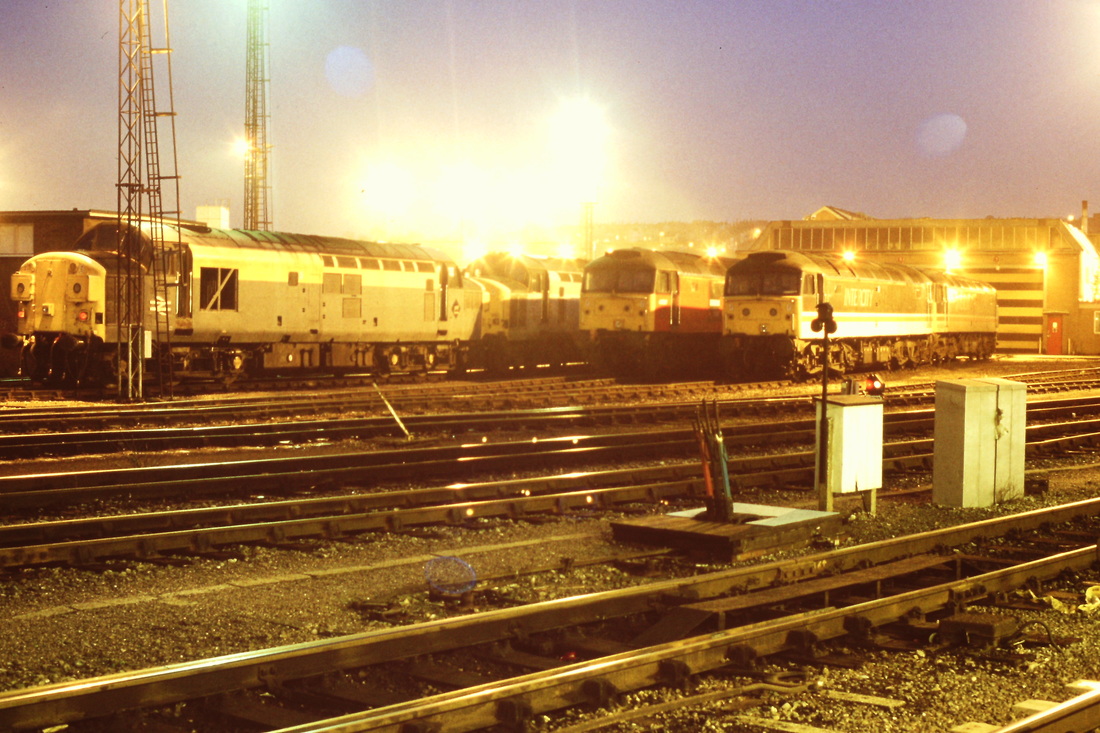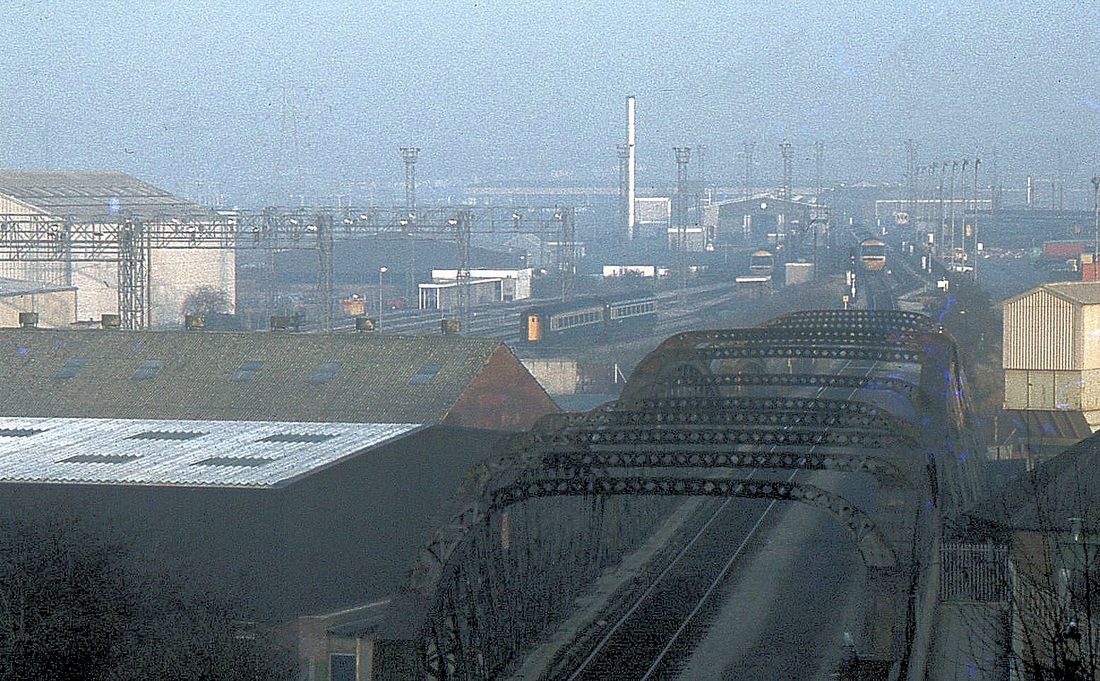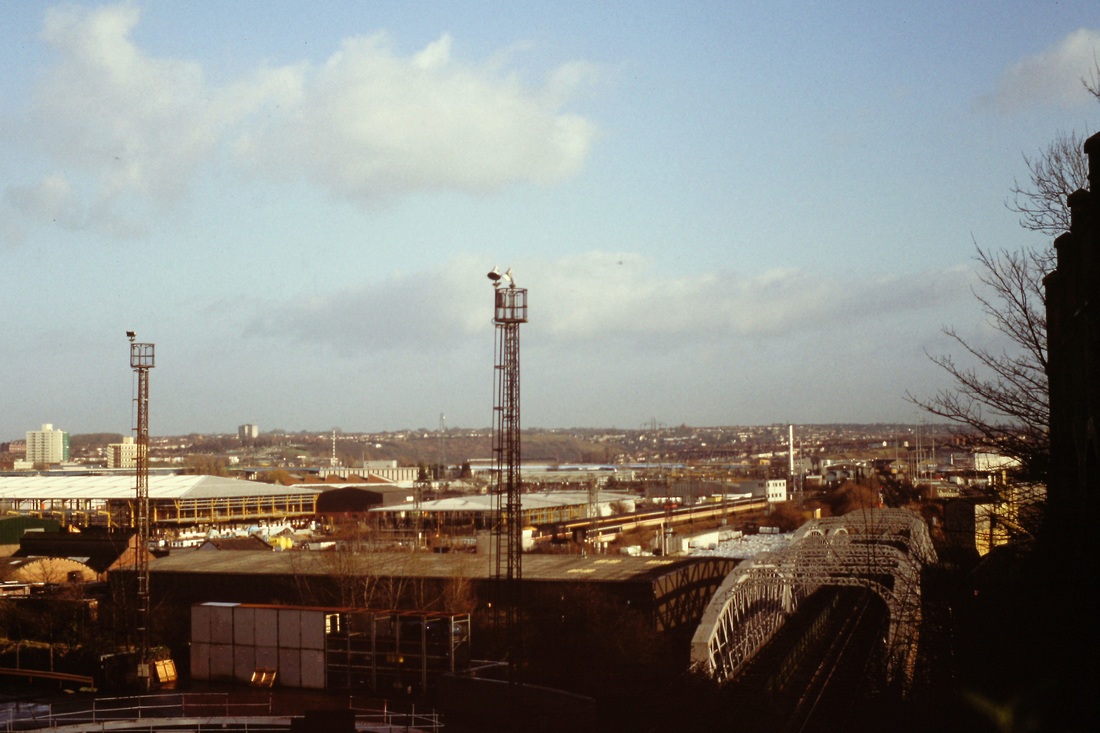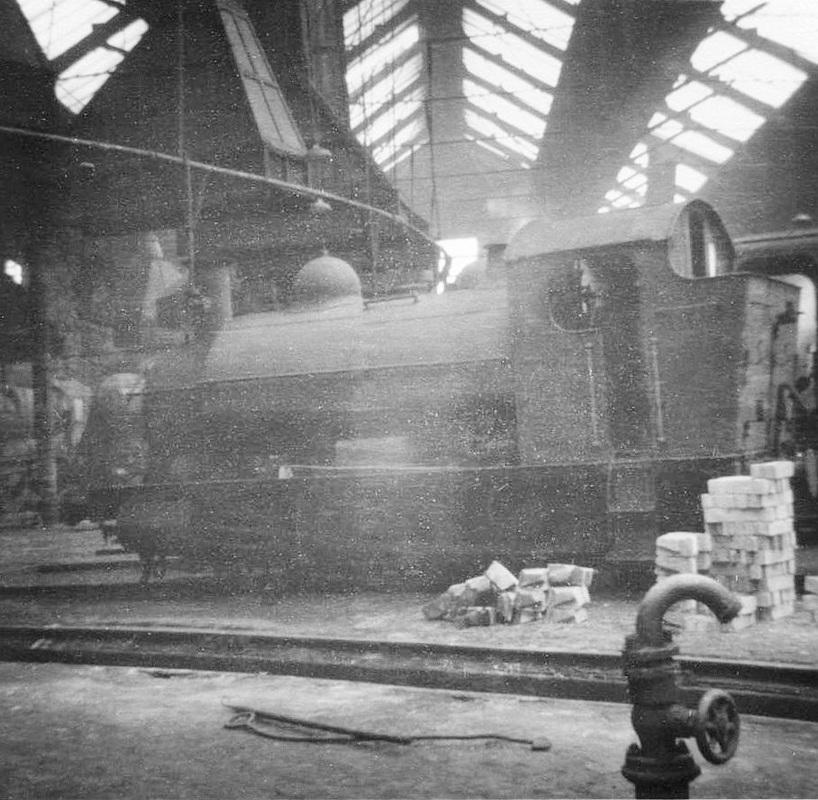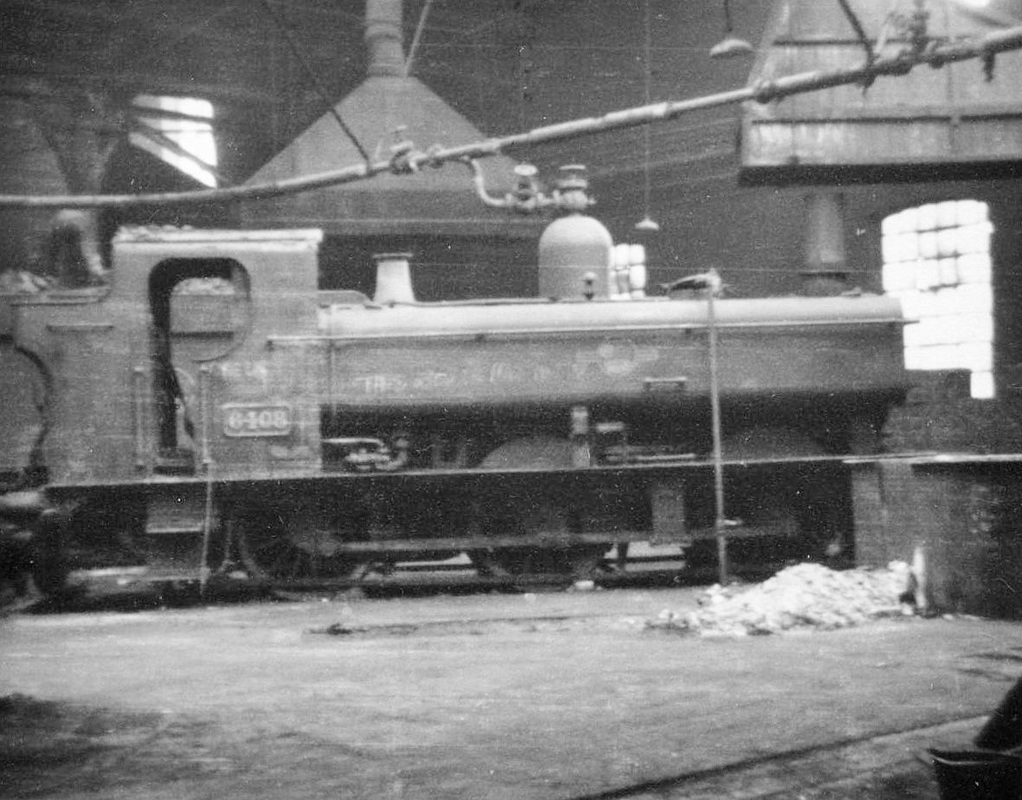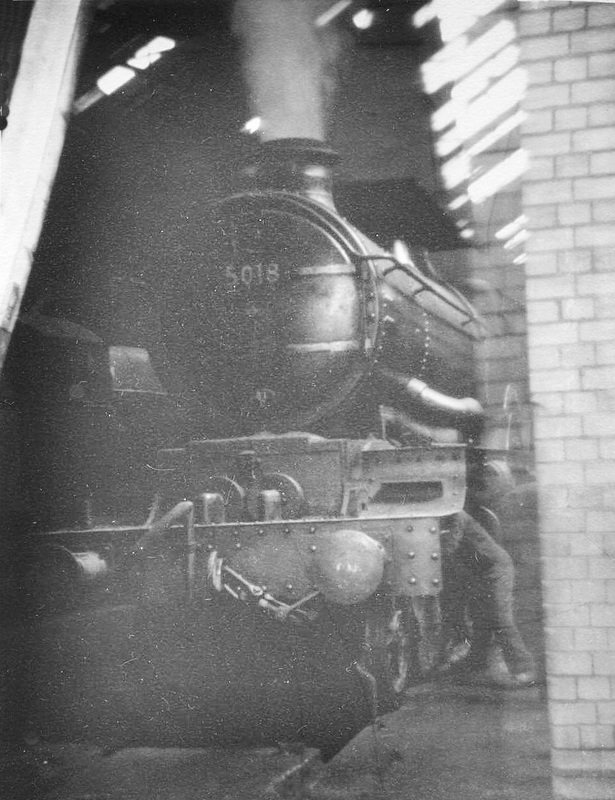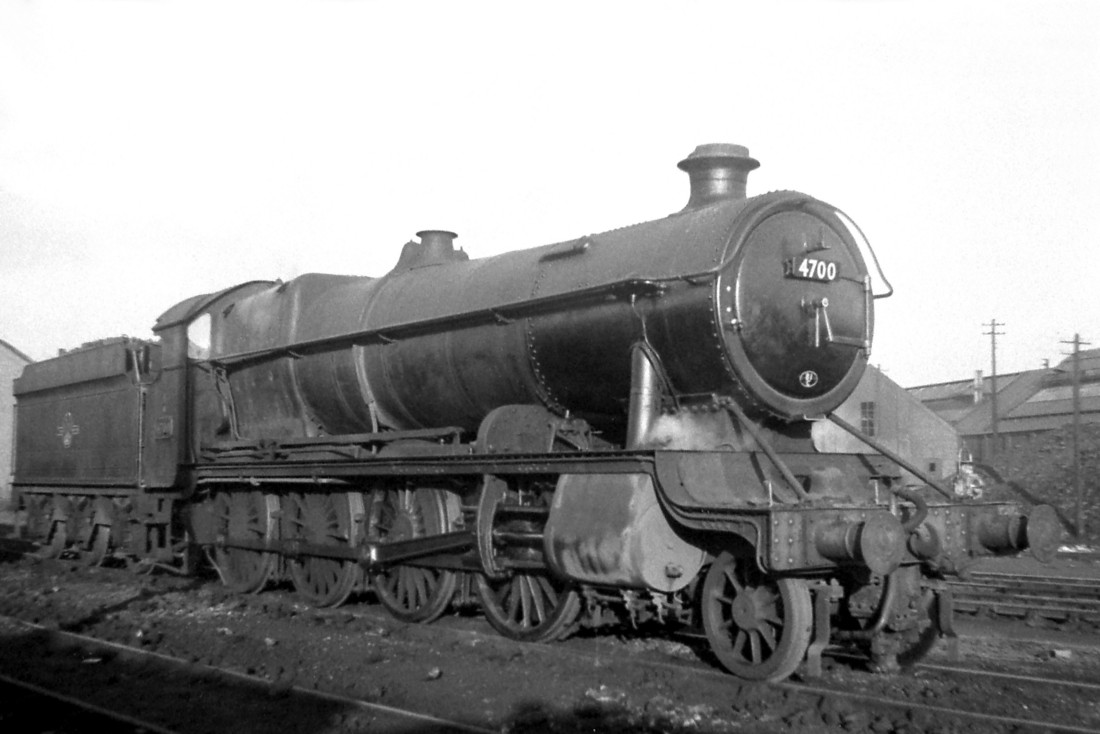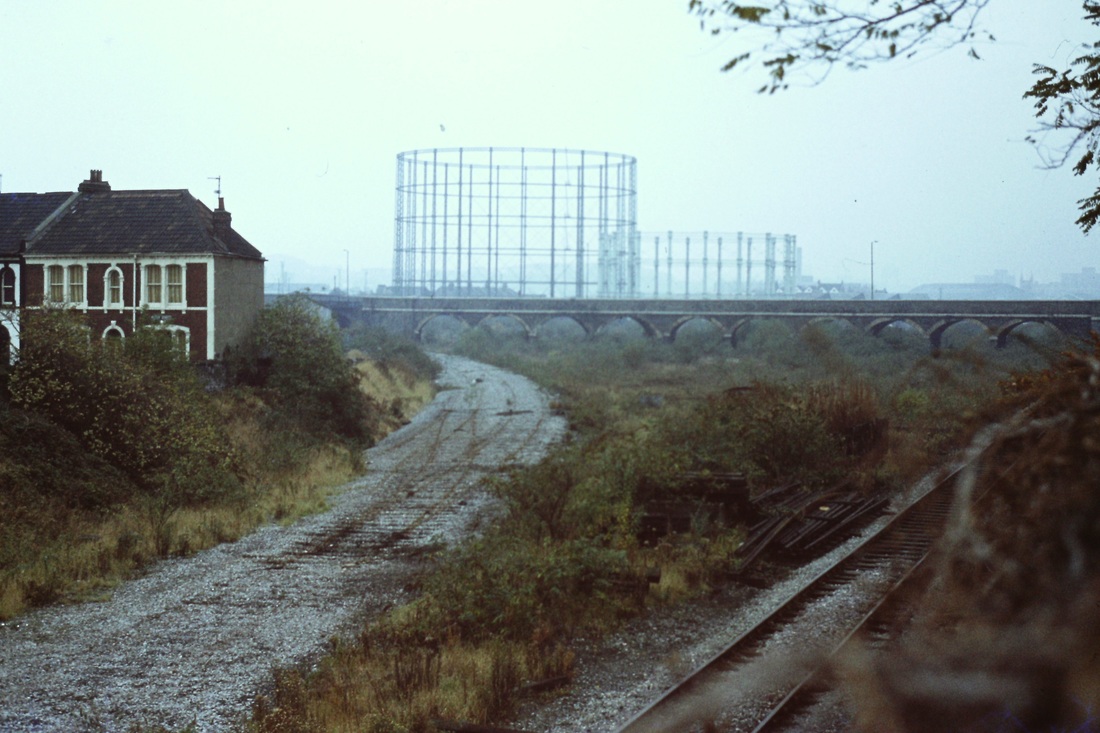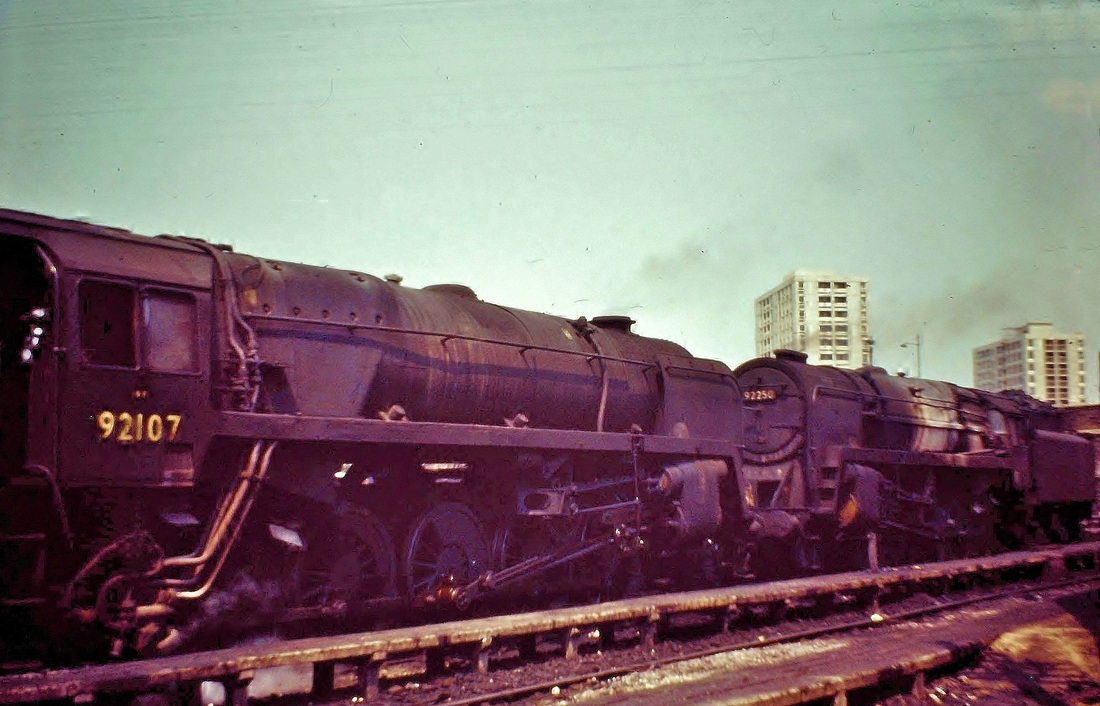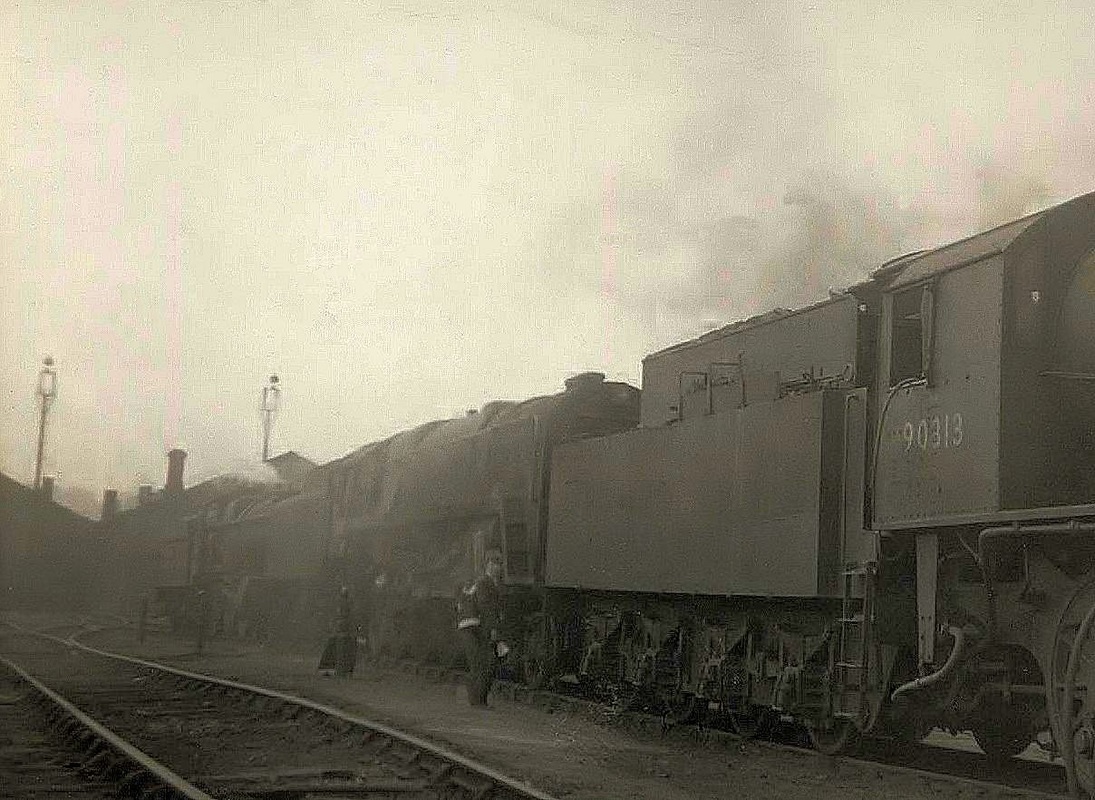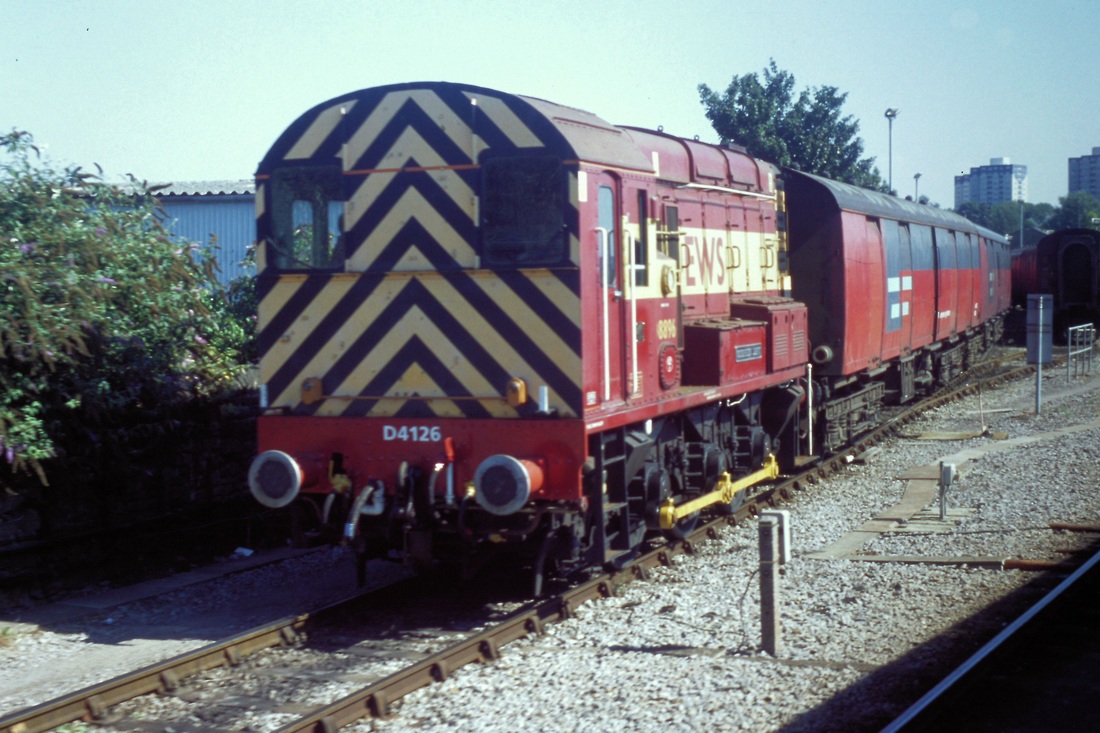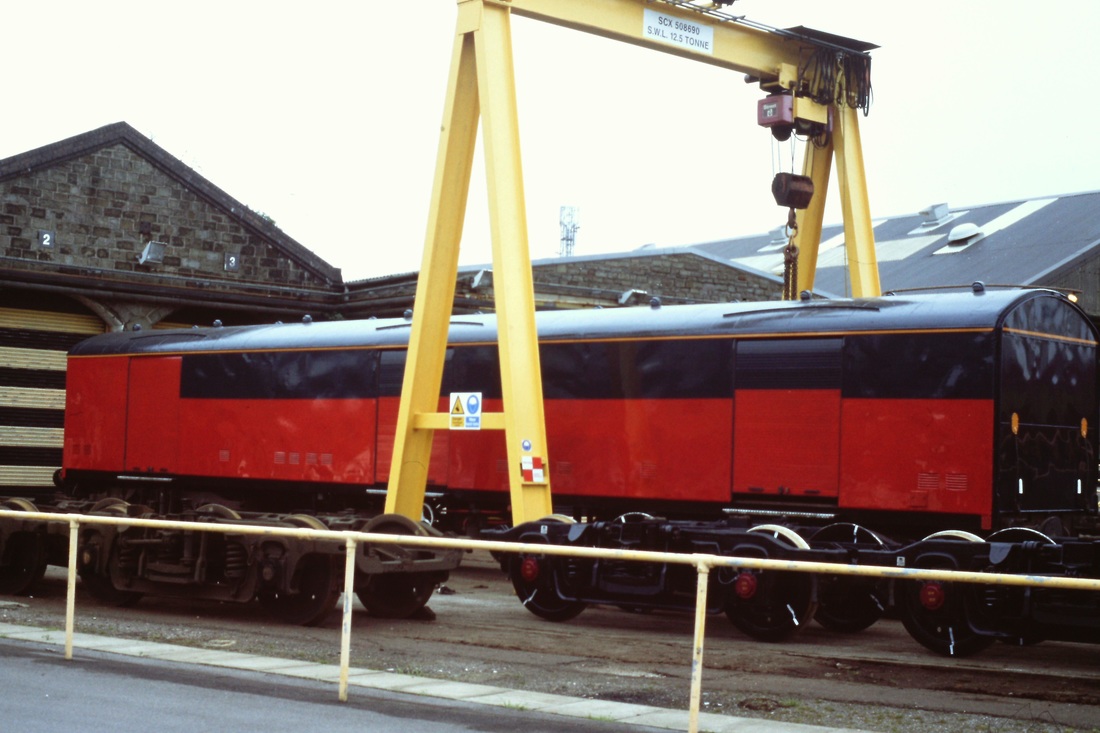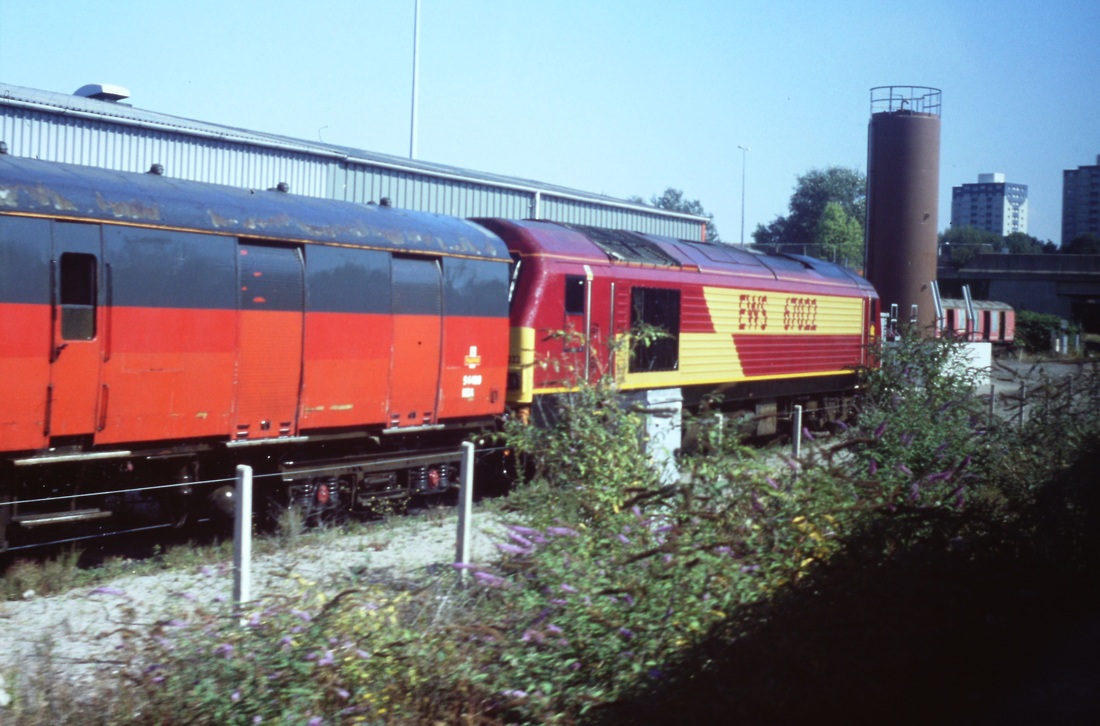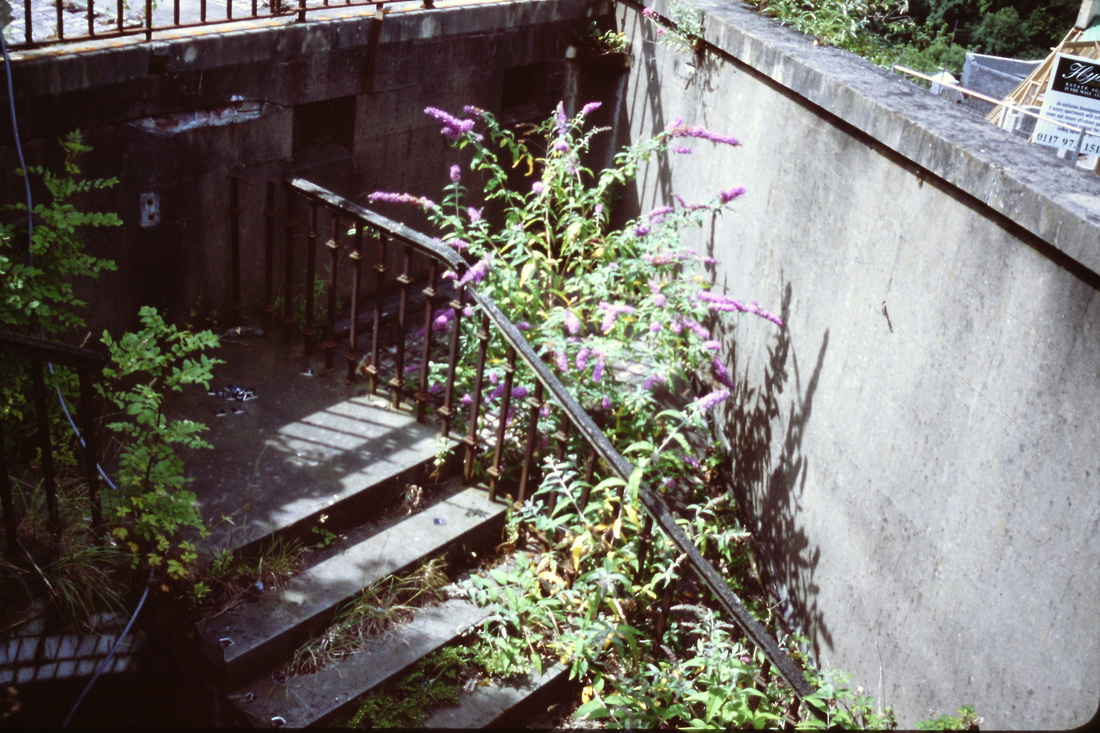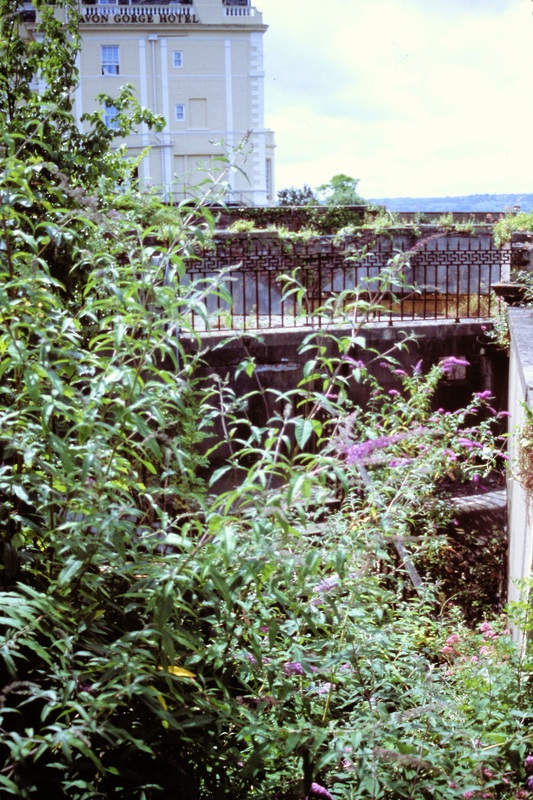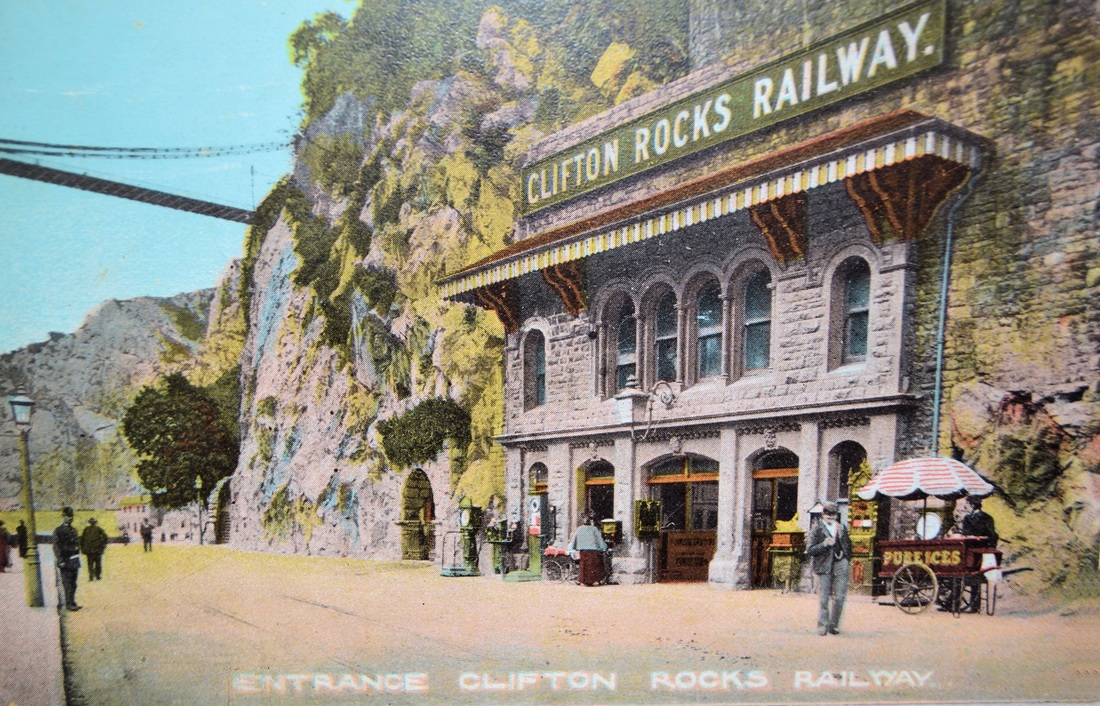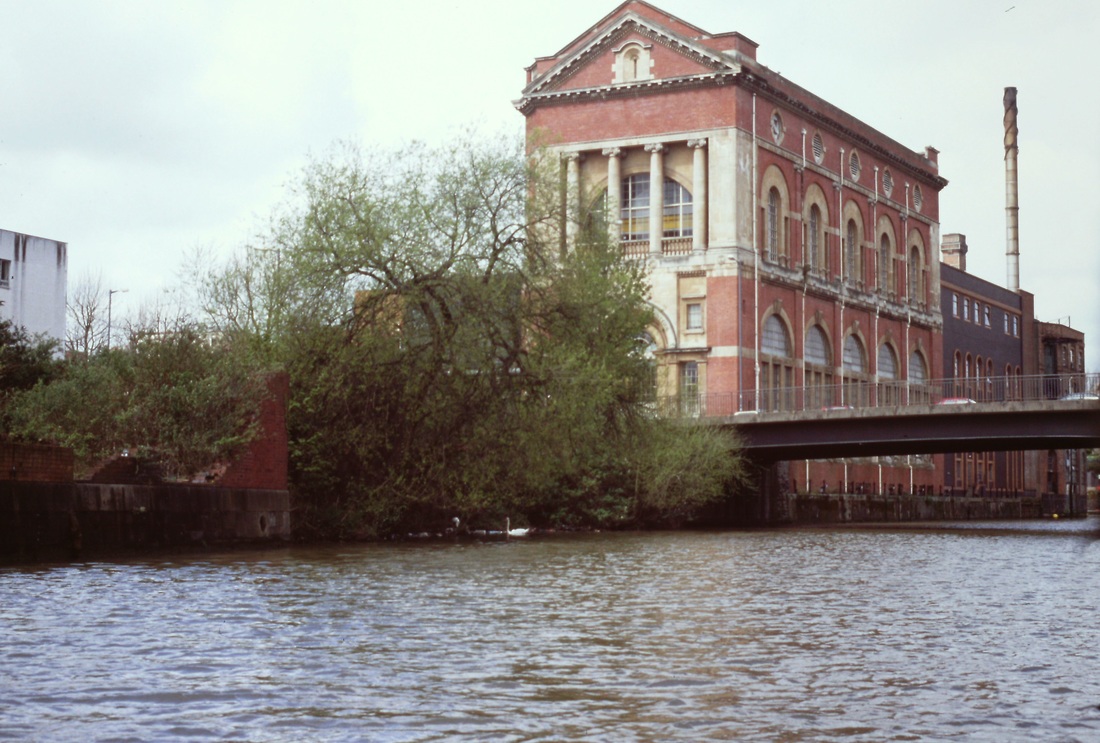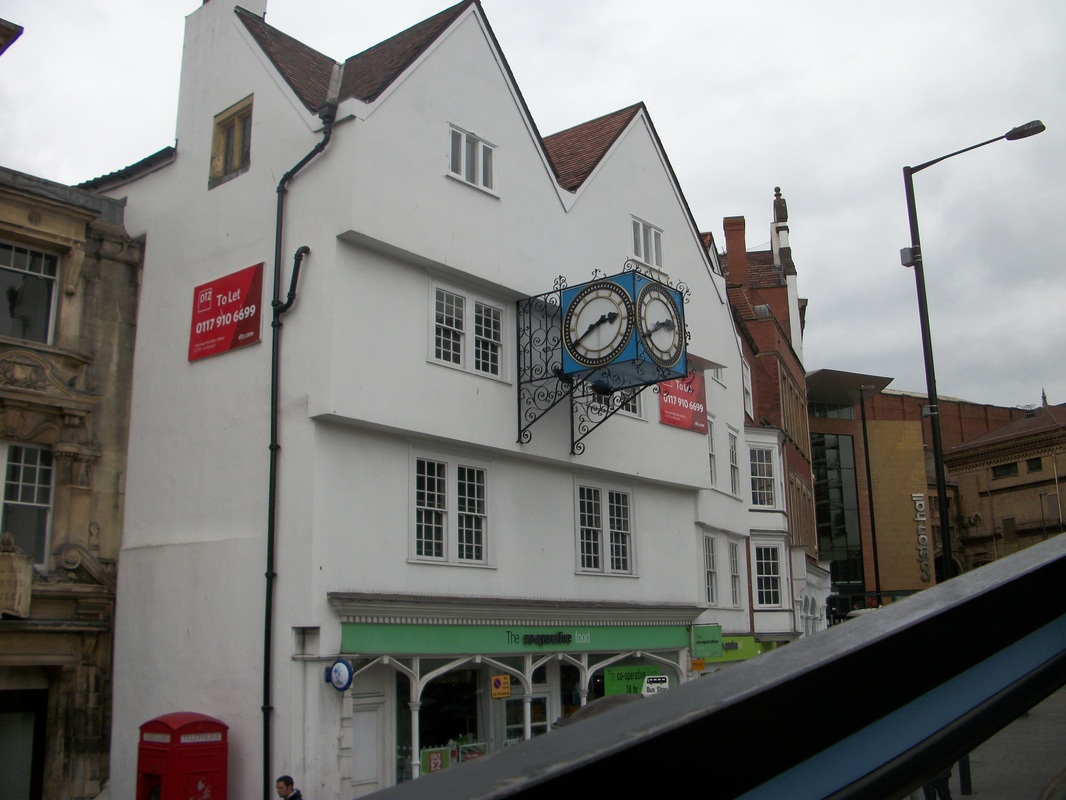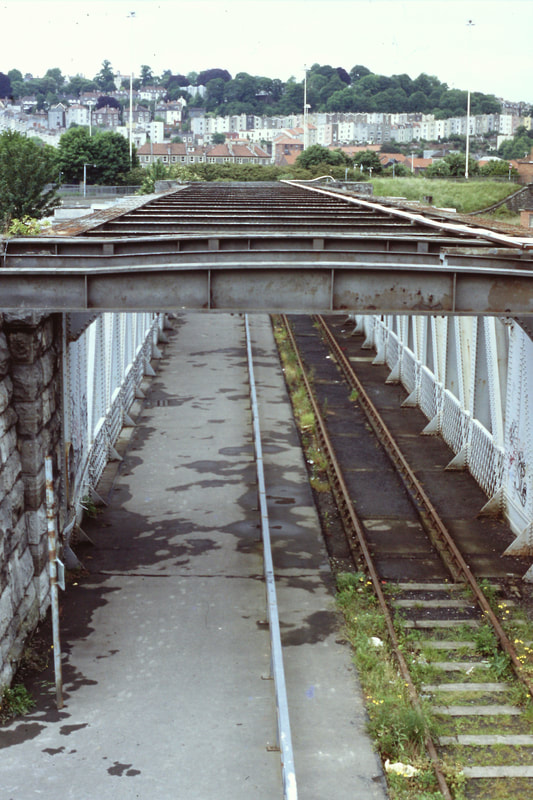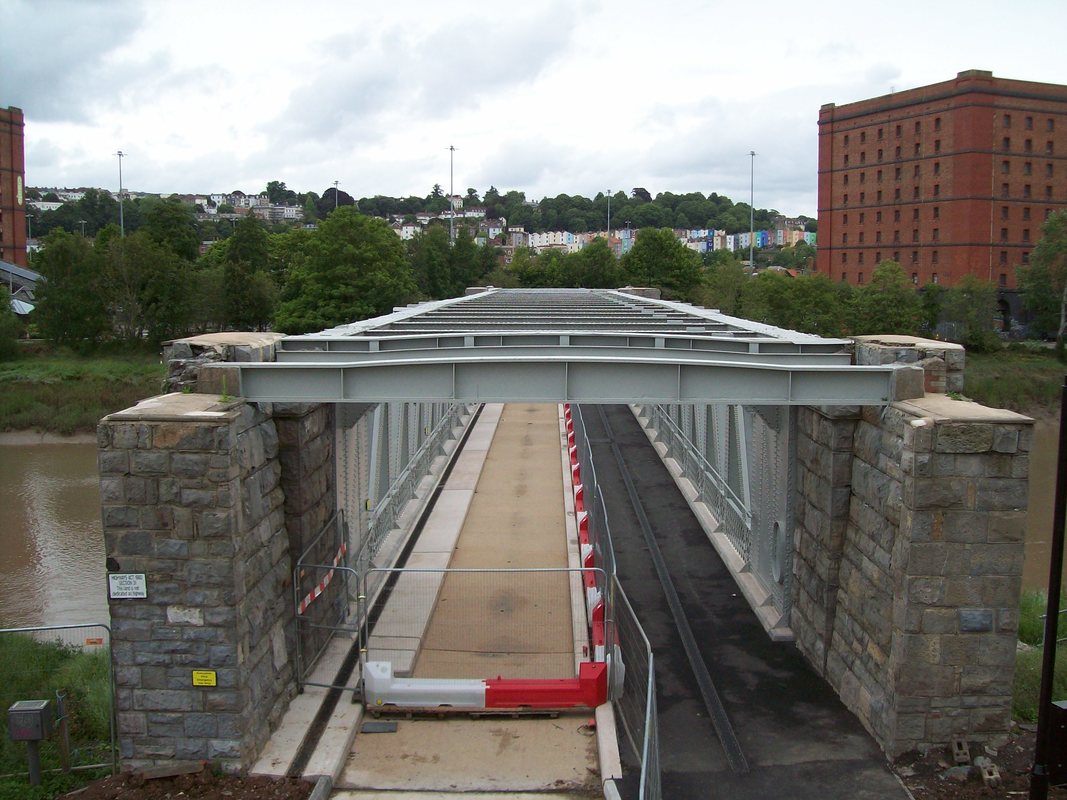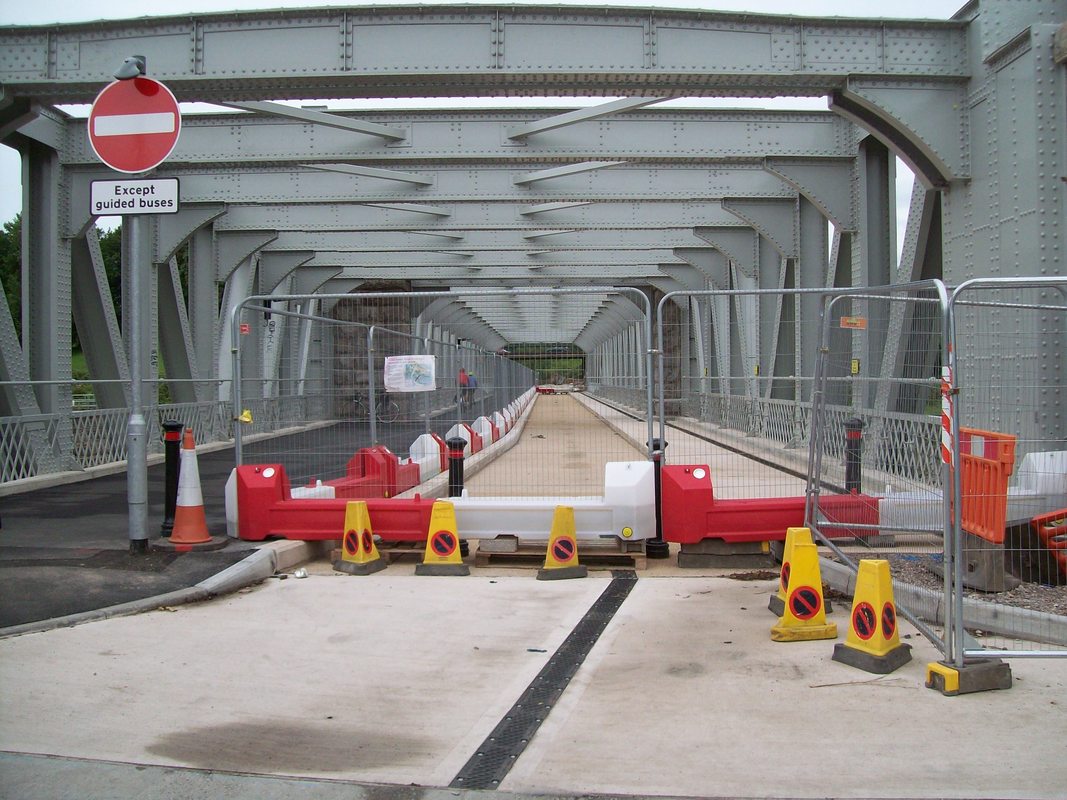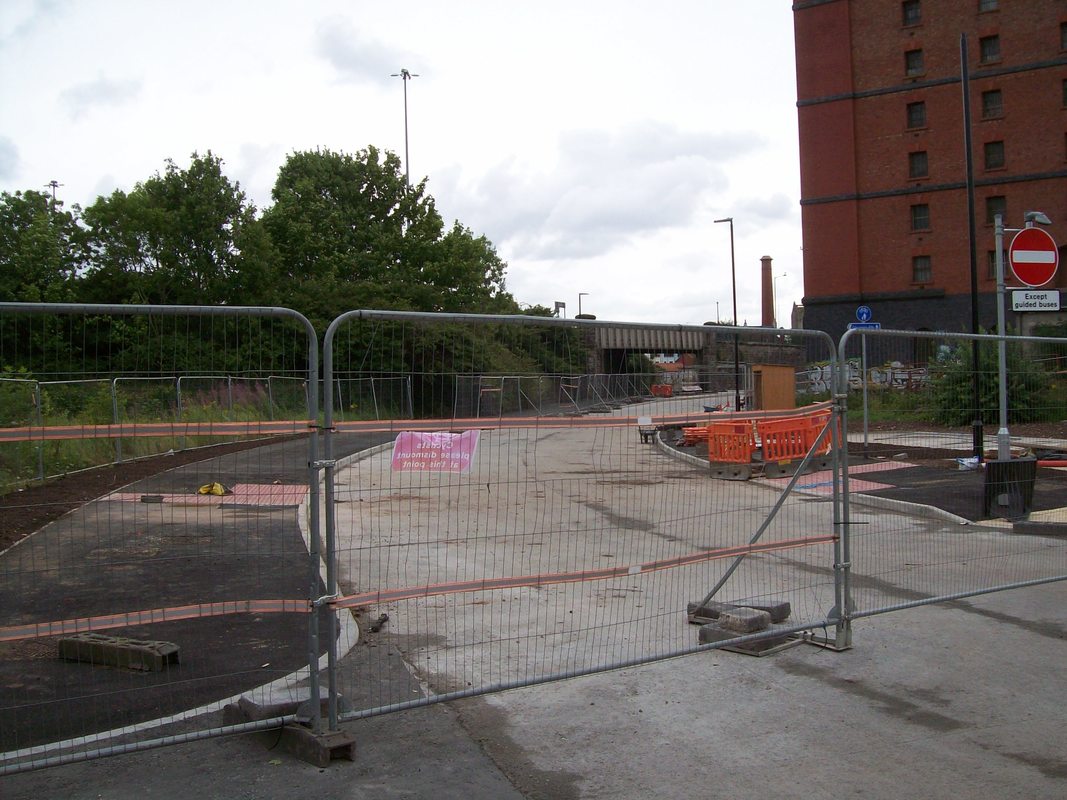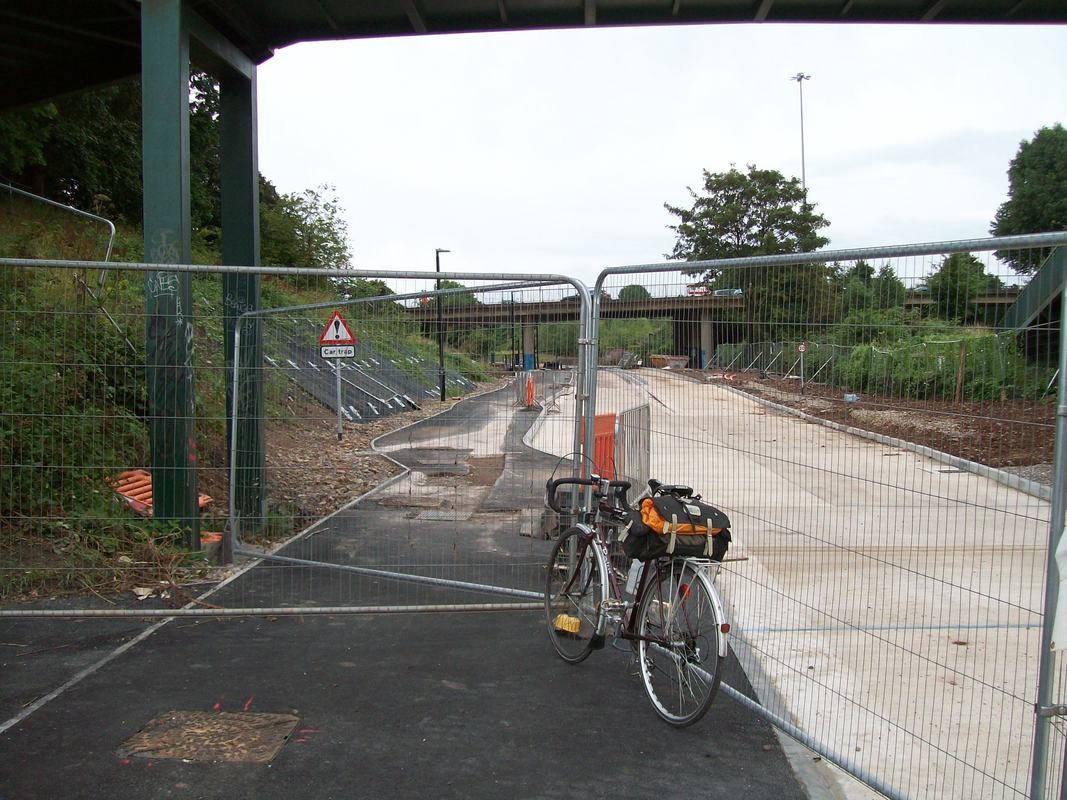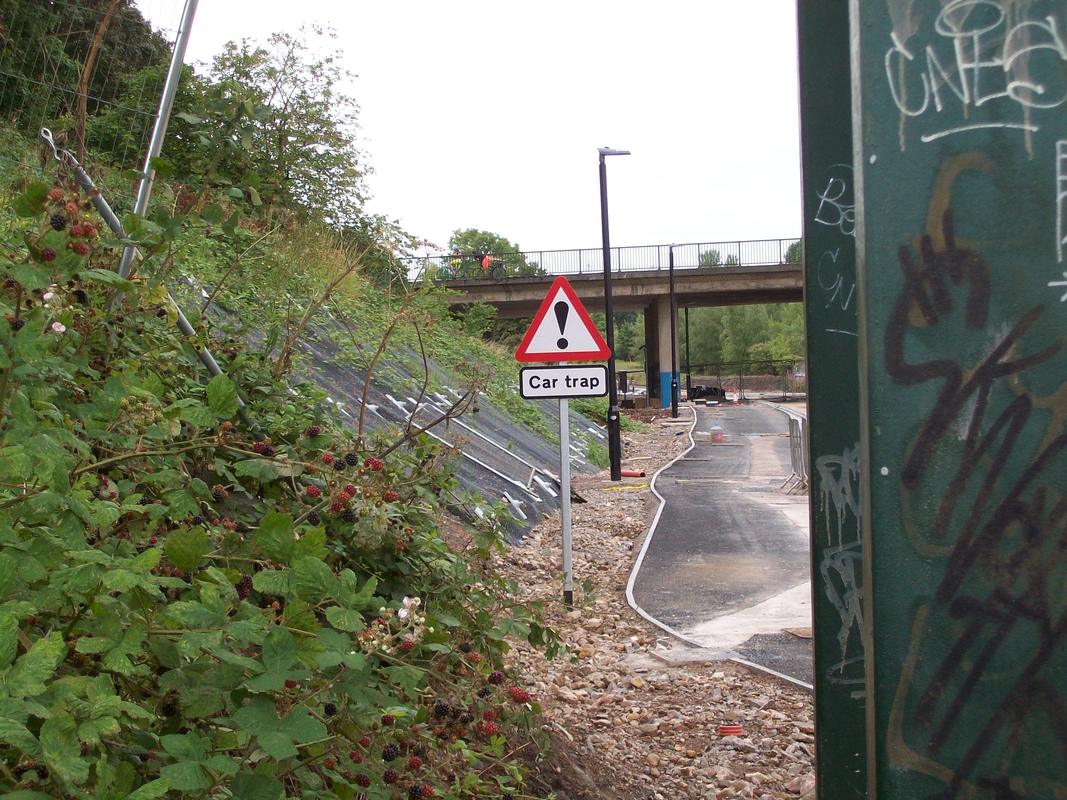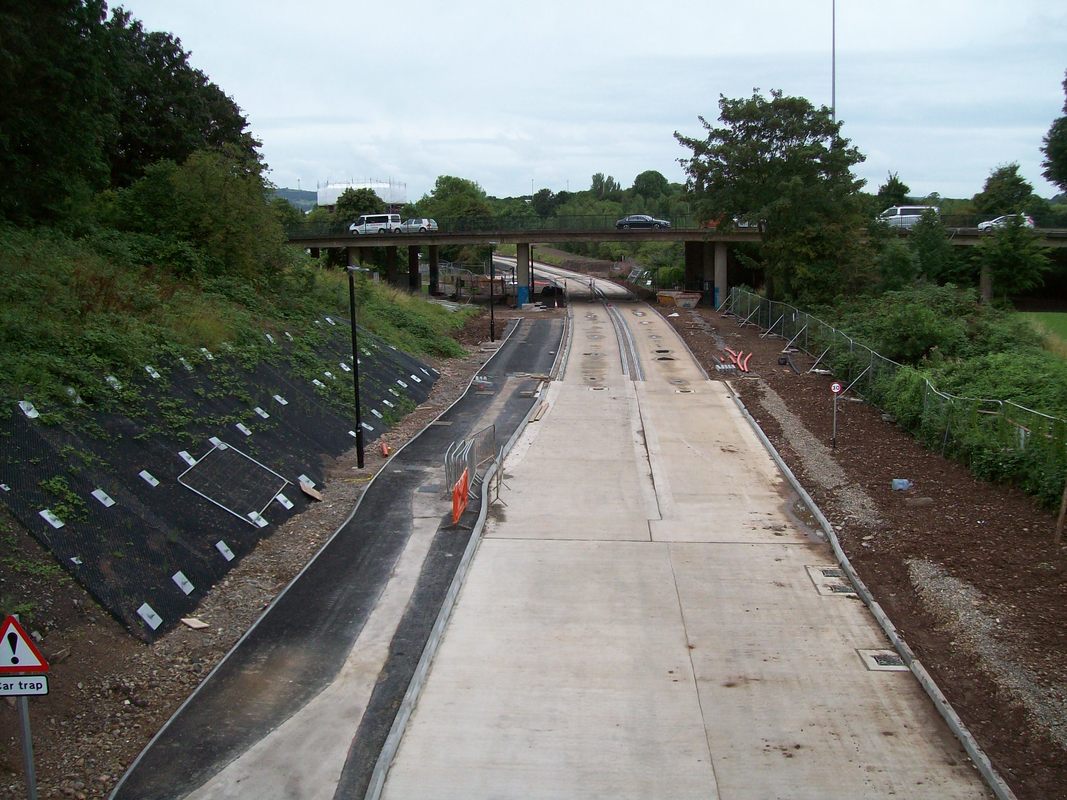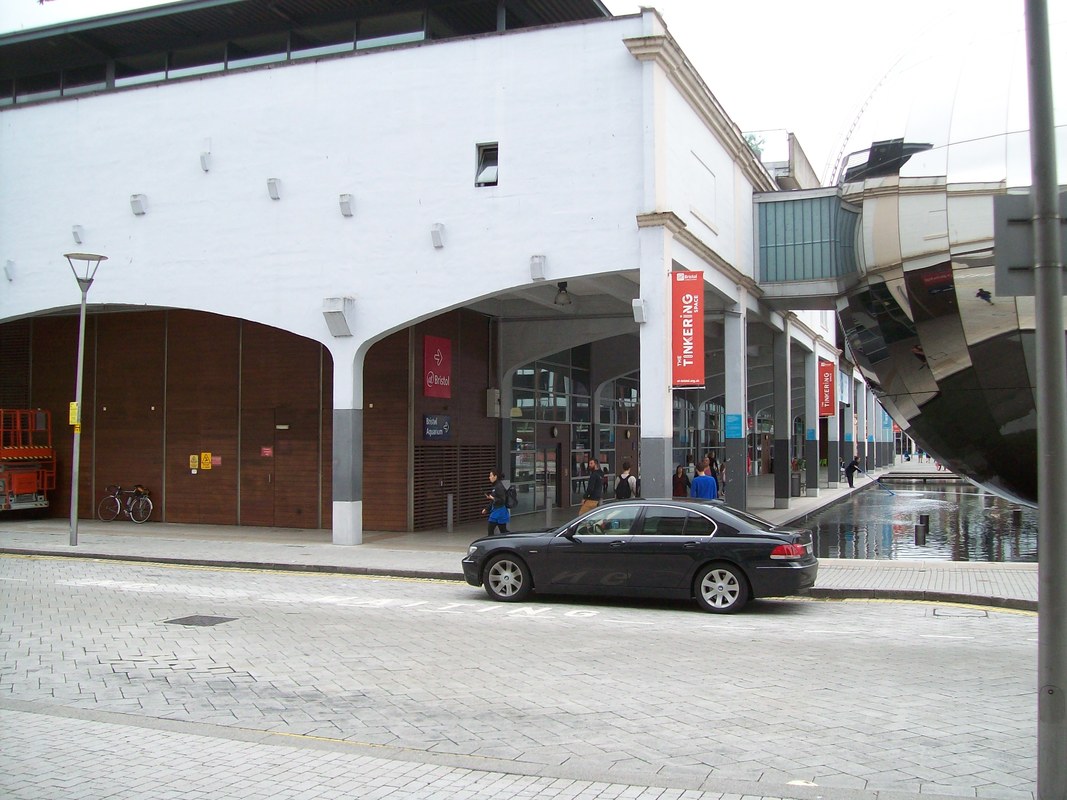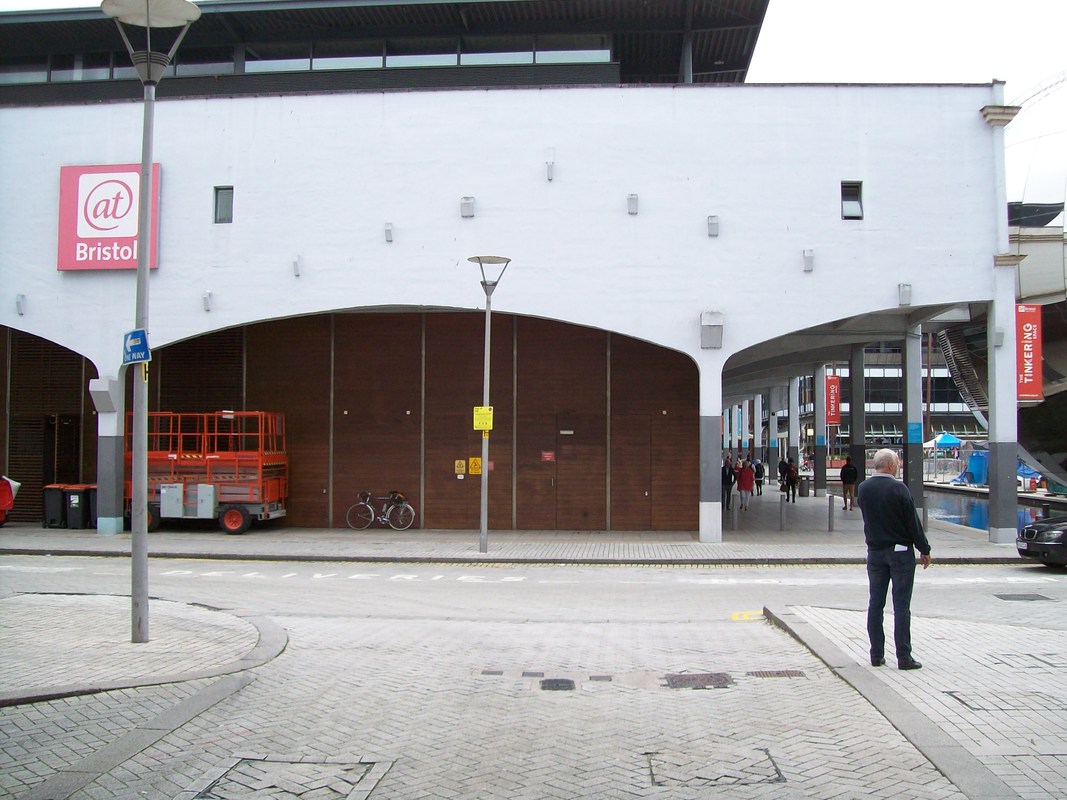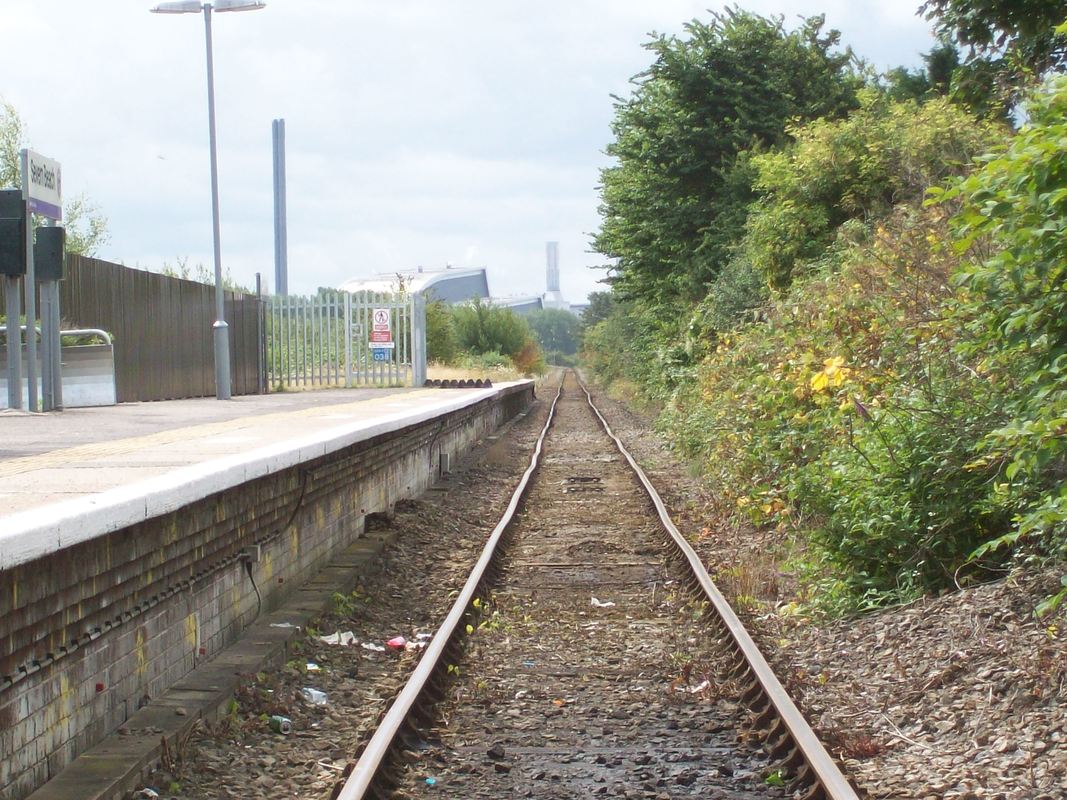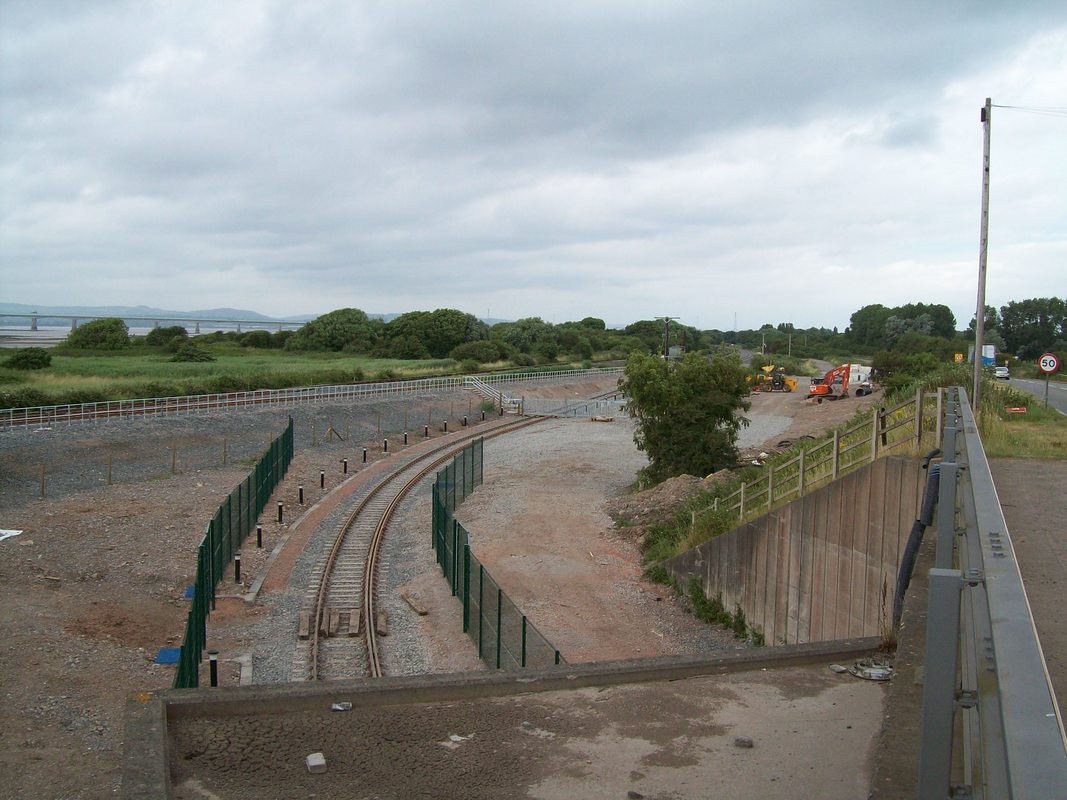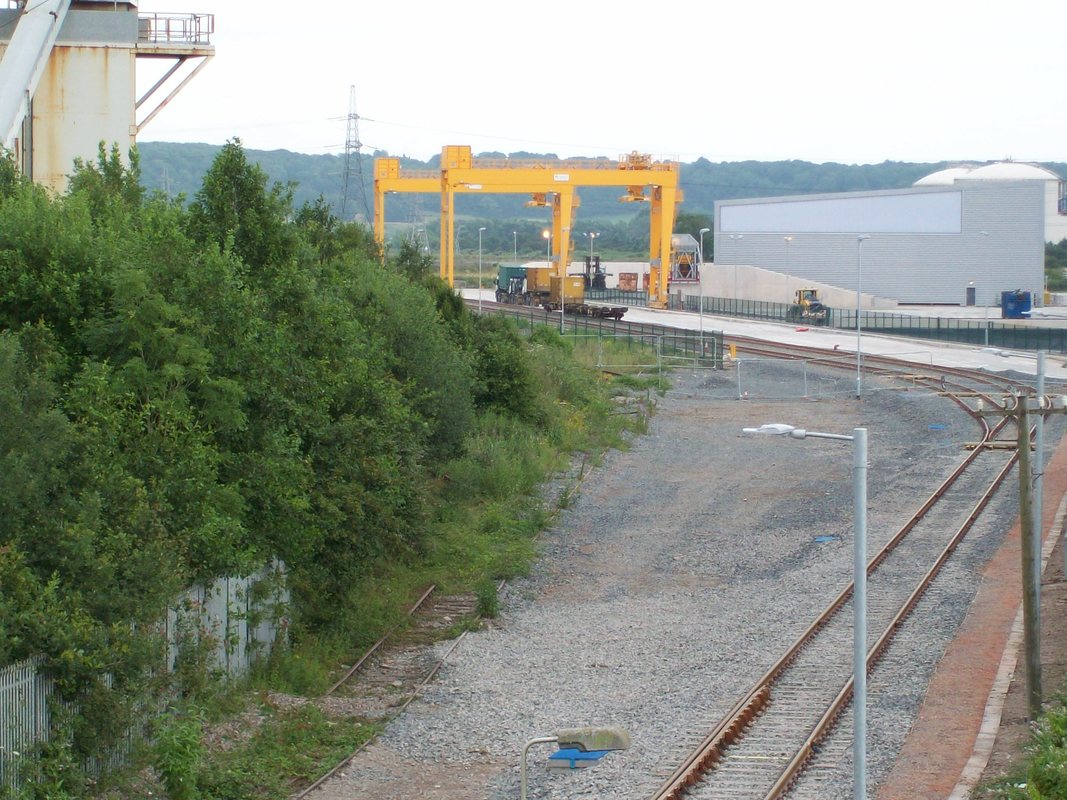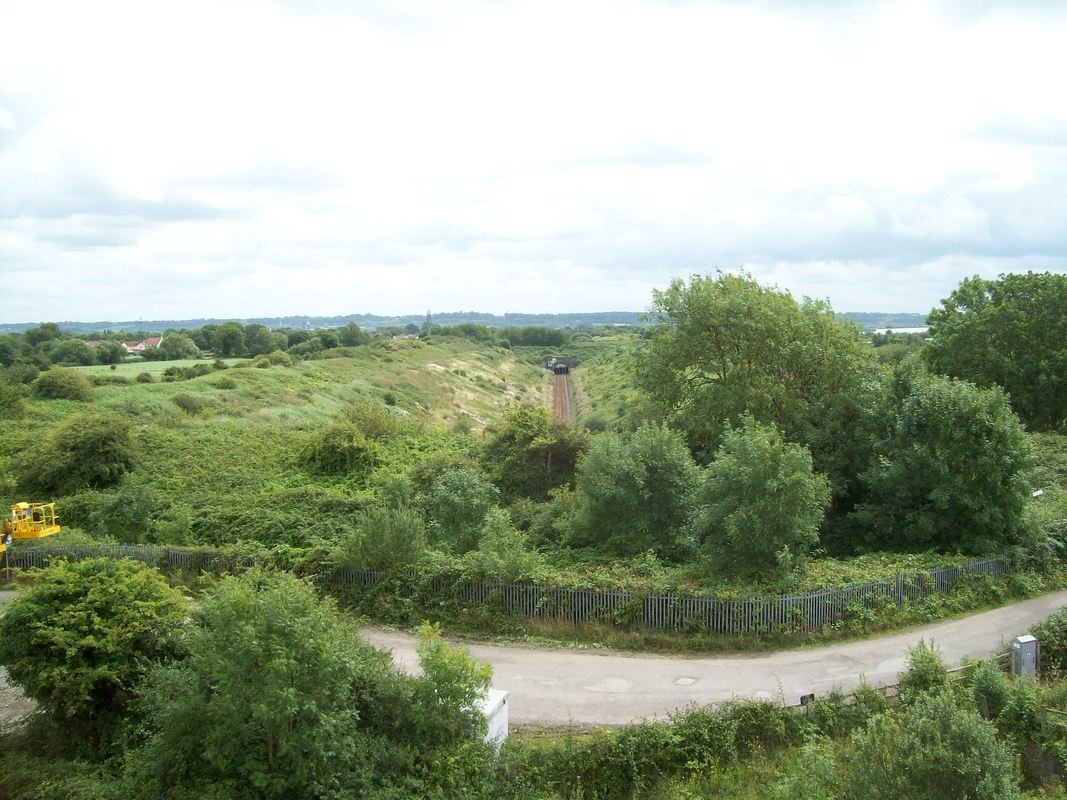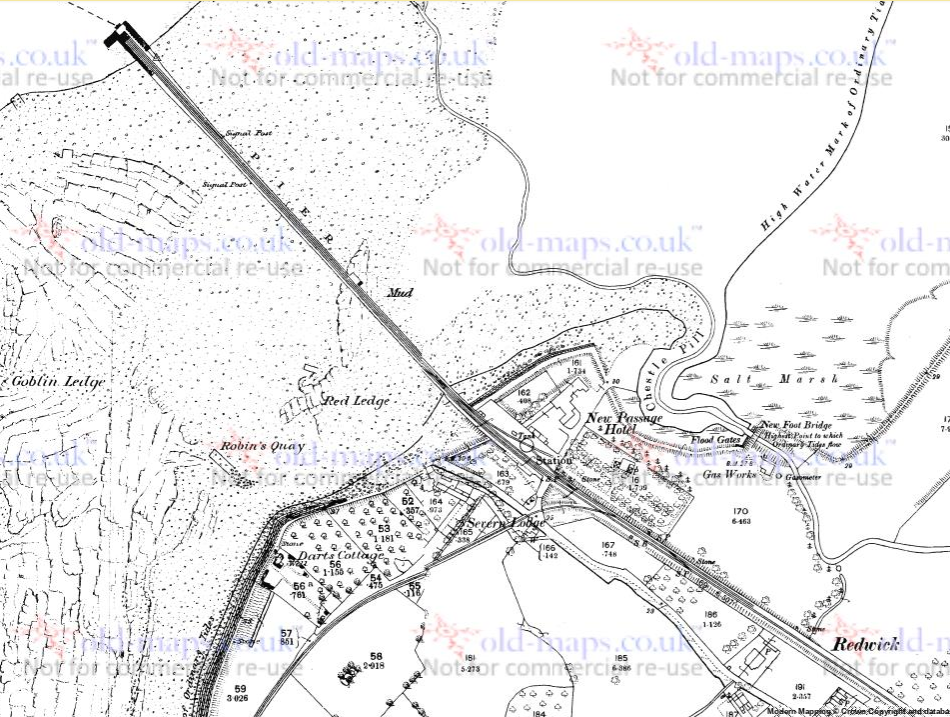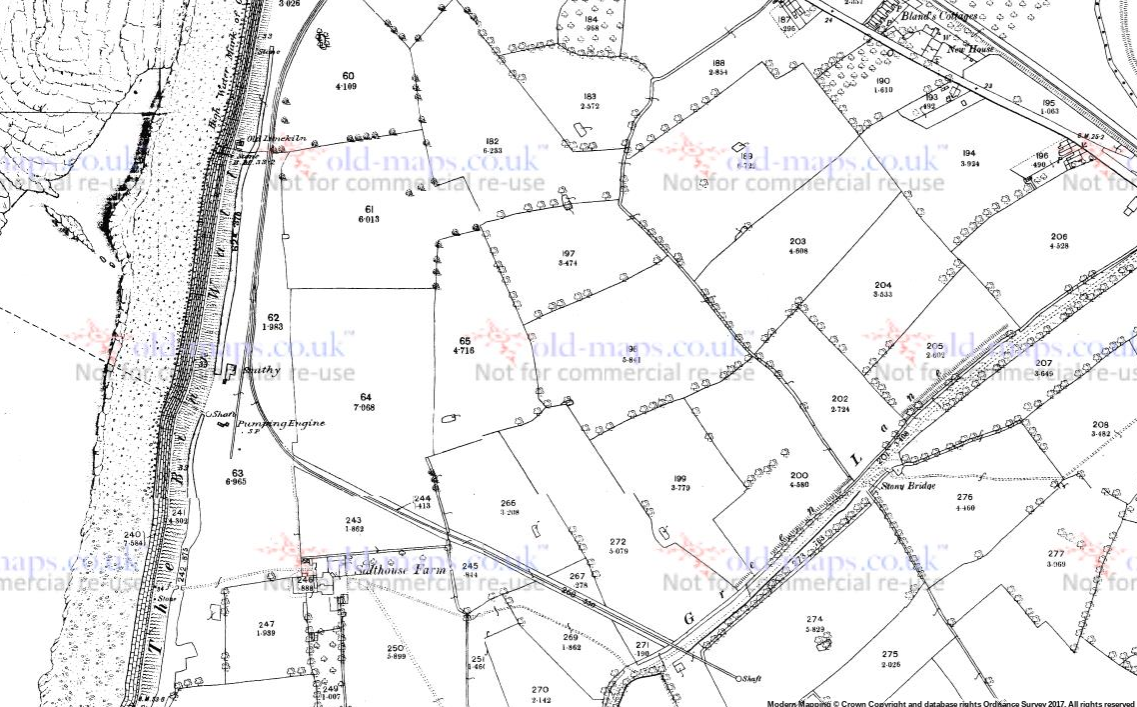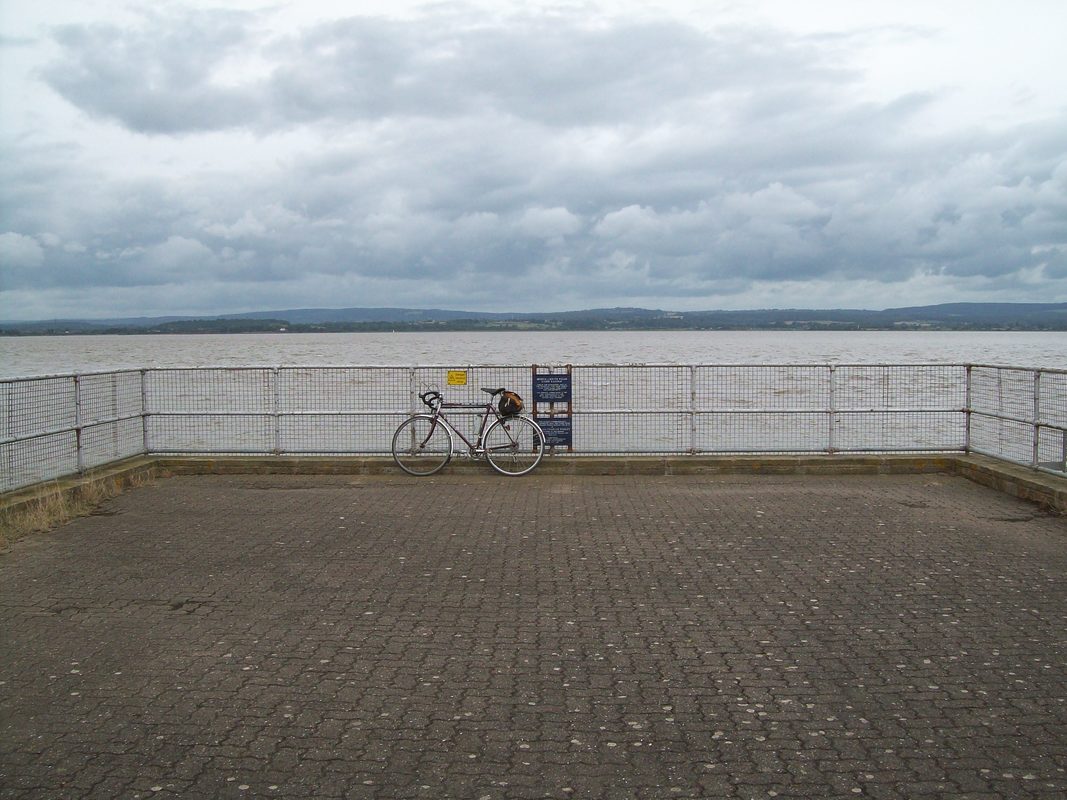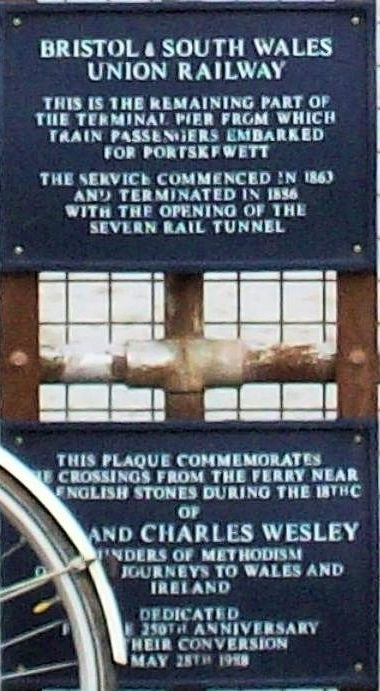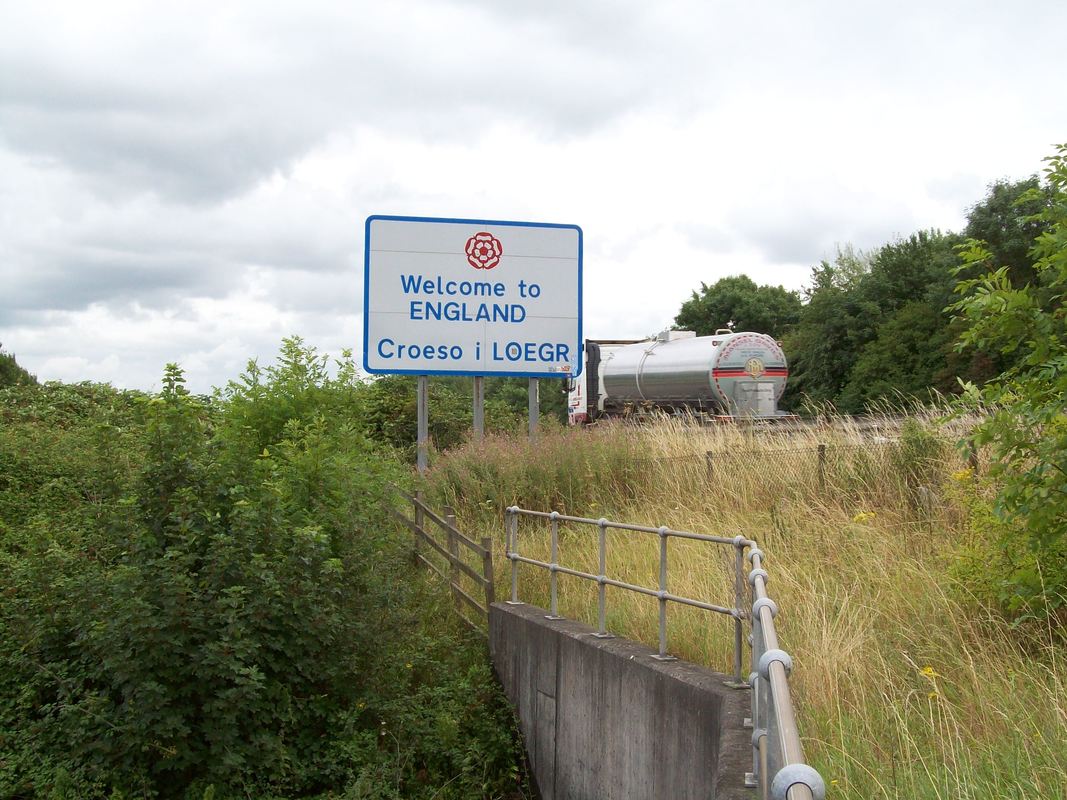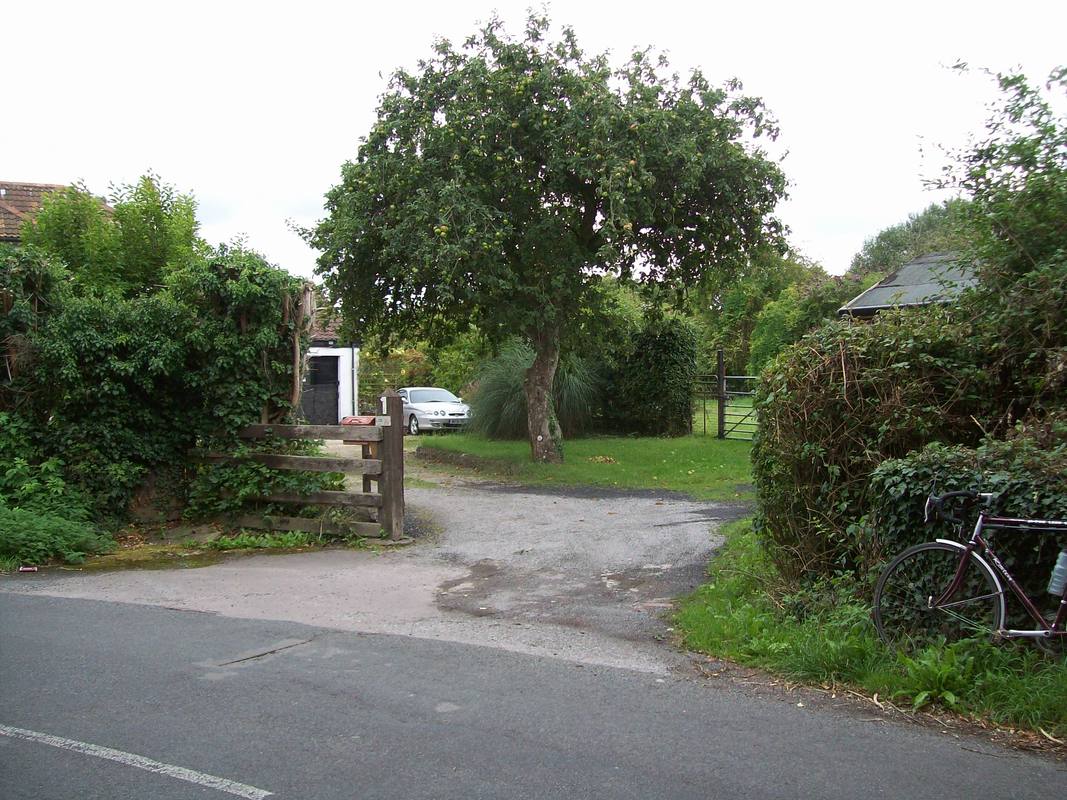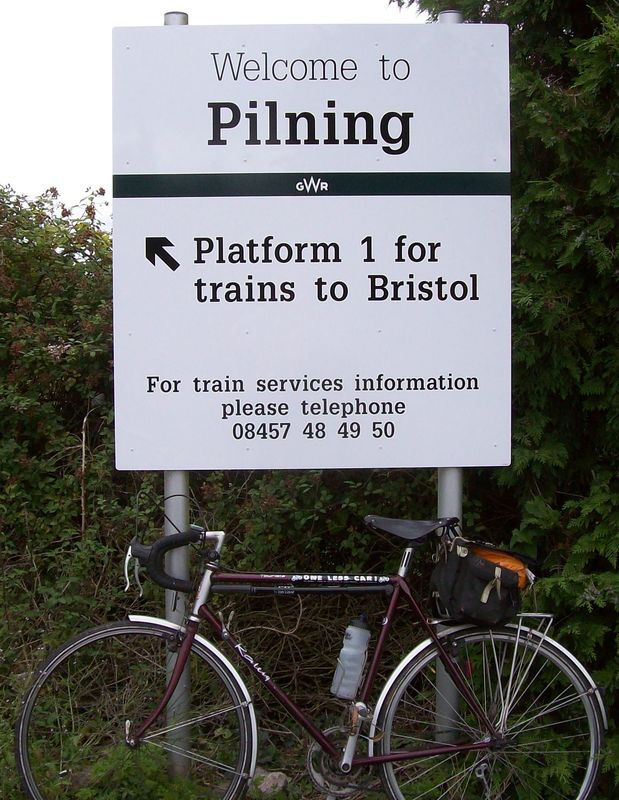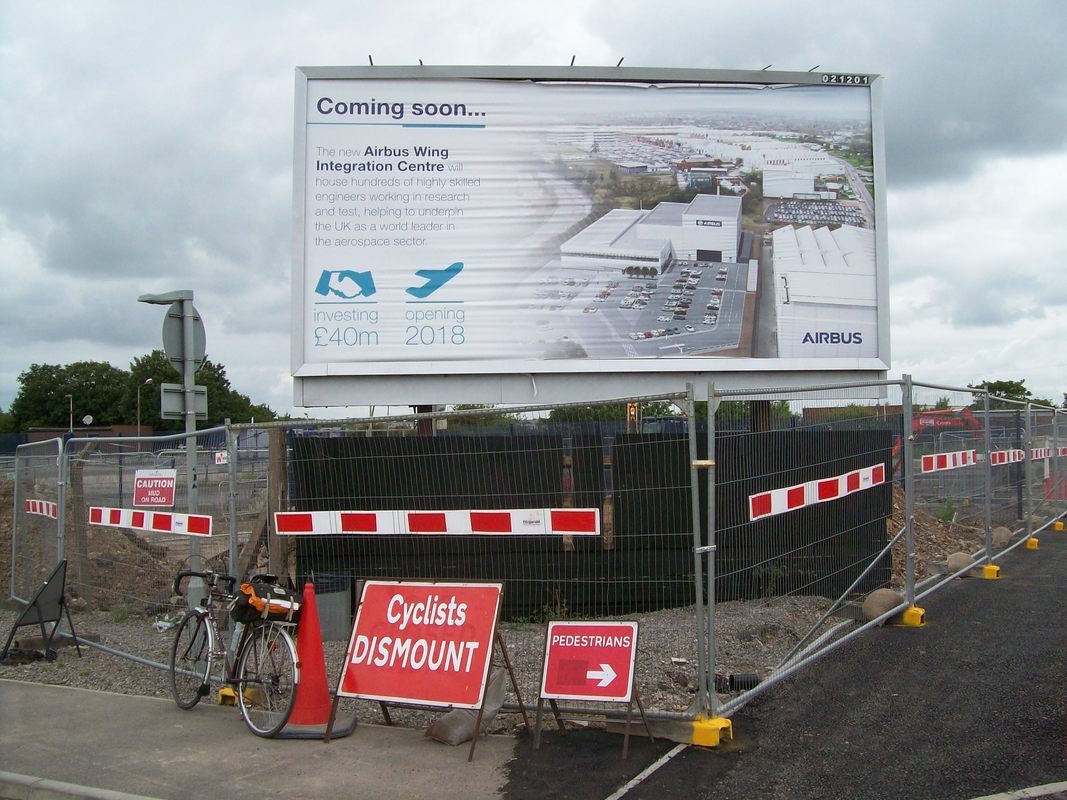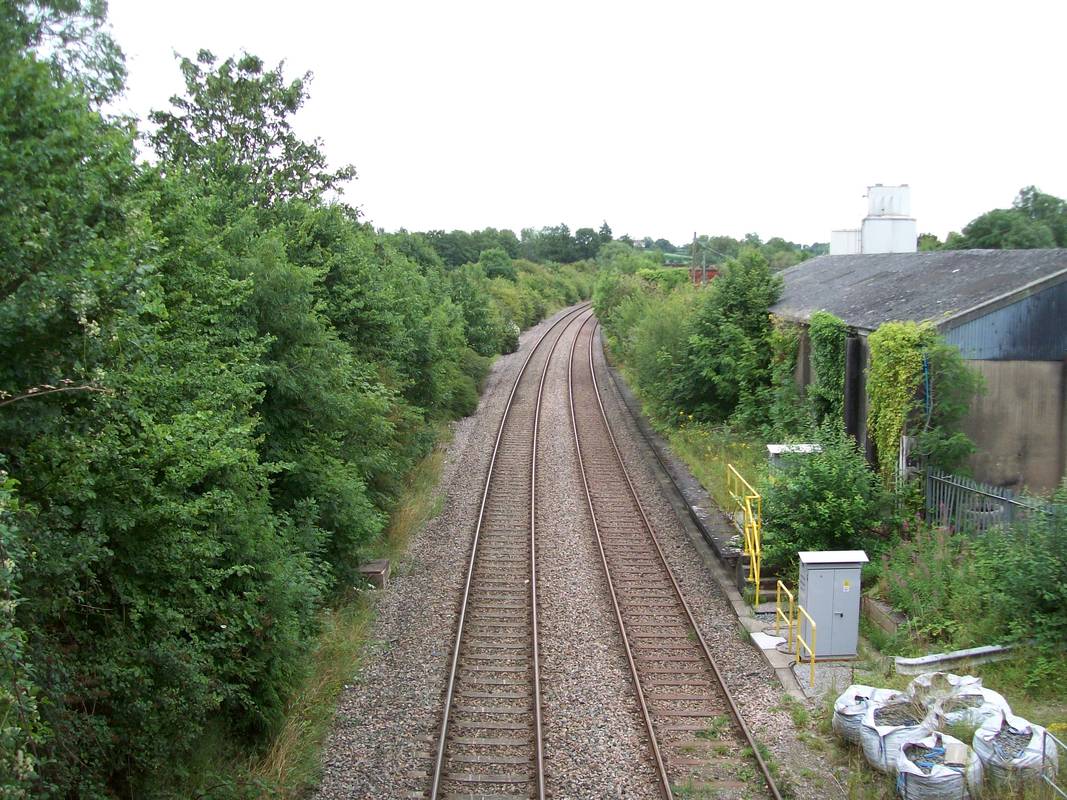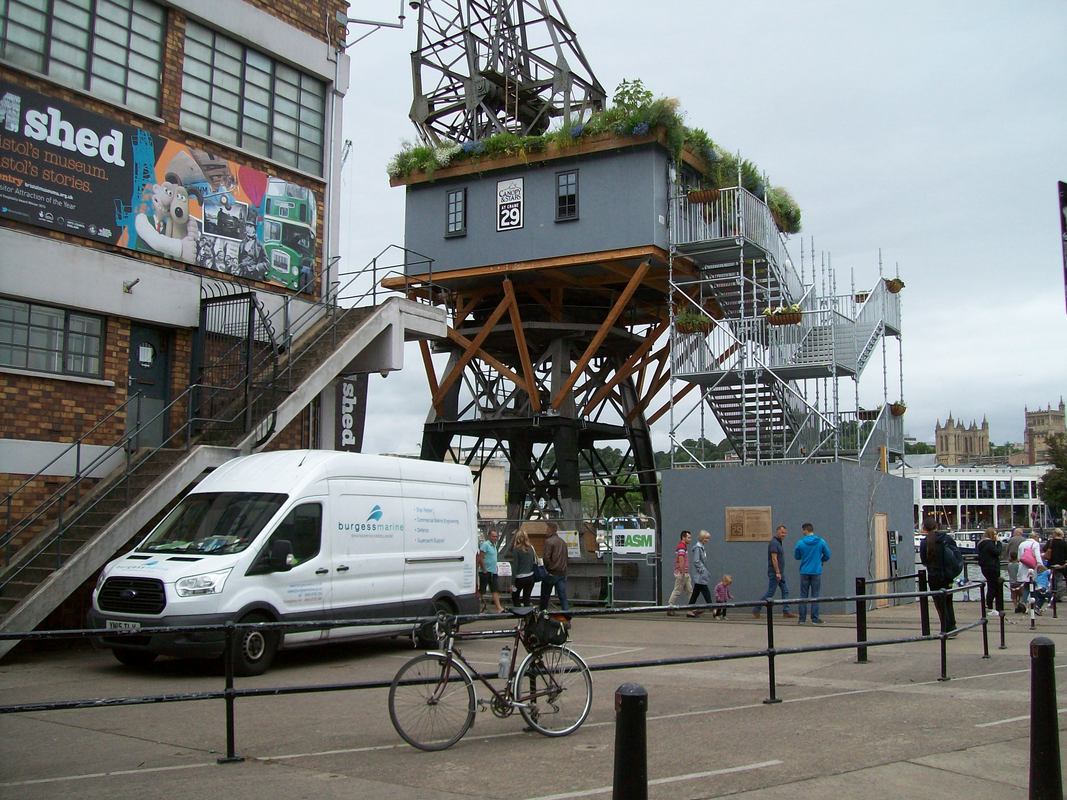Bristol
Temple Meads Station,
Bristol Harbour,
Bristol Sheds
& Clifton Rocks Railway
In addition Colin Burges visits the Harbour area in 2016
Temple Meads Station,
Bristol Harbour,
Bristol Sheds
& Clifton Rocks Railway
In addition Colin Burges visits the Harbour area in 2016
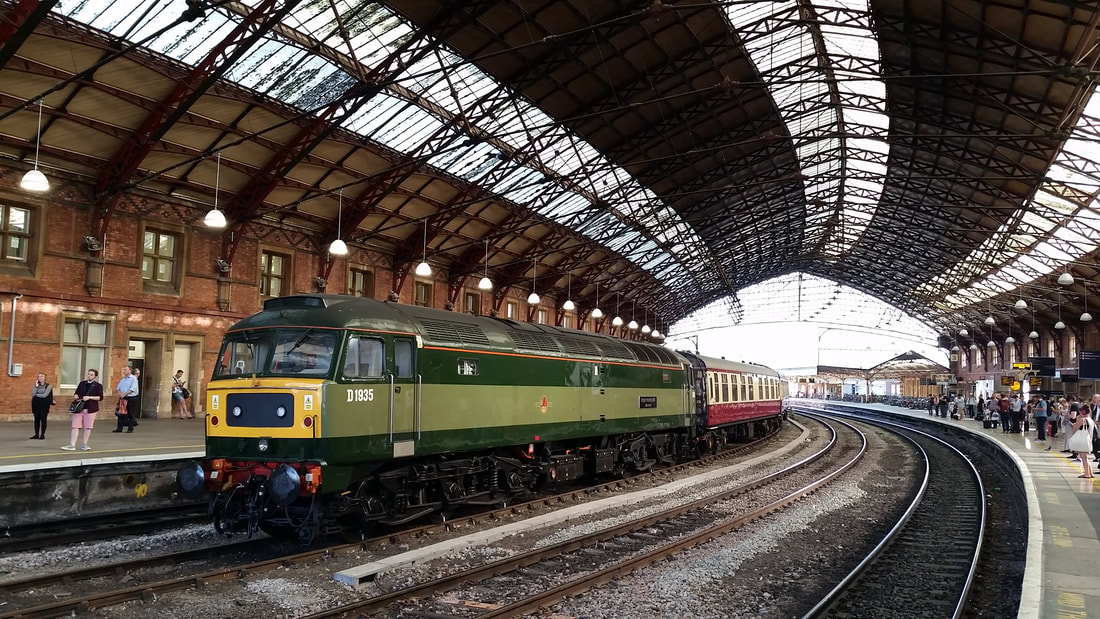
Bristol Temple Meads as we'd all like to remember it - yet this picture is bang up to date. A most appropriate sight at Temple Meads was the superbly restored D1935, aka 47805 which worked a special to Kingswear last weekend. The loco now carries the name 'Roger Hosking MA 1925-2013' bestowed upon it by Saphos Trains owner Jeremy Hosking. Some years ago this loco carried the 'Bristol Bath Road' nameplates so should feel at home under the 1876 B&E trainshed here. Picture taken on the 28th June 2018 by Guy Vincent.
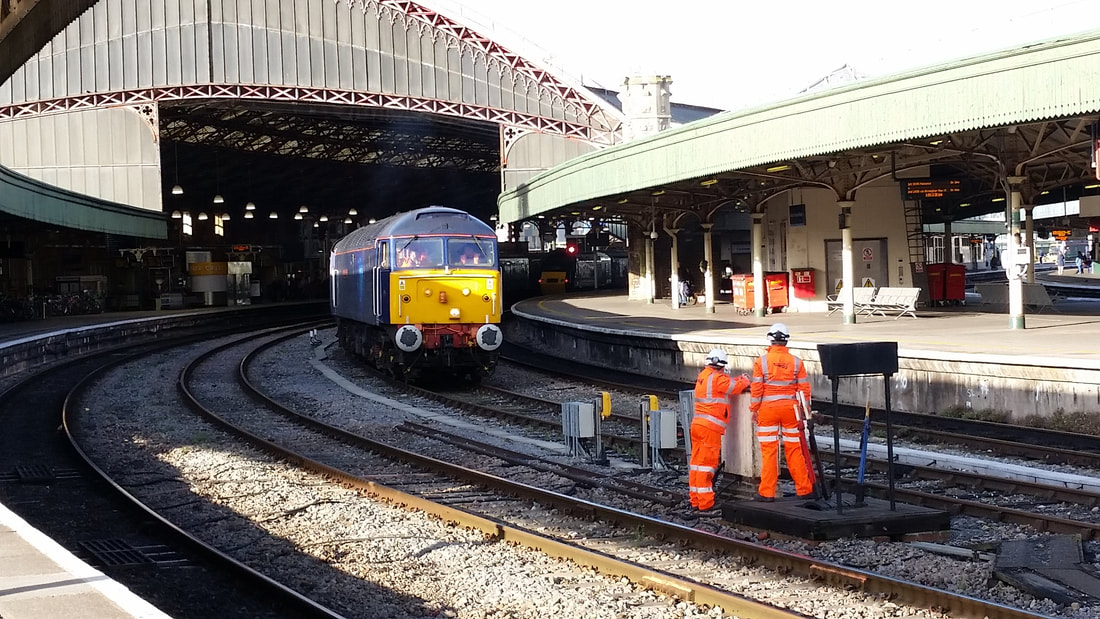
Bristol TM Up Siding Ground Frame Release 16.10.2019 Guy Vincent. Guy adds - Interestingly, despite the Bristol area being controlled from the Thames Valley Signalling Centre at Didcot it is necessary for Network Rail to provide a Ground Frame Operator to release and set the points at each end of the carriage stabling siding next to the Up Through line at Temple Meads. The signal ahead of the points cleared to green with a 'U' displayed in the box indicator before the points had been set for the train to depart. Such are the wonders of technology today!
2023 photograph at BTM
BRISTOL TEMPLE MEADS HERITAGE PART TWO
If one cares to walk along platform 6 at Temple Meads, these wonderful reminders of a bygone age have been safely preserved to recall the days when, at night, the station was a hive of activity with both BR and Royal Mail staff busy for hours upon end sorting, loading and unloading countless mail bags, brute cages and mail trolleys. According to several old working timetables I've consulted the 2320 Bristol-Nottingham used the headcode 4M11. The departure time seems to have varied over the years, I've found that in 1974-75 departure was at 2318, by 1978-79 and in 1980-81 it left at 2340. Mail trains ceased to be handled at Temple Meads from 1997 when the new 'Hub' at Filton opened and the old site adjacent to platform 15 at Temple Meads in Cattle Market Road closed. This site first opened in 1969 with the former conveyor (demolished in 2015) added in 1971. The third notice (image 4) has slightly deteriorated and the stations in the final group are Brentwood, Chelmsford and Colchester.
I'll continue searching the platforms at Bristol TM to see what other historical artefacts are still in place from the 'old days'.
Regards
Guy Vincent. Many thanks Guy
If one cares to walk along platform 6 at Temple Meads, these wonderful reminders of a bygone age have been safely preserved to recall the days when, at night, the station was a hive of activity with both BR and Royal Mail staff busy for hours upon end sorting, loading and unloading countless mail bags, brute cages and mail trolleys. According to several old working timetables I've consulted the 2320 Bristol-Nottingham used the headcode 4M11. The departure time seems to have varied over the years, I've found that in 1974-75 departure was at 2318, by 1978-79 and in 1980-81 it left at 2340. Mail trains ceased to be handled at Temple Meads from 1997 when the new 'Hub' at Filton opened and the old site adjacent to platform 15 at Temple Meads in Cattle Market Road closed. This site first opened in 1969 with the former conveyor (demolished in 2015) added in 1971. The third notice (image 4) has slightly deteriorated and the stations in the final group are Brentwood, Chelmsford and Colchester.
I'll continue searching the platforms at Bristol TM to see what other historical artefacts are still in place from the 'old days'.
Regards
Guy Vincent. Many thanks Guy
Temple Meads at Night in 1983 Clive Smith
Following on from the recent focus on the Bristol Temple Meads area by Guy Vincent and Craig, here are some night exposures I took in 1983. Always trial and error with film and the various nearby light sources or lack of them. Not to mention minor annoyances like moving people ! Rain and wet surroundings usually made for dismal day photos but following a good downpour and accumulation of puddles on the platform, some superb night exposures could be obtained.
The small hours of summer Saturdays would see a procession of overnight trains from the north and the midlands to Newquay, Penzance and Paignton. On one night in August 1984 I noted eight inter-regionals heading west and two from London to Penzance. Temple Meads buffet was open all night to supply coffee to keep the sleep deprived enthusiasts awake and the station was a hive of activity with Royal Mail staff servicing the postal and parcel trains. The Royal Mail sorting office mentioned by Guy can be seen illuminated in two of the photos.
(1) 50031 Hood heads the 22.25 Paddington - Penzance TPO postal on 9th July 1983 . A trolley laden with mail bags can be seen by the front carriage. The up and down postals would be platformed in Temple Meads at the same time allowing the on-board post office staff to transfer trains and return to Penzance or London.
(2) 45077 waits to leave a wet Temple Meads with the 21.34 Nottingham - Newquay on 3rd September 1983.
(3) 37036 arrives with the 22.25 Newcastle - Paignton on 17th September 1983. This was replaced by a 47.
(4) 45042 takes over the Sunday 15.52 Exeter St Davids - York relief train on 30th October 1983. Brutes can be seen on the opposite platform along with a trolley full of mail bags
Regards, Clive Smith Many thanks Clive
Following on from the recent focus on the Bristol Temple Meads area by Guy Vincent and Craig, here are some night exposures I took in 1983. Always trial and error with film and the various nearby light sources or lack of them. Not to mention minor annoyances like moving people ! Rain and wet surroundings usually made for dismal day photos but following a good downpour and accumulation of puddles on the platform, some superb night exposures could be obtained.
The small hours of summer Saturdays would see a procession of overnight trains from the north and the midlands to Newquay, Penzance and Paignton. On one night in August 1984 I noted eight inter-regionals heading west and two from London to Penzance. Temple Meads buffet was open all night to supply coffee to keep the sleep deprived enthusiasts awake and the station was a hive of activity with Royal Mail staff servicing the postal and parcel trains. The Royal Mail sorting office mentioned by Guy can be seen illuminated in two of the photos.
(1) 50031 Hood heads the 22.25 Paddington - Penzance TPO postal on 9th July 1983 . A trolley laden with mail bags can be seen by the front carriage. The up and down postals would be platformed in Temple Meads at the same time allowing the on-board post office staff to transfer trains and return to Penzance or London.
(2) 45077 waits to leave a wet Temple Meads with the 21.34 Nottingham - Newquay on 3rd September 1983.
(3) 37036 arrives with the 22.25 Newcastle - Paignton on 17th September 1983. This was replaced by a 47.
(4) 45042 takes over the Sunday 15.52 Exeter St Davids - York relief train on 30th October 1983. Brutes can be seen on the opposite platform along with a trolley full of mail bags
Regards, Clive Smith Many thanks Clive
The end of an Eyesore
Report by Guy Vincent dated 5th February 2019
Demolition work is now underway on the skeletal remains of the 1960s former Royal Mail sorting office next to Temple Meads station, Bristol. The building was stripped out some time ago and now the reinforced concrete structure is being gradually 'nibbled away' by a tall excavator fitted with a large hydraulic claw. The claw grips and pulls/twists each concrete beam so that it quickly disintegrates and then the operator adjusts the setting to cut through the metal reinforcing rods within. Jets attached to the arm constantly spray water to minimise dust and reduce friction. If you have a spare day it's well worth spending time on platform 15 at Temple Meads watching this work take place.
Guy Vincent - Many thanks Guy - all part of the scene - well it was!
Report by Guy Vincent dated 5th February 2019
Demolition work is now underway on the skeletal remains of the 1960s former Royal Mail sorting office next to Temple Meads station, Bristol. The building was stripped out some time ago and now the reinforced concrete structure is being gradually 'nibbled away' by a tall excavator fitted with a large hydraulic claw. The claw grips and pulls/twists each concrete beam so that it quickly disintegrates and then the operator adjusts the setting to cut through the metal reinforcing rods within. Jets attached to the arm constantly spray water to minimise dust and reduce friction. If you have a spare day it's well worth spending time on platform 15 at Temple Meads watching this work take place.
Guy Vincent - Many thanks Guy - all part of the scene - well it was!
Steam at Temple Meads
Diesels at Bristol Temple Meads
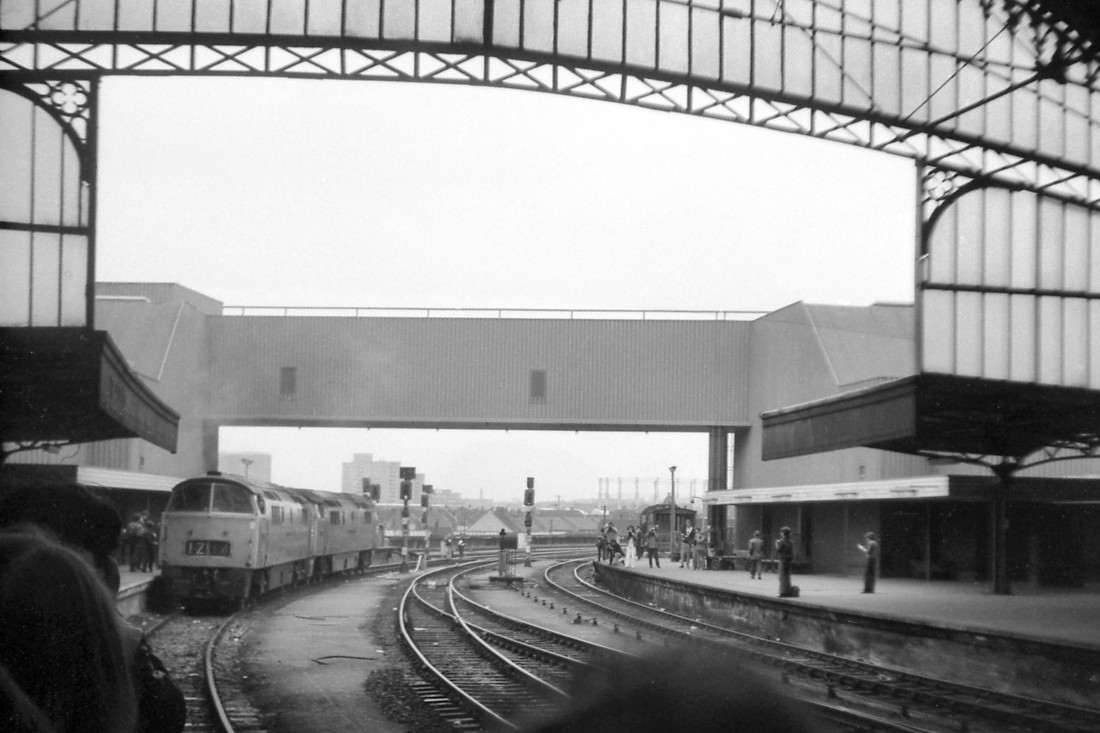
The Class 52 Westerns have always attracted a lot of attention. These two D1051 Western Ambassador and D1023 Western Fusilier were no exception. Bristol's platforms have a sprinkling of enthusiasts - one guesses that these two were either coming off or backing down on the railtour train. Michael Morant has captured the scene nicely.
A very unusual motive power event at Bristol Temple Meads.
A report by Guy Vincent
Saturday September 1st 1984 saw the unprecedented sight of an almost brand-new class 58 loco, 58002, haul a failed HST set all the way from Birmingham New Street to Plymouth. The HST working 1V87 1210 Liverpool Lime Street-Penzance expired in the Birmingham area and the only loco on hand and available at Saltley was 58002. This took the HST forward and, despite other locos being present at Bath Road depot, control allowed it to continue westwards from Bristol with a pilot driver. I had been returning eastwards from Paignton behind 45029 heading the 1M65 1608 Paignton-Liverpool but was told at Exeter that 58002 was en-route so decided to join it when it arrived. Despite a good non-stop run through Totnes and onto Rattery bank, performance suddenly began to tail off. Eventually between Wrangaton and Ivybridge the loco failed and we coasted to a halt. The driver had to walk down to the rear power car, 43149, get it going and then drive from the leading one 43131. Not only was 43149 powering the HST it was propelling the defunct 58002 (approx 130 tons) at the same time! The Saltley driver who was still on board remained in the dead '58' to observe signals and instigate braking as required. By the time Plymouth was reached the class 58 had completely flat batteries with no power whatsoever available. It was collected by 50038 and towed to Exeter from where 31202 took over and moved it up to Bristol Bath Road depot, via Castle Cary, Westbury and Bath. The big question is, had 58002 not failed, would it have made it all the way to Penzance?
Approximate times of 1V46 on 01.09.1984
Exeter St Davids 1632 sch'd. 1715 approx
Newton Abbot 16/55 approx. 17/35 approx
Plymouth arr. 1731 sch'd. 1905 approx
On arrival at Plymouth there were several of us with no train home as the final eastbound service of the day, the 1700 Penzance-Paddington HST, had departed on time at 1855. The station supervisor said he had a 5C86 1815 Newquay-Malago Vale ECS due in and this would be made available for travel to Exeter and Taunton only. 45040 duly arrived on a rake of mark 1 carriages that had earlier gone down on the 1V73 0911 Manchester Piccadilly-Newquay behind 47088 'Samson'. Beyond Taunton 5C86 was routed via Castle Cary and Westbury and, having 'forgotten' to alight at Taunton I left it at Westbury where a short stop was made for crew purposes. A 7-mile walk home to Bradford-on-Avon was then necessary!
Photos exist on Flickr of this working at Dawlish Warren, approaching Dawlish station and arriving at Plymouth with a further B/W image on the Taunton Trains website of the train waiting signals in platform 3 at Taunton.
Photo 1) 58002 at Bristol Temple Meads prior to departure for Plymouth (credit: Stephen White).
Photo 2) 58002 in derelict condition at the rear of Eastleigh depot on 15th April 2013. It was later scrapped here. (photo GV).
Guy Vincent
Many thanks indeed Guy for your very detailed report of a most unusual incident back in 1984.
A report by Guy Vincent
Saturday September 1st 1984 saw the unprecedented sight of an almost brand-new class 58 loco, 58002, haul a failed HST set all the way from Birmingham New Street to Plymouth. The HST working 1V87 1210 Liverpool Lime Street-Penzance expired in the Birmingham area and the only loco on hand and available at Saltley was 58002. This took the HST forward and, despite other locos being present at Bath Road depot, control allowed it to continue westwards from Bristol with a pilot driver. I had been returning eastwards from Paignton behind 45029 heading the 1M65 1608 Paignton-Liverpool but was told at Exeter that 58002 was en-route so decided to join it when it arrived. Despite a good non-stop run through Totnes and onto Rattery bank, performance suddenly began to tail off. Eventually between Wrangaton and Ivybridge the loco failed and we coasted to a halt. The driver had to walk down to the rear power car, 43149, get it going and then drive from the leading one 43131. Not only was 43149 powering the HST it was propelling the defunct 58002 (approx 130 tons) at the same time! The Saltley driver who was still on board remained in the dead '58' to observe signals and instigate braking as required. By the time Plymouth was reached the class 58 had completely flat batteries with no power whatsoever available. It was collected by 50038 and towed to Exeter from where 31202 took over and moved it up to Bristol Bath Road depot, via Castle Cary, Westbury and Bath. The big question is, had 58002 not failed, would it have made it all the way to Penzance?
Approximate times of 1V46 on 01.09.1984
Exeter St Davids 1632 sch'd. 1715 approx
Newton Abbot 16/55 approx. 17/35 approx
Plymouth arr. 1731 sch'd. 1905 approx
On arrival at Plymouth there were several of us with no train home as the final eastbound service of the day, the 1700 Penzance-Paddington HST, had departed on time at 1855. The station supervisor said he had a 5C86 1815 Newquay-Malago Vale ECS due in and this would be made available for travel to Exeter and Taunton only. 45040 duly arrived on a rake of mark 1 carriages that had earlier gone down on the 1V73 0911 Manchester Piccadilly-Newquay behind 47088 'Samson'. Beyond Taunton 5C86 was routed via Castle Cary and Westbury and, having 'forgotten' to alight at Taunton I left it at Westbury where a short stop was made for crew purposes. A 7-mile walk home to Bradford-on-Avon was then necessary!
Photos exist on Flickr of this working at Dawlish Warren, approaching Dawlish station and arriving at Plymouth with a further B/W image on the Taunton Trains website of the train waiting signals in platform 3 at Taunton.
Photo 1) 58002 at Bristol Temple Meads prior to departure for Plymouth (credit: Stephen White).
Photo 2) 58002 in derelict condition at the rear of Eastleigh depot on 15th April 2013. It was later scrapped here. (photo GV).
Guy Vincent
Many thanks indeed Guy for your very detailed report of a most unusual incident back in 1984.
Two photos of Peaks taken at Bristol Temple Meads platform 10 twenty years apart.
1) 46037 having a change of crew working 1V81 0826 Bradford Interchange-Paignton on Saturday June 25th 1983. Just 1 year later on 16th June 1984 46037 met it's end when a traction motor caught fire whilst ascending the Lickey incline at the head of the summer Saturdays-only 1E64 1037 Penzance-Leeds.
2) 46035 on Saturday 15th March 2003 after arriving with 1Z46 0539 Crewe-Okehampton Railtour 'The Western Quarryman'. 46035 came off at Bristol and was replaced by D1015 'Western Champion'. Sadly 46035's glory days appear to be over as it has been stored in a partially dismantled state at Leeds Midland Road, Crewe Heritage Centre and, latterly, Rowsley depot sidings at Peak Rail, Matlock. This was the first preserved diesel locomotive to work on the national network following the lifting of the ban on such movements by BR.
Guy Vincent Very many thanks to you Guy for the pictures and great details supplied.
Bristol Bath Road Shed
- Last Days
Steve Carter
- Last Days
Steve Carter
Having read recently that the last trace of Bristol Bath Road depot's existence, namely the track work adjacent to Temple Meads Platform 15 (seen as it was in August 2015), had been removed came as something of a shock to realise that nothing now remains of a depot with which was familiar to me for so long.
My acquaintance with it began in 1980 when I would regularly pass by en-route to Exeter and then after moving to Weston-super-Mare in 1986, Bath Road (or BR as British Rail coded it) became 'my' local depot.
Surrounded by running lines to the West and rear and the River Avon to the East, attempts to get around the site proved almost impossible due to official access being via the walk way over the running lines at Temple Meads or the main entrance to the shed off Bath Road itself. Many was the time on going down the depot access steps that I would be walking back up them moments later!
In common with depots around the country, Bath Road saw a gradual decline in importance as traffic patterns and impending privatisation saw locos withdrawn or reallocated. By 1995 the writing was on the wall and in July of that year InterCity Cross Country pulled the plug on their locos being serviced at the depot. The two other users of Bath Road would follow suit in the same year with RES (Rail Express Systems) opting for a site at Bristol Barton Hill and InterCity Great Western concentrating on the adjacent St Philip's Marsh site. The depot finally succumbed to closure on the 28th September 1995.
Having taken many an image of the depot from the platforms at Temple Meads, I realised that time for getting pictures from within the depot confines was becoming less and on hearing that Cross Country were to leave the site I decided that maybe this would be my one chance to succeed.
Thus early on Sunday 23rd July I made the familiar journey from Weston to Bristol Temple Meads and duly made my way up Bath Road but this time with a different method of entry planned! Squeezed in between the rear of the depot and the avoiding line to St Philip's Marsh was an access road which led up to Bath Road (this was the main reason the depot kept its turntable in order to turn visiting delivery vehicles due to lack of space to reverse).
Donning a hi-viz vest I wandered down the road, under the Bath Road bridge and into the depot before making my way around to the front where I found the depot supervisor at work in his office. I fully expected to be given the boot but on striking up a conversation with him I was told to not make it too obvious what I was about and to let him know when I had finished - success at last!
I managed to secure quite a few images amongst which were some of 47.743 "THE BOBBY" which was involved in a severe derailment North of York the very next day.
As I left the depot I managed to take a picture of the gentleman who had been kind enough to facilitate my visit with the intention of passing it on by way of thanks. Unfortunately I never got to visit again before the depot shut and not having his details I wasn't able to send him the image.
I have listed the picture on a number of forums but to date haven't succeeded in finding any details for him so if anyone recognises the face then that would be great - with the advent of social media then maybe I can finally put a name to the face!
Please lets us, or Steve Know if you know him. Many thanks to Steve Carter for his article and these pictures.
For Historical Details of the life of Bath Road Shed please click below :- https://en.wikipedia.org/wiki/Bristol_Bath_Road_depot
My acquaintance with it began in 1980 when I would regularly pass by en-route to Exeter and then after moving to Weston-super-Mare in 1986, Bath Road (or BR as British Rail coded it) became 'my' local depot.
Surrounded by running lines to the West and rear and the River Avon to the East, attempts to get around the site proved almost impossible due to official access being via the walk way over the running lines at Temple Meads or the main entrance to the shed off Bath Road itself. Many was the time on going down the depot access steps that I would be walking back up them moments later!
In common with depots around the country, Bath Road saw a gradual decline in importance as traffic patterns and impending privatisation saw locos withdrawn or reallocated. By 1995 the writing was on the wall and in July of that year InterCity Cross Country pulled the plug on their locos being serviced at the depot. The two other users of Bath Road would follow suit in the same year with RES (Rail Express Systems) opting for a site at Bristol Barton Hill and InterCity Great Western concentrating on the adjacent St Philip's Marsh site. The depot finally succumbed to closure on the 28th September 1995.
Having taken many an image of the depot from the platforms at Temple Meads, I realised that time for getting pictures from within the depot confines was becoming less and on hearing that Cross Country were to leave the site I decided that maybe this would be my one chance to succeed.
Thus early on Sunday 23rd July I made the familiar journey from Weston to Bristol Temple Meads and duly made my way up Bath Road but this time with a different method of entry planned! Squeezed in between the rear of the depot and the avoiding line to St Philip's Marsh was an access road which led up to Bath Road (this was the main reason the depot kept its turntable in order to turn visiting delivery vehicles due to lack of space to reverse).
Donning a hi-viz vest I wandered down the road, under the Bath Road bridge and into the depot before making my way around to the front where I found the depot supervisor at work in his office. I fully expected to be given the boot but on striking up a conversation with him I was told to not make it too obvious what I was about and to let him know when I had finished - success at last!
I managed to secure quite a few images amongst which were some of 47.743 "THE BOBBY" which was involved in a severe derailment North of York the very next day.
As I left the depot I managed to take a picture of the gentleman who had been kind enough to facilitate my visit with the intention of passing it on by way of thanks. Unfortunately I never got to visit again before the depot shut and not having his details I wasn't able to send him the image.
I have listed the picture on a number of forums but to date haven't succeeded in finding any details for him so if anyone recognises the face then that would be great - with the advent of social media then maybe I can finally put a name to the face!
Please lets us, or Steve Know if you know him. Many thanks to Steve Carter for his article and these pictures.
For Historical Details of the life of Bath Road Shed please click below :- https://en.wikipedia.org/wiki/Bristol_Bath_Road_depot
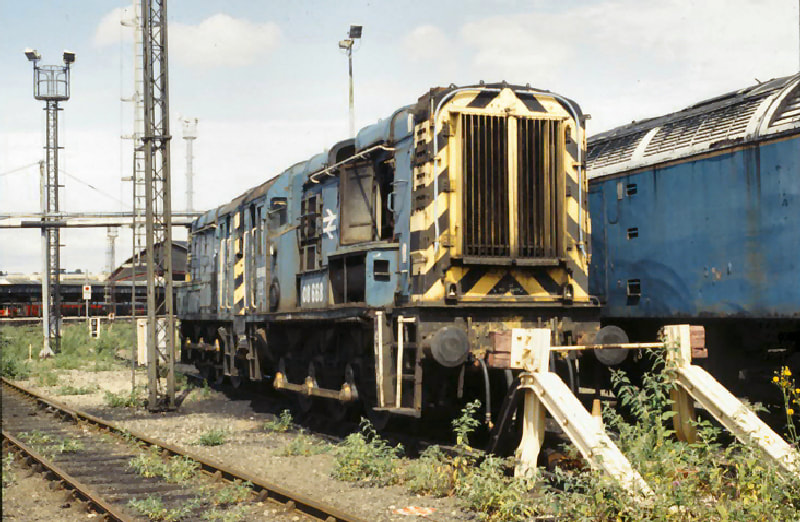
Picture C :- Class 08 08688 with non- standard numbers appears to be being used as a source of spares (Given that its official withdrawal date was April 1997). Fellow class member 08804 sits in front and went on to become one of the last of its type, being offered for sale by DB Cargo in September 2016. 23rd July 1995. Copyright Steve Carter.
More at Bath Road shed.
Bristol Barrow Hill Shed
Outside the station
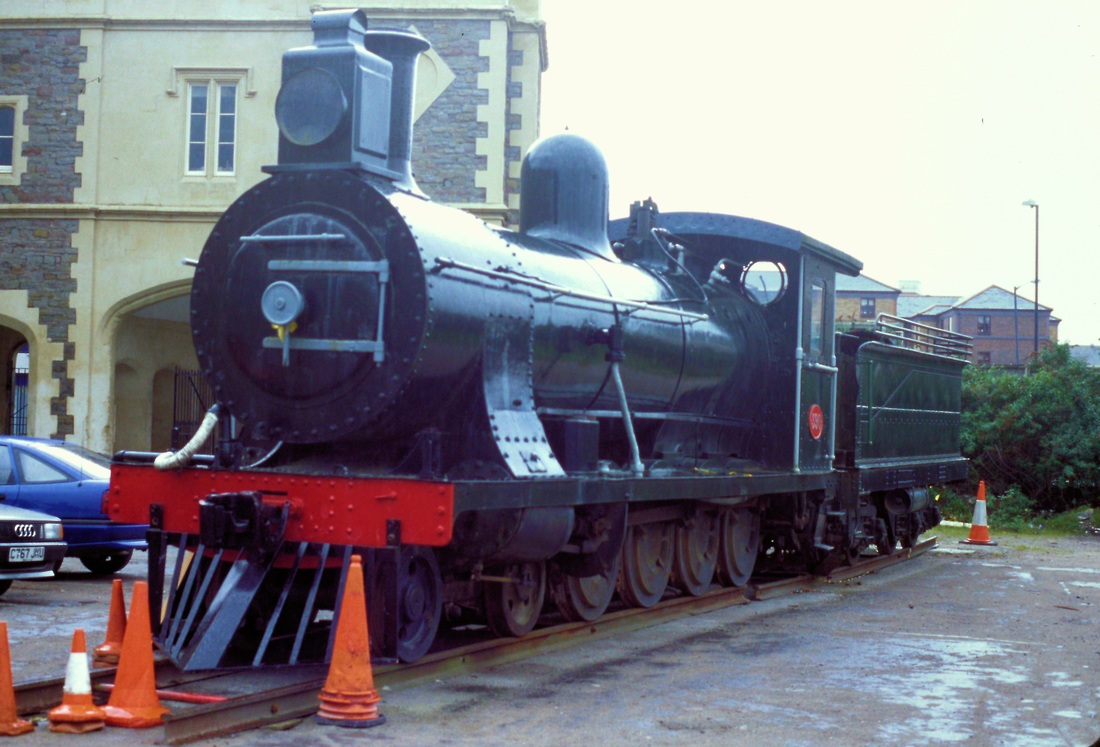
Stabled at Bristol Temple Meads is this African locomotive. 2nd April 1999 Copyright Roger Winnen. Note - Rhodesian Railways 4-8-0 no 390 was brought to the UK by David Shepherd and was based at Whipsanade Zoo for a while, before moving to the East Somerset Railway (See below). As the engine was 3' 6" gauge, a short section of special track had to be laid. In 1996 the engine moved to the British Empire & Commonwealth Museum at Bristol, where it formed an outside exhibit. This museum became insolvent and the loco moved for restoration at Tysley and is now in 2012 on display at NRM Shildon.
The first of two routes to the docks .
From Bristol Temple Meads to Wapping Wharf.
Opened 1872 Closed 1964
From Bristol Temple Meads to Wapping Wharf.
Opened 1872 Closed 1964
For more photographs of the route and a suggested walk, click here :- www.bristolfloatingharbour.org.uk › Harbour Trails › Heritage Trails
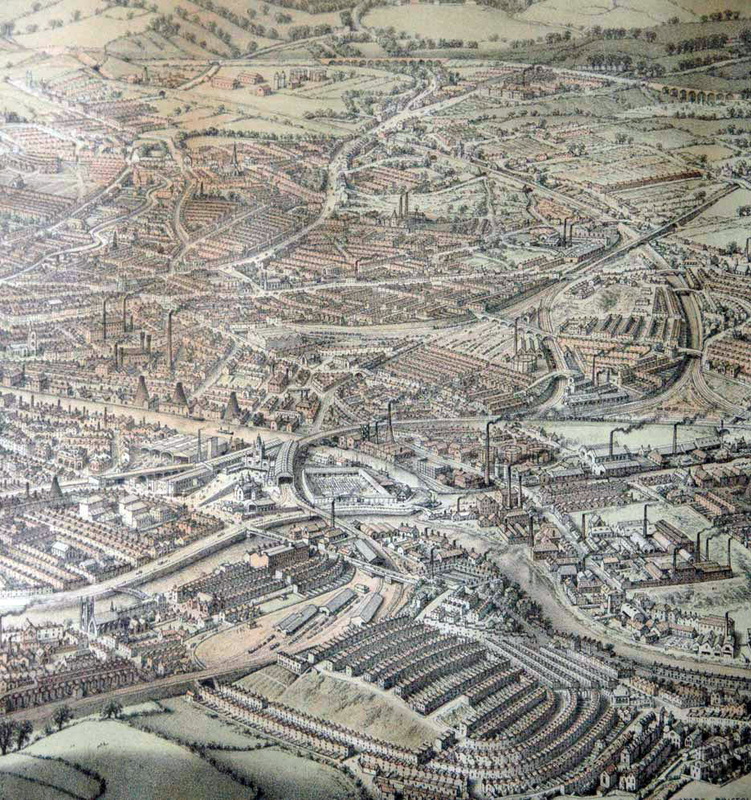
John Thorn writes :- Among my grandfather's possessions was an 'aerial' engraving of Bristol. Now on my wall here, but this is the part with the most railway interest. (I am told one of the viaducts has an extra arch!). Best wishes,
John. Picture Copyright John Thorn (This is a most interesting engraving showing the complex track arrangements at Bristol, in the centre of which lies Temple Meads.)
Reference the engraving above. Note Temple Meads was much smaller at that time and that Bath Road sheds did not exist. To the extreme right the triangle comprises Feeder Junction, at the head of this is Dr. Day's Bridge Junction whilst the left hand of this triangle is East Junction. The lines heading north from here are those of the LMS Rly towards Mangotsfield, for Bath, or the North. The waterway from the top left is the Floating Harbour whereas, lower down, the broad waterway crossing this view and leaving at the right is the tidal River Avon. Pylle Goods yard is in evidence at the centre of this view with the main line, Taunton bound, exiting at the left near the bottom.
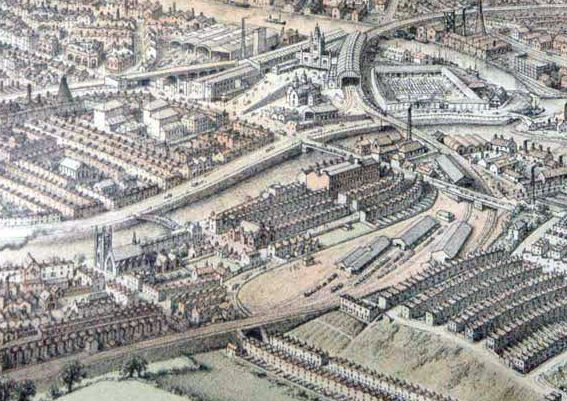
A close up of the relevant portion of the above engraving. Of great interest here is the Bristol Harbour Railways viaduct which carried the branch line at an elevated level alongside Brunel's Train Shed but diverging from it to connect with the steel bridge which carried the branch over Temple Gate. This bridge is seen below. Going to the left of this depiction the line carried on at a raised elevation serving Redcliffe Goods yard (Redcliffe Wharf) to Pump Lane where it entered the tunnel at Redcliffe. En-route the 242 yard tunnel passed under Redcliff Church graveyard and several occupants had to be re-interred. The line emerged from this tunnel to cross the waterway serving Bathurst Basin on a bascule bridge. The above is is a photograph of an engraving owned by John Thorn and kindly supplied by him. Copyright.
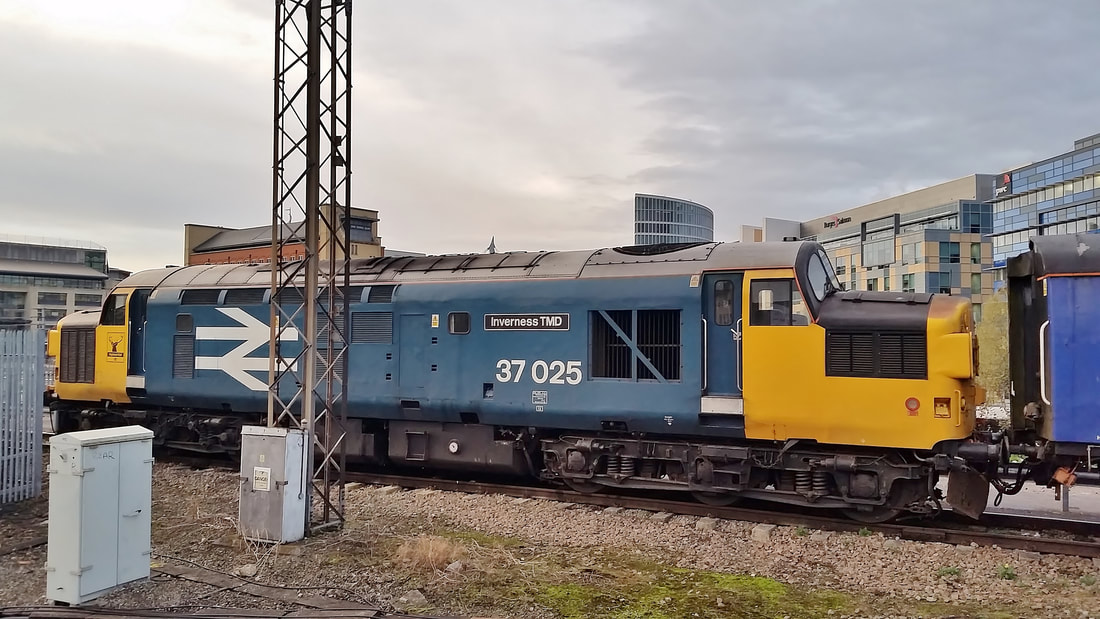
37025 Bristol Temple Meads 37025 on the High Level Siding to the east of the station behind P1 with an Ultrasonic Test Train. This short stub is all that remains of the line that used to lead to Bristol Harbour and Docks, crossing Temple Way at the foot of the incline leading up to the front of the station. Just 24 hours earlier 37025 was reported on the High Marnham test track in Nottinghamshire, testing the train that it is now working with.
11th December 2017. Copyright Guy Vincent.
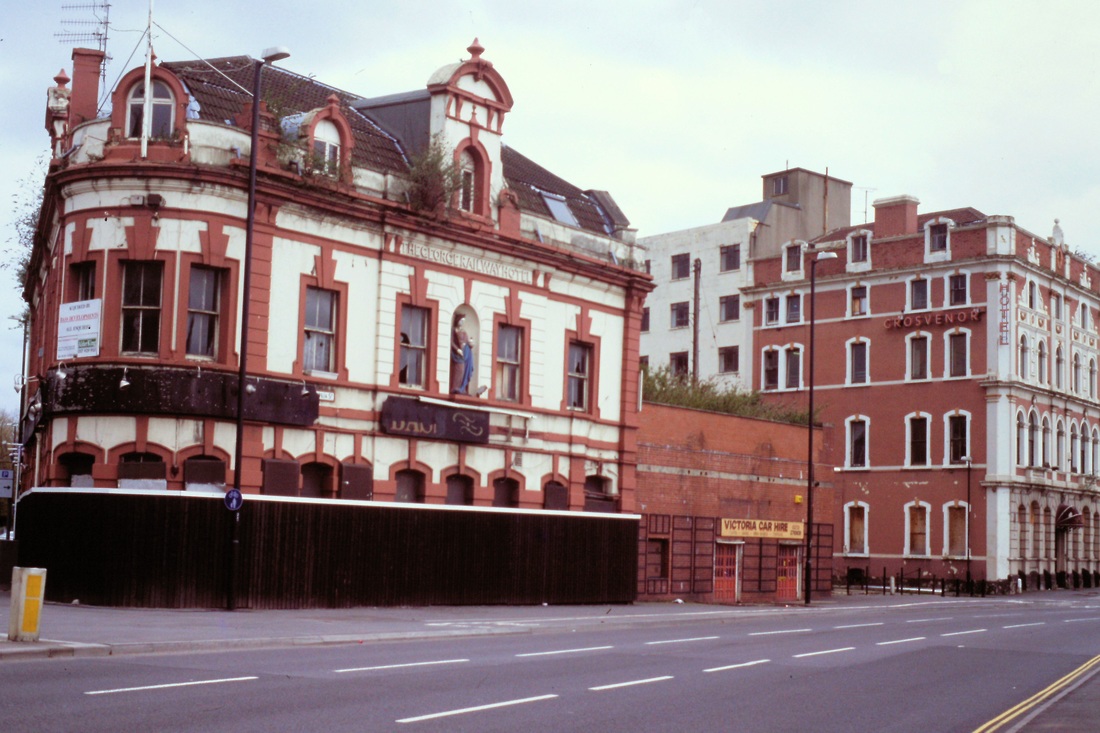
The railway connection to Temple Meads which passed between these two hotels has been gone for thirty six years. The sign on the once elegant George RAILWAY Hotel indicates that it is ripe for development and will not occupy this prime position much longer. The statue gracing the front no doubt ended up in a skip, what a shame. The Grosvenor Hotel next door has no doubt suffered the same fate. The once busy railway crossed the road and passed between them. 24th April 2000. Copyright Roger Winnen
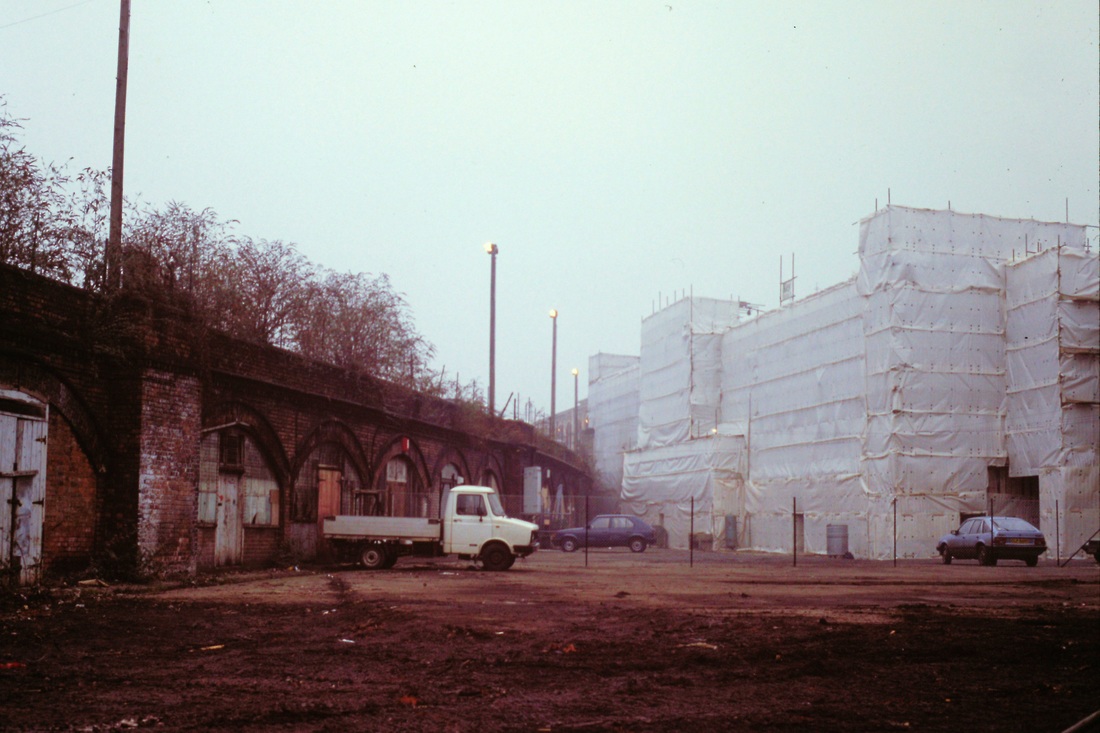
The date is 2nd January 1993 and many buildings at Temple Gate have fallen (and their replacements are in the process of construction) but, for the time being, the continuation of the railway route towards the docks remains, which were carried on an ever lowering viaduct towards Redcliffe tunnel. Copyright Roger Winnen
With the closure of the rail route from Temple Meads to the harbour, extensive changes took place beyond the former bridge, with a major sidings area (behind the granaries) being recovered and the land developed for housing. Wapping Road, to the south of Prince Street bridge, was crossed at no fewer than five places: three close to the bridge and a further two where the double track 'main line', serving the docks, crossed. One such crossing is illustrated below.
The second of two routes to the docks.
From Parson Street via Ashton Junction and Ashton Swing Bridge to Wapping Wharf.
Opened 1906 Closed 1987
From Parson Street via Ashton Junction and Ashton Swing Bridge to Wapping Wharf.
Opened 1906 Closed 1987
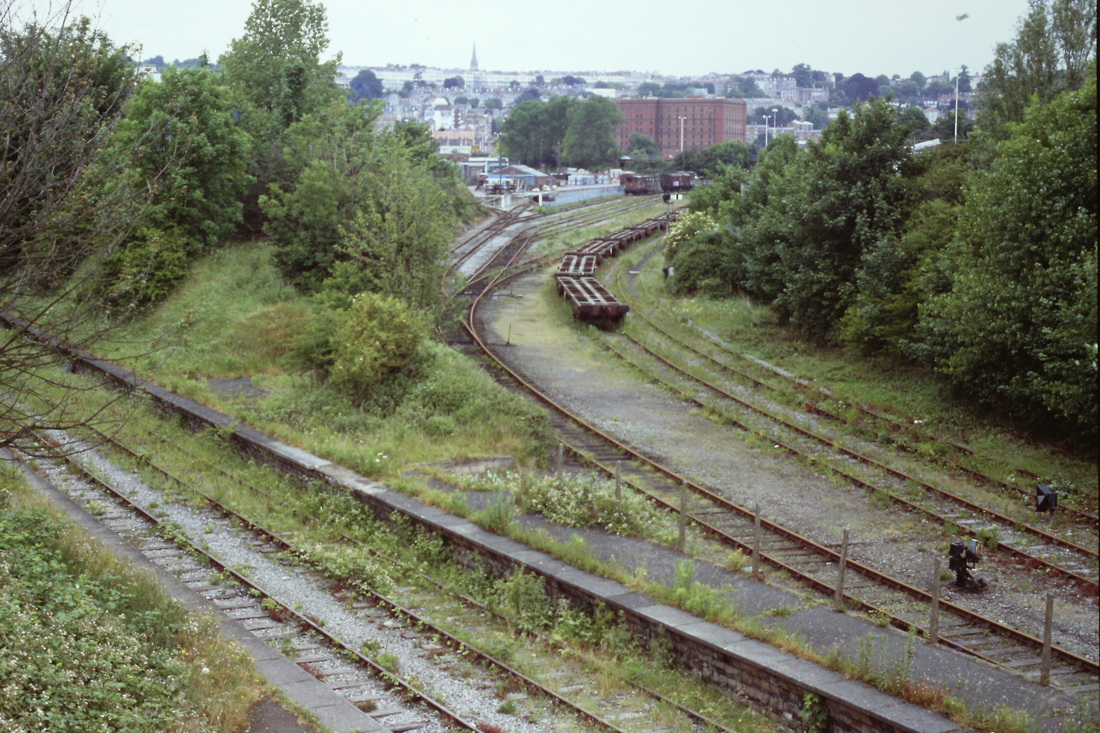
A view looking across the platforms of Ashton Gate station. The metals to and from Portishead go off to the left. The line to Wapping Wharf and Canon's Marsh is towards the top of this picture. The sidings in the centre of the picture are known as Ashton Meadows Sidings. The red brick building in the distance at the centre was the large tobacco warehouse of W.D. & H.O. Wills. The date of this picture is 10th June 1989 Copyright Roger Winnen
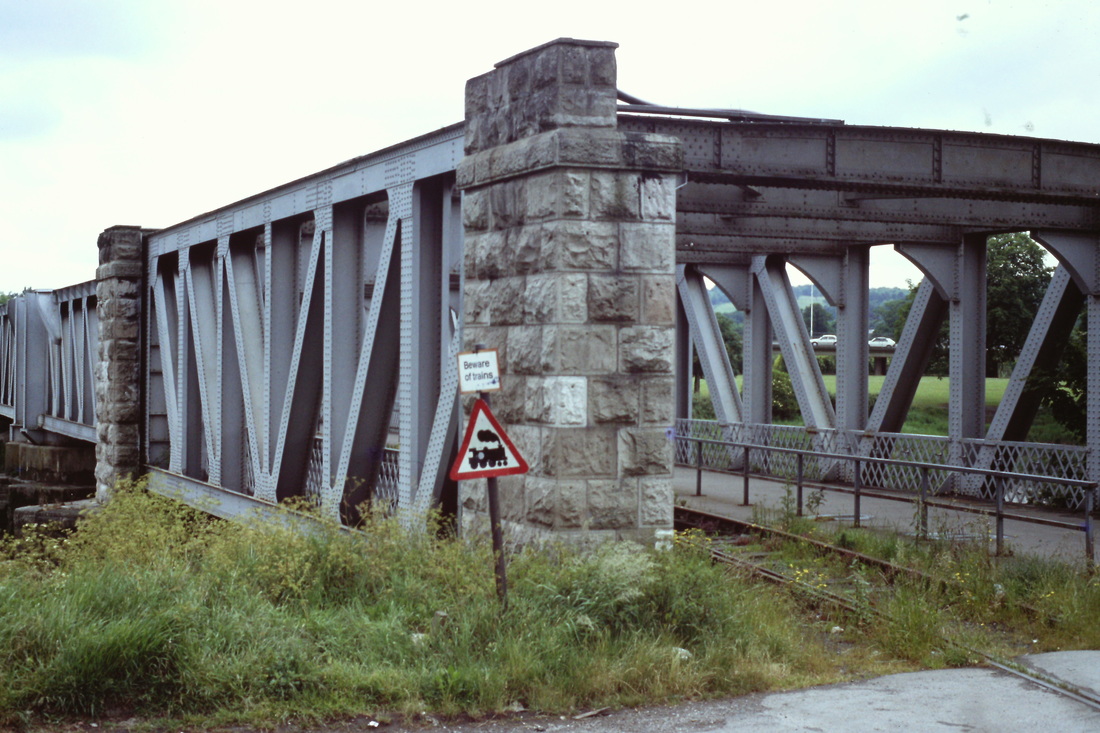
Another view of Ashton Swing Bridge, this time from the north bank, also taken on the 10th June 1989. Copyright Roger Winnen. This bridge was once a double deck affair with a roadway passing over the top. The bridge opened on 4th October 1906 and was last swung open on 3rd February 1934 (Quote: Mike Vincent's excellent book - 'Reflections on the Portishead Branch')
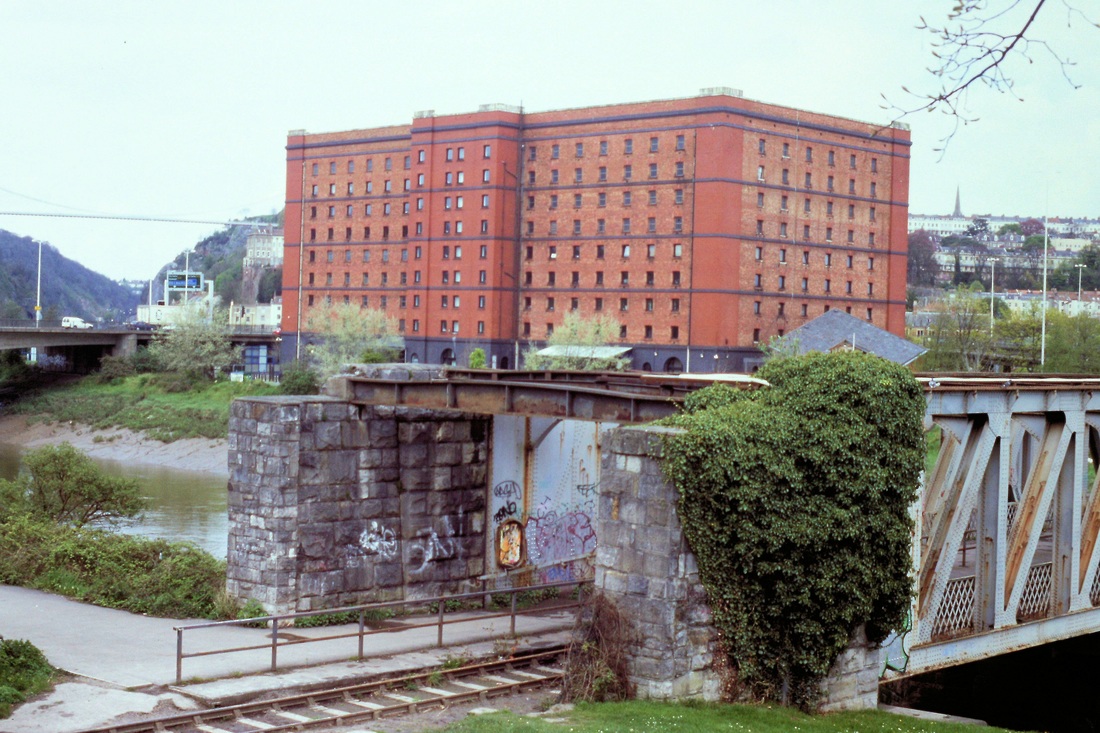
A view of Ashton Swing Bridge, overlooking the south end with a view down Clifton George beyond. The Clifton Suspension Bridge appears as a line across the left hand side of this picture. Cumberland siding passed under the northern approach to Ashton bridge and along the river bank to terminate near the locks. 24th April 2000 Copyright Roger Winnen
Beyond the north end of Ashton Swing Bridge there was a junction. A line proceeding generally north crossed the Floating Harbour before heading east towards Canon's Marsh. This was the Canon's Marsh branch. Interestingly, reference to a 1905 map shows the line to this location coming to what is best described as a 'head shunt', with the formation of the Cannon's Marsh line existing only as an 'intended route' as far as the Cumberland Locks. Ashton Swing Bridge and the route on to Ashton Junction didn't exist at that time. The Wapping Wharf line turned east right away and followed the bank of the tidal river Avon (New Cut) for half a mile before passing under Cumberland road bridge to enter the Wapping Wharf area.
Bristol Harbour Railway - into Preservation Courtesy of Wikipedia
In 1978, the preserved railway was established as an element of Bristol Industrial Museum using locomotives built in Bristol and formerly used at Avonmouth Docks. At first, it connected the museum with the SS Great Britain, but when commercial rail traffic ceased in 1987 the museum railway expanded to use the branch alongside the New Cut (River Avon). When the Portishead branch was was relaid the connection at Ashton Junction was severed and the line recovered from Ashton Swing Bridge back to Ashton Junction. The Portishead branch at the former Aston Junction is now single plain track.
Today the railway operates on selected weekends over one and a half miles. The railway is currently in use as far as B Bond and Create Warehouse (home to the Create Centre and Bristol Record Office, a mile from the museum. On the south side of the harbour the railway crosses Spike Island the narrow strip of land between the harbour and the River Avon , and clings to the side of the river as far as the junction with the northern branch at the Cumberland Basin. The former route east over the Swing Bridge is now the Pill Pathway rail trail and pathway.
In 2006, the British Industrial Museum was closed and the site redeveloped into M Shed Museum of Bristol. The railway continues to operate between SS Great Britain Halt and the Create Centre, and in 2011 the railway became part of M Shed's working exhibits.
In 2010, Bristol City Council, in partnership with other local councils in the area, proposed that the route of the railway should be used for a bus rapid transit route to serve the south-west of the city. In early 2013, a review of alternative routes recommended a route along Cumberland Road, Commercial Road and Redcliffe Hill as the best alternative. This change of route means that the rapid transit buses would no longer use the railway.
In 1978, the preserved railway was established as an element of Bristol Industrial Museum using locomotives built in Bristol and formerly used at Avonmouth Docks. At first, it connected the museum with the SS Great Britain, but when commercial rail traffic ceased in 1987 the museum railway expanded to use the branch alongside the New Cut (River Avon). When the Portishead branch was was relaid the connection at Ashton Junction was severed and the line recovered from Ashton Swing Bridge back to Ashton Junction. The Portishead branch at the former Aston Junction is now single plain track.
Today the railway operates on selected weekends over one and a half miles. The railway is currently in use as far as B Bond and Create Warehouse (home to the Create Centre and Bristol Record Office, a mile from the museum. On the south side of the harbour the railway crosses Spike Island the narrow strip of land between the harbour and the River Avon , and clings to the side of the river as far as the junction with the northern branch at the Cumberland Basin. The former route east over the Swing Bridge is now the Pill Pathway rail trail and pathway.
In 2006, the British Industrial Museum was closed and the site redeveloped into M Shed Museum of Bristol. The railway continues to operate between SS Great Britain Halt and the Create Centre, and in 2011 the railway became part of M Shed's working exhibits.
In 2010, Bristol City Council, in partnership with other local councils in the area, proposed that the route of the railway should be used for a bus rapid transit route to serve the south-west of the city. In early 2013, a review of alternative routes recommended a route along Cumberland Road, Commercial Road and Redcliffe Hill as the best alternative. This change of route means that the rapid transit buses would no longer use the railway.
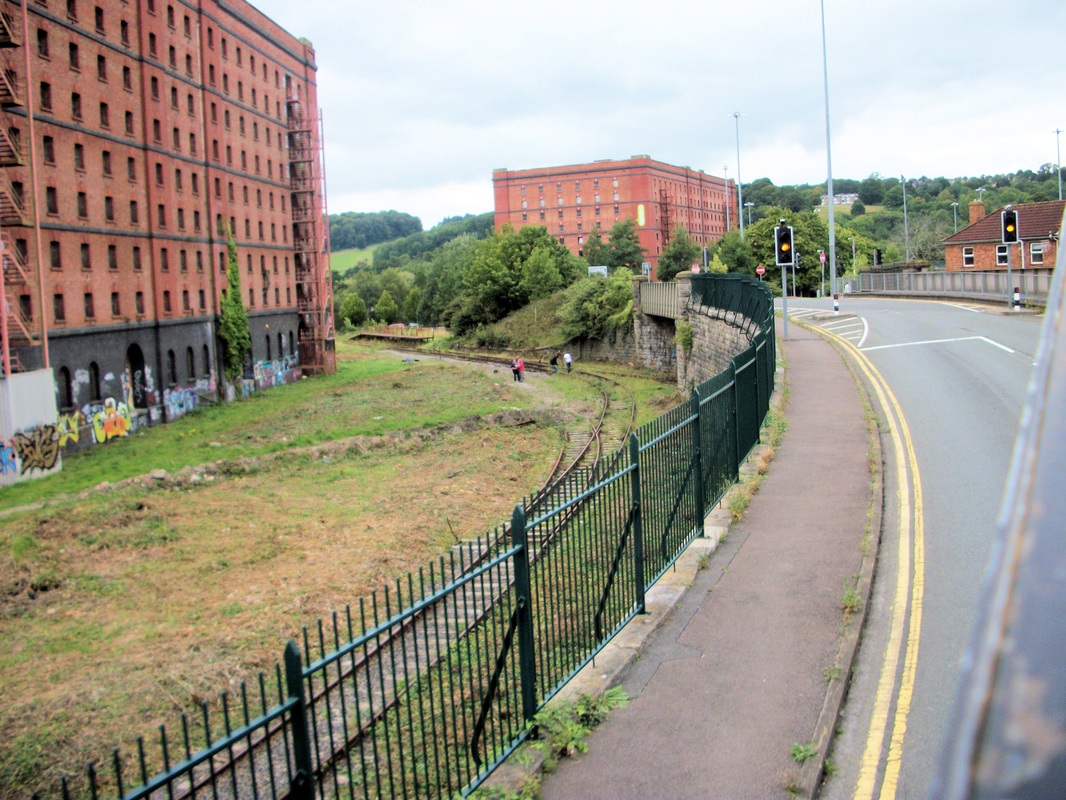
This shot taken from a tour bus on 5th September 2015 shows the terminus of the Bristol Harbour Railway. The original line continued past the platform and around to the left over Ashton Bridge towards Ashton Junction. The route seen heading right under the road bridge was the Cannons Marsh branch. Copyright Keith Jenkin
At Wapping Wharf
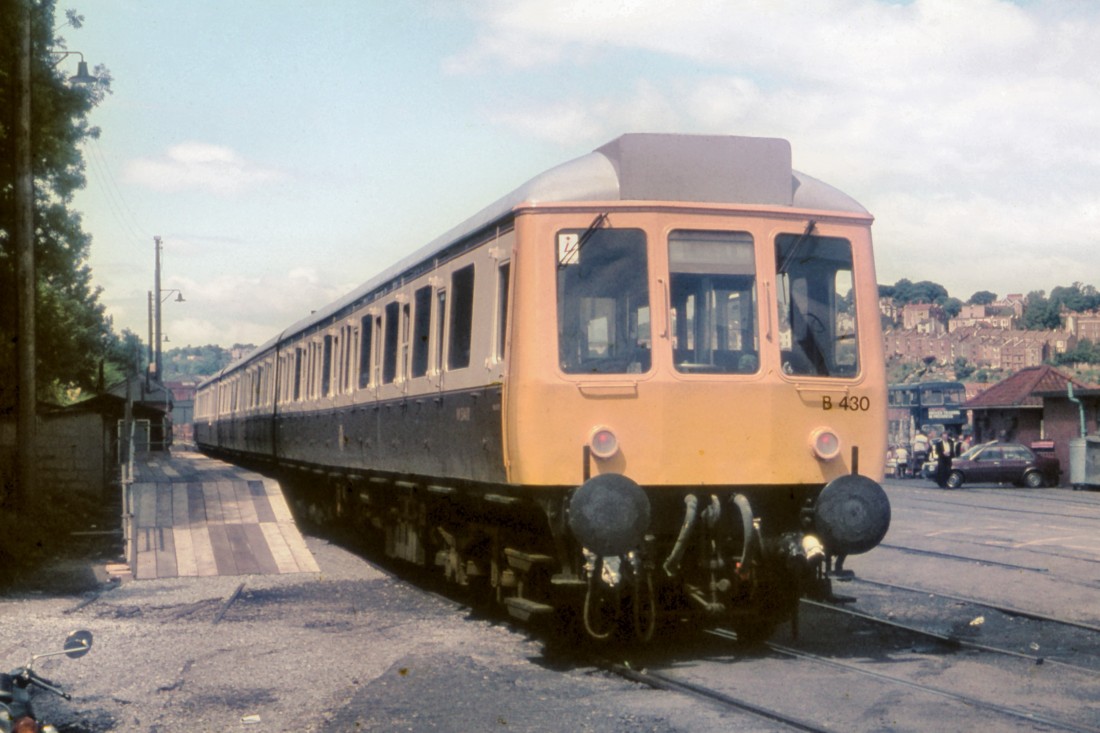
A smashing picture from the Michael Morant Collection of Diesel BR Class 117 DMU B430 down at Wapping Wharf on the 8th June 1985 A rare visitor from the 'outside world' a passenger train. Cornish viewers will be very familiar with this unit which ended up its days working on the St Ives branch. It seemed an ideal candidate for preservation but it was not to be, an electrical fire in one cab put paid to that. (That is if preservation was ever intended)
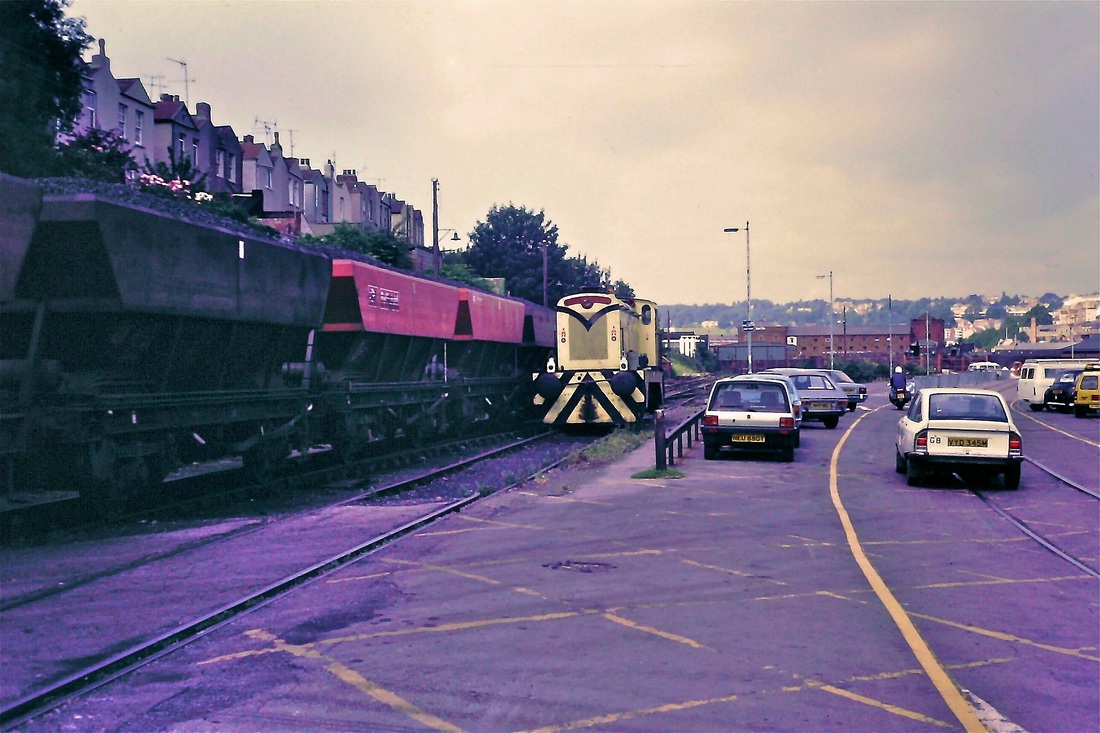
I took this one, early in my railway career. 0-6-0 Hudswell Clarke diesel, 'Western Pride' just runs around loaded air brake coal hopper wagons, at Wapping Wharf, it had hauled these from Ashton Jn. Likely a Peak or class 37 would have dropped the train at Ashton Jn. Coal traffic to this site ceased May 1987 and 'Western Pride' travelled on its own power to the coal depot at Filton Jn, with a BR pilot driver, by night. The last BR movement to the site at Wapping was late summer 1990 when a BR 08 bought some wagons and collected some rails from the quayside and delivered a Weltrol wagon fro Bristol industrial museum. Copyright Paul Stanford
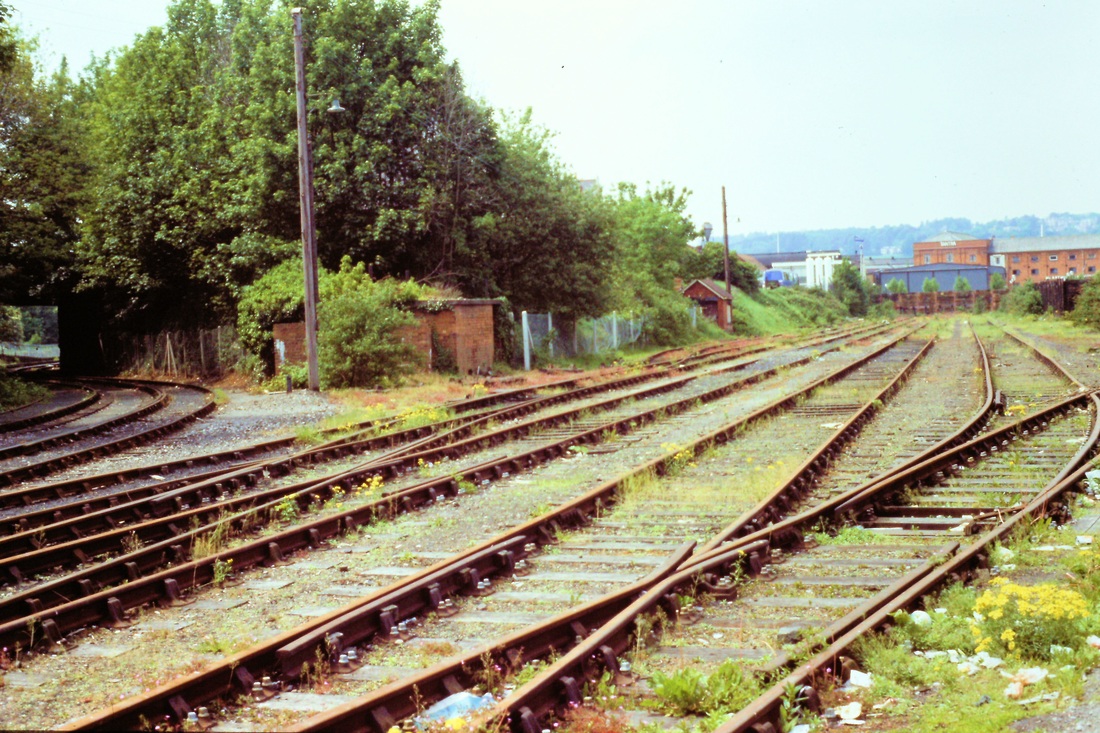
This picture taken on Wapping Wharf shows the sidings and also, left, the lines leading out under Cumberland Road Bridge towards eventually Ashton Gate Junction. There were at one time eleven straight sidings here, each averaging about two hundred yards in length. 25th May 1987 Copyright Roger Winnen
Canons Marsh
This branch, stemming from the branch between Ashton Gate and Wapping Wharf, was carried across the Floating Harbour by means of a swing bridge adjacent to Cumberland Locks.
This branch, stemming from the branch between Ashton Gate and Wapping Wharf, was carried across the Floating Harbour by means of a swing bridge adjacent to Cumberland Locks.
These views are from the 105 foot high viewing tower, built in 1897, for 400th anniversary of John Cabot's voyage to Newfoundland.
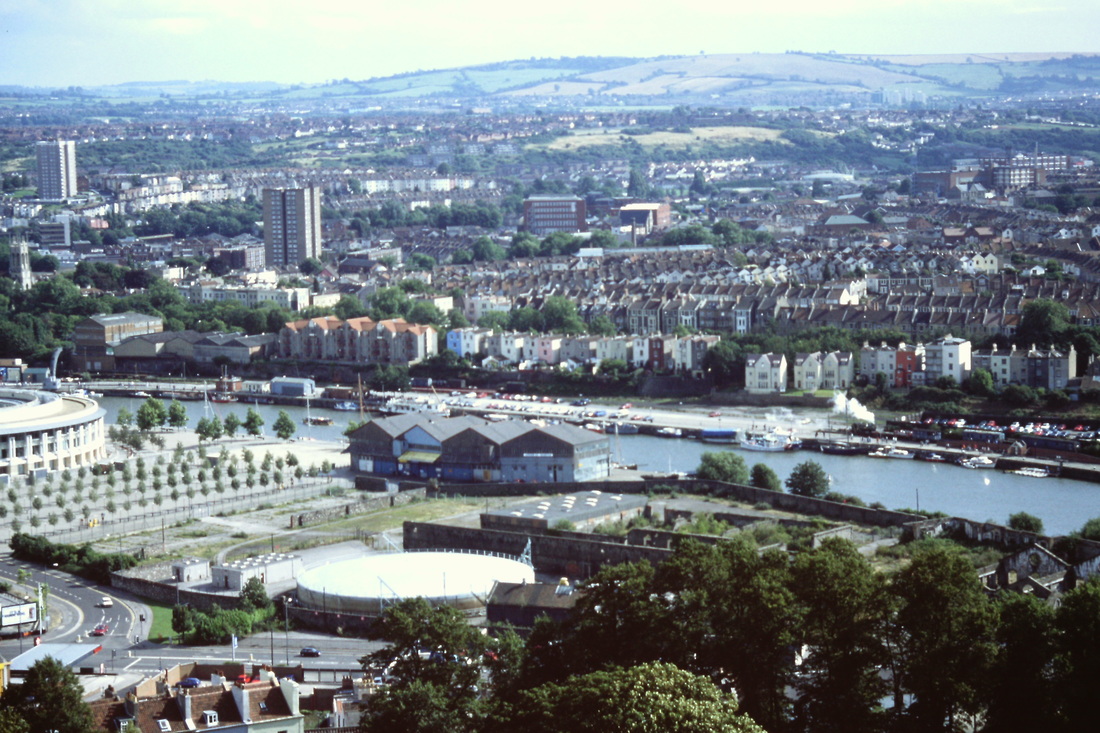
A view from Cabot Tower overlooking Bristol Docks - close by is Canons Marsh, the remains of the Gas Works are lower right. Across the stretch of water - the Floating Harbour - lies Wapping Wharf. Note the steam loco, probably Henbury, on the far shore, nearing the SS Great Britain Terminus. This view was taken on the 25th August 1996 Copyright Roger Winnen
Two views taken from Canon's Marsh looking towards the Industrial Museum.
A few shots taken on exploratory walks around the area.
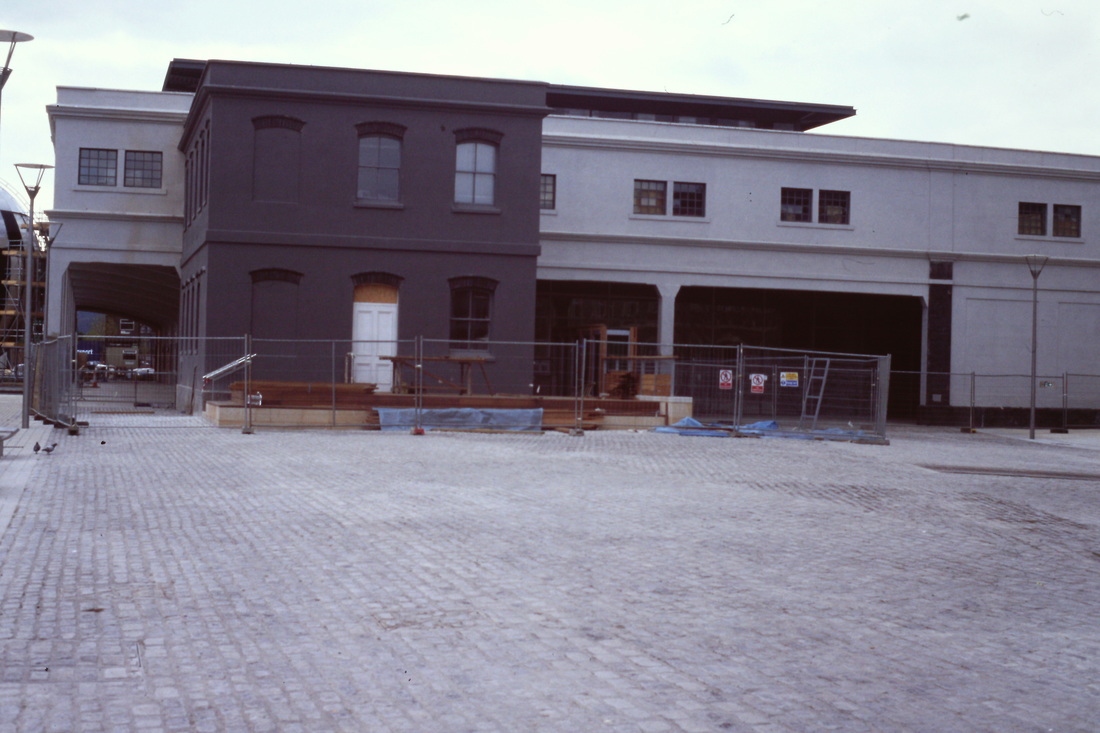
Restoration of Canon's Marsh Goods shed. The concrete building with the silver sphere attached to it is the re-modelled Great Western Railway goods shed, one of the earliest surviving reinforced concrete buildings in the UK. It houses the hands-on science centre Explore @t Bristol. 1st May 2000 Copyright Roger Winnen
The loco sheds at Bristol
Bristol Bath Road
St Phillip's Marsh
Barrow Road
Bristol Barton Hill
Clifton Rocks Railway
Talking of trams
Colin Burges takes to his bike to visit the Harbour Railway and continues to visit Severn Beach areas
You may remember I caught one the two weekly "parliamentary" trains from Pilning back on 29th July 2017. Well, the day started with a wander around the docks, where there have been some changes in the last year. I was sad to see the end of the harbour railway lifted to make way for Bristol City's MetroWest busway.
This area is known as Butterfly Junction - for up to date information go to the Bristol Harbour Railway - click here
We now move into the area covered by out 'Three routes to Severn Beach' section.
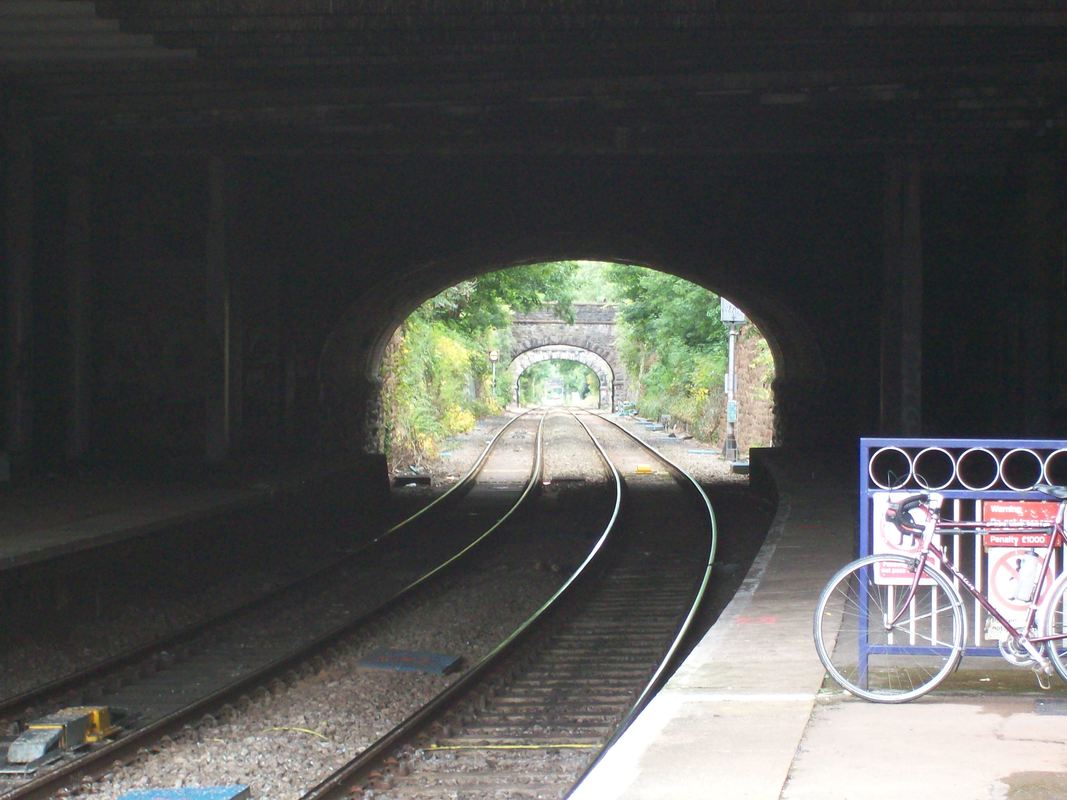
Pointing my bike in the direction of Pilning with the intention of catching the afternoon train, I realized that time had flown and so decided to take a short cut. Without having a timetable on me, I called in at Clifton Down to see what there was for Severn Beach. Considering that trains are two-hourly beyond Avonmouth, I was lucky that one was due in seven minutes. 29th July 2017. Copyright Colin Burges
Many thanks Colin for your report.
